How to Speed up Safari on Your Mac
In this article you will find the following:
Safari is the fastest browser on the Mac, but it isn't immune from slowdowns and performance issues. If web pages take longer to load or site navigation doesn't feel responsive, read on to learn how to speed up Safari on Mac.
- How to speed up Safari on Mac
Is Safari running slow on your MacBook, iMac, or Mac mini? Connectivity issues, unoptimized extensions, cache corruption, and a host of other reasons often cause that. Try the suggestions in our guide to get Safari running smoothly on Mac again.
Before you start If you want to speed up Safari on Mac quickly, download MacKeeper . It's an Apple-notarized maintenance utility that helps prevent browser slowdowns and other Mac-related issues. MacKeeper lets you free up the RAM, delete unwanted Safari extensions, get rid of junk files, and more with considerably less hassle than manual maintenance. You get one fix for free, so don't hesitate to check if it works for you.

Check if your internet's slow
If webpages in Safari take too long to load or fail, it's a good idea to begin by figuring out if it's just a matter of your internet being slow. The best way to do that is to use an online speed checker like Fast.com or SpeedTest.net .
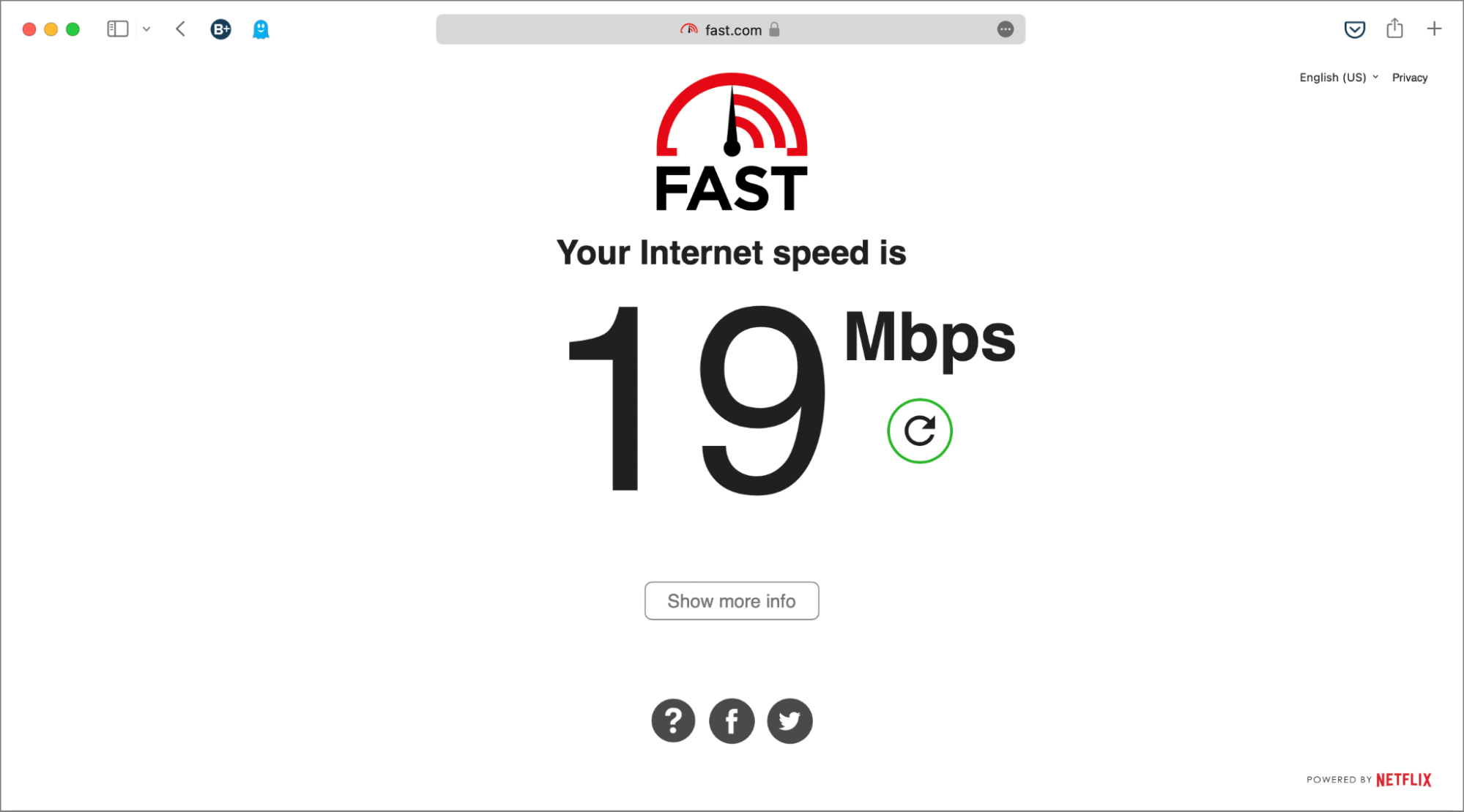
Restart your router if you find that your internet isn't uploading or downloading at a decent rate. If that doesn't speed it up, learn what else you can do to fix a slow internet connection on Mac .
Also, don't discount server-side issues. If the problem is limited to a specific site, use a website monitoring tool such as Downdetector to determine if you're dealing with a server outage.
- Close unnecessary tabs in Safari
Although Safari is adept at handling dozens of tabs, having too many open simultaneously will eventually take its toll on your Mac's memory. That creates delays while loading new pages, and the performance hit could also result in erratic browser behavior.
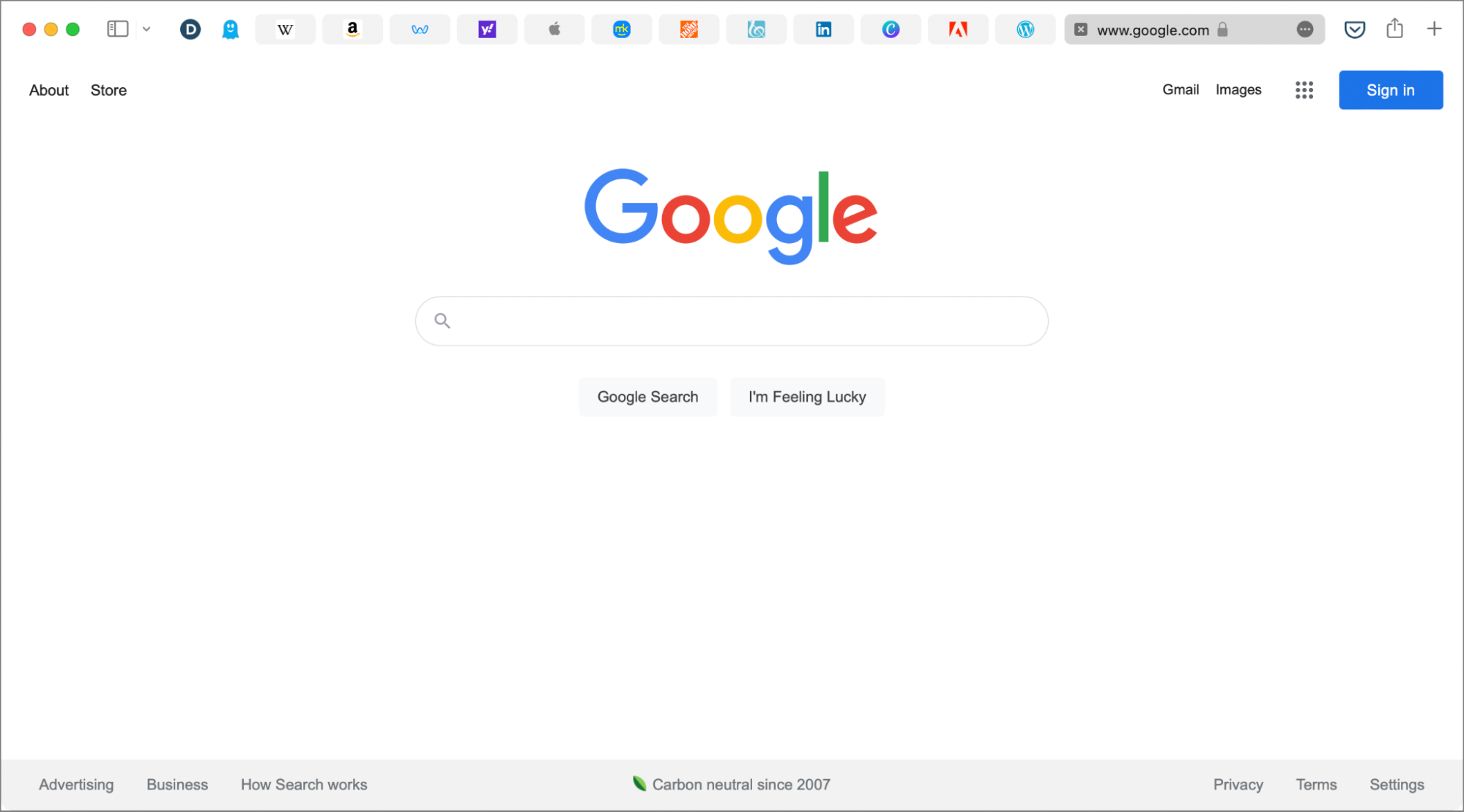
The quickest way to speed up Safari on Mac is to shut down unnecessary tabs as soon as you notice any slowdowns. Getting used to moving between and closing tabs using the Ctrl + Tab and Command + W keyboard shortcuts can make the process even faster.
- Shut down apps and resource-intensive processes
Tabs aside, Safari will run slowly on the Mac if you have too many applications open. Check your Mac's Dock and quit anything you aren't actively using. Try force-quitting troublesome programs if you can't close them normally.
On the other hand, various apps and related processes can spin out of control and consume too much processing power and memory. Use the Activity Monitor to locate and stop them.
- Open the Launchpad and select Other > Activity Monitor
- Sort your Mac's activity using the % CPU column and shut down any third-party processes that use a significant amount of CPU
- Switch to the Memory tab and stop third-party items that use lots of RAM.
If you always end up pushing the hardware on your Mac to its limits, consider using MacKeeper's Memory Cleaner feature to keep things under control.
- Disable unnecessary Safari extensions
Running Safari with multiple extensions increases the load on the CPU and RAM. That translates to slower browser performance, so review your list of browser add-ons and disable any items you don't regularly use.
- Open Safari and select Safari > Preferences on the menu bar
- Switch to the Extensions tab
- Clear the boxes next to any extensions you want to disable.
Our team highly recommends you update Safari extensions periodically via the Mac's App Store to ensure they run in top shape. If you notice anything suspicious, learn how to remove malicious browser extensions and toolbars from your Mac.
- Switch DNS servers for Wi-Fi and Ethernet
DNS (short for Domain Name System) is a cataloging system that matches domain names with IP addresses. Not all DNS providers are fast, so changing your Wi-Fi or Ethernet's DNS settings to a popular service like Google DNS can speed up Safari on Mac. For best results, clear the DNS cache on your Mac before you begin .
- Open the Apple menu and select System Preferences
- Select the Network category
- Select Wi-Fi/Ethernet > Advanced
- Switch to the DNS tab
- Select OK > Apply to save your changes.
- Clear the Safari cache and cookies
Like most web browsers, Safari caches various forms of site data — images, HTML files, and JavaScript code — to improve load times in subsequent visits. However, a bloated or corrupt cache can adversely impact performance and result in Safari running slow on the Mac. You can clear the Safari cache after activating its hidden Develop menu .
- Switch to the Advanced tab and check the box next to Show Develop menu in menu bar
- Select Develop on the menu bar and pick the Empty Caches option.
Corrupt, outdated, or privacy-invasive browser cookies can also slow down Safari. If deleting the Safari cache didn't make much difference, try deleting its cookies next.
- Select Safari > Clear History on the menu bar
- Set Clear to All history
- Select Clear .
Update the Safari browser
Safari receives occasional bug fixes and performance enhancements from Apple, and these arrive alongside regular macOS updates .
To update your Mac:
- Select Software Update
- Wait until the Software Update tool checks for newer macOS updates and select Update Now to install any pending updates.
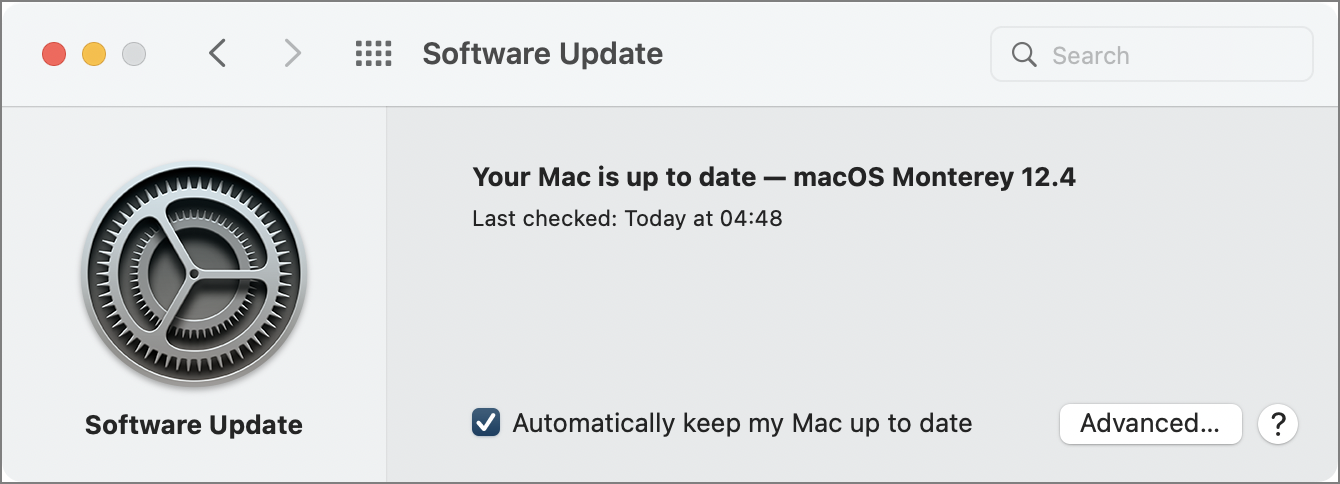
Even if a new macOS update doesn't include anything Safari-related, installing it will still improve general performance across native apps. Make it a point to install macOS updates as soon as possible.
- Reset Safari to factory defaults
Corrupt browser preferences and other underlying issues can also play a factor, so sometimes, the only way to fix a slow instance of Safari on Mac is to reset it to factory defaults.
A Safari reset deactivates all extensions and reverts each browser setting to its defaults, allowing you to start over with a clean slate. You will not lose your bookmarks or passwords during the process.
- Save your work and exit Safari
- Open Finder, select Go > Go to Folder on the menu bar, and visit the ~/Library/Preferences/ directory
- Search for com.apple.Safari.plist file and delete it
- Reopen the Go to Folder box and visit ~/Library/Safari/ . Then, delete each item within the folder except the Bookmarks.plist file
- Visit ~/Library/Containers/ , search for Safari, and delete all files and folders that appear among the search results
- Open Safari and visit its Preferences pane to reactivate any essential extensions. Also, move between tabs and modify your browser settings the way you want.
- Boot your Mac into Safe Mode
If none of the fixes above help speed up Safari, try booting your Mac into and out of Safe Mode. That helps flush out various forms of temporary data that can interfere with Apple's browser.
On an Intel Mac, you can get to Safe Mode while holding down the Shift key during the reboot phase. However, if you use an Apple Silicon Mac, you should:
- Shut down your Mac
- Turn it on but keep holding the Power button until you get to the Startup Options screen
- Hold the Shift key and select Macintosh HD > Safe Mode .
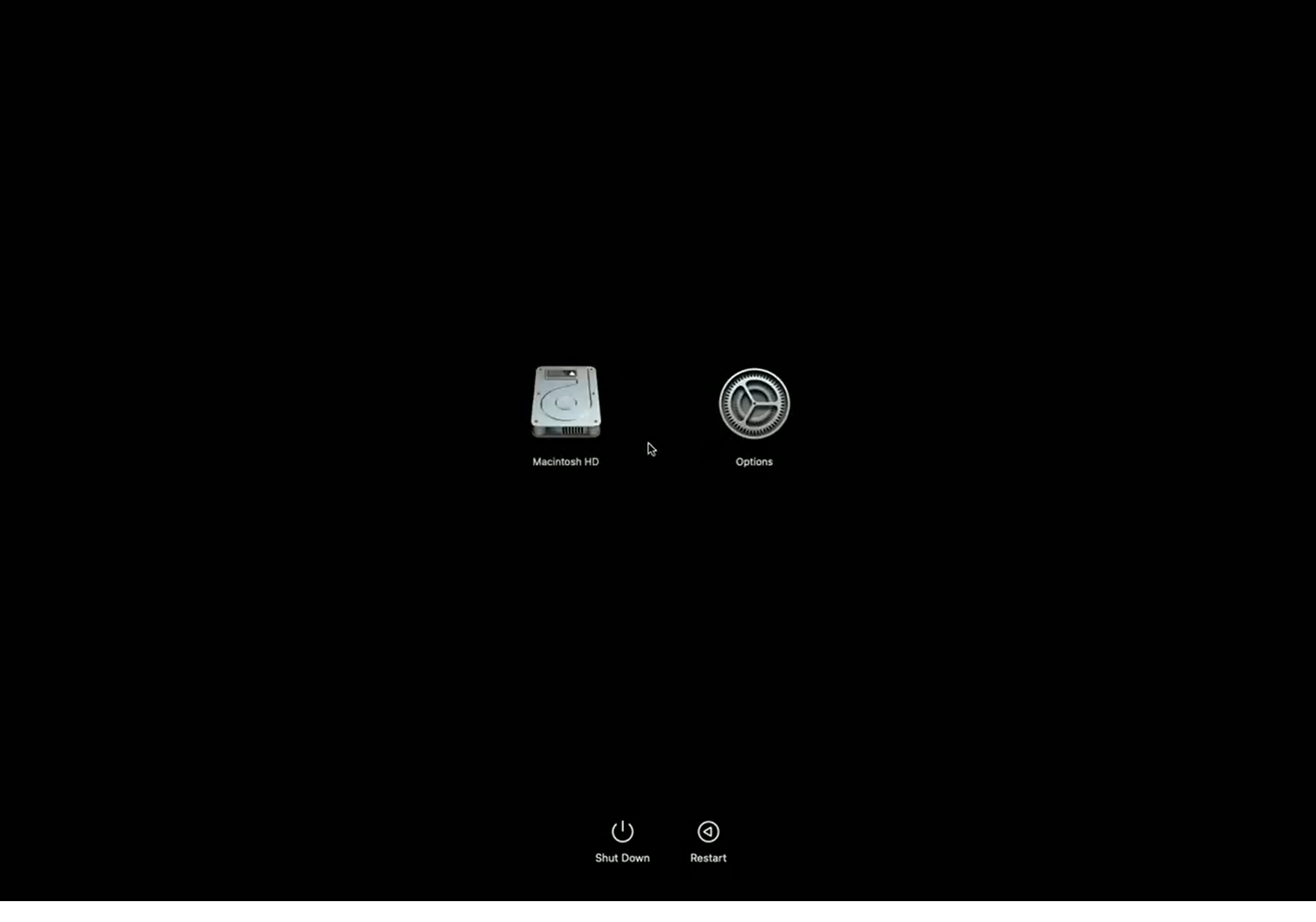
In Safe Mode, repeat the fixes above if you could not complete them earlier. Then, restart your Mac normally. To delete additional forms of temporary data that can slow down Safari, learn how to delete your Mac's application and system caches .
- Full steam ahead
Keeping Safari in top shape is crucial for a great web browsing experience. Avoiding too many open tabs, shutting down unwanted apps and processes, and cutting down on the number of active extensions can go a long way toward making that happen. Occasionally clearing the Safari cache and keeping your Mac up-to-date will significantly minimize browser slowdowns and other issues. If manual Mac maintenance feels like a drag, don't forget to download MacKeeper .
- How to Clear Cookies on Mac in Safari, Chrome & Firefox
- How to Easily Remove Bookmarks on Mac
- How to Clear Purgeable Space on Mac
You’ll love exploring your Mac with us.
Oops, something went wrong.
Try again or reload a page.
- Check if your internet's slow

- Delete unnecessary system files and caches
- Free up GBs of storage space
- Easily find and delete duplicate files
Safari running slow on Mac? Speed it up with MacKeeper.

MacKeeper - your all-in-one solution for more space and maximum security.

We respect your privacy and use cookies for the best site experience.
Privacy Preferences Center
We use cookies along with other tools to give you the best possible experience while using the MacKeeper website. Cookies are small text files that help the website load faster. The cookies we use don’t contain any type of personal data meaning they never store information such as your location, email address, or IP address.
Help us improve how you interact with our website by accepting the use of cookies. You can change your privacy settings whenever you like.
Manage consent
All cookies
These cookies are strictly necessary for enabling basic website functionality (including page navigation, form submission, language detection, post commenting), downloading and purchasing software. The website might malfunction without these cookies.
Download MacKeeper when you're back at your Mac
Please enter your email so we can send you a download link
Check your email on your Mac
Install MacKeeper on your Mac computer to rediscover its true power.

Run Application

Click Continue

Click Install

Your macOS version is lower than OS 10.11. We’d like to offer you MacKeeper 4 to solve the cleaning, privacy, and security issues of your macOS.
- Editorial Process
- Why Trust Us?
- Affiliate Linking Policy
- Privacy Policy
- Terms of Service
Weekly Must-Reads View All
7 things to do if you spilled water on your macbook.
Quick steps to save your MacBook from water damage
How to Boot Your Mac Into Verbose Mode: 4 Best Ways
Boot your Mac into Verbose Mode with this step-by-step guide
How to Fix Your Mac Shutting Down Randomly: 16 Fixes to Try
Troubleshoot random shutdowns on Mac with effective solutions
How Much Space Does macOS Take On Your Mac?
Understand macOS size and analyze your Mac's storage usage
Popular Topics
- What to Do With Your Old MacBook? 13 Useful Ways to Reuse an Old Mac
- What Is the MacBook Flexgate Issue and How to Fix It
- What Is the MacBook Flexgate Issue
- Uninstall Java
- Safely Transfer Files from Mac to Mac
- Safari Bookmarks Disappeared on Mac: 10 Best Ways to Restore Them
- Repairing disk permissions
- Old MacBook
Trending Now View All

- Troubleshooting Mac Issues
Why Is Safari Running Slow on Mac? 15 Ways to Fix
Hashir Ibrahim
Reviewed by
Last updated: September 25, 2023
Expert verified
Safari may run slowly on Mac due to opening too many tabs, using too many extensions, cache build-up, outdated Safari version, outdated macOS, slow internet connection, hardware limitations, and malware or adware.
Fixing these issues through updating software, managing tabs, clearing cache, and removing unnecessary extensions can improve Safari’s speed and performance on a Mac.
- Managing open tabs and removing unnecessary extensions can free up valuable resources and enhance Safari’s performance.
- Regularly updating Safari and macOS ensures optimal compatibility and access to performance improvements.
- Clearing accumulated cache, cookies, and browsing history can give Safari a fresh start and improve loading times.
- Advanced solutions like switching DNS providers and booting in Safe Mode can address more complex issues affecting Safari’s speed.
Ever found yourself drumming your fingers in frustration as Safari lags on your Mac? A slow browser can turn even the most basic online tasks into a tedious affair.
If Safari is running slow on your Mac, I’ve got your back. Dive into this guide to uncover the mysteries behind Safari running slow on Mac and explore practical solutions to get you back in the fast lane. Ready to turbocharge your browsing experience? Let’s get started!
Before We Begin
If you want to make Safari run faster on your Mac, download MacKeeper. This tool clears up RAM, removes unnecessary Safari extensions, deletes unneeded files, and more. All these features help speed up a slow-running Safari.
Why Is Safari Running Slow on Mac?
Safari running slow on Mac can be due to various reasons. Below, I’ve shared the most common reasons for Safari’s sluggishness on your Mac:
- 🖥️ Too Many Tabs or Windows Open : Having numerous tabs or windows open can consume a lot of memory and slow down Safari.
- 🧩 Heavy Use of Extensions : Some Safari extensions can use a lot of resources, causing the browser to slow down.
- 🍪 Cache and Browsing Data : Accumulated cache, cookies, and browsing history can impact Safari’s performance.
- ⌛ Outdated Safari Version : Running an outdated version of Safari can lead to performance issues.
- 🍎 Outdated macOS : An outdated operating system can cause compatibility issues and slow down Safari.
- 🌐 Internet Connection Issues : An unstable or slow internet connection on Mac can affect browsing speed.
- 💻 Hardware Limitations : Older Mac models with limited RAM and processing power may struggle to run Safari efficiently.
- 🦠 Malware or Adware : Malicious software can significantly degrade the performance of Safari.
Addressing these issues through updating software, managing tabs, clearing cache, and removing unnecessary extensions can improve Safari’s speed and performance on a Mac.
How to Fix Safari Running Slow on Mac
A sluggish Safari on your Mac can be quite a bottleneck, especially during important online tasks. The good news is, there’s no need to let a slow browser rain on your parade. In this section, I’ll walk you through various solutions to bring Safari back to its optimal speed.
Let’s dive into the nitty-gritty of boosting your Safari browser’s performance on your Mac.
1. Check Your Internet Speed
Before diving into more complex solutions, ensuring that your internet connection isn’t the culprit behind Safari’s sluggishness is essential. A slow or unstable internet connection can significantly impact your browsing experience.
To test your internet connection, follow these steps:
- Open Safari on your Mac.
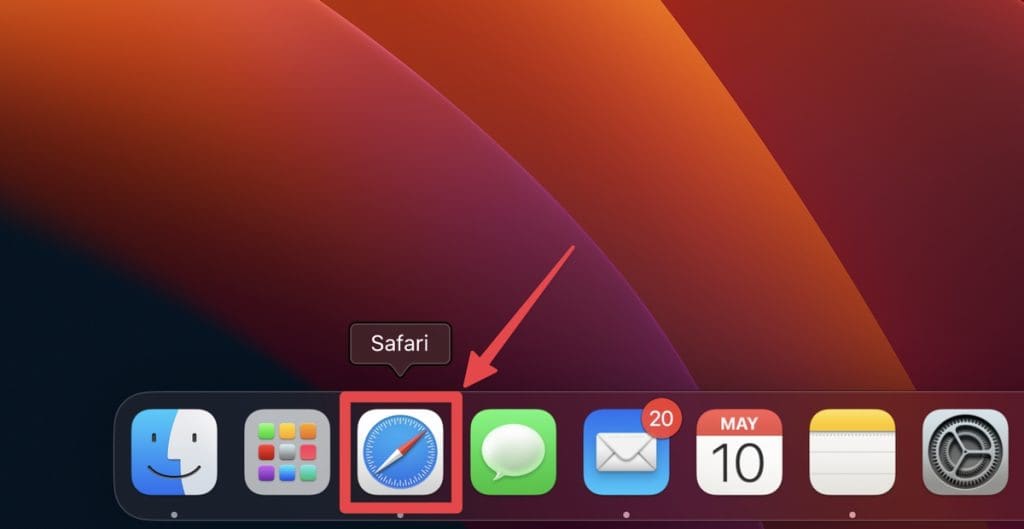
- Navigate to an online speed test tool like Speedtest.net .
- Click the Go button to start the test.
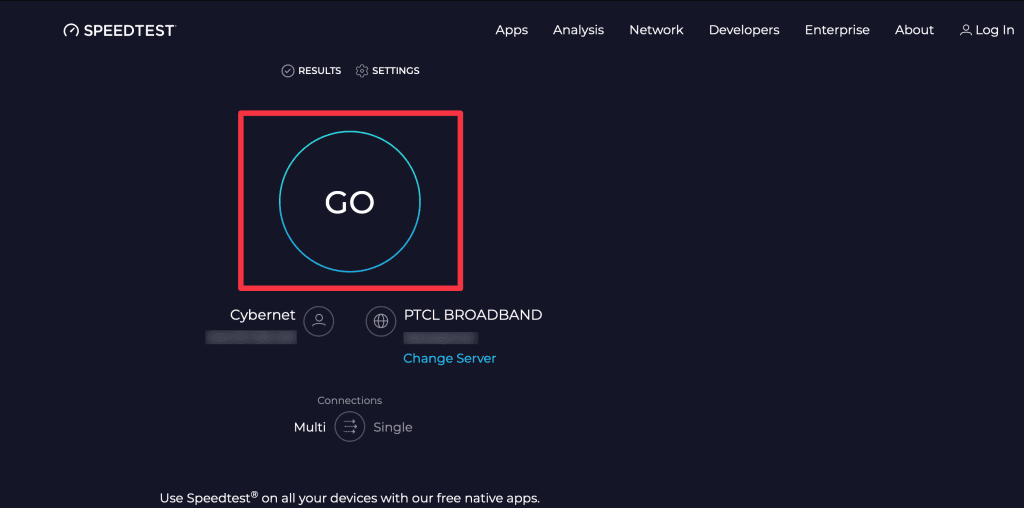
- This will give you an idea of your current internet speed.
- Pay attention to the download and upload speeds. If they are significantly lower than what your Internet plan promises, there might be an issue with your connection.
- If your internet speed is slow, reset your router. Unplug it from the power source, wait 30 seconds, and plug it back in. Wait for it to restart and retest your internet speed.
- If resetting doesn’t help, try moving closer to the router or removing any obstacles interfering with the signal.
- If the above steps don’t improve your internet speed, it might be time to contact your Internet Service Provider (ISP) for further assistance.
2. Force Close and Relaunch Safari
At times, Safari or any of its tabs might encounter errors or issues that consume excessive system resources, leading to slowdowns. Force closing and re-launching Safari can terminate these problematic processes and give the browser a fresh start.
Here’s how to force quit Safari and relaunch it on your Mac:
- Click the Apple logo in the top-left corner of your screen and select Force Quit from the drop-down menu.
- In the new window, select Safari and click the Force Quit button.
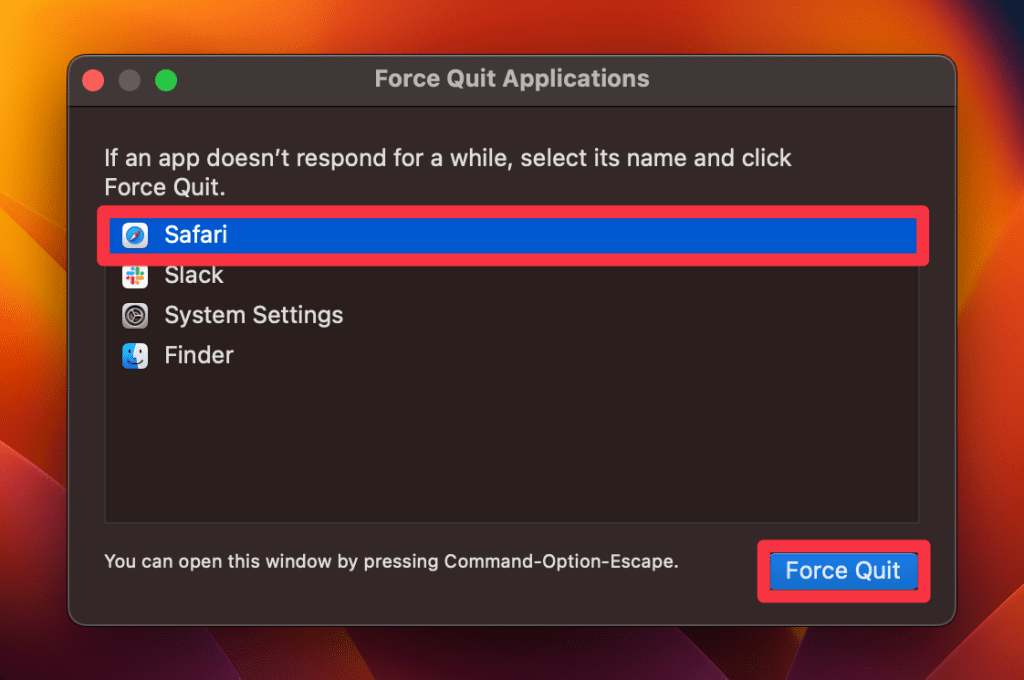
- Click Force Quit on the pop-up.
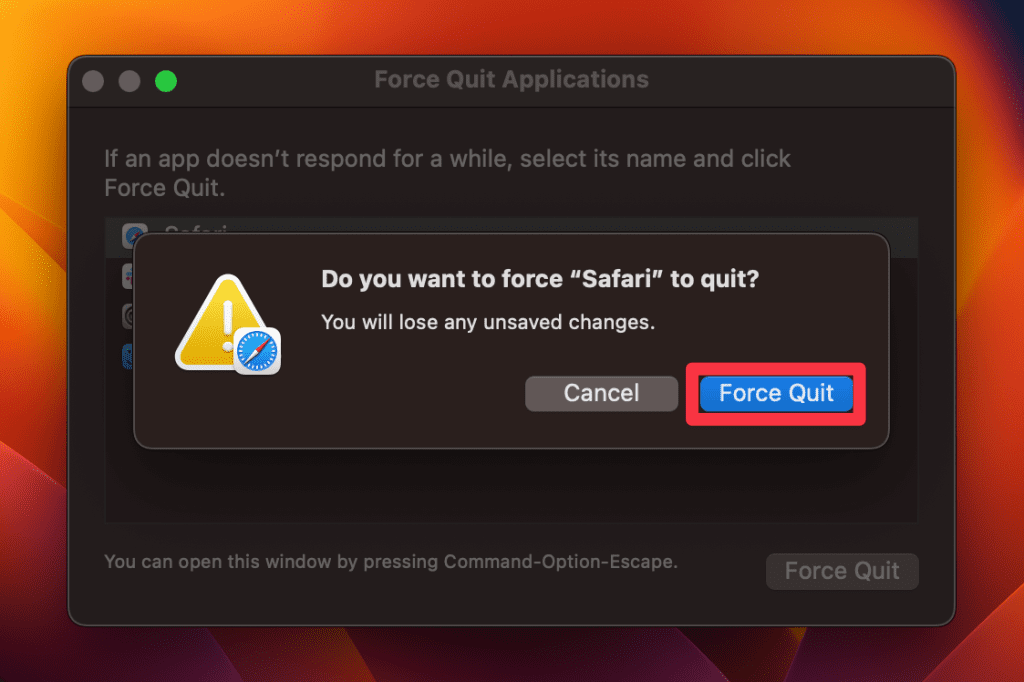
- After force-closing Safari, wait for a few moments to let the system properly terminate all processes related to the browser.
- Find the Safari icon in your Dock and click it to re-launch the browser.
- Check if the performance has improved.
3. Close Unwanted Tabs
Each open tab in Safari consumes your Mac’s memory and processing power. Having multiple tabs open, especially those with heavy content or active scripts, can significantly slow down the browser and even the entire system.
Closing unnecessary tabs can free up valuable resources and enhance Safari’s performance. Here’s how to go about it:
- Take a look at all the tabs you have open in Safari. Identify which ones are not currently needed or are consuming significant resources.
- Click the small x icon on the left of each tab you wish to close.

- Alternatively, you can close an active tab using a Mac keyboard shortcut : Command ⌘ + W .

- You can also right-click a tab and select Close Tab from the context menu.
- After closing unwanted tabs, check if Safari’s performance has improved.
4. Clear Safari History
Over time, Safari accumulates a history of the websites you’ve visited, cached files, and cookies. While these elements are designed to speed up page loading times, they can also clutter your browser and consume system resources, leading to slowdowns.
Clearing your browsing history can give Safari a fresh start and potentially improve its performance. Here’s how to delete Safari’s history on Mac :
- If not already open, launch the Safari browser on your Mac.
- Click the Safari menu item at the top left of your screen. From the drop-down menu, select Settings .

- Select the Advanced tab and check the box next to the Show Develop menu in menu bar if it is unchecked.
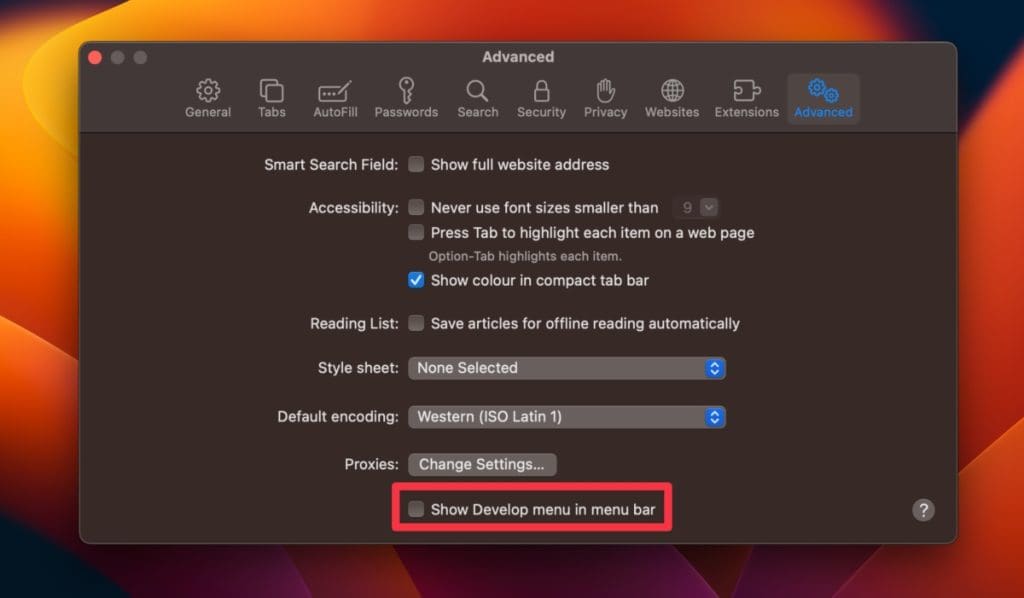
- Return to the menu bar, click Develop , and select Empty Caches from this drop-down list.
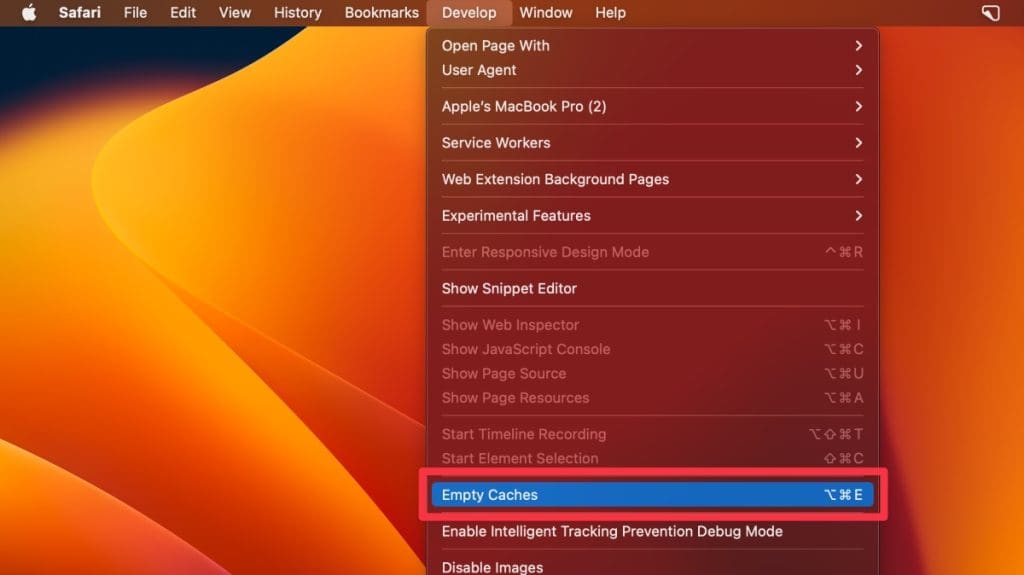
- After clearing the history, navigate through various websites to check if there is an improvement in Safari’s speed and responsiveness.
5. Clear Safari Cache and Cookies
The cache stores temporary files from websites to help pages load faster in future visits, while cookies save small pieces of information like login details. Over time, these stored files can accumulate and cause Safari to slow down.
Clearing the browser cache on your Mac can free up storage and improve browser speed. Here’s how to clear Safari cache on your Mac :
- Launch Safari and click Safari in the top menu bar, then select Settings from the drop-down menu.
- In the Settings window, select the Privacy tab and click Manage Website Data .
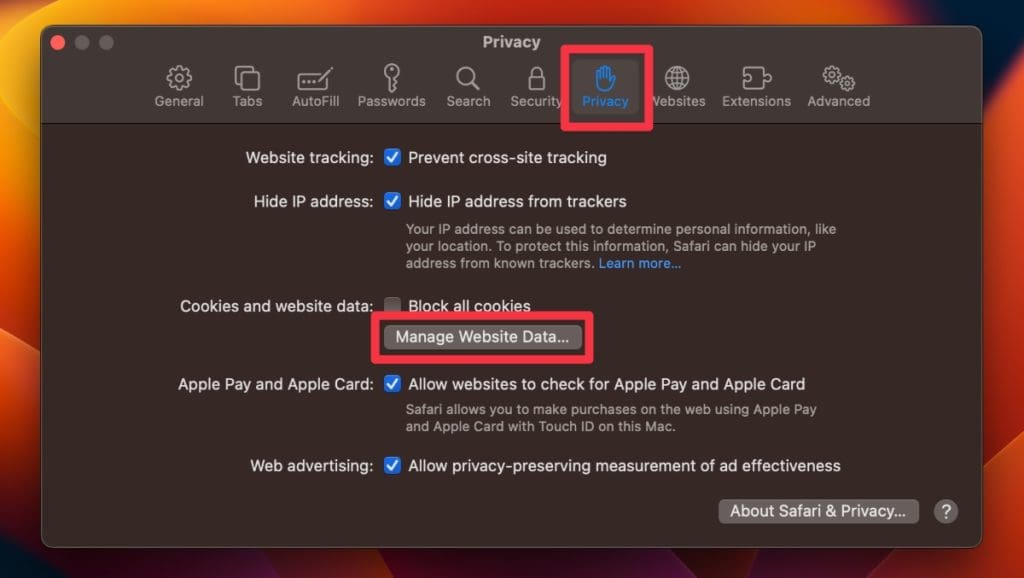
- A new window will open, showing a list of websites storing data.
- Click Remove All to clear all cookies and cached data. Confirm the action when prompted.
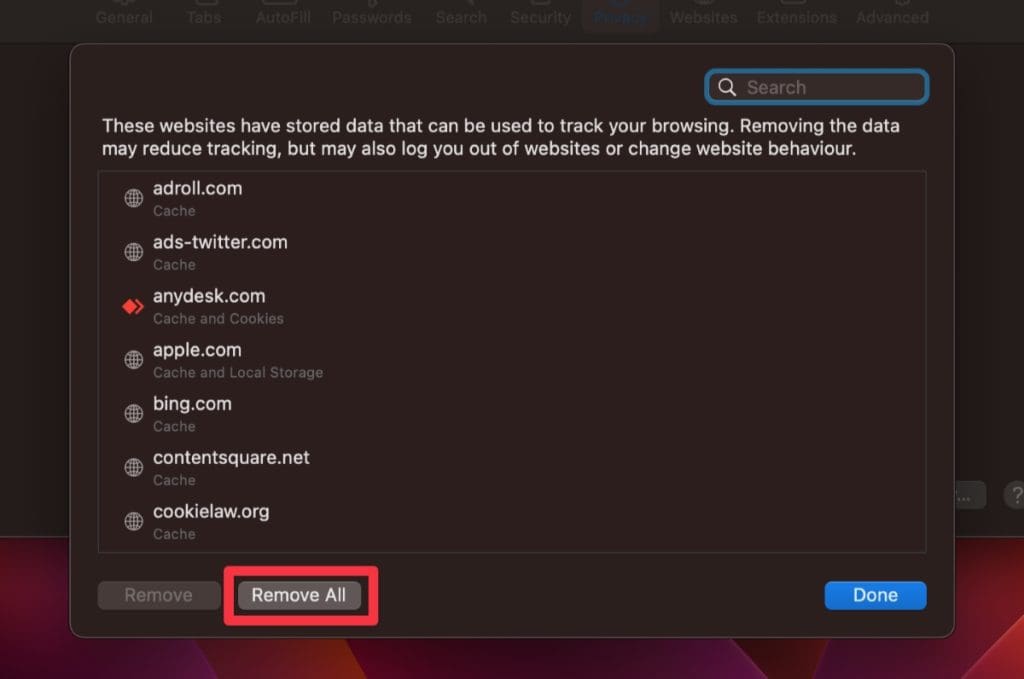
- After completing these steps, browse through different websites and assess whether Safari’s performance has improved.
6. Delete Unwanted Extensions
Extensions are additional features or functionalities added to Safari to enhance user experience. However, some extensions can be resource-intensive, causing the browser to slow down. Removing unnecessary or problematic extensions can help in optimizing Safari’s speed.
Here’s how you can delete unwanted extensions on Mac :
- Open Safari on your Mac, click the Safari menu in the menu bar and select Settings .
- Click the Extensions tab to view all the installed extensions.
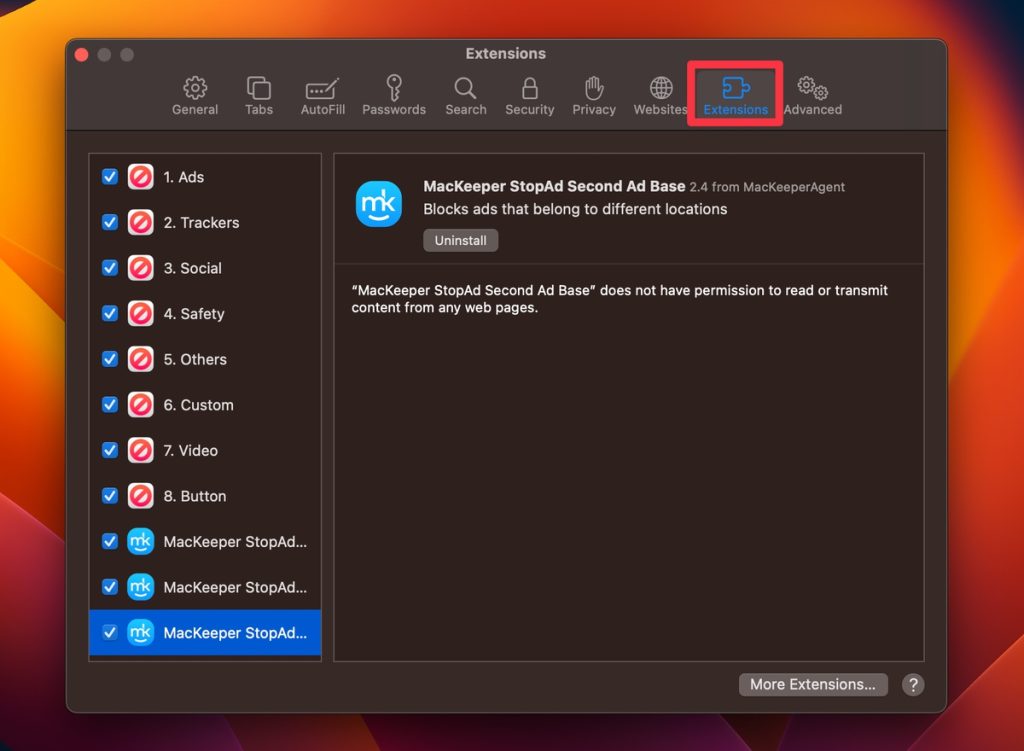
- Find the extension you want to remove and click it.
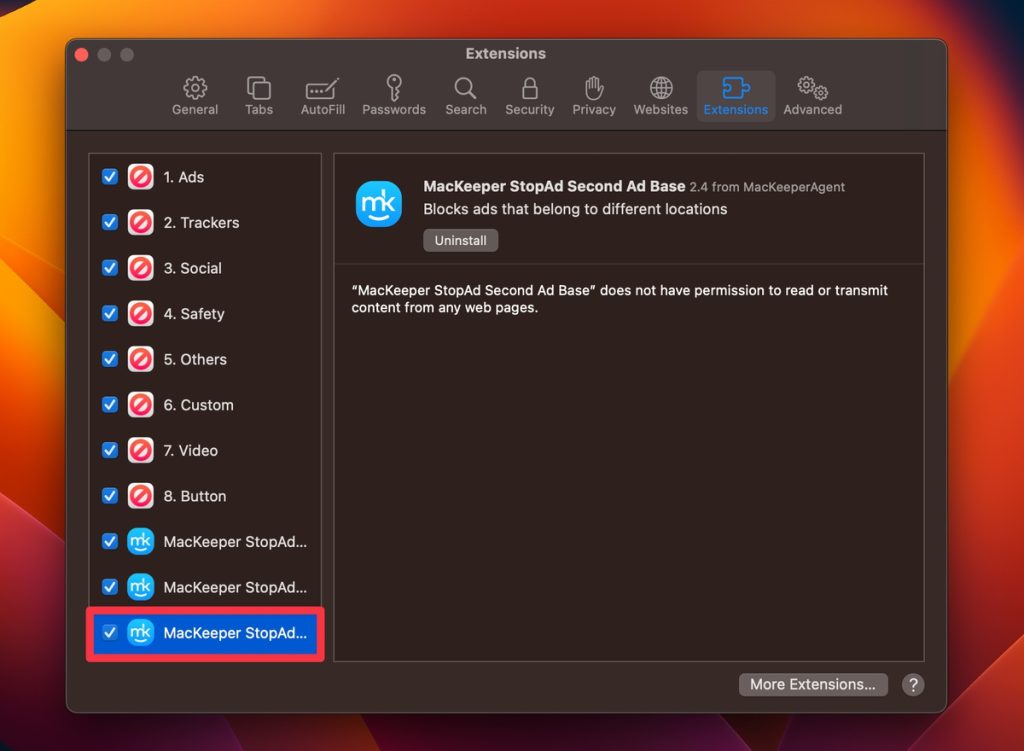
- Click the Uninstall button to confirm that you want to remove the extension.
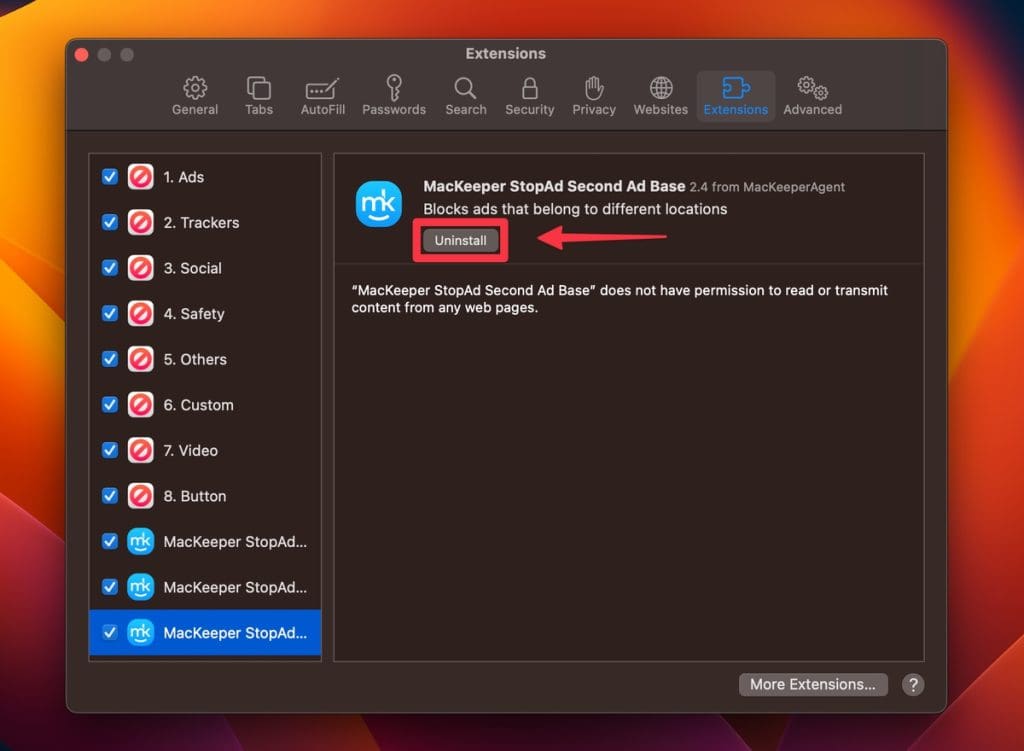
Alternatively, you can use MacKeeper to remove unwanted extensions from Safari. Here are the steps to follow:
- Download and install MacKeeper on your Mac.
- Open MacKeeper and click the Smart Uninstaller option in the left sidebar.

- Click the Start Scan button to scan your computer for installed browser extensions.
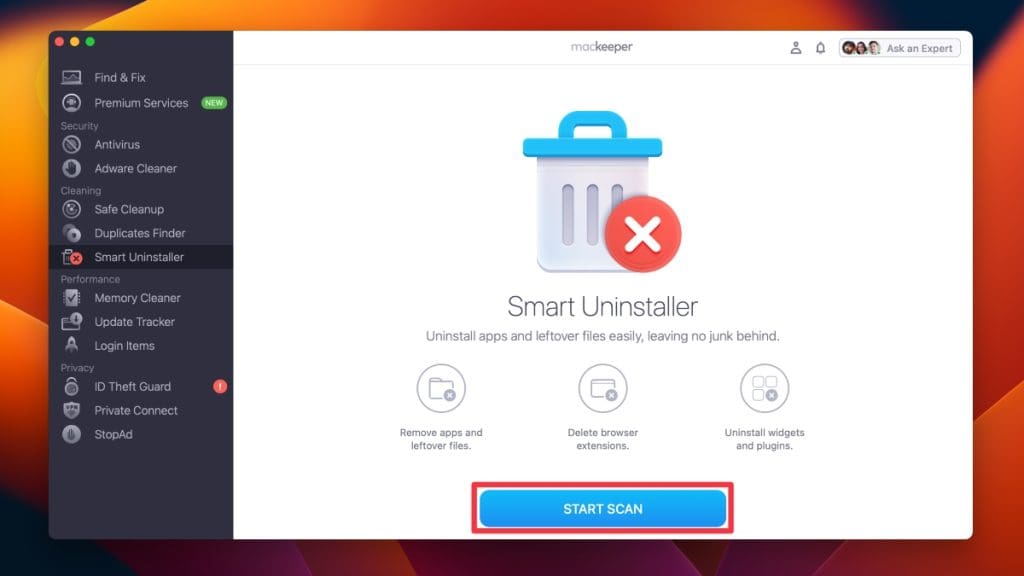
- Once the scan is complete, click Browser Extensions in the left sidebar and locate the extension you want to remove from the list.
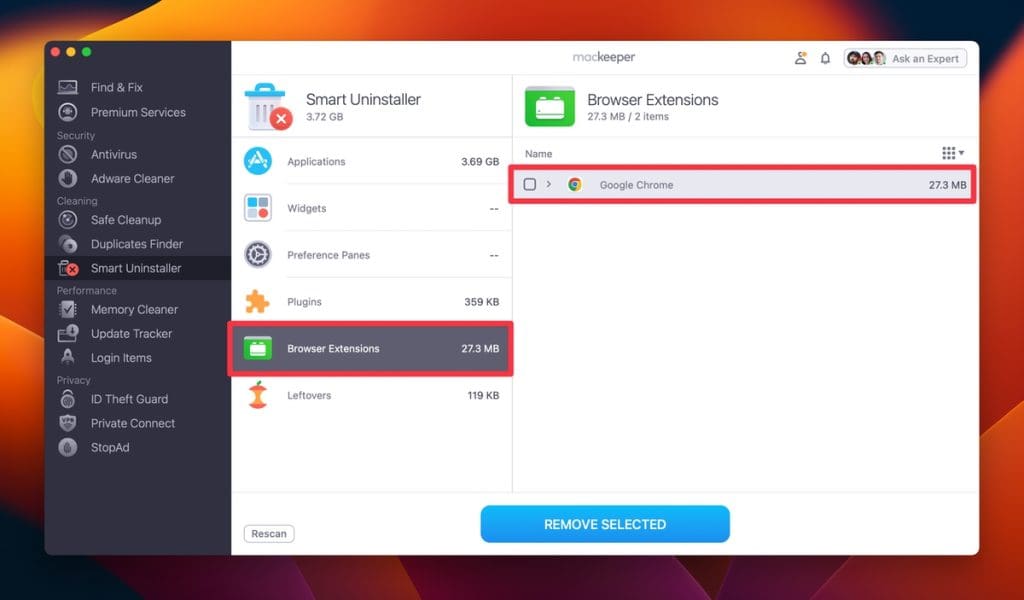
- Click the checkbox next to the extension you want to remove and tap Remove Selected .
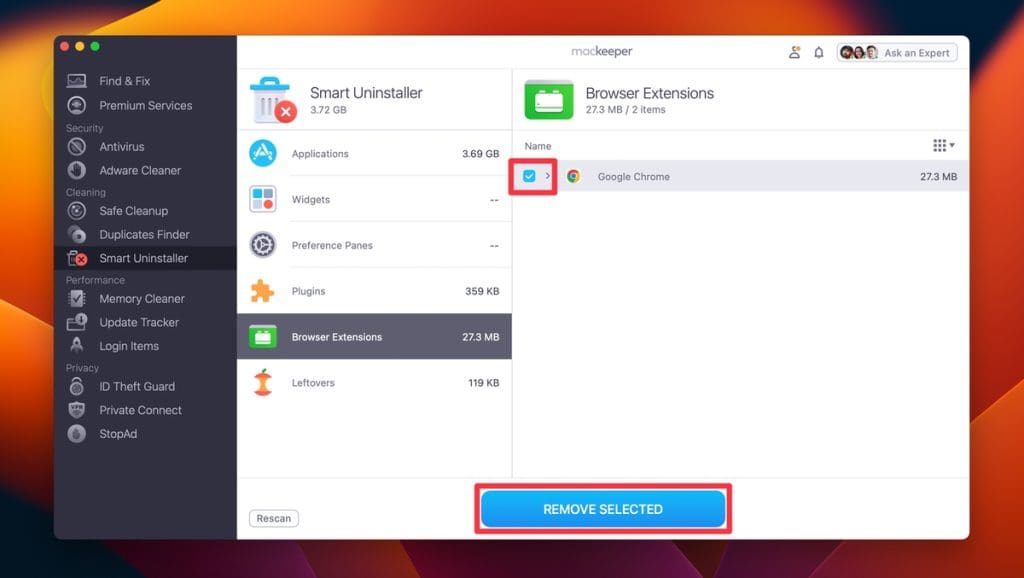
- Confirm the action by clicking the Remove button in the confirmation dialog box.
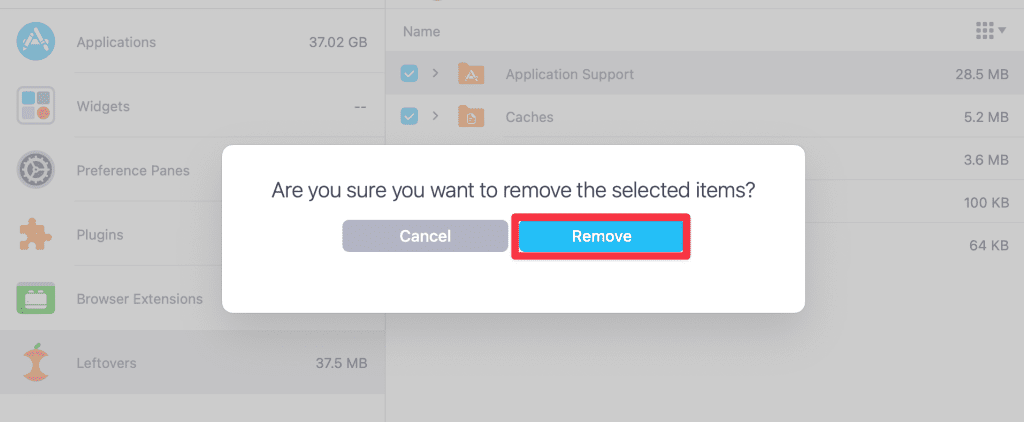
- Wait for the uninstallation process to complete.
- Restart your browser to ensure the extension has been completely removed.
7. Disable Search Engine Suggestions
Search engine suggestions are generated in real-time as you type into the search bar, which can sometimes slow down Safari, especially on slower internet connections or older Mac models. Disabling this feature can reduce the load on Safari and potentially improve its speed.
Here’s how you can disable search engine suggestions on Safari:
- Launch Safari, click Safari in the menu bar and select Settings from the drop-down menu.
- In the Settings window, click the Search tab.
- Uncheck the box next to Include search engine suggestions to disable the feature.
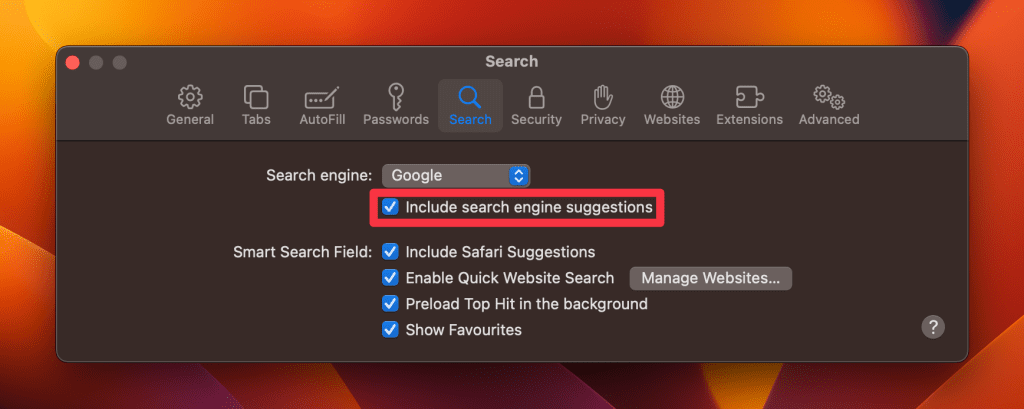
- Close the Settings window and test Safari by typing into the search bar to see if there is an improvement in responsiveness.
8. Disable Autofill
Autofill automatically completes forms using stored information, which, while convenient, can sometimes cause Safari to lag, especially if there’s a lot of data stored. Disabling this feature can help Safari run more smoothly.
Here’s how you can disable Autofill on Safari:
- In the Settings window, click the Autofill tab.
- You will see several options for different types of information that Safari can autofill. Uncheck the boxes next to the types of information you don’t want Safari to autofill.
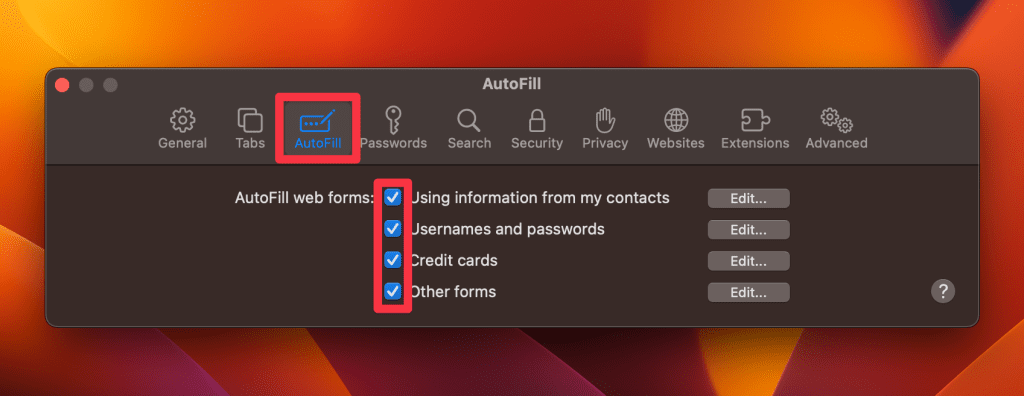
- After making the changes, close the window and restart Safari to apply the adjustments.
- With Autofill disabled, navigate to various websites with forms and assess whether there’s an improvement in Safari’s speed and responsiveness.
9. Update Safari
Running an outdated version of Safari can lead to performance issues, as updates often include optimizations and fixes for known bugs. Ensuring Safari is up-to-date can help resolve slowdowns and enhance browser stability.
Here’s how you can update Safari on Mac:
- Click the Apple logo in the top-left corner of your screen and select App Store from the drop-down menu.
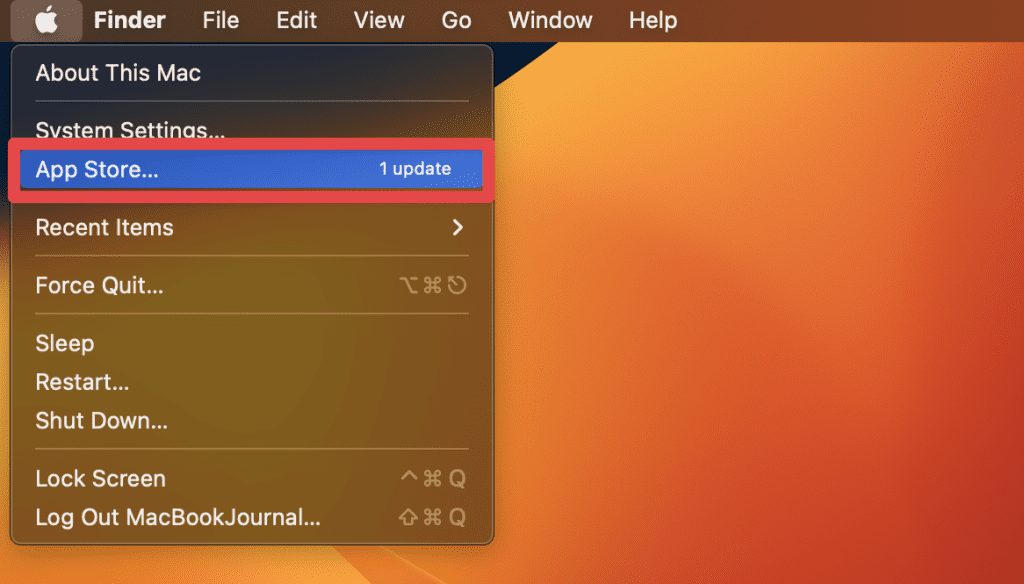
- In the App Store, click the Updates tab to view available app updates.
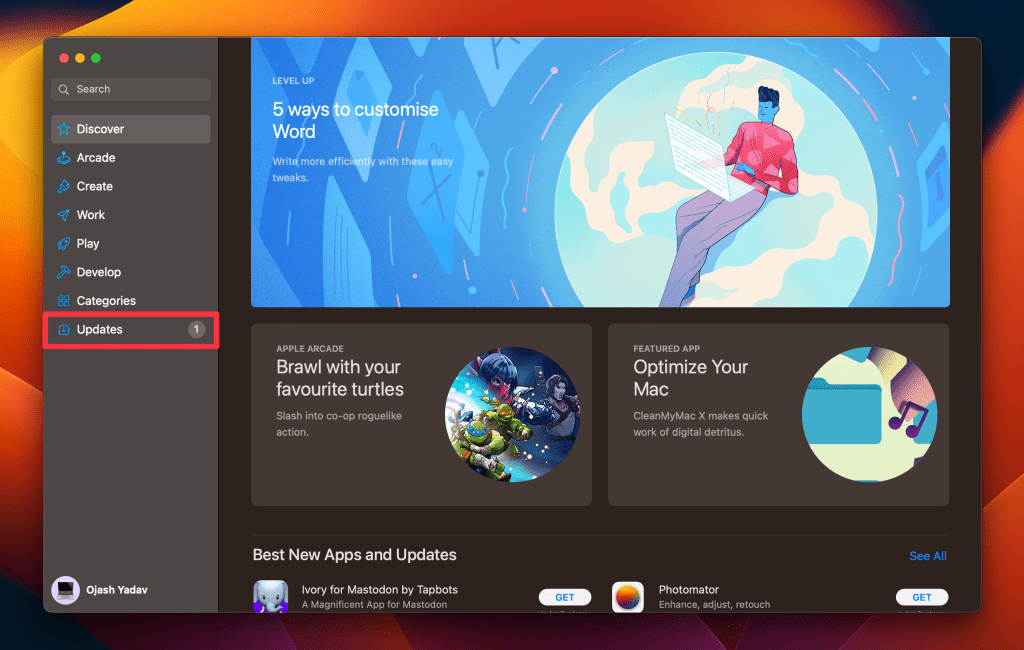
- Scroll through the list of updates and look for Safari. If an update is available, it will be listed here.
- Click the Update button next to Safari to download and install the latest version.

- Once the update is complete, close and restart Safari to apply the changes.
- After updating Safari, navigate different websites and assess whether the browser’s performance has improved.
10. Disable DNS Prefetching
DNS prefetching is a feature that pre-resolves domain names before you click a link, aiming to improve page load times. However, this feature can cause Safari to slow down or become unresponsive on some networks. Disabling it can help alleviate these issues.
Here’s how you can disable DNS prefetching:
- Navigate to Finder > Applications > Utilities > Terminal to open the Terminal application on your Mac.

- In the Terminal window, type the following command and press Enter :
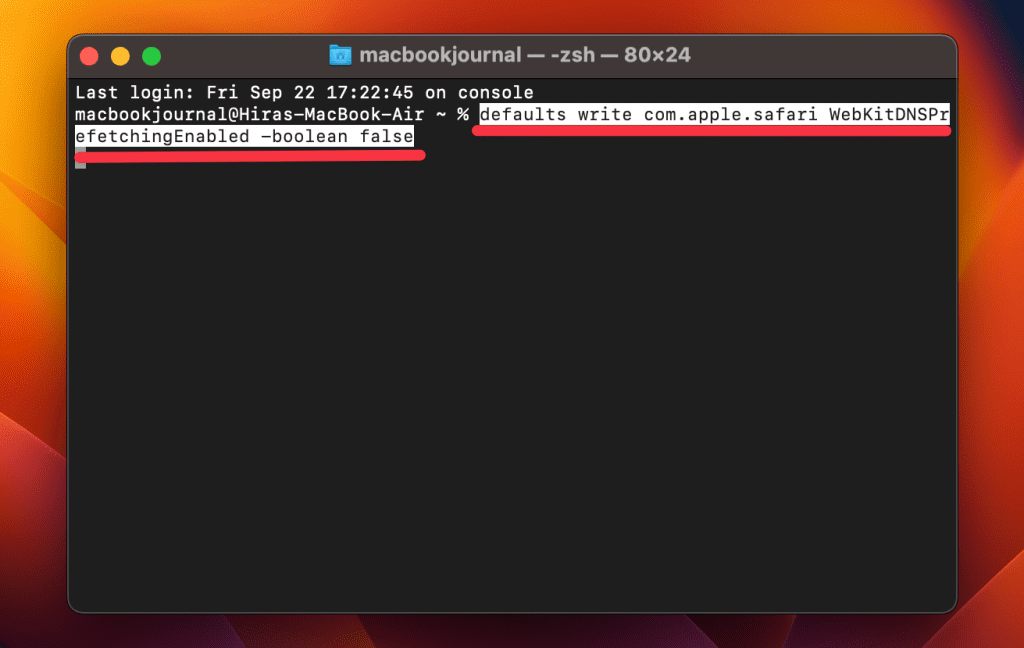
- Close open Safari windows and relaunch the browser to apply the changes.
- Navigate through various websites and evaluate whether disabling DNS prefetching has improved Safari’s speed and responsiveness.
11. Switch DNS Provider
The Domain Name System (DNS) translates website names to IP addresses. Sometimes, the default DNS servers provided by your ISP may be slow or overloaded, affecting your browsing speed. Switching to a faster, more reliable DNS provider can enhance your internet speed and Safari’s performance.
Here’s how you can switch your DNS provider:
- Click the Apple logo and select System Settings from the drop-down menu.
- In the System Settings window, click Network to access your network settings.
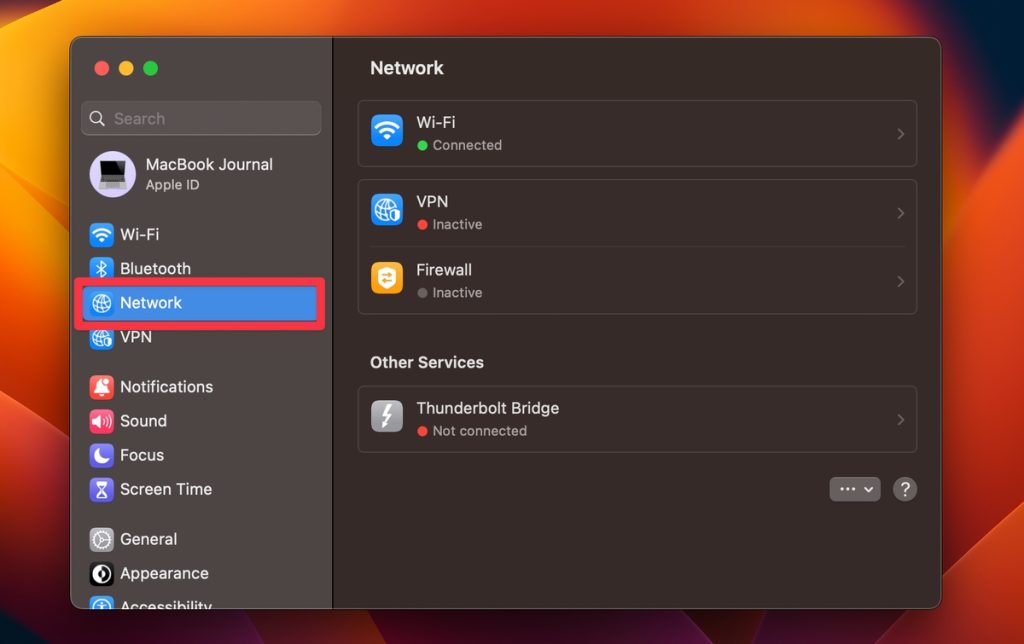
- In the Network settings window, click Wi-Fi and tap the Details button next to your active Internet connection.
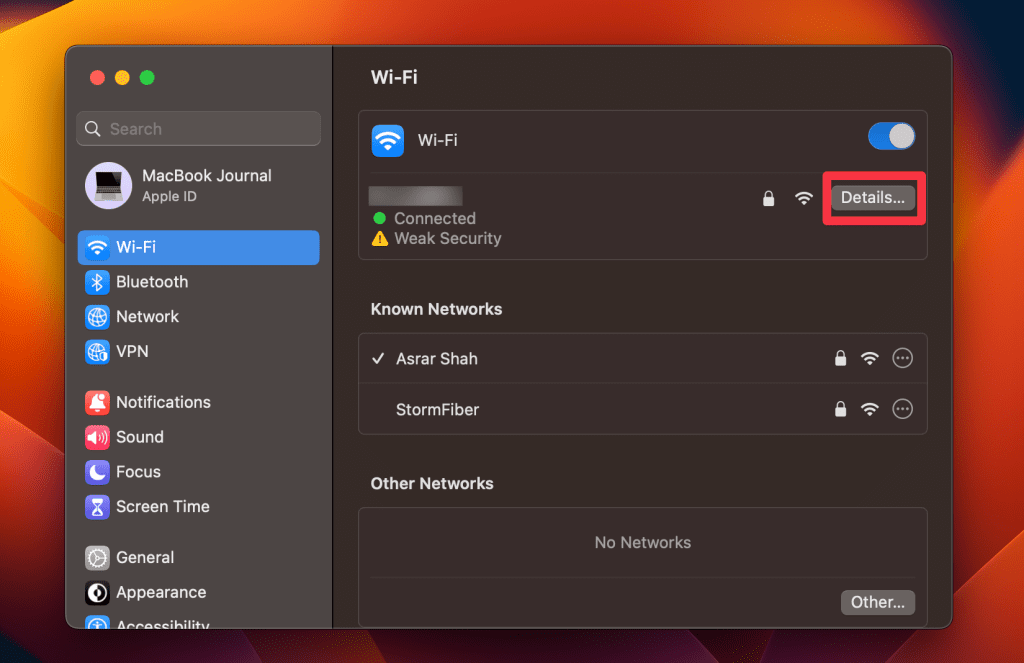
- Click the DNS tab in the Advanced Settings window.
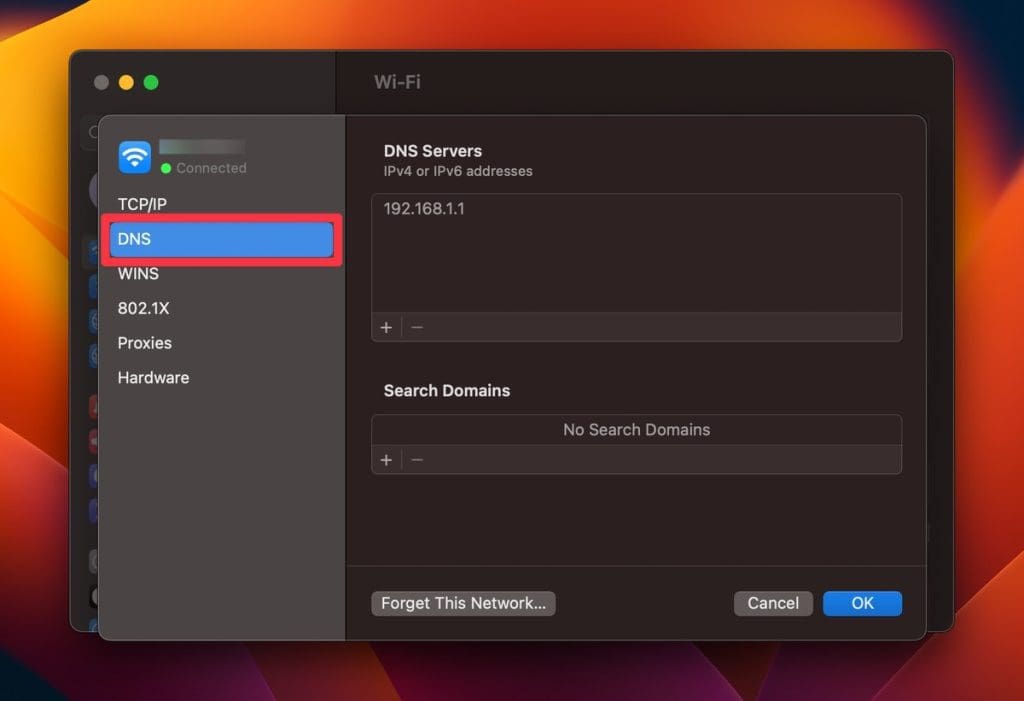
- Click the + button below the DNS Servers box.

- IPv4 addresses: 8.8.8.8 and 8.8.4.4
- IPv6 addresses (if your network supports it): 2001:4860:4860::8888 and 2001:4860:4860::8844
- If there are existing DNS servers listed, make sure the Google DNS addresses are at the top of the list. You can click and drag the entries to reorder them.
- Click the OK button in the DNS Servers window to save the changes.
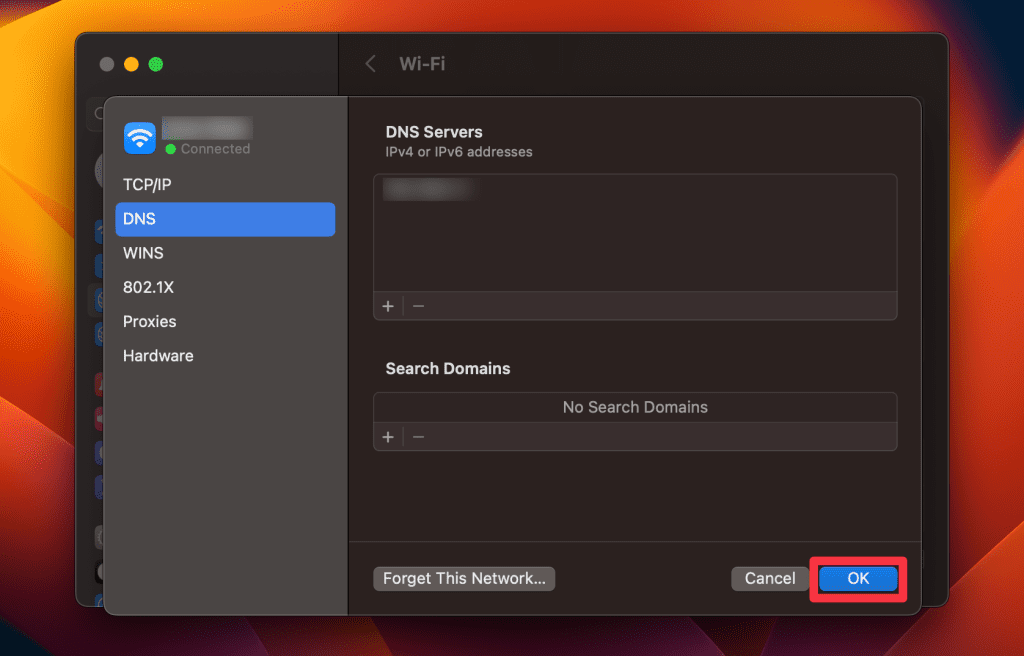
- After switching the DNS provider, open Safari and browse through different websites to check if there’s an improvement in speed and responsiveness.
12. Kill Resource-intensive Processes
Some processes running on your Mac can consume a significant amount of system resources, affecting the overall performance of your computer and, consequently, Safari. Identifying and terminating these resource-intensive processes can free up system resources and improve Safari’s responsiveness.
Here’s how you can kill resource-intensive processes on your Mac :
- Open Activity Monitor by going to Finder > Applications > Utilities > Activity Monitor .
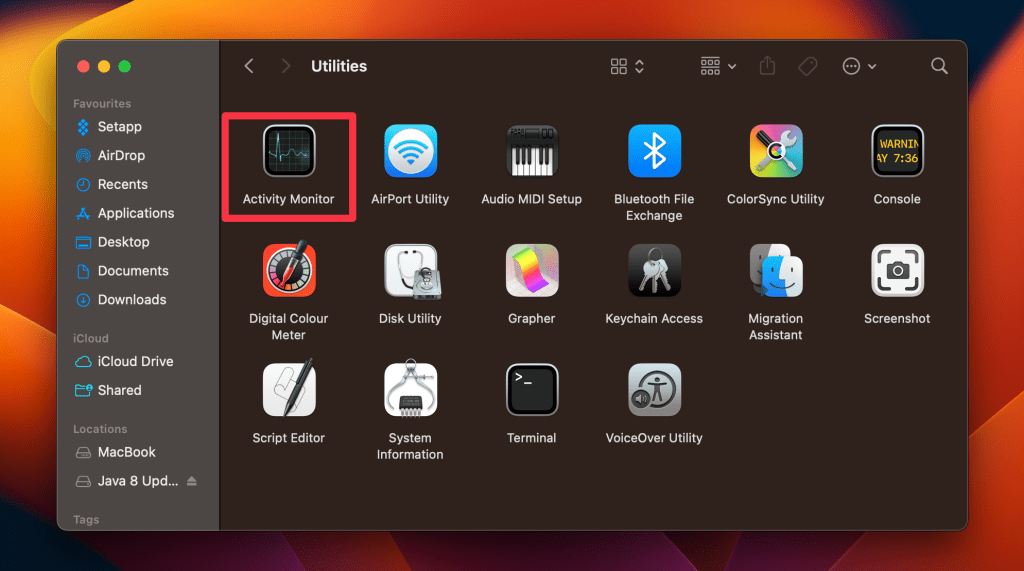
- In Activity Monitor, you’ll see a list of active processes sorted by their usage of system resources such as CPU, Memory, Energy, Disk, Network, or Cache .
- Identify the background process you want to terminate by browsing the list or using the search box at the top-right corner.
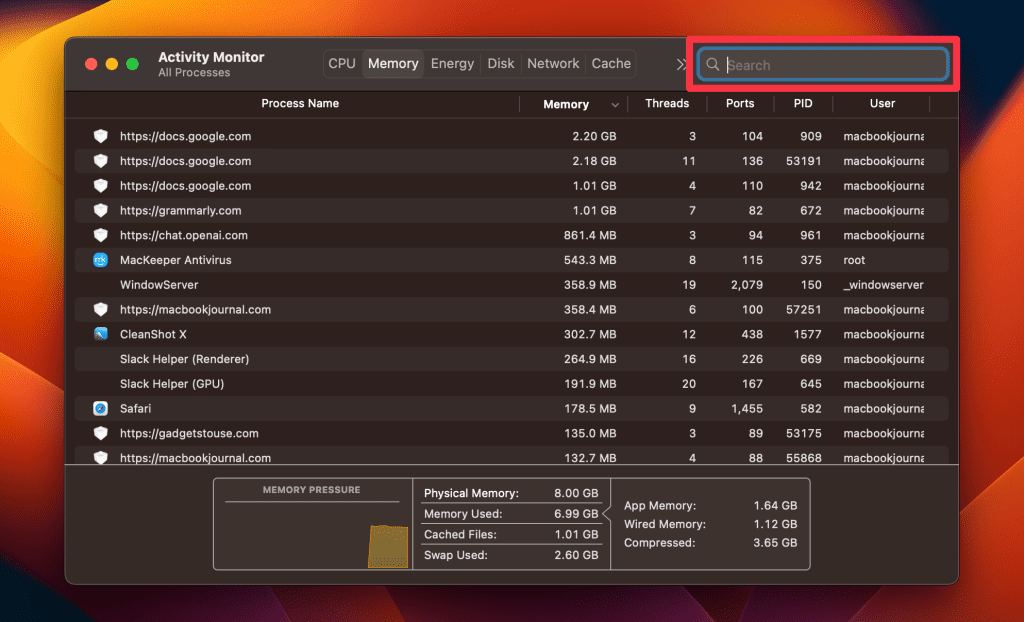
- Select the process you want to terminate to highlight it, and click the X button in the top toolbar.

- Click the Quit button in the confirmation window to terminate the selected process.
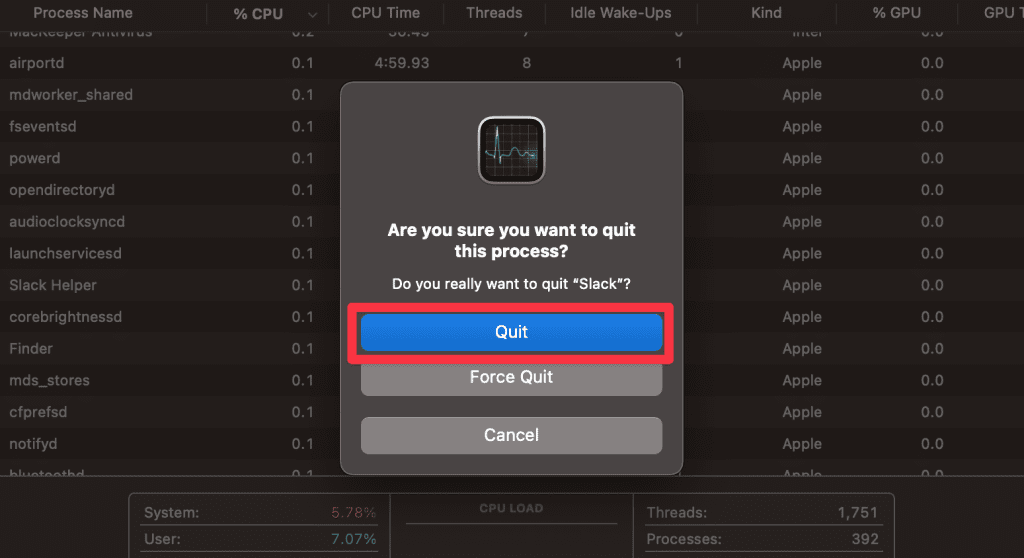
Alternatively, you can use MacKeeper’s Memory Cleaner to free up RAM on your Mac and kill background processes. Here’s how:
- Open MacKeeper and click Memory Cleaner under the Performance tab.
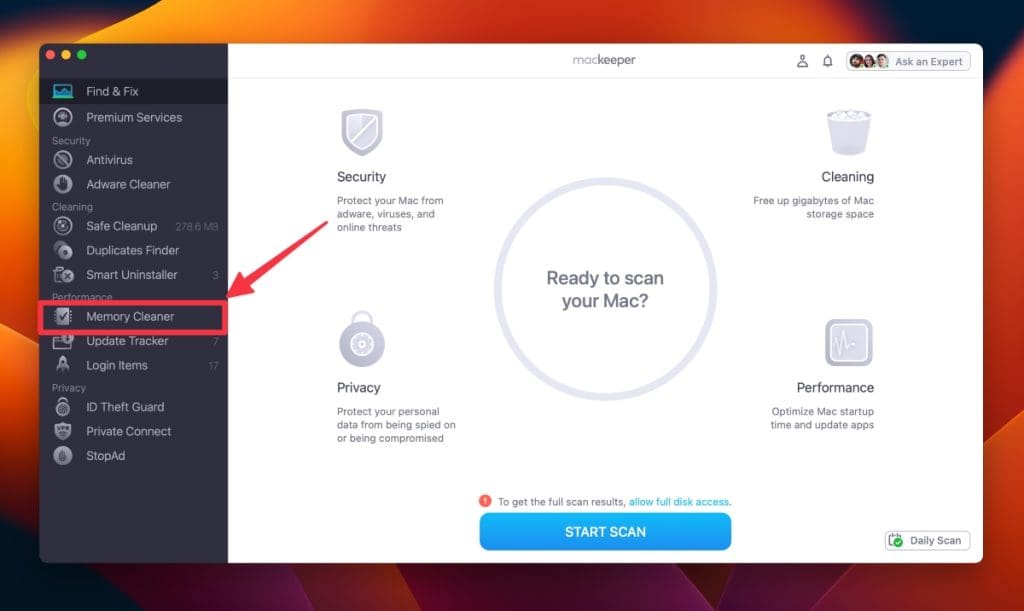
- Click Open .
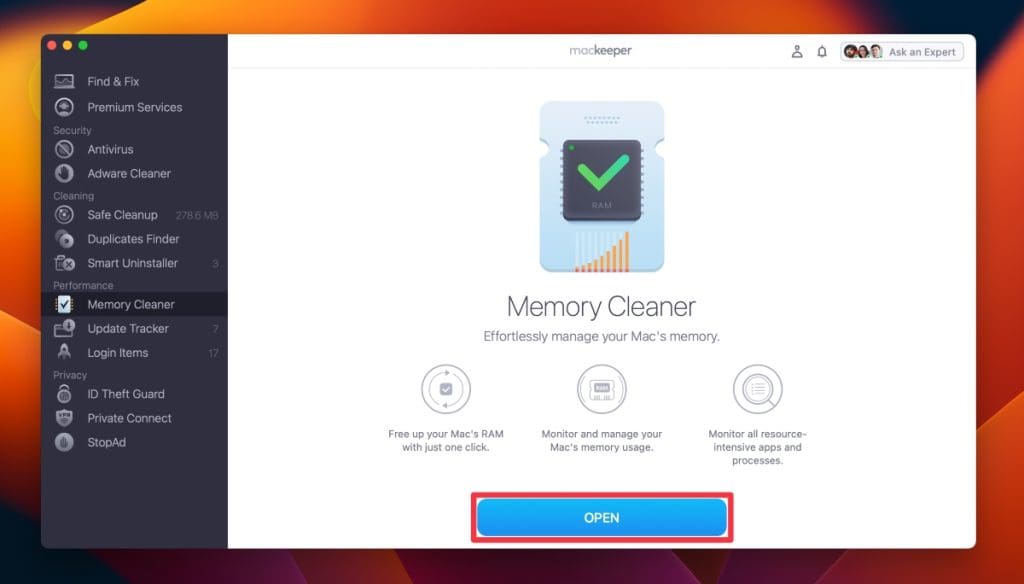
- Click Clean Memory .
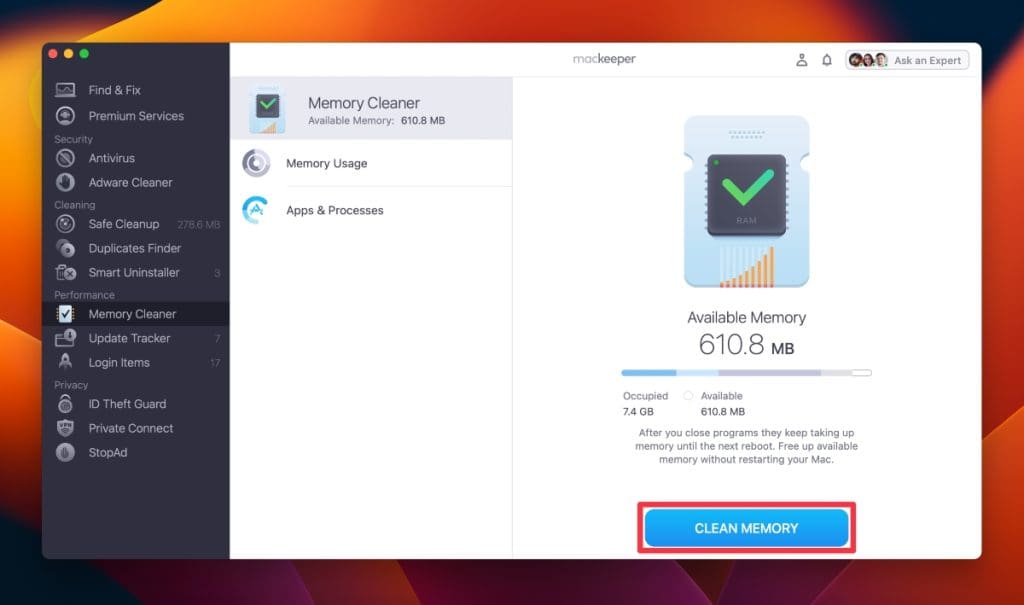
- It will clean your Mac and free up available memory. You can see how much memory it freed under Last Cleanup .
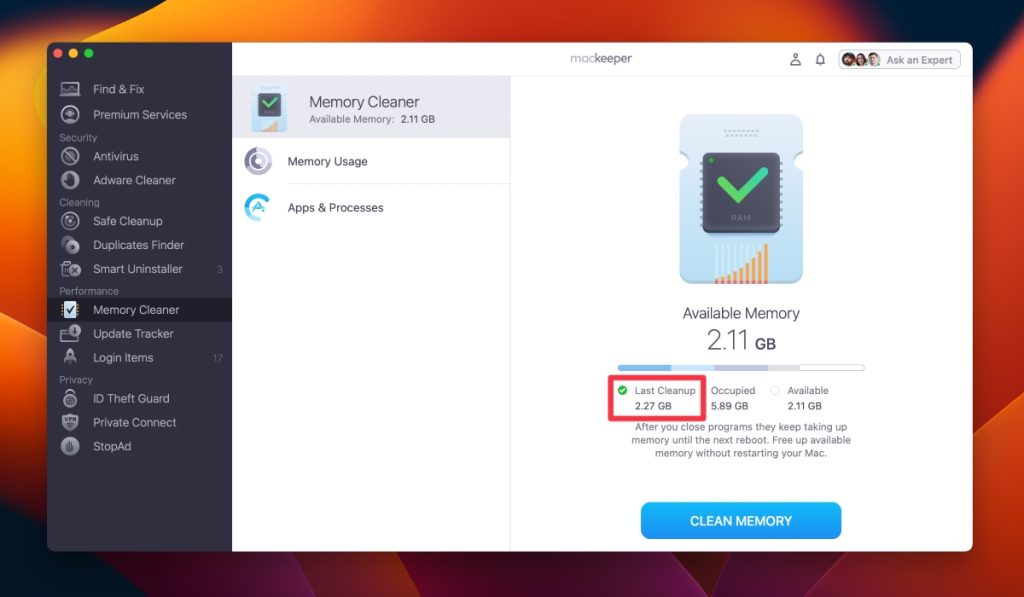
13. Reset Safari to Factory Defaults
Resetting Safari to factory defaults will remove all your settings, history, bookmarks, and other data. It’s like starting fresh with Safari, which can be helpful if the browser’s performance is severely affected by configurations or corrupted data.
Here’s how you can reset Safari to factory defaults:
- Before resetting, backup your bookmarks, saved passwords, and any other important data from Safari.
- Navigate to the Extensions tab and uninstall all extensions.
- Then, go to the Privacy tab and click Manage Website Data to remove all website data.
- Close Safari.
- Open Finder, click Go , and select Go to Folder .
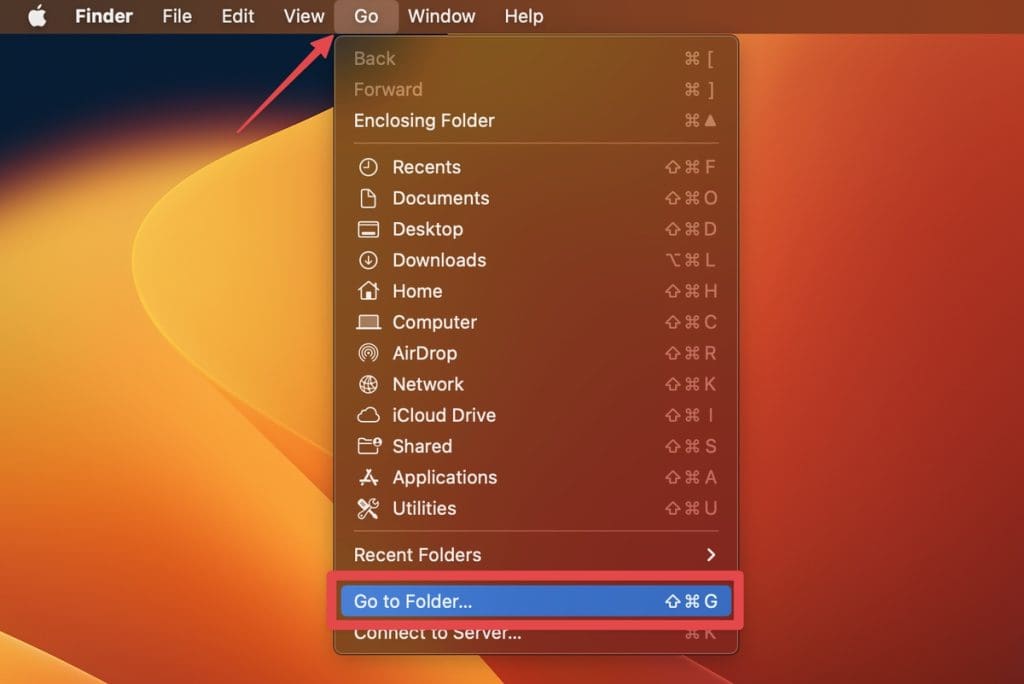
- Type the following path and press Enter :

- Locate the file named com.apple.Safari.plist and move it to the Bin.
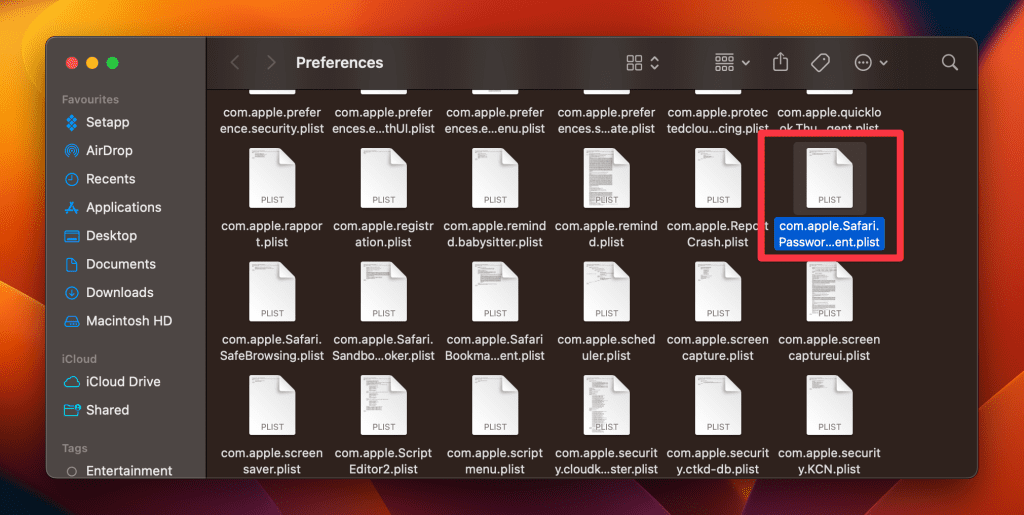
- Open Safari again. It should now be reset to its factory defaults.
14. Scan Your Mac for Virus
Malware and viruses can significantly degrade the performance of your Mac and affect Safari’s functionality. Running a thorough virus scan can identify and remove malicious software, potentially resolving any slowdowns in Safari.
Here’s how to run a virus scan on your Mac using MacKeeper:
- Download and install MacKeeper.
- Launch MacKeeper and navigate to the Antivirus tab in the left sidebar.

- Initiate an instant virus scan by clicking the Start Scan button.

- If any viruses are detected during the scan, click the Fix Items button to resolve the issues.
- If your system is threat-free, you’ll see a No threats found message. You can tap the Restart button to run the scan again.
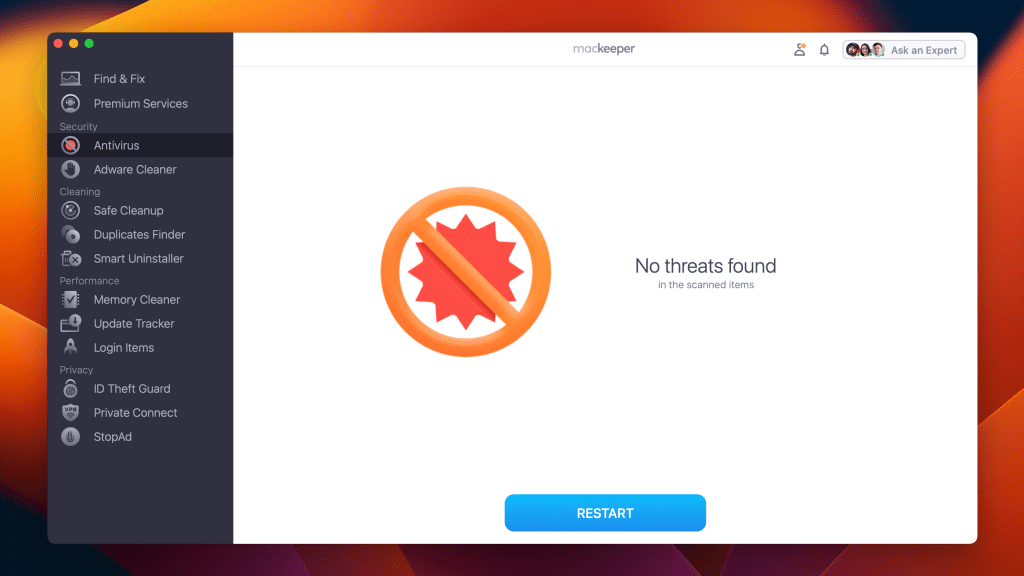
- Enable real-time antivirus protection to safeguard your Mac from future threats by clicking the Enable button.

Once you have configured your security settings, MacKeeper will continue to operate in the background, diligently scanning for threats and actively blocking any malicious activity.
What Else Can MacKeeper Do?
Besides removing browser extensions from Mac and scanning it for viruses, MacKeeper can remove junk files , uninstall applications , and optimize Mac storage . Check out my in-depth MacKeeper review to learn about all its features.
15. Boot Your Mac Into Safe Mode
Safe Mode starts your Mac in a basic state with only the essential system software. It checks for issues and deletes certain system caches, potentially resolving Safari’s performance problems.
Here’s how to boot your Mac in Safe Mode :
Apple Silicon Macs
- Click the Apple icon and choose Shut Down from the drop-down menu.
- Wait for your Mac to shut down completely, and press the Power button to turn it on.

- Keep holding the Power button until you see the Loading startup options screen.
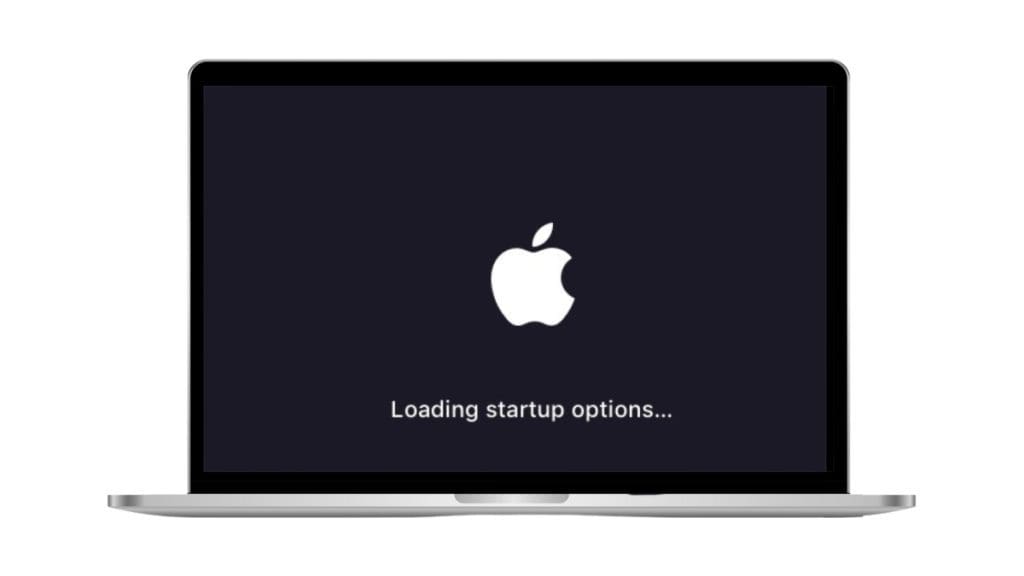
- Select a volume from the options.
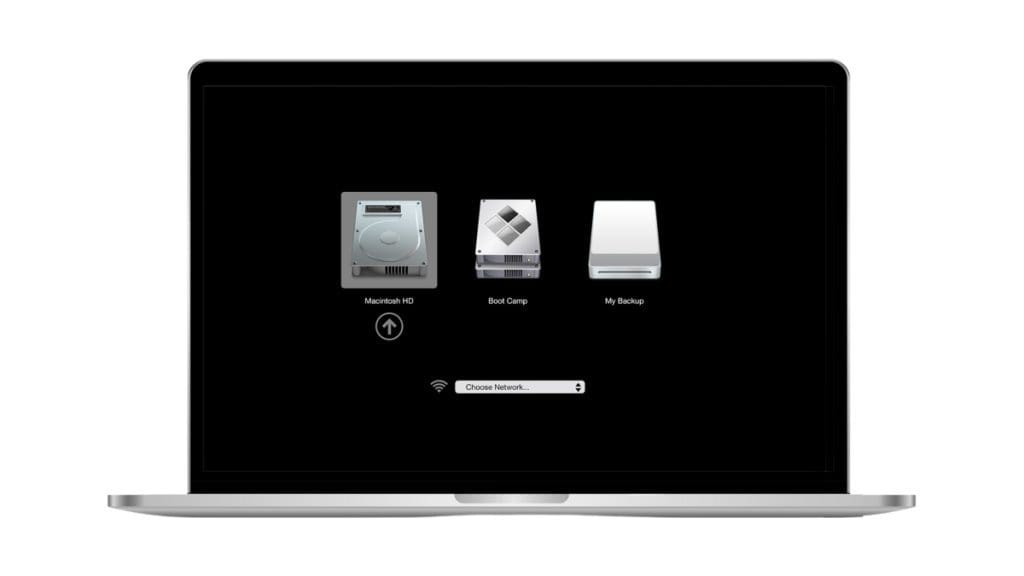
- Press and hold the Shift ⇧ key and click Continue in Safe Mode .

- Your Mac will restart automatically, and you will see Safe Boot in the menu bar when the login screen appears.
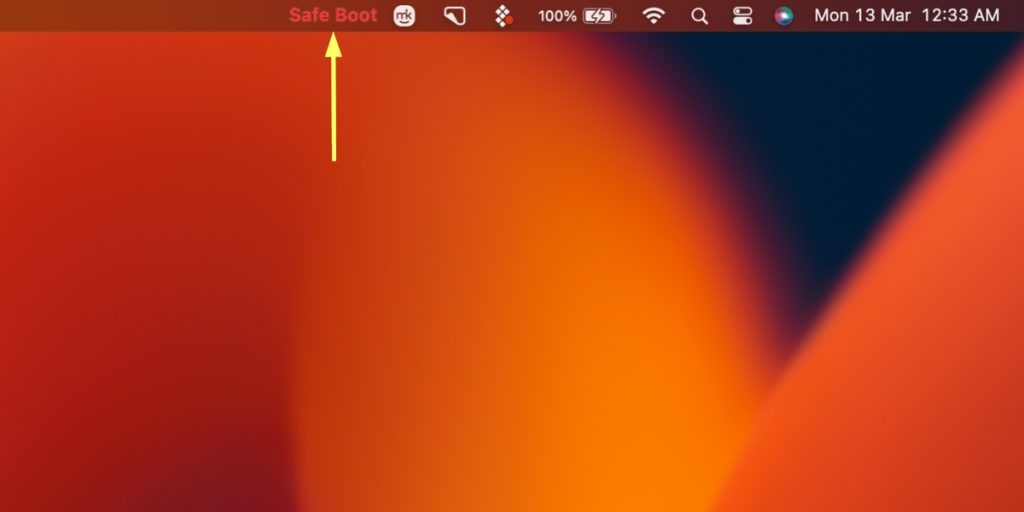
Intel-Based Macs
- Restart or turn on your Mac and press and hold the Shift ⇧ key immediately.
- Keep holding the Shift ⇧ key until you see the login screen.
- Release the Shift ⇧ key and log in to your Mac.
- You may be asked to log in again.
- You’ll see Safe Boot in the menu bar on your first or second login window.
Open Safari and navigate through various websites to assess whether the browser’s performance has improved in Safe Mode. After checking Safari’s performance, restart your Mac normally without holding any keys. This will exit Safe Mode.
Speed Up Safari on Your Mac
Navigating through a sluggish Safari can be a test of patience, but armed with the solutions outlined in this guide, you’re well-equipped to tackle any slowdowns head-on. To improve your Safai experience further, here are some more tips for you:
- If your Safari bookmarks disappeared on Mac , many ways exist to restore them without panicking.
- If you don’t want Safari to keep your browsing history, go incognito on a Mac in Safari browser .
- Some pop-ups can be a nuisance and slow down your browser. So, disable unnecessary pop-ups on Safari and improve its speed.
Frequently Asked Questions
Will i lose important data by resetting safari to factory defaults.
Yes, you will lose data by resetting Safari to factory defaults. It erases all your settings, history, bookmarks, and saved passwords, so back up important data like bookmarks and passwords before resetting to avoid losing valuable information. After the reset, you can restore the backed-up data as needed.
Is it safe to switch to a different DNS provider?
Yes, it is safe to switch to a different DNS provider like Google DNS or OpenDNS. It can even improve your internet speed and security. However, it’s crucial to ensure the DNS addresses are correct and from a trustworthy source to avoid any connectivity or security issues.
How often should I scan my Mac for viruses to maintain Safari’s performance?
You should regularly scan your Mac for viruses to maintain Safari’s performance. Ideally, once a week or monthly is advisable, but the frequency can vary based on your internet habits, the websites you frequent, and the types of files you download. Regular scans detect and remove malicious software promptly.
I'm Hashir, a tech journalist with a decade of experience. My work has been featured in some of the top tech publications like MakeUseOf and MakeTechEasier. I have a bachelor's degree in IT, a master's in cybersecurity, and extensive knowledge of Apple hardware, specifically MacBooks. As the senior writer at MacBook Journal, I write in depth guides that help you solve any issues you have with your mac and unbiased reviews that help you make the right buying decisions.
Hi there! I'm Ojash, a tech journalist with over a decade of experience in the industry. I've had the privilege of contributing to some of the world's largest tech publications, making my mark as a respected Mac expert. My passion lies in exploring, using, and writing about MacBooks, and I enjoy sharing my expertise to help others make informed decisions and get the most out of their MacBook experience. Join me as we delve into the fascinating world of MacBooks together!
You May Also Like
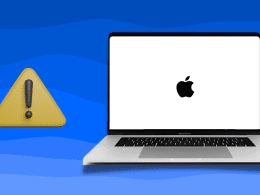
How to Fix White Screen on Mac: 11 Tried and Tested Methods
Resolve Mac's white screen issue with these proven methods
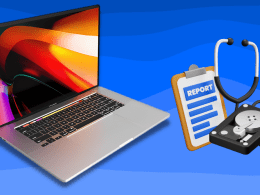
How to Repair Disk Permissions on Mac: 4 Best Methods
Written by Hashir Ibrahim Reviewed by Ojash Last updated: September 6, 2023

How to Fix Your Mac Running Slow After an Update: 12 Best Solutions

Mac Keyboard Not Working? Try These 10 Fixes
Written by Pawan Singh Reviewed by Ojash Last updated: September 3, 2023 Expert

We explain and teach technology, solve tech problems and help you make gadget buying decisions.
Top 7 Ways to Fix Slow Safari on Mac
Safari is one of the best browsers in the Mac ecosystem. With each iteration of macOS, the company is further improving Safari at a rapid pace. Safari Tab Groups is a recent example of that. However, users are still moving from Safari to Google Chrome or Microsoft Edge for a fast browsing experience. If Safari feels slow to you, read along to learn to speed up the Safari browser on Mac.
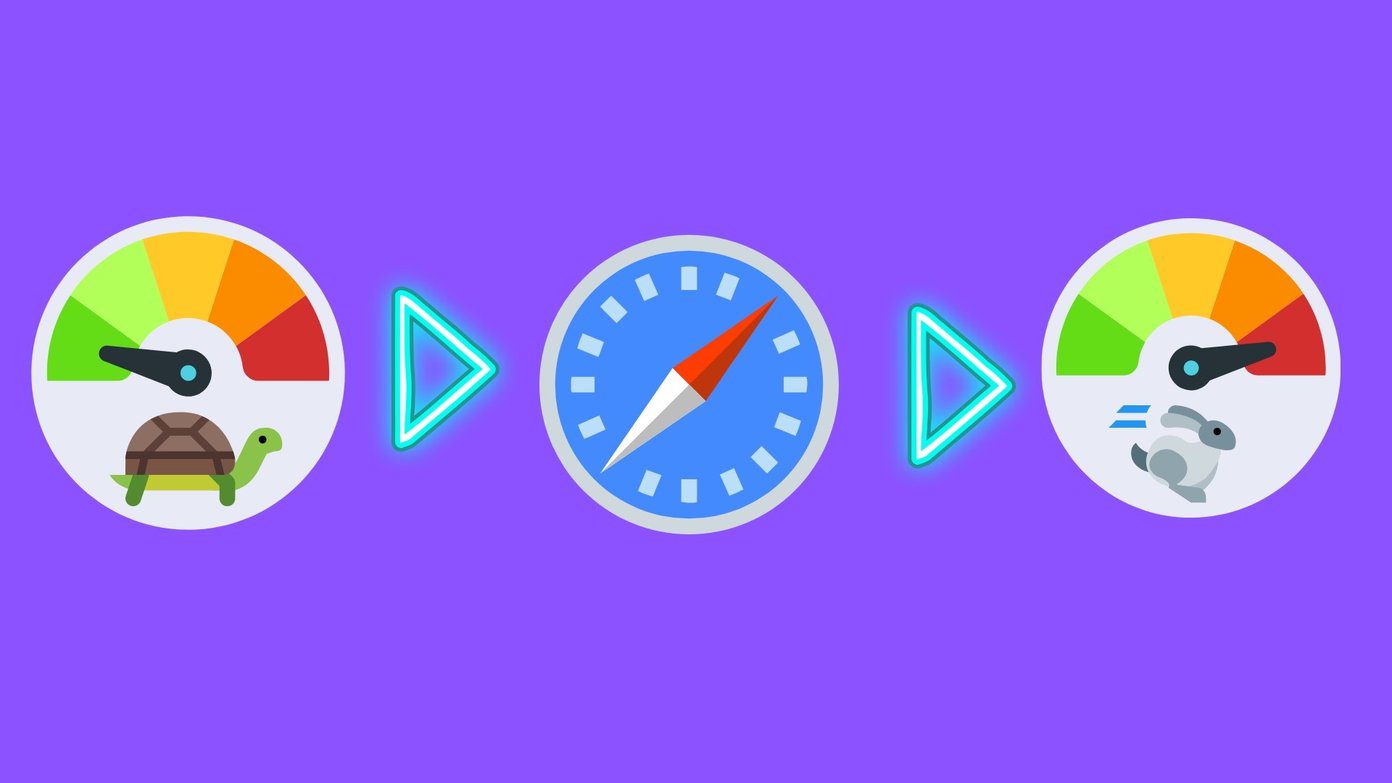
We have seen many users ditching Safari on Mac due to slow or laggy web browsing. It’s not entirely Safari’s fault. With relevant changes from the System Preferences and Safari menu, you can easily troubleshoot slow Safari on Mac.
1. Connect to 5.0 GHz Wi-Fi Frequency
Most users connect a 2.4 GHz frequency band of the Wi-Fi network. To enjoy better speeds, you can connect MacBooks to the 5 GHz band on dual-band Wi-Fi routers.
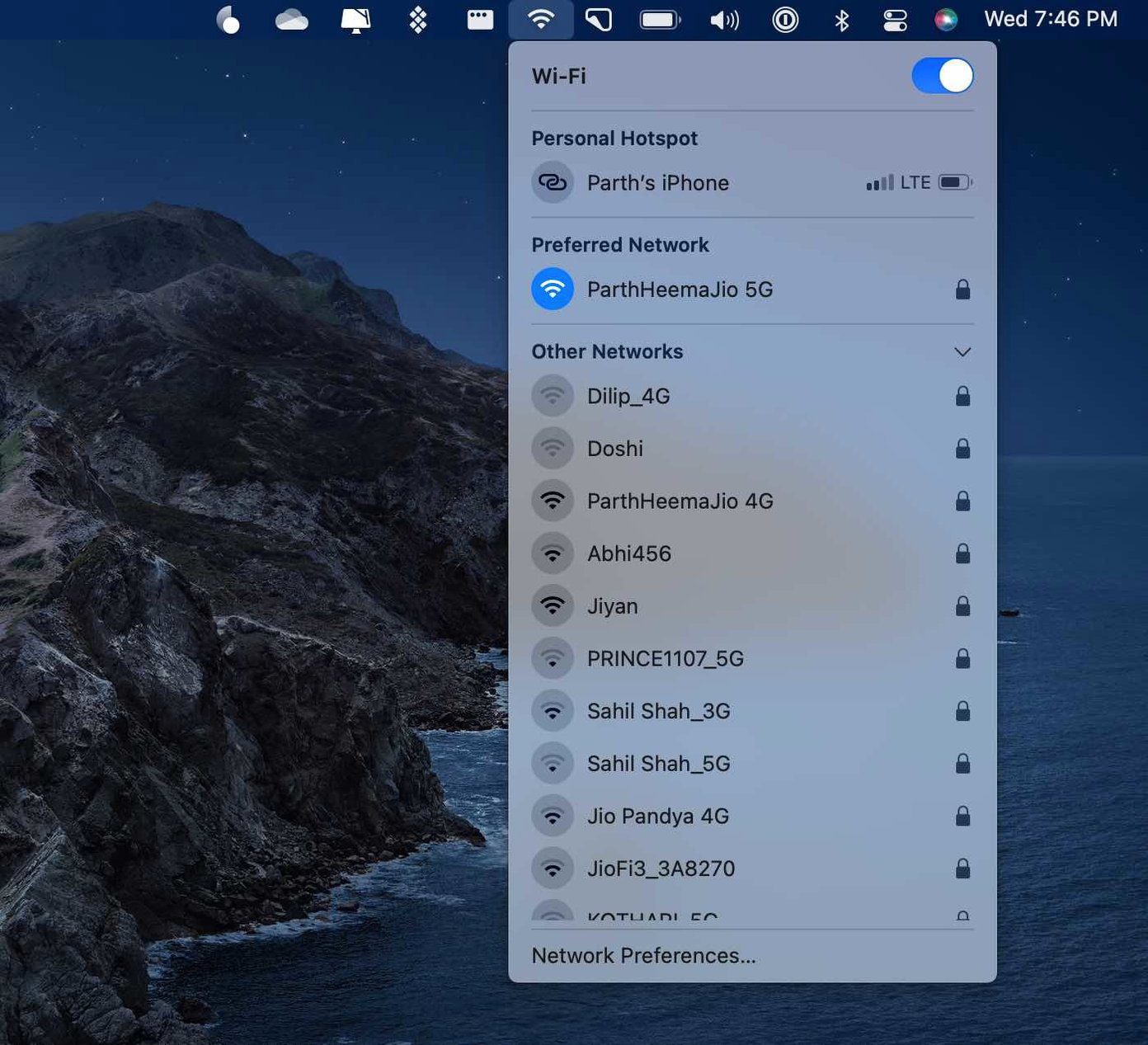
You will definitely have faster internet speeds leading to an improved browsing experience in Safari.
2. Turn off iCloud Private Relay
This option is only applicable to those using Mac with macOS Monterey 12.0 or higher. With the macOS Monterey, Apple has introduced iCloud Private Relay for iCloud+ subscribers. Before you go ahead and make changes with iCloud Private Relay, let’s understand what it means and how it can lead to slow Safari on Mac.
iCloud Private Relay is designed to keep your IP address hidden from third-party trackers on the web. Apple is rerouting all the Safari browsing data through the company-branded server. While it helps you protect identity and location, you should disable it if you feel slow Safari following the Monterey update.
In that case, you should disable iCloud Private Relay from the System Preferences menu. Follow the steps below.
Step 1: Click on the little Apple icon in the menu bar.
Step 2: Go to the System Preferences menu.

Step 3: Click on Apple ID.
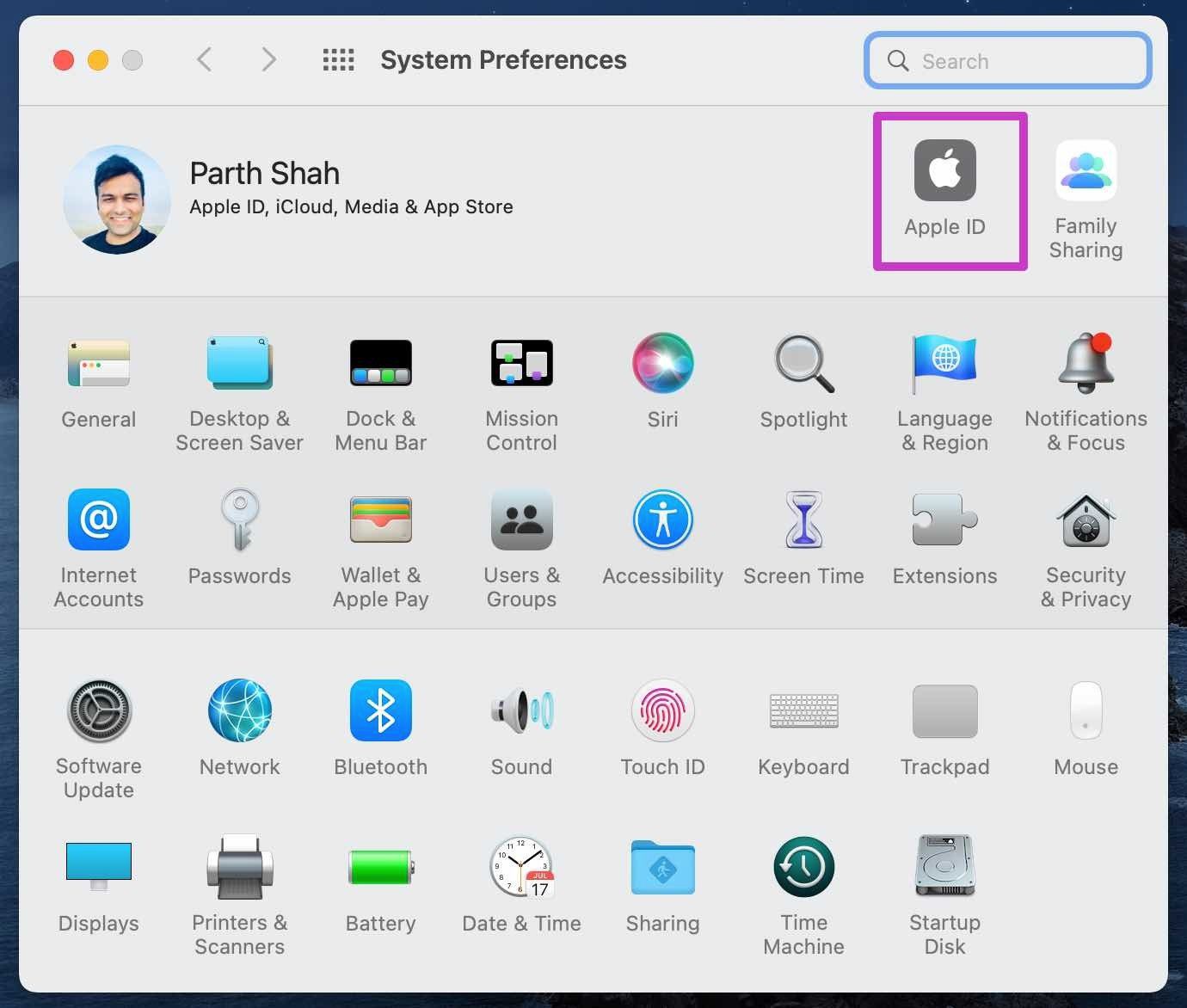
Step 4: Open the Private Relay menu.

Step 5: Disable toggle from the following menu.
3. Disable iCloud Private Relay for Wi-Fi Connection
The solution above is suitable for those using Mac at home. You can trust your home Wi-Fi and not worry about any data theft.
If you are always on the move and use public Wi-Fi frequently, you shouldn’t disable iCloud Private Relay. In that case, you should only disable iCloud Private Relay for your home Wi-Fi to speed up Safari on Mac.
Step 1: Open the System Preferences menu on your Mac.
Step 2: Go to Network.
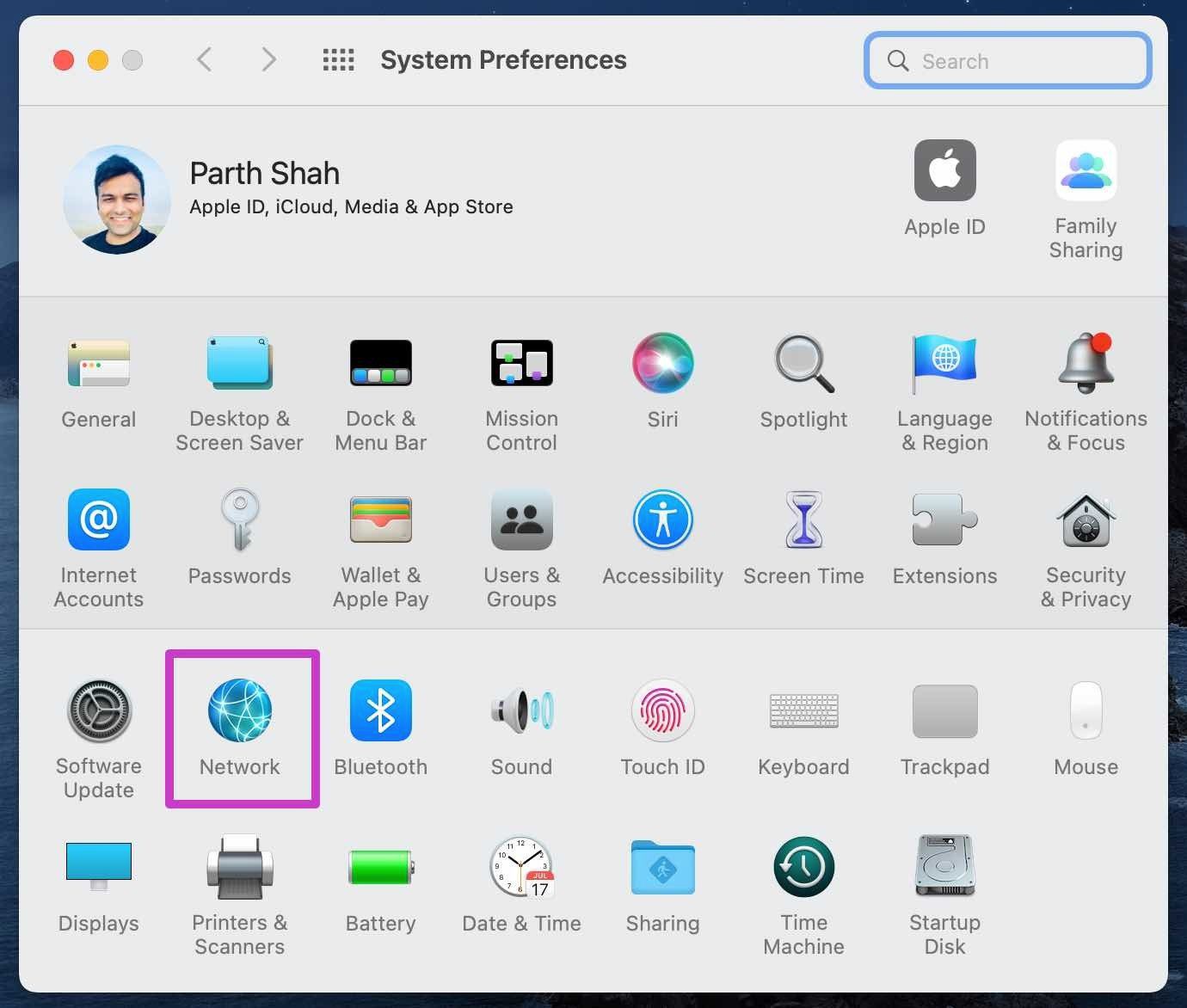
Step 3: Select your current Wi-Fi connection from the following menu.
Step 4: Disable Use iCloud Private Relay toggle as shown in the screenshot.
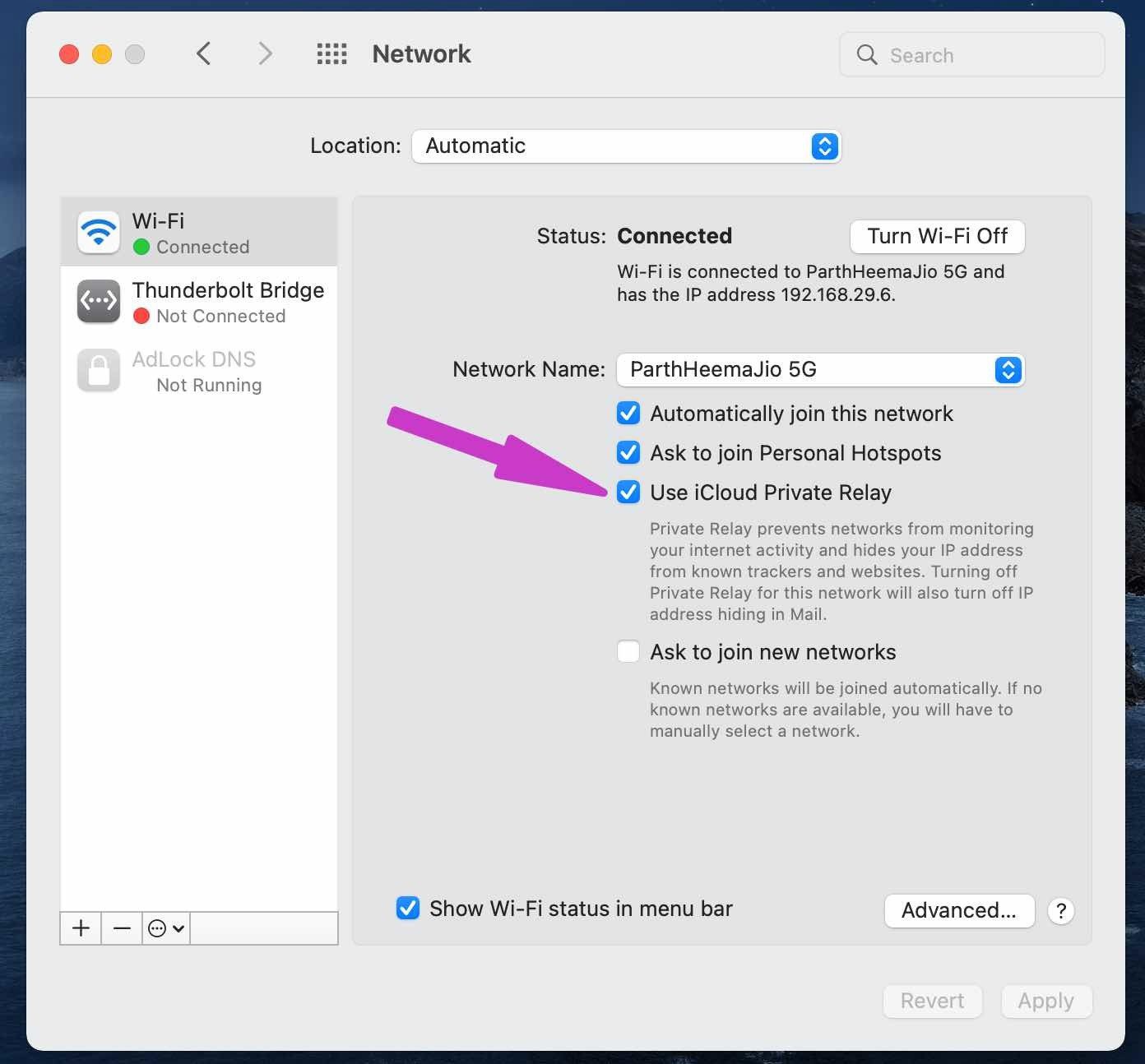
4. Remove Irrelevant Extensions
While Safari doesn’t carry a large number of extensions compared to Google Chrome or Firefox , it’s easy to fill up the browser with dozens of extensions. You may need to slow down with them as it can lead to slow Safari on Mac.
Follow the steps below to remove unwanted extensions from Safari on Mac.
Step 1: Open Safari browser on Mac.
Step 2: Click on Safari in the menu bar and open the Preferences menu.
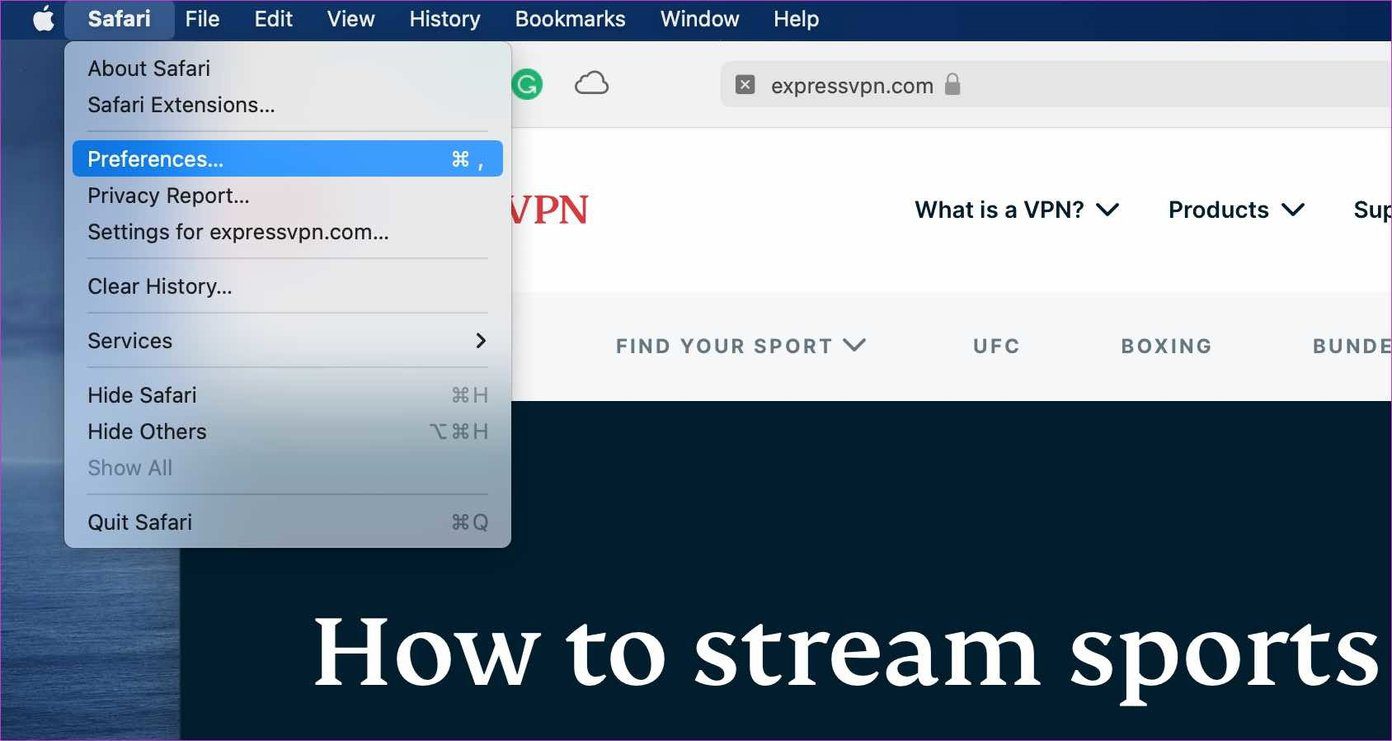
Step 3: Move to the Extensions.
Step 4: Select the extension that you want to remove from the left sidebar.
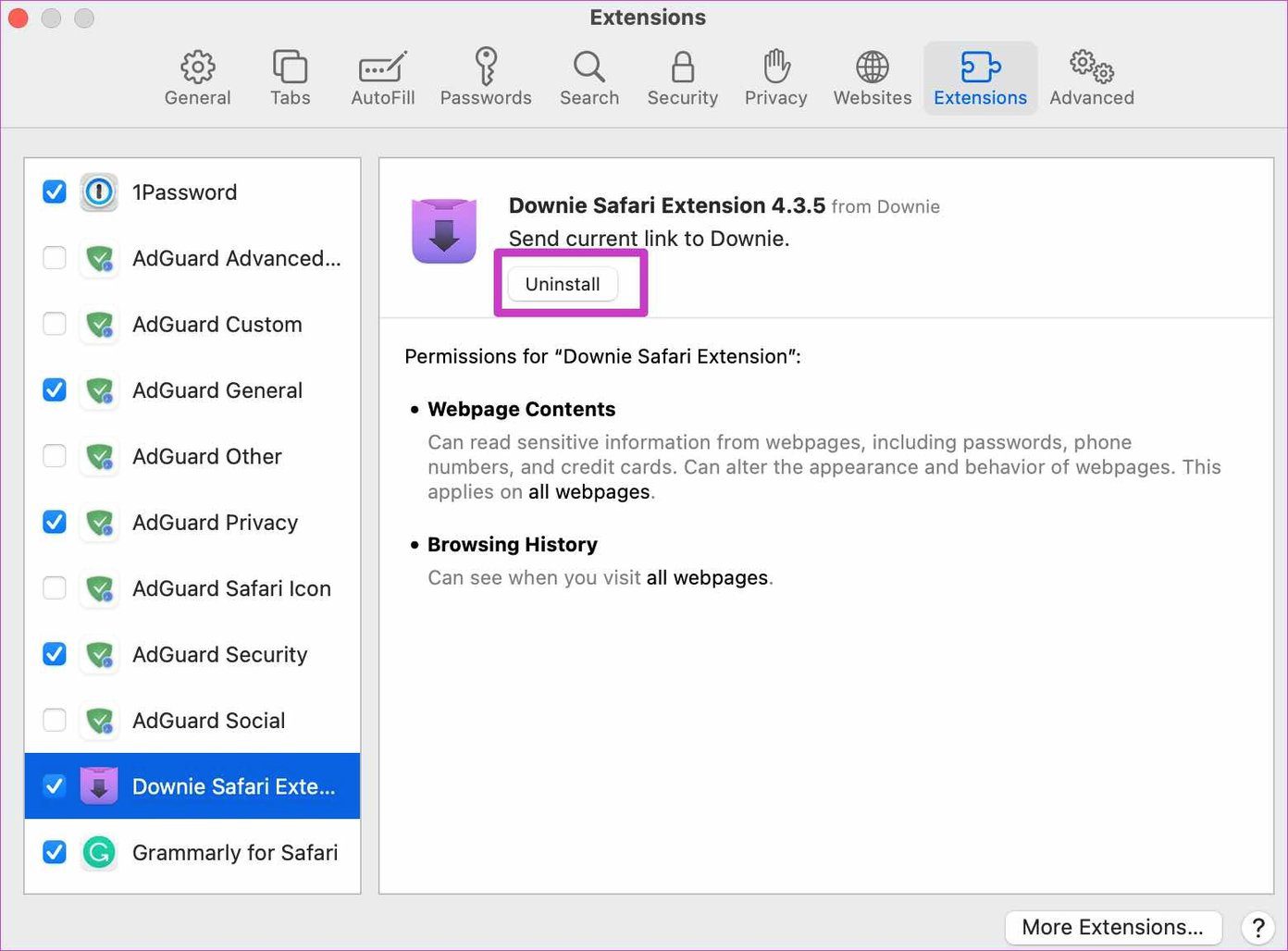
Step 5: Click on Uninstall.
Repeat the steps for every extension that you want to remove, and you are good to go.
5. Remove Safari History
An absurd amount of Safari data on Mac may lead to slow performance. You need to clear your Safari history frequently. Here’s how.
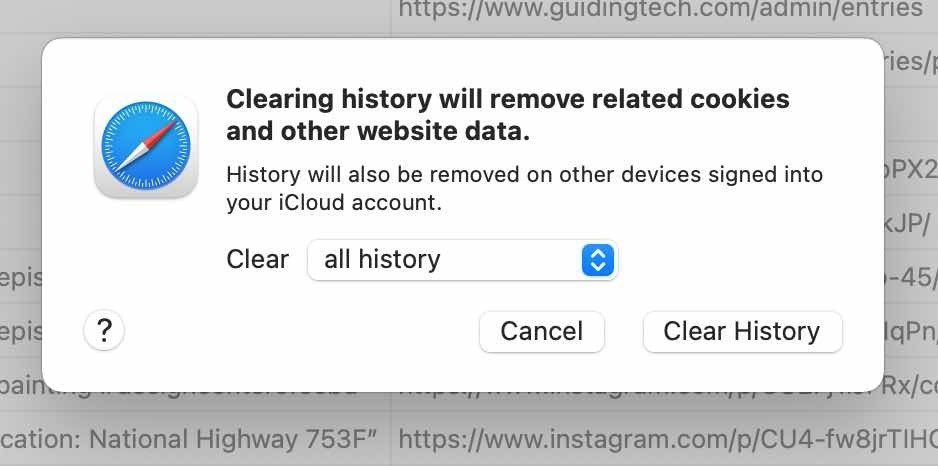
Open Safari browser on Mac and use command + Y keys to open Safari history. Select Clear History at the top, select all history and clear history.
6. Check RAM Usage
This is most applicable to MacBooks and Mac Mini with 8GB of RAM. With a few apps open in the background, you might run short on RAM on the Mac. The behavior may lead to slow Safari on Mac.
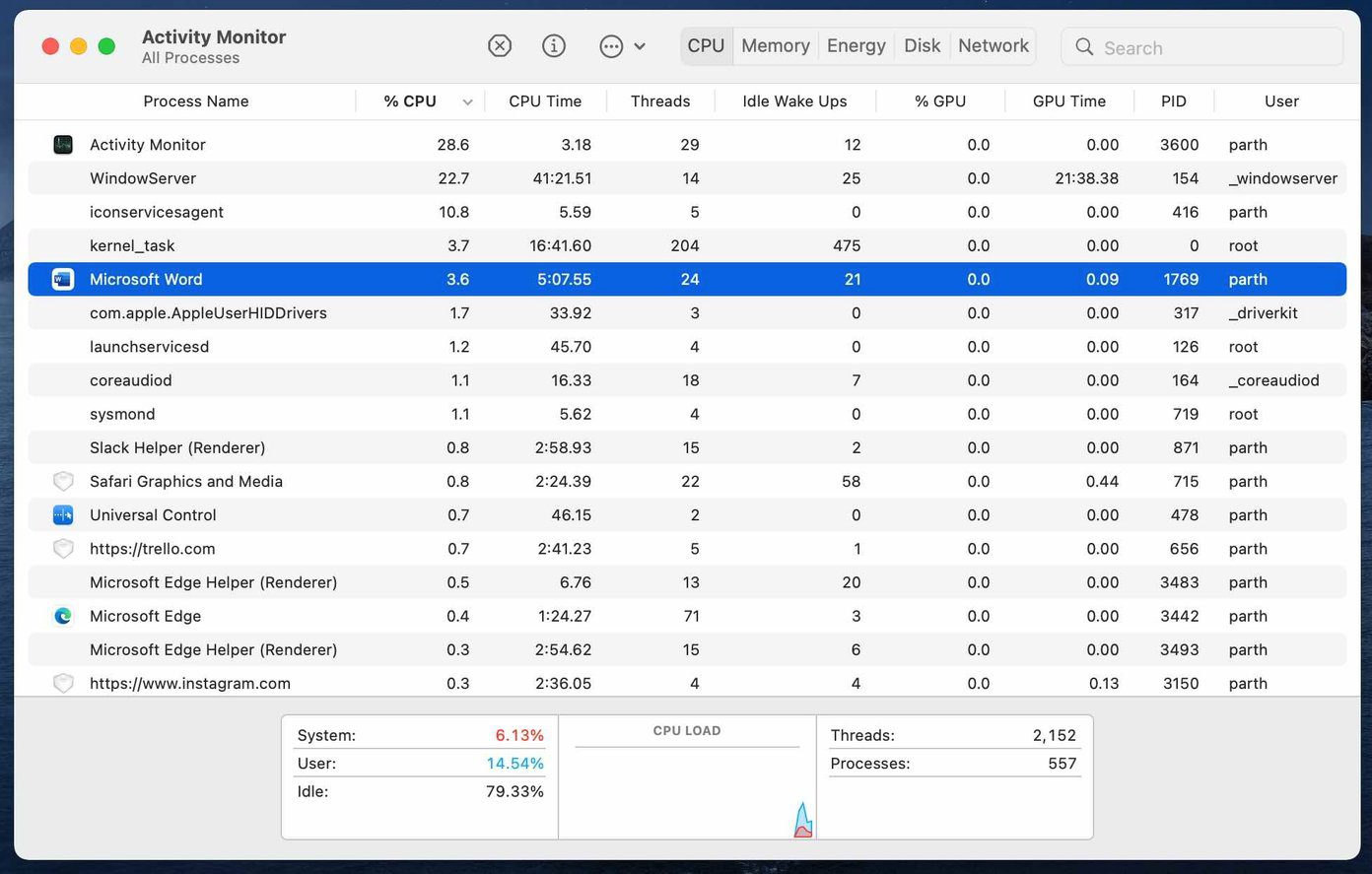
Open Activity Monitor and then carefully identify to close the unwanted apps that are running in the background.
7. Update macOS
Apple updates the Safari browser with new features and reliability improvements with each OS update. If you haven’t updated the macOS version on your Mac for a while, you can update it to make the best of the Safari’s performance and features. For that, you’ll need to open System Preferences and choose Software Update.
Speed Up Safari on Mac
With Safari Tab Groups, iCloud tabs, and tons of customization options, there is a lot to like about Safari on Mac. However, slow performance may push you to look for alternatives. Before you export bookmarks and history, follow the steps above and fix slow Safari on Mac.
Was this helpful?
Last updated on 07 February, 2022
The above article may contain affiliate links which help support Guiding Tech. However, it does not affect our editorial integrity. The content remains unbiased and authentic.
I am running macOS 12.6.1 on a 2019 iMac. It takes forever to finish starting up and both Safari and Mail are intolerably slow, I am connected to the internet by fast ethernet, not WiFi. I have 28 GB of memory on board. I am not connected to iCloud and I have no extensions installed. My hard disc is less than half full. So none of the causes of slow operation you mention apply. This situation has been getting steadily worse with each upgrade of the OS since at least Big Sur. The problem is therefore with Apple’s own hardware or software or both. They seem to have lost interest in their mac users and certainly do nothing to retain them. Would I do best to abandon them altogether?
Leave a Reply Cancel reply
Your email address will not be published. Required fields are marked *
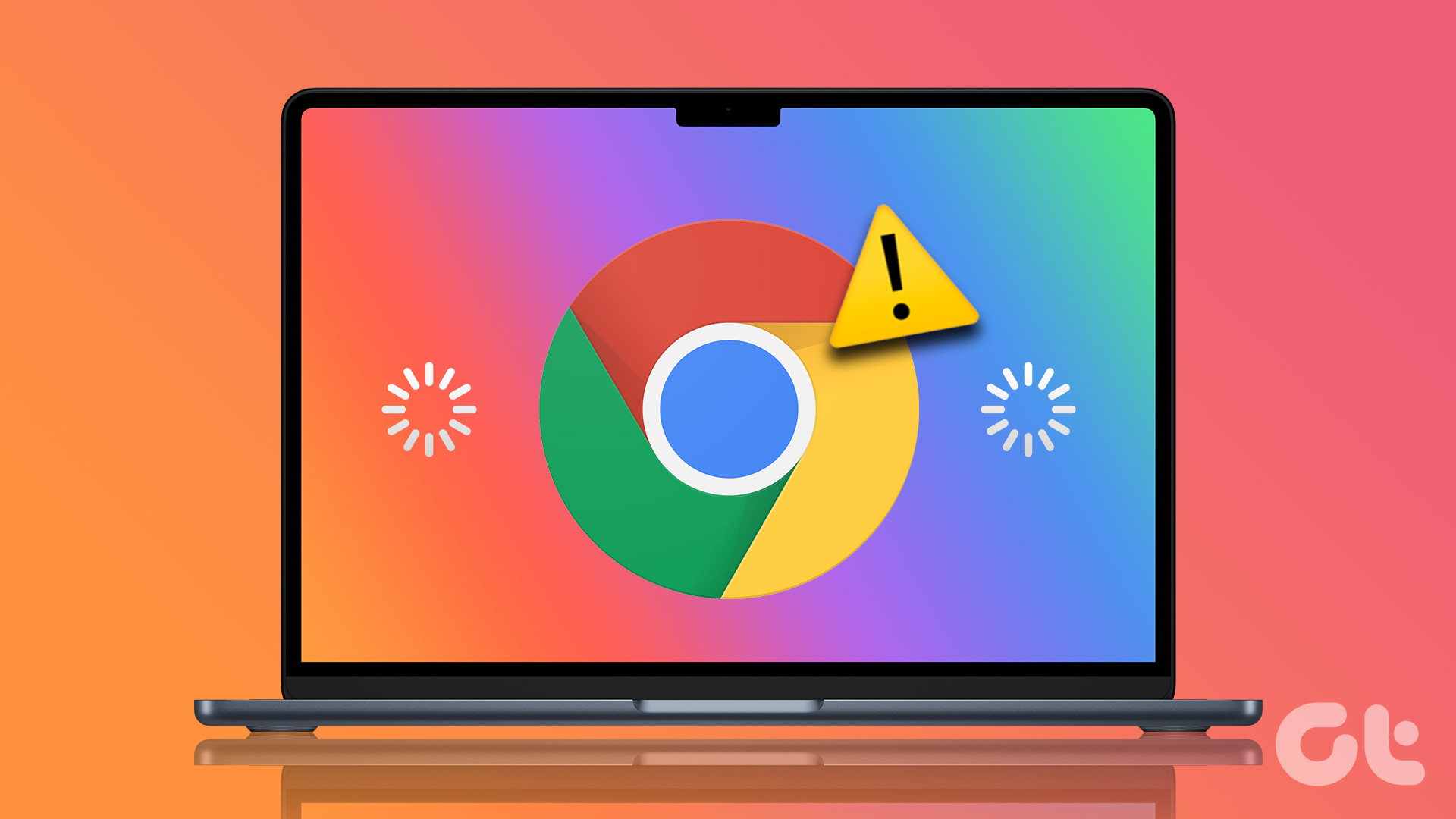
The article above may contain affiliate links which help support Guiding Tech. The content remains unbiased and authentic and will never affect our editorial integrity.
DID YOU KNOW
Parth Shah is an evergreen freelance writer covering how-tos, app guides, comparisons, listicles, and troubleshooting guides on Android, iOS, Windows, Mac, and smart TV platforms. He has over five years of experience and has covered 1,500+ articles on GuidingTech and Android Police. In his free time, you will see him binge-watching Netflix shows, reading books, and traveling.
More in Mac
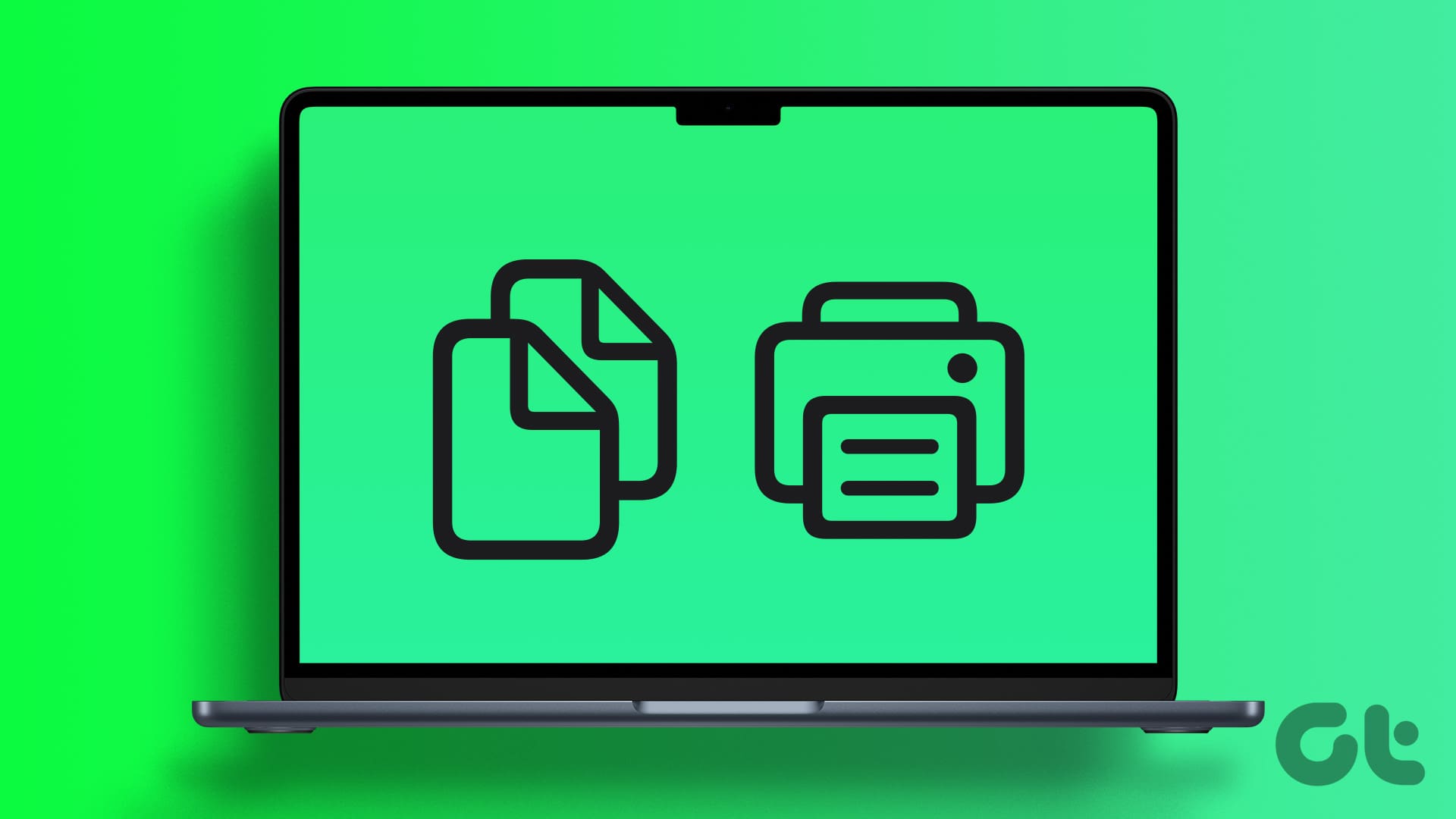
How to Print Multiple Files at Once on Mac
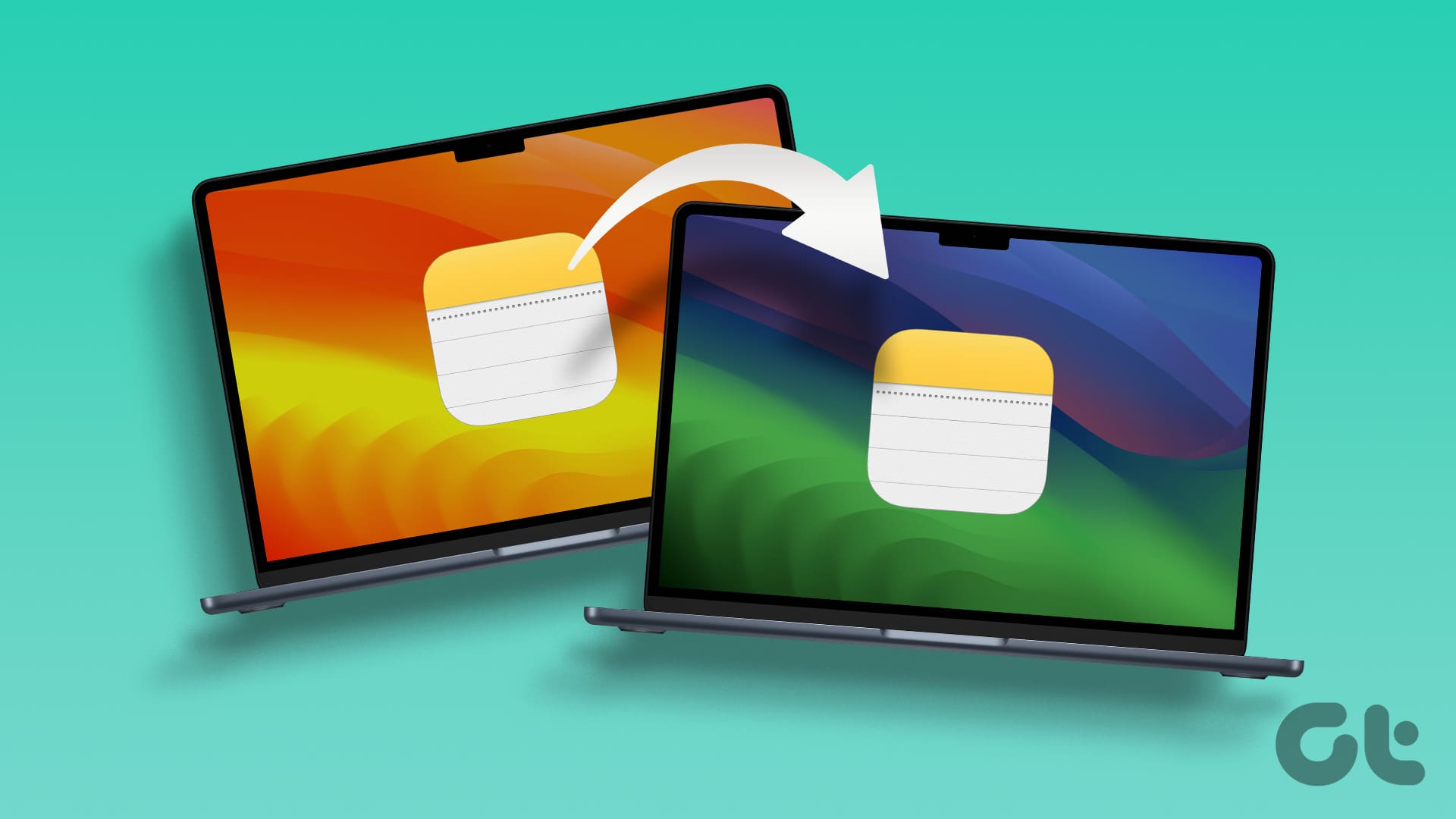
4 Ways to Transfer Notes From Mac to Mac
Join the newsletter.
Get Guiding Tech articles delivered to your inbox.

Safari Running Slow? – Here are Some Quick Fixes!

If you buy through affiliate links, we may earn a commission at no extra cost to you. Full Disclosure Here…
Apple’s Safari is known to be amongst the best browsers due to its fast performance and simple interface. However, it can still run into performance issues that can be frustrating. There could be a multitude of reasons for Safari running slower than usual. So, we tried a few simple methods that might be able to fix the issue and get back on track.
Some possible reasons for this issue are the build-up of cache or cookies, outdated browsers, extensions, or plug-ins that are not being used. Once you are able to identify the issue, you can simply follow the steps to remove cache and extensions or even update the browser.
Well, let us look at everything we need to know in detail and figure out all the methods that might work best for you.
Why Is Safari So Slow?
1. build-up cache and cookies, 2. software update, 3. extensions and plug-ins issue, 4. large number of open tabs, 5. network issues, 6. limited storage space, 7. contact apple support, frequently asked questions.
Your Safari browser is running slow because of the build-up of cache and cookies. Or it could even be because you are using an outdated version of the browser, and it needs an immediate update. Furthermore, this could be simply because too many tabs are open on the system, and thus it is eventually slowing down the entire software.
As we said, this could be because of any underlying cause. You can fix all of it by simply restarting the system or the browser itself. Or you might need to try other methods that can take a few more steps. Here are some fixes you can try that worked for us too.
7 Reasons Why Safari is Running Slow + Fixes
We all know the basic idea behind using cache and cookies. They are used by websites or the system to speed up your browsing experience. However, the more you are active on the internet, the more these files are piled up over time.
Hence, there isn’t enough space for the browser or the system to store any more of these small files. So, we need to eliminate these to fix your Safari issues. Here is how you can do it.
- Open Safari Browser.
- Now, click on History on the top taskbar and choose Clear History in the drop-down menu.

- Select the time duration besides the Clear option, then click on Clear History.
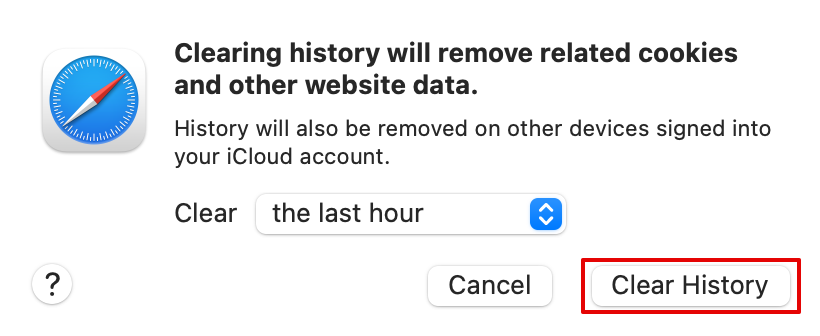
The above steps will clear the history and the cookies from the site. Now close Safari and start again to check if the issue is fixed.
Here is another way you can empty caches on the Safari browser.
- Open the Safari browser and click on Develop on the top taskbar.
- Now, from the drop-down menu option, select Empty Caches or press Option + Command + E.
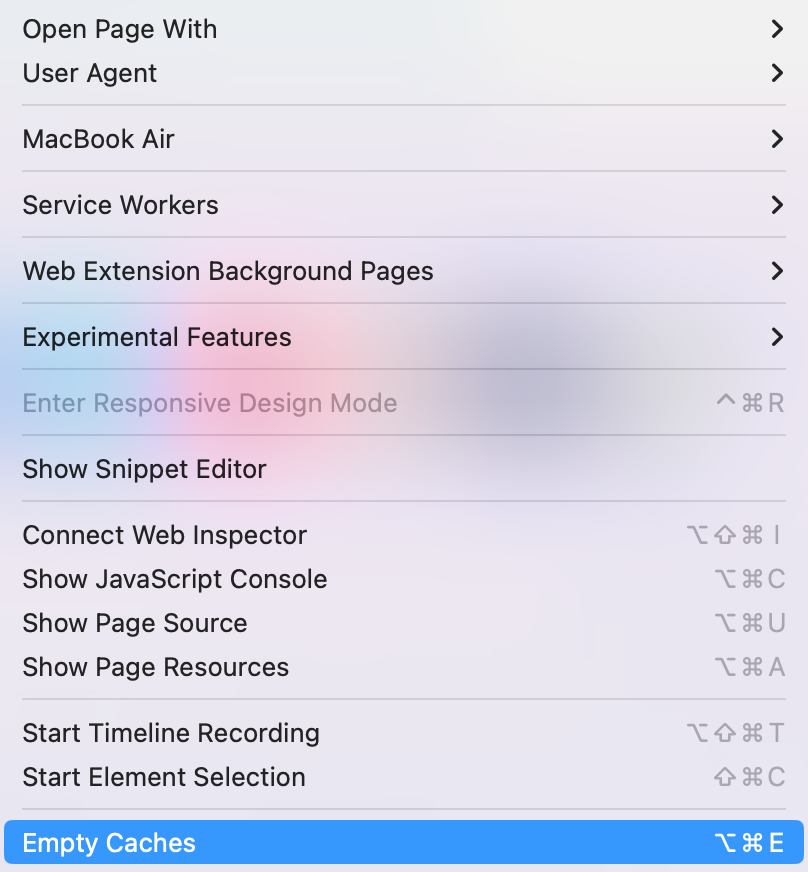
Another method you can try is updating the Safari browser by updating your macOS . Since Safari is an in-built software developed by the tech giant itself, they often release updates to fix such errors.
Here is how you can check for updates and update your Safari app when needed.
- Go to the Apple menu and then choose System Settings .
- Then click on Software Update.
- Wait a few seconds for the system to check for an available update. Install the update if available.

Once you update your macOS, your Safari app will also be updated. You can then wait for the system to restart and check if the app works fine.
Some extensions or plug-ins might be outdated and cause your Safari to slow down and cause performance issues. Hence, you can update or uninstall these extensions from your system.
You can follow the steps below to check which extensions you are currently using and then uninstall the ones you are not using anymore.
- Open Safari browser.
- Go to the Safari option on the taskbar and choose Settings.
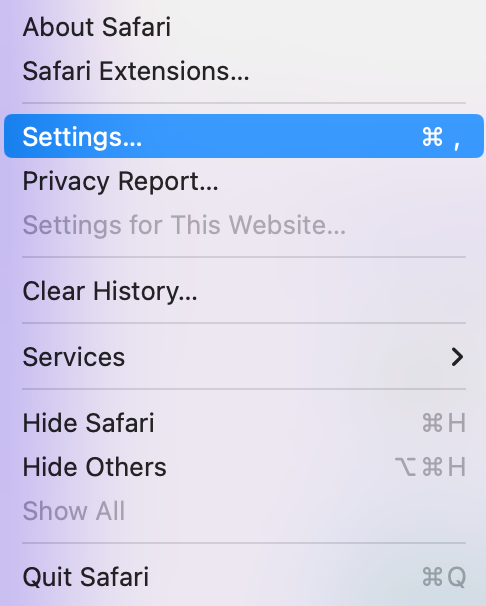
- Now, click on the Extensions option on the menu bar.
- Next, choose the Extension you want to remove and select Uninstall.
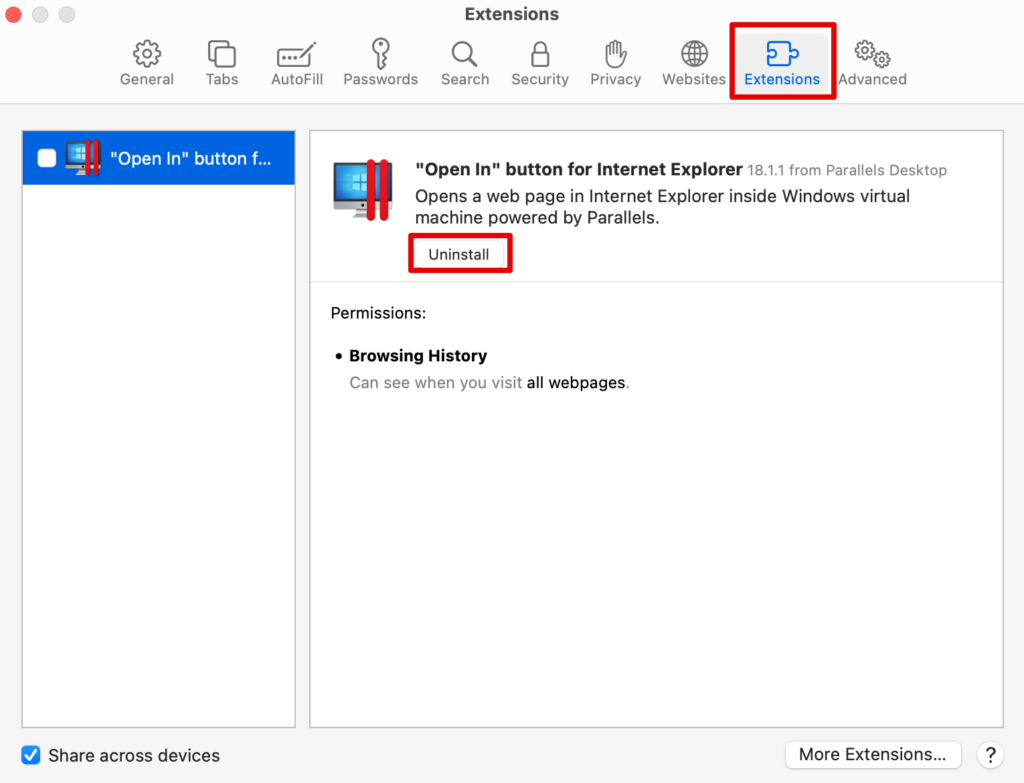
You can keep doing this for all the extensions you do not want to keep and uninstall them from your browser. This will eventually speed up the performance of Safari.
Have you been currently using too many tabs on your Safari browser? Well, this could be one of the biggest reasons your Safari browser has slowed down or even glitched overall. The best way to go from here is simply close some tabs and give your browser a breather.
If that does not work, you might have to close the browser and restart the system. For this, simply right-click the Safari icon in the dock below. Press Quit and the browser will close with all its tabs.
Before trying out any other solution, it is best to check your internet connection and ensure it works properly. Your network issues might be causing the website and other downloads to slow down.
Ensure your router is properly connected or your MacBook receives a proper internet connection. For this, you can check your internet speed through multiple sites on the web. If everything looks fine, you can try the other methods listed below.
You might need to clear some storage space on your Mac . Some apps fail to function because your system does not have enough space to run the in-built apps such as Safari.
For this, you can check the current status of your storage on Mac and determine how you can make space for the system apps to run smoothly.
- Go to the Apple menu and choose System Settings .
- Scroll down to open General and then choose Storage.
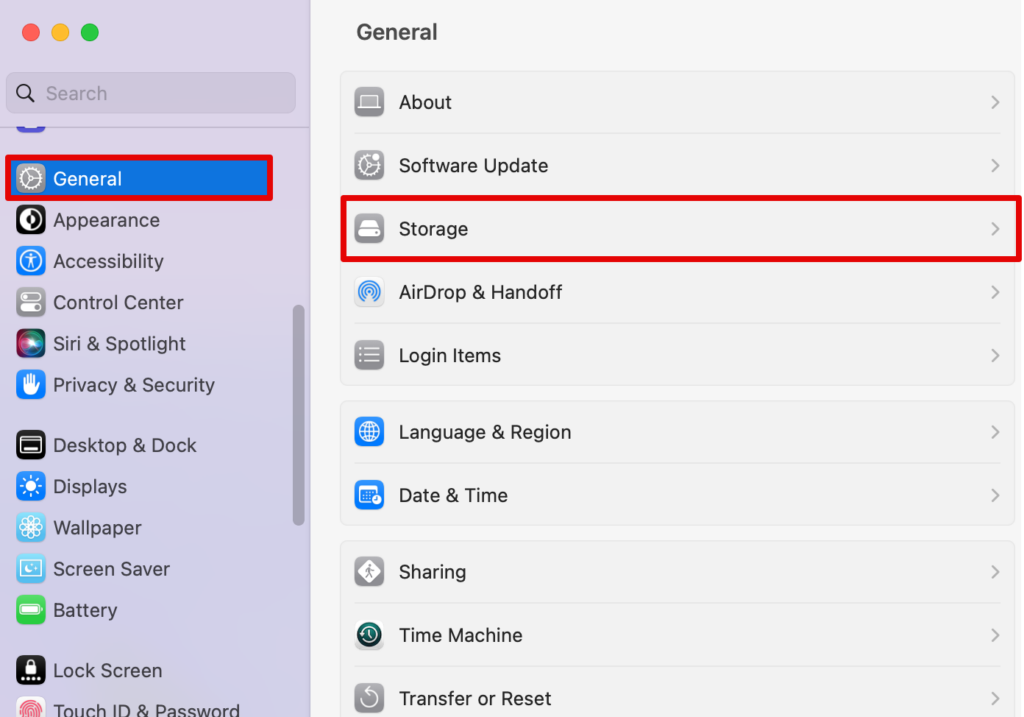
Here, you can check all the sections that have taken up the maximum space and then delete some of the files.
The last resort here is to contact Apple support for some guidance. Although you can also check for some hardware issues, it is best to speak to an executive from Apple support.
Simply visit the official Apple website and connect to an online executive where you can present your issues and try their suggested fixes.
Check our article on How to Add More Storage to MacBook’s?
You can start by updating the macOS, which will, in turn, update the Safari app as well. Moreever, you can also clear caches and cookies to help bring the safari to speed.
Safari is known to be faster on Apple devices such as your MacBook. At the same time, Google Chrome performs the best on all devices, including your smartphones. However, it depends largely on the operating system and the device’s hardware.
The fastest browser for Apple is indeed Safari. It is built for macOS and iOS devices, providing an optimized browsing experience.
The fixes to a slow-running Safari are simple. Clearing your cache, updating the app or your macOS, closing unwanted tabs, and clearing storage space are all excellent ways of ensuring your Apple search engine runs perfectly.
If these do not work, you can check your internet connection and close the tabs you are working on. The more tabs you have opened, the slower it will work. Similarly, there are other methods too that are tried and tested to fix Safari issues, and you can try them as well before contacting Apple Support.
Kanika Modi
Kanika is a Tech Enthusiast who is looking to add meaning to what people read. She has been writing on Apple devices and products for 7 years now and continues to share the solution to your everyday issues with everything technology.
Recent Posts
How to Run Internet Explorer On A Mac
Switching from a PC to Mac means that, apart from shifting from WindowsOS to macOS, you have to get used to a number of new applications. A Windows staple, Internet Explorer, now Microsoft Edge, is...
How to Mirror iPhone to MacBook Pro
Mirroring your iPhone to a MacBook Pro is a handy task you might find essential for presentations, media sharing, or simply managing your content. Thankfully, this connection isn't elusive; it can be...

10 Fixes When Safari Running Slow on Your Mac
How to fix this annoying problem
Apple touts Safari as the fastest browser out there, which may be true on iOS, but I regularly use Chrome on my Mac because Safari is just too slow. Sometimes a webpage won’t load or I won’t be able to navigate back and forth between pages or I can’t scroll without lagging.
It’s extremely frustrating considering Safari comes included with OS X and you expect it to just work. When it does, it’s a great browser, but when it doesn’t, you literally have to switch to a new browser.
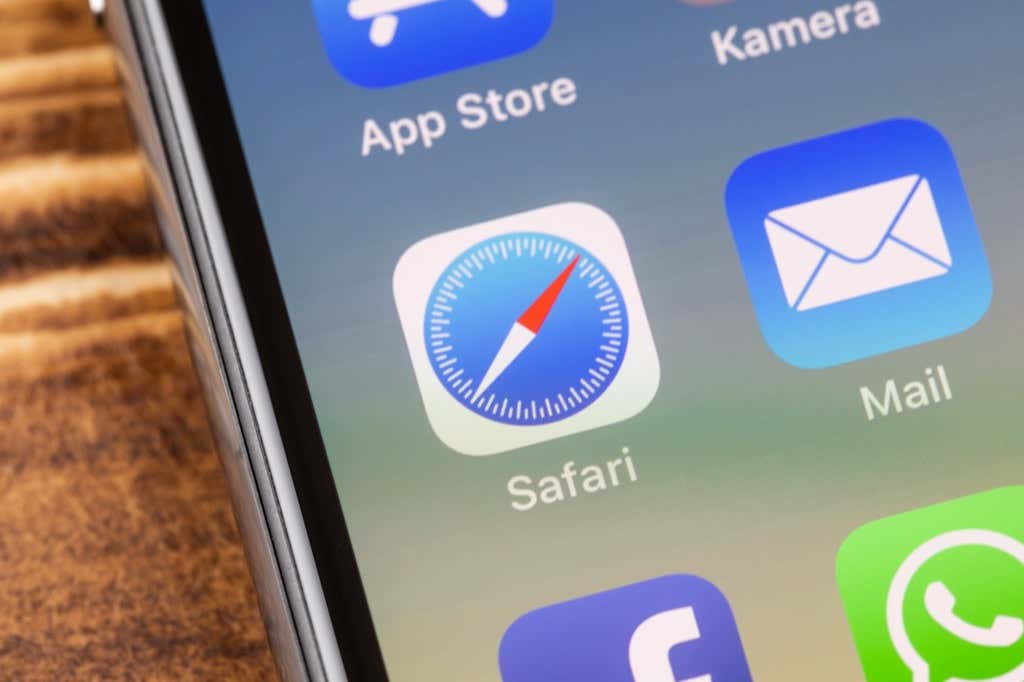
In this article, I’ll mention all possible ways you can go about trying to speed up Safari on your Mac. If you have your own suggestions, feel free to let us know in the comments.
Also, be sure to check out our YouTube video where we cover a couple of other possible reasons for slow Internet that may have nothing to do with Safari:

Method 1 – Cache, History, Extensions
If you’re a heavy web user and you don’t have a lot of space left on your Mac, it might be worth emptying the cache, disabling extensions, and clearing up the history to ease the load on Safari. In order to do this, you first have to go to Safari and then Preferences .
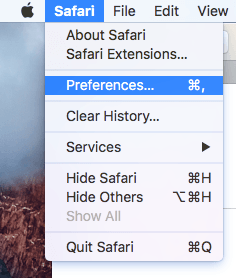
Click on the Advanced tab and then check the Show Develop menu in menu bar box at the bottom of the dialog.
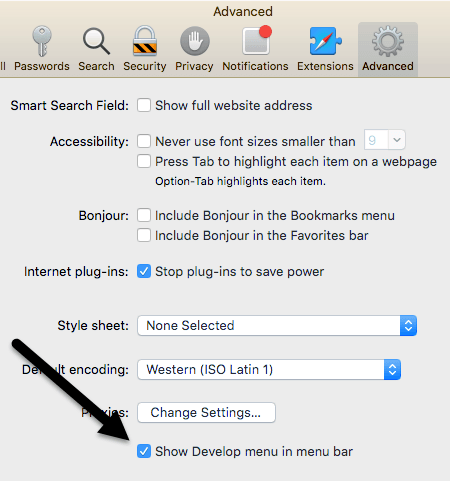
Exit the Preferences dialog and click on Develop in the Safari menu. Go ahead and click on Empty Caches . Once the cache is empty, click again on Develop and choose Disable Extensions .
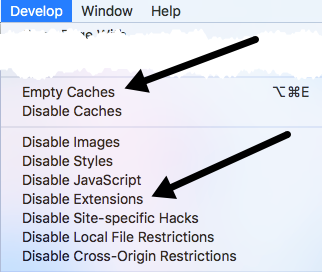
Finally, click on Safari and instead of Preferences like we chose above, click on Clear History .
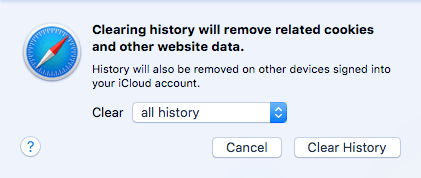
In the drop-down box, make sure to choose all history and then click the Clear History button.
Method 2 – Manually Clear Cache.DB File
The above steps should clear the cache in Safari, but if something is not working properly, it may not do so properly. In this case, you can manually do it. Open Finder, then click on Go and Go To Folder at the bottom.
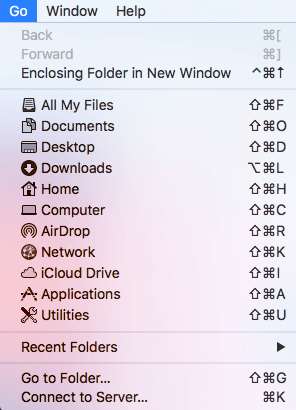
Now copy and paste the following path into the text box and click Go .

Finally, right-click on the Cache.db file and choose Move to Trash . Make sure Safari is closed when you are doing this step.
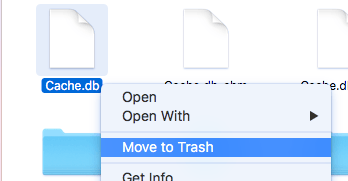
Method 3 – Install Latest OS X Version
I’ve noticed that quite a few people who purchase Macs simply do not update their systems to the latest version of OS X. Even though we are on El Capitan right now, I have friends running on Mountain Lion, Mavericks, Yosemite, and even Snow Leopard!
If you don’t update OS X, you won’t get the latest version of Safari either. This means you could be stuck several versions behind and will be missing out on all the improvements and optimizations of the newest version.
The simplest way to upgrade is to go to the App Store and click on the link for the latest version of OS X, which is usually on the right-hand side.
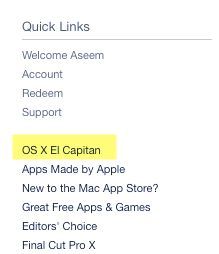
Method 4 – Turn Dashboard Off
If you’re still using an older Mac (2010 or earlier), you might have a graphics card issue. You can try something simple to see if it helps in Safari. I’m talking about disabling the Dashboard feature in Mission Control.
To do this, open System Preferences and then click on Mission Control. In the drop-down next to Dashboard , select Off .
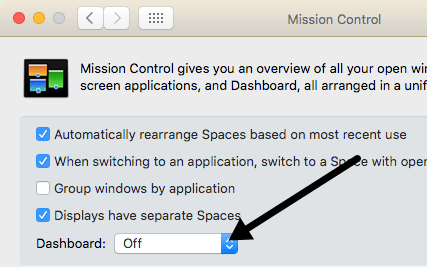
This is not some surefire fix, but it has worked for some people, including myself. I have a Mid-2009 MacBook Pro and the dashboard was definitely slowing things down.
Method 5 – Change Search Settings
Another thing you can try is to change the search settings in Safari. Open Preferences in Safari and then click on the Search tab.

Try changing the search engine to Bing, restarting Safari, and see if there is any difference in the speed. Change it back to Google and then check again. You can also try unchecking all the options like search engine suggestions, Safari suggestions, a quick website search, preload top hit, etc. to see if that makes a difference.
Sometimes on a very slow Internet connection, all of these extra features may cause Safari to be even slower.
Method 6 – Change Network Service Order
If you have a machine that is connected to both WiFi and Ethernet, your issue could be caused by being connected to the network in two different ways. To see your connections, go to System Preferences and then click on Network .
You could try disconnecting one network source and seeing if that makes a difference or not. Switch to only the other one and test too. If you want to keep both connected, read on.
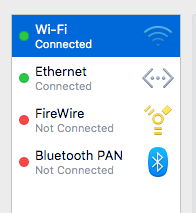
By default, one connection will get priority over the other. As you can see above, my WiFi connection was getting higher priority than the Ethernet connection. You can change this by clicking on the little settings icon (gear) at the bottom of the list box.
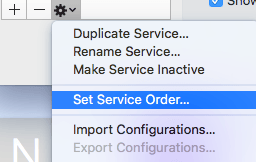
Click on Set Service Order and another popup will appear where you can reorder the connections by dragging and dropping.
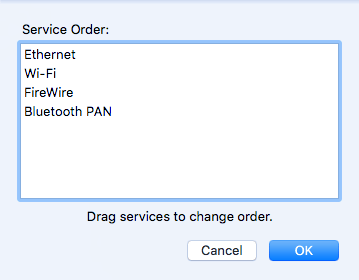
I moved Ethernet to the top and then clicked OK. After that, make sure you click Apply to on the System Preferences dialog.
Method 7 – Delete Preferences File
This probably won’t make much of a difference, but it’s worth a shot. Go to Finder , click on Go and then Go to Folder . Type in the following path:
Scroll down the list till you see com.apple.Safari.plist and delete that file.
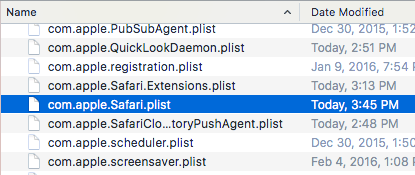
Method 8 – Use Different DNS Settings
Sometimes it may not be Safari causing the issue, but your DNS settings. By default, you’ll be using the DNS provided by your ISP, which is fine most of the time. However, using a public DNS might result in faster browsing.

My favorite is Google Public DNS, which I use on all my computers. Check out my article on the best public DNS servers you can use for free. To change the DNS server for your connection on OS X, you need to open System Preferences , click on Network , select the connection and then click on Advanced .

Go ahead and click on the little + icon and then type in the IP addresses of the new DNS servers. Using Google has sped up my browsing not only in Safari, but also in other browsers.
Method 9 – Log Into Another Account
Sometimes the problem is with the user account you are currently using. It’s worth creating another user account (takes 1 min), logging into that account, and then running Safari. If it’s suddenly faster, then there is a problem with your user account. You can try to fix the problem by using Disk Utility. You can go to Spotlight and type in Disk Utility to open the dialog quickly.

Click on your hard drive in the left-hand pane and then click on the First Aid tab. You’ll be asked if you want to run First Aid on your hard drive, so click Run .

Method 10 – Reinstall OS X
This may sound a little extreme, but it’s kind of similar to how you have to reinstall Windows every year or so because it becomes so bloated. Unfortunately, OS X suffers from some of the same issues, especially if you have always kept upgrading to the latest version of OS X without doing a clean install.
I upgraded from Mountain Lion to Mavericks to Yosemite to El Capitan before doing a fresh install of El Capitan, which made things significantly faster. It’s definitely worth a shot because it also made every other app load a lot faster too.
Those are about all the possible solutions I could find to fix a slow Safari problem. If you have any other suggestions, feel free to let us know in the comments. Enjoy!
Founder of Online Tech Tips and managing editor. He began blogging in 2007 and quit his job in 2010 to blog full-time. He has over 15 years of industry experience in IT and holds several technical certifications. Read Aseem's Full Bio
Read More Posts:

Leave a Reply
Your email address will not be published. Required fields are marked *

Why Is Safari So Slow? (5 Reason & What To Do)
Safari is one of the best Internet browsers that is currently available, and it’s known for its reliability. However, that doesn’t mean that it always runs smoothly. So, why is Safari so slow?
If Safari is so slow that it barely runs, close as many tabs and background apps as you can. Disable Safari extensions and clear the history and cache to remove corrupted data so it runs faster. Make sure that at least 15% of your Mac or iPhone’s storage space is open because full storage can slow down Safari’s performance.
Switch users on your Mac to see if Safari still runs slowly. It may simply be a problem with your user account having too much data. Follow along as we explore why Safari is so slow and see how you can fix it.
Table of Contents
Why Is Safari So Slow on Mac?
Poor wi-fi connection.
Your Wi-Fi connection is the first thing you should check if Safari is so slow on Mac that you can’t search anything. Safari will be slow even if you have Wi-Fi but the connection is weak. If your Wi-Fi keeps going in and out, simply unplug the router and modem for 30 seconds and plug them back in to reset them .
Contact your Internet service provider or switch to cellular data if the problem continues.

Corrupted Cache
Safari will run slow on your Mac if the cache is bloated and corrupted. Safari takes on plenty of data each day you use it, and some of it may be corrupted. Whether you have corrupted data or have simply gone years without clearing the cache, Safari will continue to run so slowly if you don’t clear it.
Once the Safari cache is full, the browser won’t be able to add and process new website information properly. Luckily, you can quickly clear the cache data on Safari under the History tab. Click the history tab to pull up the drop-down menu, then select Clear History and Clear Data.
Ideally, you should clear the cache on Safari once per month to ensure a smooth performance .
Safari is Outdated
If Safari is so slow that it’s a chore to browse, then it may be because the browser is outdated and needs an update. Apple typically releases updates for Safari up to 6 times per year . Safari updates are lumped in with the standard macOS updates that introduce and refine features on your Mac.
To install the latest macOS update, click the Apple icon on your Mac’s menu bar. Scroll down, select “System Settings”, and choose “System Update”. Make sure there is enough space on your Mac to install the update. This should improve your Mac’s performance and Safari’s performance speed.
User Account Error
Do you have multiple user accounts on your Mac? If so, you may want to check to see if Safari is so slow on the other users’ accounts. Much like how Safari’s cache can become corrupted, a specific user’s account on a Mac can become corrupted as well.
This happens over time when you browse Safari extensively and install extensions and apps that aren’t approved by Apple . Use another account to see if Safari runs smoothly. If so, return to the original user page with the slow Safari speed and open the Spotlight app.
Click the Disk Utility tab at the top of the page, scroll down, and select “First Aid”. Next, click “Repair Disk” and wait for your Mac to perform the repair. This should get rid of corrupted data and patch the user account so Safari won’t run as slowly.
Extension Problems
Do you run Safari extensions on your Mac? If so, that could explain why Safari is slow, especially if the extensions aren’t optimized for a Mac . It’s hard to tell which extensions cause the problem unless you use an external app like CleanMyMac X and OS Mac Cleaner .
You can use these apps to cycle through apps and extensions to find out which ones are problematic. Refer to the information on the program to see which extension is causing the problem and delete it right away to boost Safari’s performance.
Too Many Open Tabs
Sure, Safari lets you open up to 500 tabs, but that doesn’t mean you should . The more tabs you leave open, the slower Safari will run on your Mac. Ideally, you should only leave a few tabs open at once if Safari is so slow that it’s hard to browse.
The advertisements and background activity from the tabs you leave open will slow down Safari’s performance. Close any tabs you are done with and continue to browse.
Excessive Background Activity
Just like how too many open tabs will slow down Safari, excessive background app activity can cause problems as well. Macs and iPhones must work extra hard to keep up with the processing demands when there is too much background activity. Close apps that you aren’t currently using so the processor can focus on Safari tabs and apps that you must use .
Search Suggestions Lag
The search suggestions Safari feature is useful when browsing the web, but it can also cause lags in some cases. If Safari runs slowly when search suggestions appear, you must disable the feature. Open Safari, click Settings, select Search , and tap the box beside “Include search engine suggestions” to disable the feature .
Low Storage
Whether it’s an iPhone, Mac, or MacBook, Apple devices cannot perform at their full capacity when the storage is too low. You should leave up to 15% of your Mac or iPhone’s storage open at all times to ensure quick operating performance and Safari speed . Remove apps that you don’t use often and delete old messages and pictures to free up as much space as possible.
So, Why Is Safari Running Slow?
Close as many tabs as possible and clear the cache and browser history if Safari is too slow. Disable extensions that aren’t approved by Apple and install the most recent macOS update to increase Safari’s speed. It also helps to close background apps and disable search suggestions if Safari is so slow that you can’t browse the web.
David Miller is a seasoned tech aficionado with a profound expertise in NGINX and Ubuntu. With a career spanning over a decade, David has honed his skills in optimizing web servers and enhancing server performance to perfection. His deep-rooted passion for open-source technologies has led him to become a go-to resource in the field. Whether it’s crafting intricate NGINX configurations or troubleshooting complex Ubuntu server issues, David’s problem-solving prowess shines through.

How to Troubleshoot Safari if It’s Running Slow on Mac
This article shows how you can fix the Safari browser if it is slow on your Mac. The purpose is to help speed up Apple’s Safari or determine why it is running slow. If you are experiencing one of the following issues, you can use this article to address your problem:
- Safari is so slow and seems frozen.
- Websites are taking a lot of time to load or videos are lagging.
- A spinning beach ball frequently keeps appearing when attempting to browse the Web.
- Clicking the Safari options (history, bookmarks, etc) temporarily causes Safari to freeze or become sluggish.
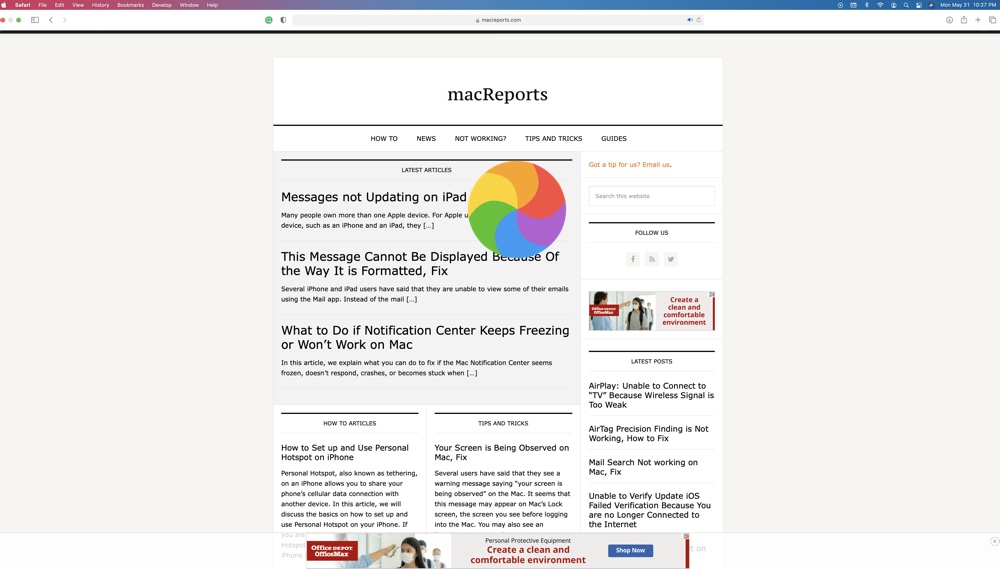
There could be many reasons why you experience this issue. Follow the steps below:
1. Is the Mac up to date?
Ensure that your Mac is running the latest versions of the macOS version . Safari is a built-in app and the macOS software includes Safari. This means that updating macOS will also update Safari. You can go to System Preferences > Software Update to check for updates. And if there is an update, click the Update Now button to update your Mac.
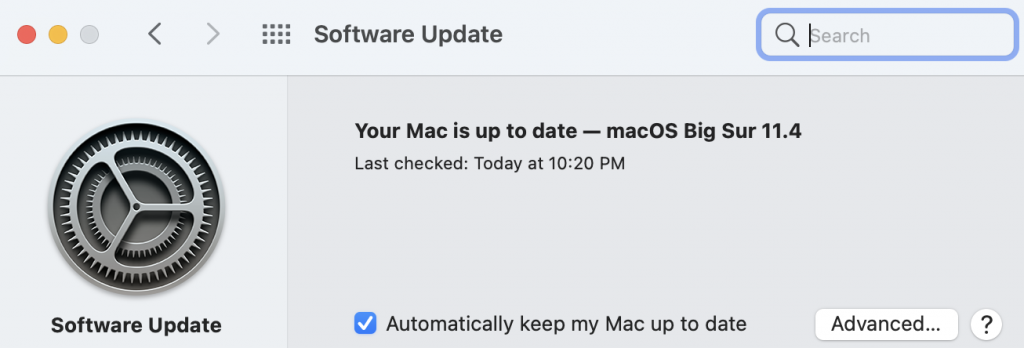
2. Is it your Internet connection?
You may feel that Safari is sluggish because you may have a poor or unstable connection to the Internet. Use another browser (Chrome, Firefox, etc) to visit a website. Or try using multiple devices in your home. Do you still experience that your browsing experience is slow? If your answer is yes, then the problem may be your connection. Is the slowness just with one website or with all of the websites you try to visit? If the problem is with just one website, then the problem is that website. However, if all of the websites appear to be slow on all devices and/or using different browsers, the problem may be, again, your connection. If this is the case, try:
- Ensure that your Mac has the latest version of macOS (System Preferences > Software Update).
- Turn off your Mac (Apple menu > Shut Down), do not turn it on yet.
- Restart your modem/router. Simply unplug it from power, wait 30 seconds and then plug it back in.
- Wait for your modem/router to fully function (ensure that all of the indicator lights are on).
- Turn on your Mac by pressing the power button.
- Mac Wi-Fi Connected But No Internet Access
- My Mac Stopped Seeing My Wi-Fi Network, Fix
- How To Forget Wi-Fi Networks On Mac
- How To Fix Slow Wi-Fi Problems On Your Macbook
- How To Reset Network Settings On Mac
3. Too much cache? Clear your cache on Safari on your Mac
As you use Safari to visit websites, cache data will accumulate and this can possibly slow the browser down. Clearing the cache on your Safari browser will ensure that it’s working smoothly and efficiently. The Safari cache is a pile of temporary website data. Here is how you can clear cache in Safari on your Mac:
- Open Safari.
- Click Safari > Preferences.
- Click the Advanced tab.
- Check the box next to the “Show Develop menu in menu bar” option. Now a new menu item called Develop will appear.
- Now exit Preferences.
- Click Develop and Empty Caches.
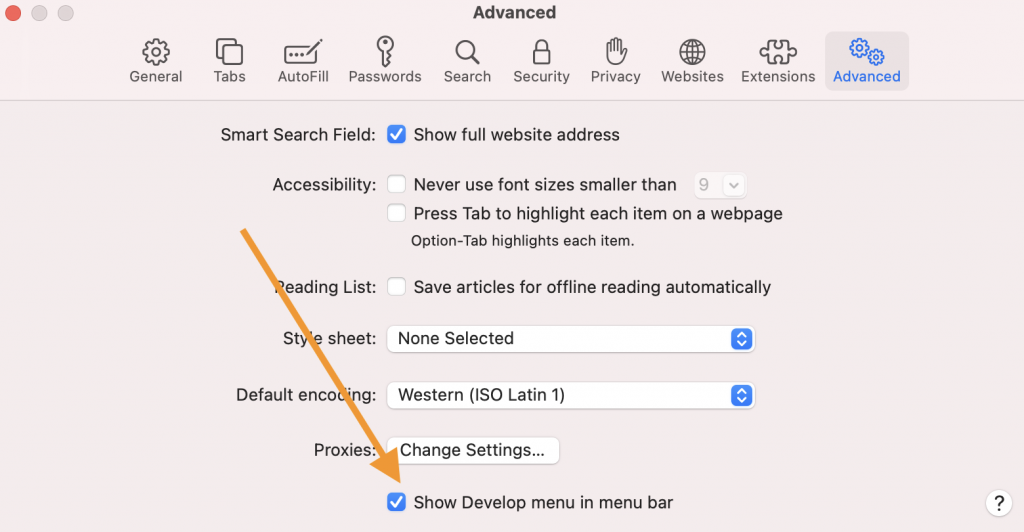
4. Are your extensions causing this?
An extension or add-on may cause this problem. Do you have these installed? If your answer is yes, try the following:
We can turn off Safari Extensions temporarily to see if they are causing this:
- In Safari, click Safari > Preferences.
- Click Extensions.
- You will see your installed extensions.
- Turn all them off by deselecting the checkboxes.
Now check Safari. Is it faster now? If turning off extensions resolves the issue, now determine the problematic extension that is causing this issue. Turn them back on, one by one, until you find the problematic extension. After each extension, you turn it on, test to see if the problem has recurred before turning on the next extension.
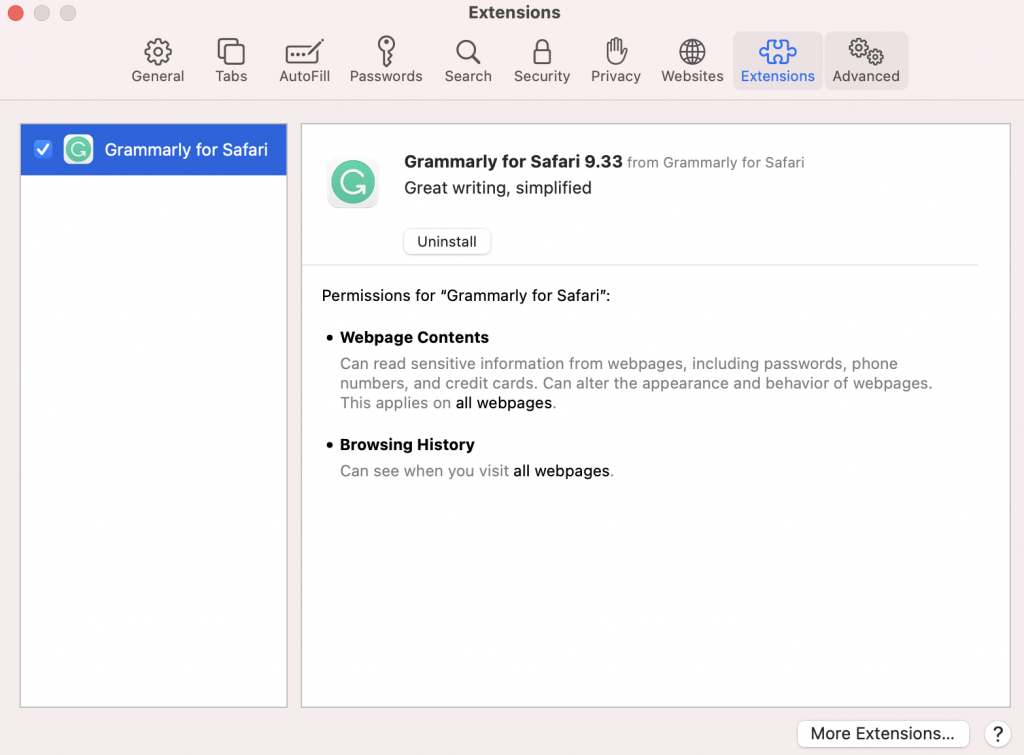
5. Safe Mode
Restart your Mac in Safe Mode . Safe Mode will clear some system caches. This can improve Safari’s performance. The steps will differ depending on the Mac type you have: Apple silicon or Intel. If you do not know, go to the Apple menu > About this Mac.
Apple silicon:
- Turn off your Mac.
- Press and hold the power button until the startup options window appears.
- Click your startup disk.
- Press and hold the Shift key and click “Continue in Safe Mode.”
- Turn on your Mac and quickly press and hold the Shift key.
- Release the Shift key when you see the login window.
Your Mac is in Safe Mode . Test Safari. Then exit Safari (just restart your Mac). Then test Safari again.
- Passwords on Safari: The Spinning Wheel – How to Fix the Lag
- How to Use Split View in Safari on iPad
- How to Create, View, Edit, and Restore Bookmarks in Safari on Mac
- Safari Can’t Open The Page Because Safari Can’t Establish A Secure Connection To The Server, Fix
- Quit Safari Is Grayed Out On Mac, Fix
- Is Safari Not Working on Mac? How You Can Fix It
- Safari Isn’t Responding, Keeps Crashing or Freezing, Fix
- Safari Won’t Open On Mac, Fix
Dr. Serhat Kurt worked as a Senior Technology Director specializing in Apple solutions for small and medium-sized educational institutions. He holds a doctoral degree (or doctorate) from the University of Illinois at Urbana / Champaign and a master’s degree from Purdue University. He is a former faculty member. Here is his LinkedIn profile and Google Scholar profile . Email Serhat Kurt .
Similar Posts
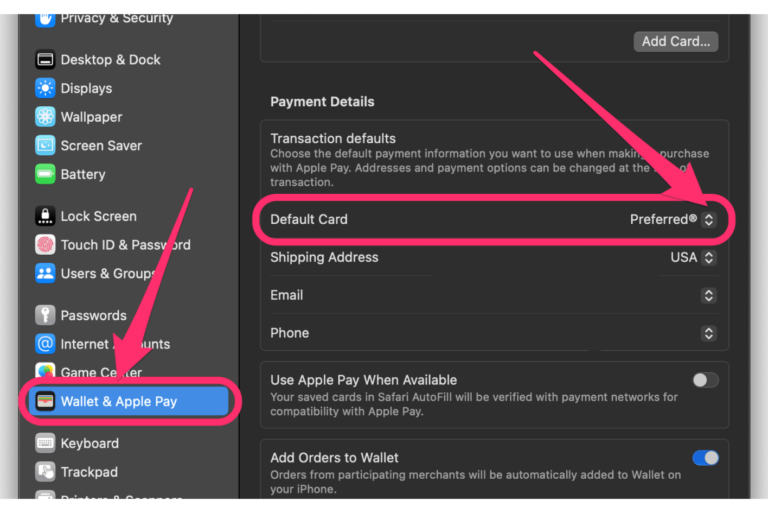
How to Change the Default Apple Pay Card on Mac
Many people love the convenience of Apple Pay on their iPhone and even on their Apple Watch. Even though you can’t use Apple Pay on your Mac when you’re at the grocery store,…
How To Use Spotlight On Your Mac
Spotlight lets you find apps, documents, and other files and folders on your Mac. In fact, with Spotlight, you can search your Mac for anything. It is probably one of the most frequently…
iPhone Screen Not Rotating? Fix
This article explains what you can do when your iPhone screen does not rotate. Your iPhone’s screen has two screen orientation (as you can see the image below): Landscape mode Portrait mode When…
How To Check Your MacBook Battery Health In macOS
Depending on your Macbook model (Macbook, Macbook Air, Macbook Pro, etc) and its battery health, your Mac battery will last several hours; and the average life of a battery can vary a lot….
Activity Monitor: What It Is & How To Use It (Task Manager)
Activity Monitor is the macOS version of the task manager that is found in all versions of Microsoft Windows computers. Activity Monitor shows a variety of processes in use, in real-time. So that you…
How To Upgrade & Downgrade or Cancel Your iCloud Storage Plan
Apple offers 5GB of free storage to iCloud users. You will get this storage as long as you have an Apple ID. If you have multiple Apple devices that are associated with the…
Leave a Reply Cancel reply
Your email address will not be published. Required fields are marked *
Categories:
Trending Story: Messages App Tips & Tricks | Spring Wallpapers | Easter Wallpapers | iOS 17.4 New Emojis
19 Fixes Safari Running Slow on Mac (Ventura, Sonoma)
In the article, Get Fixes on Why Does Safari Take So Long to Open on Mac after macOS Update? Apple user has one of the best web browsers, Safari. However, more users of Google Chrome are available in the market compared to Apple’s Safari. So, without losing privacy, let’s fix your Browser problem using the unique solutions below and Quickly load all types of web pages (Such as Facebook, Udemy, Linkedin, Twitter, ESPN, and Outlook..) on Safari Browser.
Instead, they should fix Safari complications like Safari running super slow compared to Chrome . Safari won’t open, so Safari won’t load a page , browsers not working after updating safari not loading on MacBook, and more. There is a way to get solutions to all these problems. So let’s start with them to Speed up a slow internet connection on Mac after resetting Safari to Default .
IN THIS ARTICLE
Hopefully, these all feasible solutions will help you to make Safari faster on Mac.
How Do I Fix Slow Safari on My Mac? The Complete Solutions
Get more: Fix Safari Error “Your Connection is Not Private”
- 29 Best Tips for Chrome on iPhone (2024)
- Outlook Search Not Working On Mac Sonoma, Ventura- Fix Quickly
- 11 Best Outlook Add-Ins for Windows & Mac in 2024
- How to Open Outlook in Safe Mode in 3 ways (All Fixed)
is Safari Slow on MacOS? Follow this
several macOS Ventura users reported the issue with the Internet slow on Mac after the latest macOS update. The app adds because of too many privacy features. The main reason is that might be. Follow them one by one and check internet speed on speed test tools like fast.com
Turn off iCloud Private Relay from a network; You will get a huge change in speed based on my experience because Apple’s Proxy server might be slow or down sometimes.
Step 1: Click on Apple Logo on your Mac > Select System Settings.
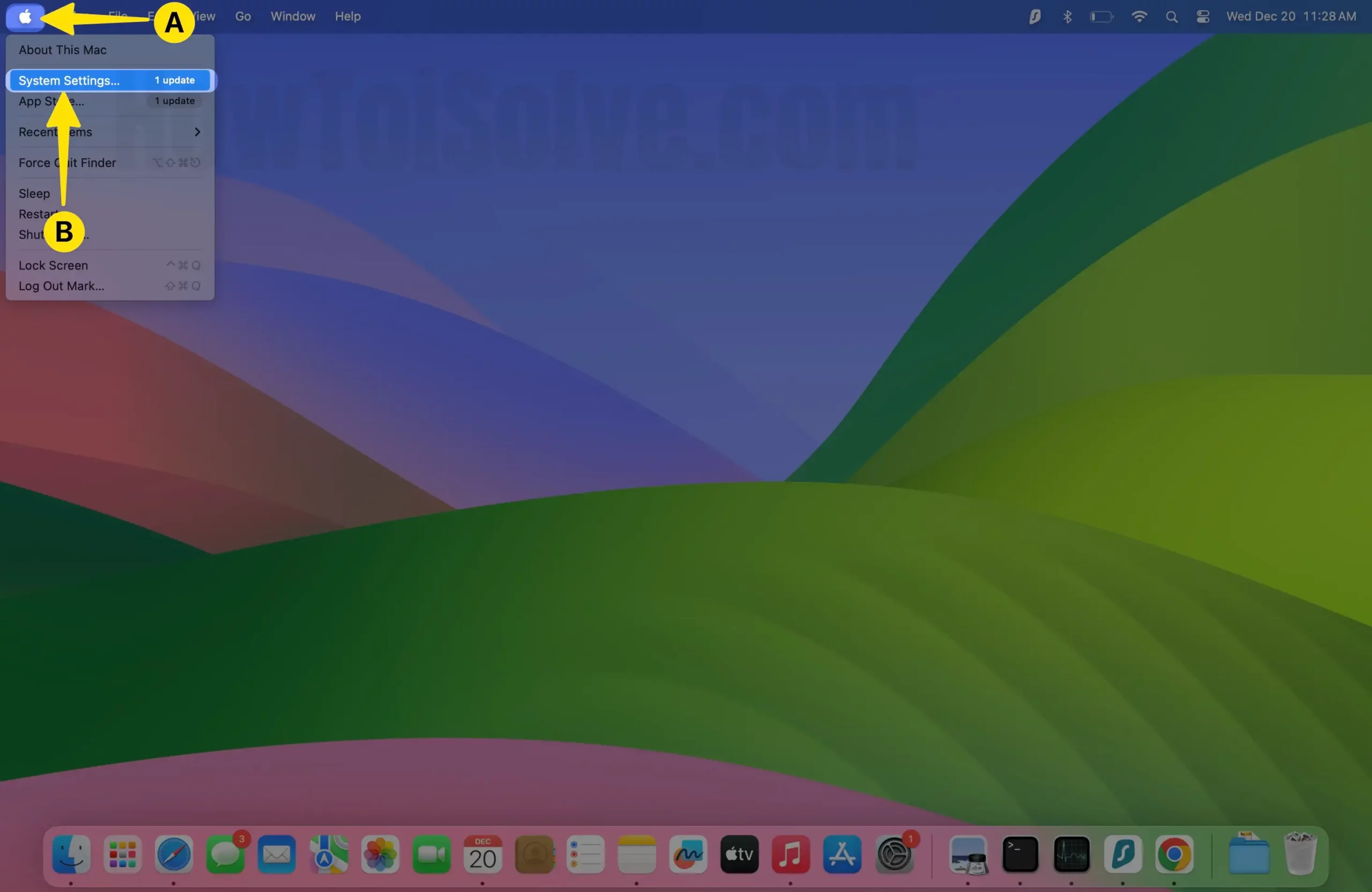
Step 2: Select Networks > Click on Wi-Fi.
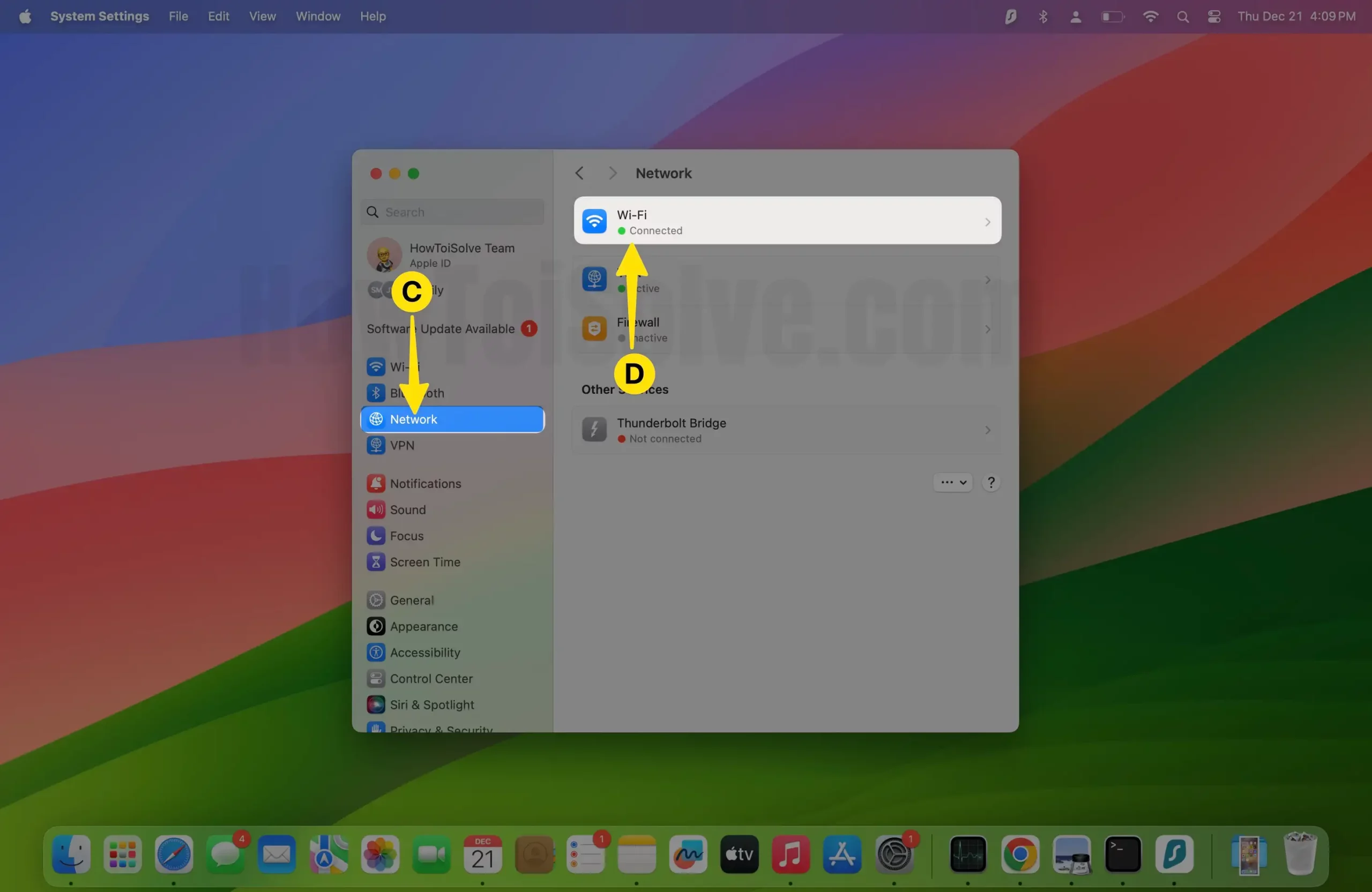
Step 3: Tap on Details next to Connect Wi-Fi.
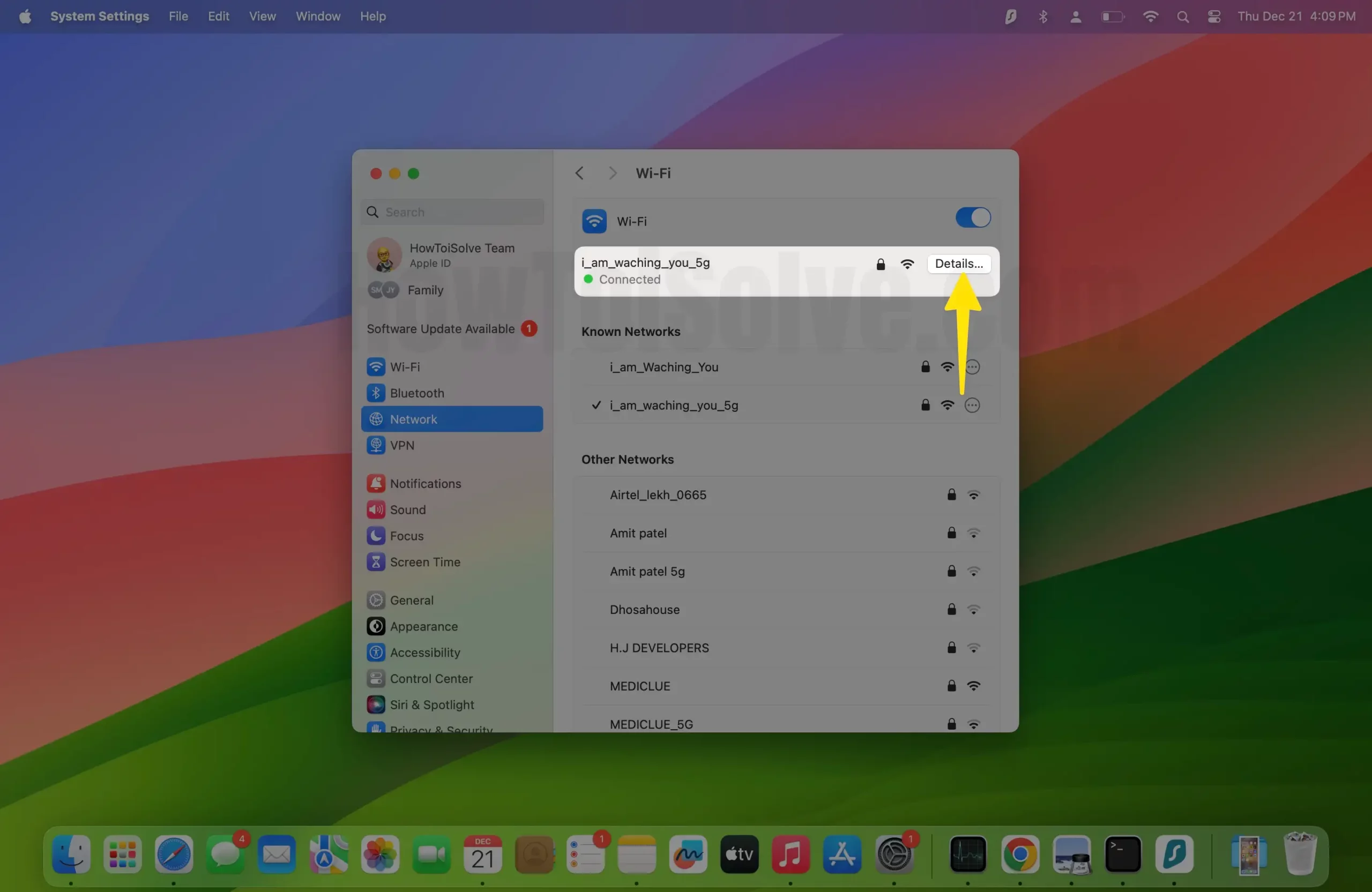
Step 4: Disable Limit IP Address Tracking.
Turn off Hiding IP Address from Trackers and Website in Safari Privacy Preferences.
Step 1: Launch Safari on your Mac.

Step 2: Click on Safari from the Top of the Mac Menu > Select Settings.
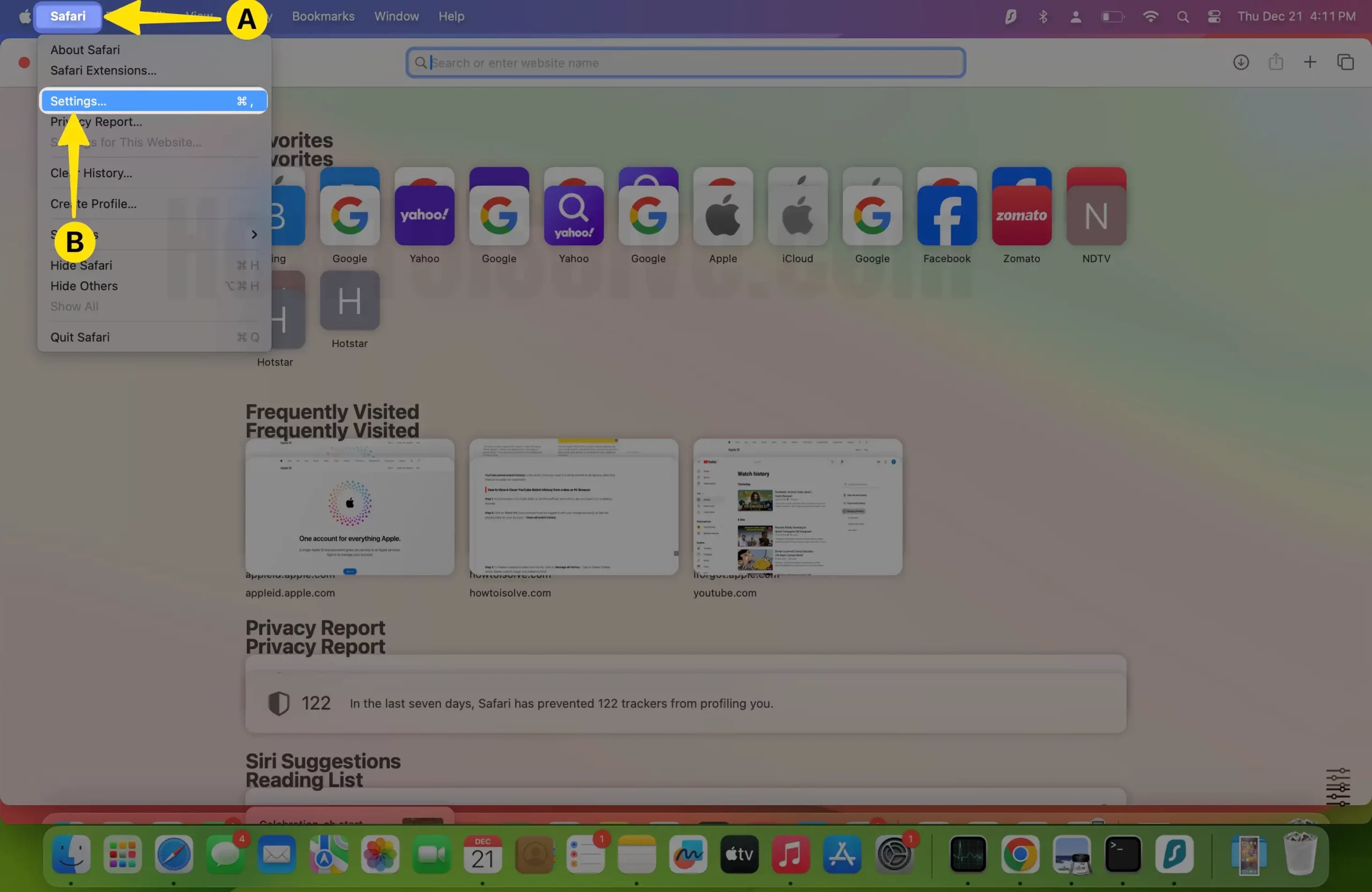
Step 3: Select Privacy Tab > Uncheck Hide IP Address. And That’s it. Get more details on Enable/Disable Hide IP Address on Mac, iPhone, and iPad .
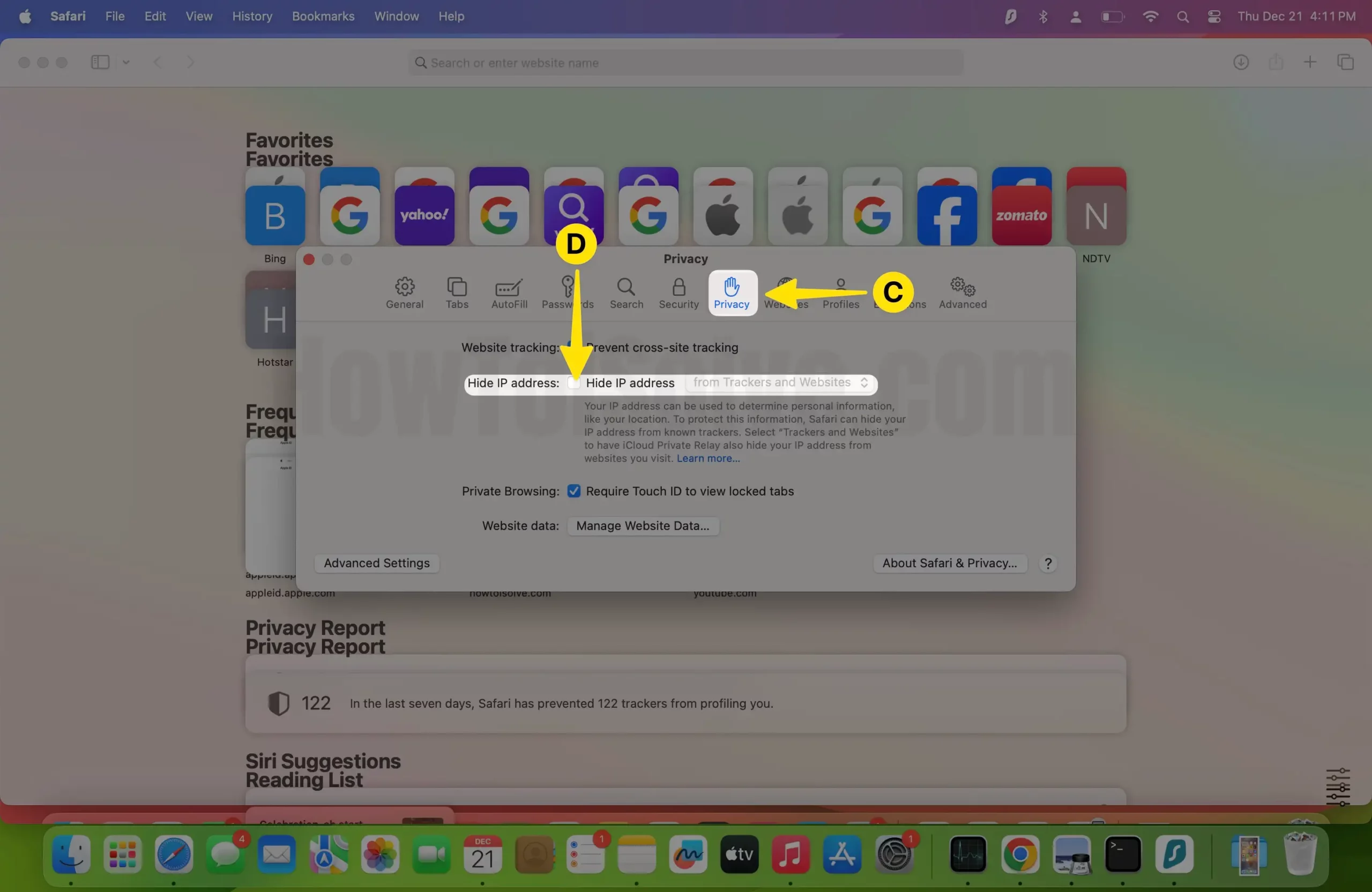
Solution #1. Make Sure the Automatic Proxy Detection is Unchecked
This setting is handy for privacy reasons, but the Proxy server and some configurations might create slow internet problems. Unchecking the Automatic Poxy dictation can help bypass the proxy server, or Mac users can get straight internet connectivity if the Proxy server is unavailable.
On macOS, Ventura, Sonoma,
Step 1: Open the Apple Logo from the top menu > Select System Settings .
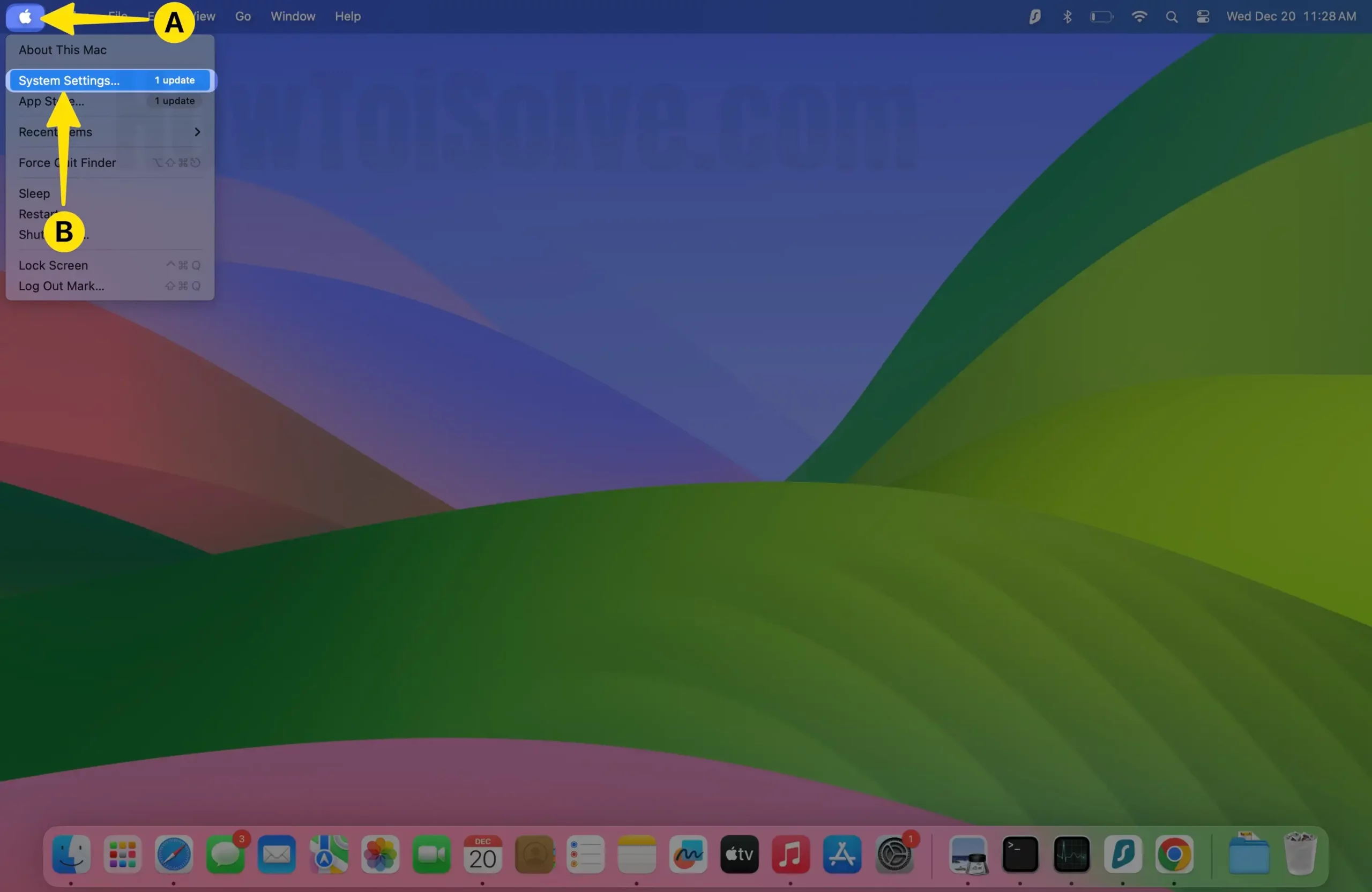
Step 2: Select WiFi from the left sidebar > Click on Details next to Connect WiFi.
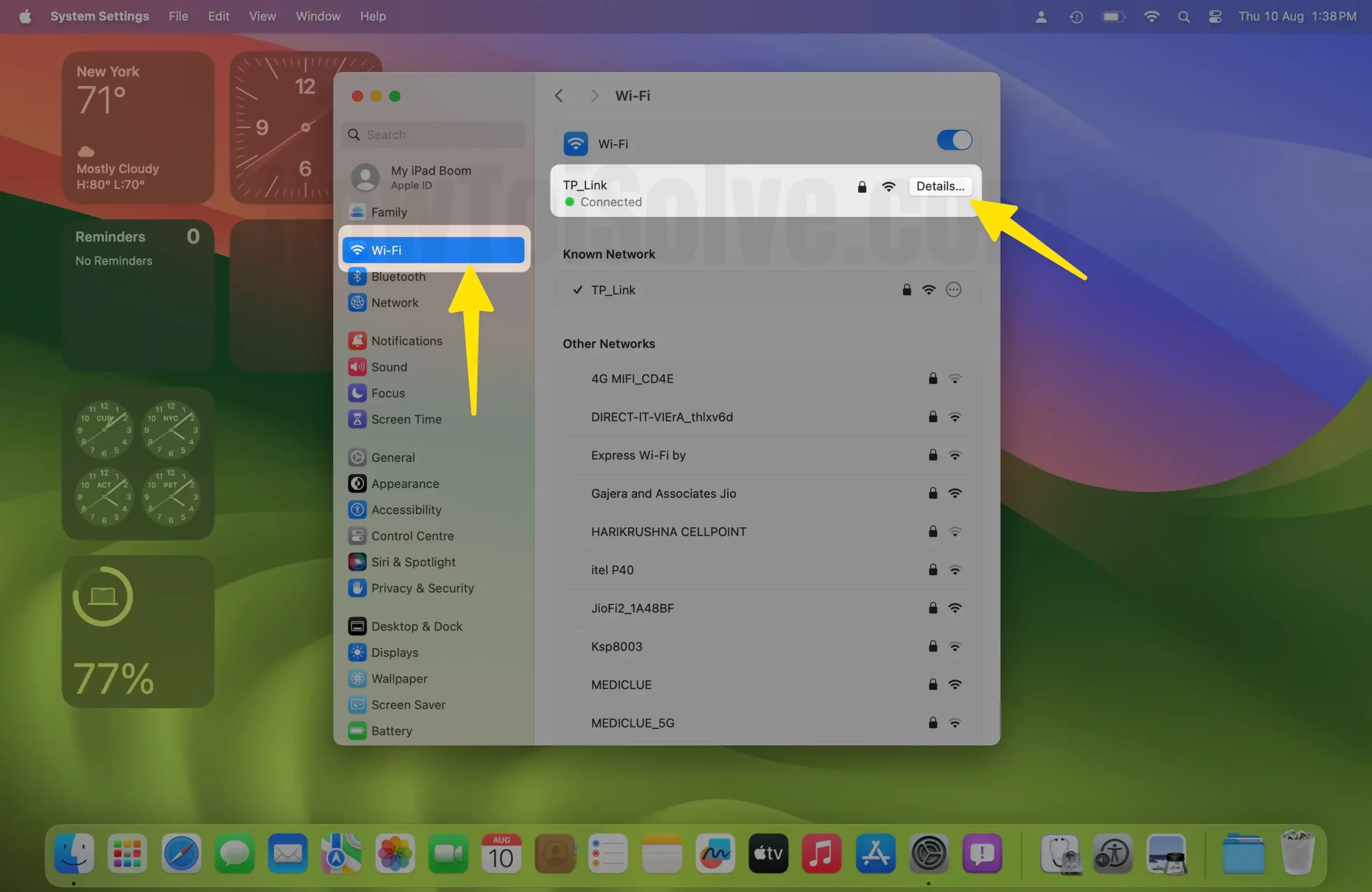
Step 3: Choose Proxies > Disable the toggle Auto Proxy Discovery > Tap OK to Apply the changes.
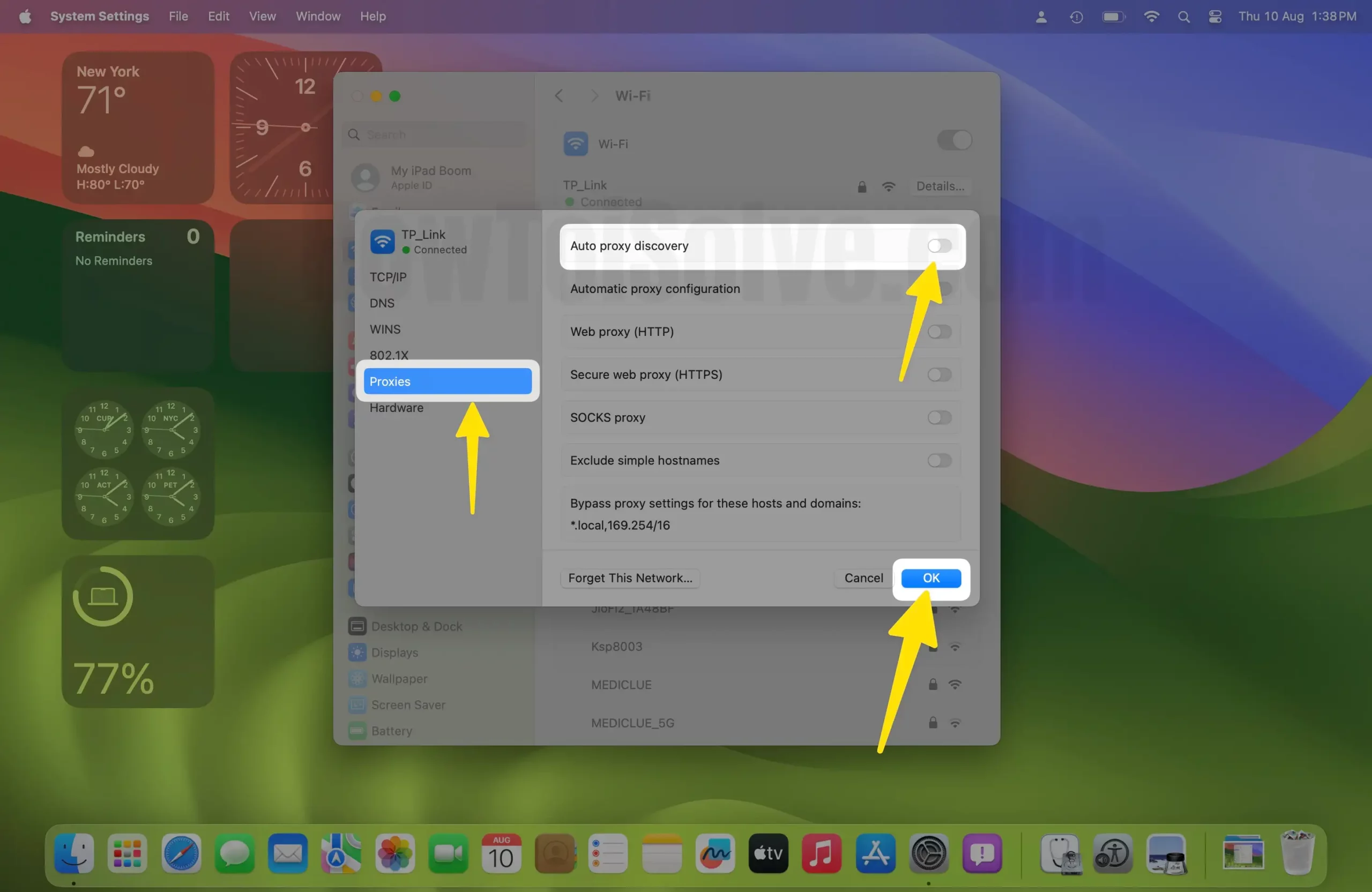
On MacOS Monterey and earlier,
Step 1: Go to Apple Logo (appears on top Menubar) > Choose System Preferences > Select Network > Click on Wi-Fi > Tap Advanced.

Step 2: Select Proxies Tab > Now uncheck automatic proxy detection [Auto Proxy Discovery] > In the last Click on OK .

That’s it. Hopefully, now, your Mac Safari in macOS runs at rocket speed.
Solution #2. Disable Search Suggestions Safari Mac
Search Suggestions improve the user’s experience as you connect with your Apple device. Search Suggestions Use Siri search running across all your Apple devices like iPhone, iPad, Homepod, or Apple Watch . According to your Favorite search, you can also quickly get the exact find on your Mac.
Sometimes this feature is useless; by turning off “Search Suggestions Safari,” as a result, you can get more benefits on a slow Safari or Mac system.
Step 1 : Launch Safari on your Mac > From the Top Mac Menu, Click on Safari > Select Settings/Preferences .
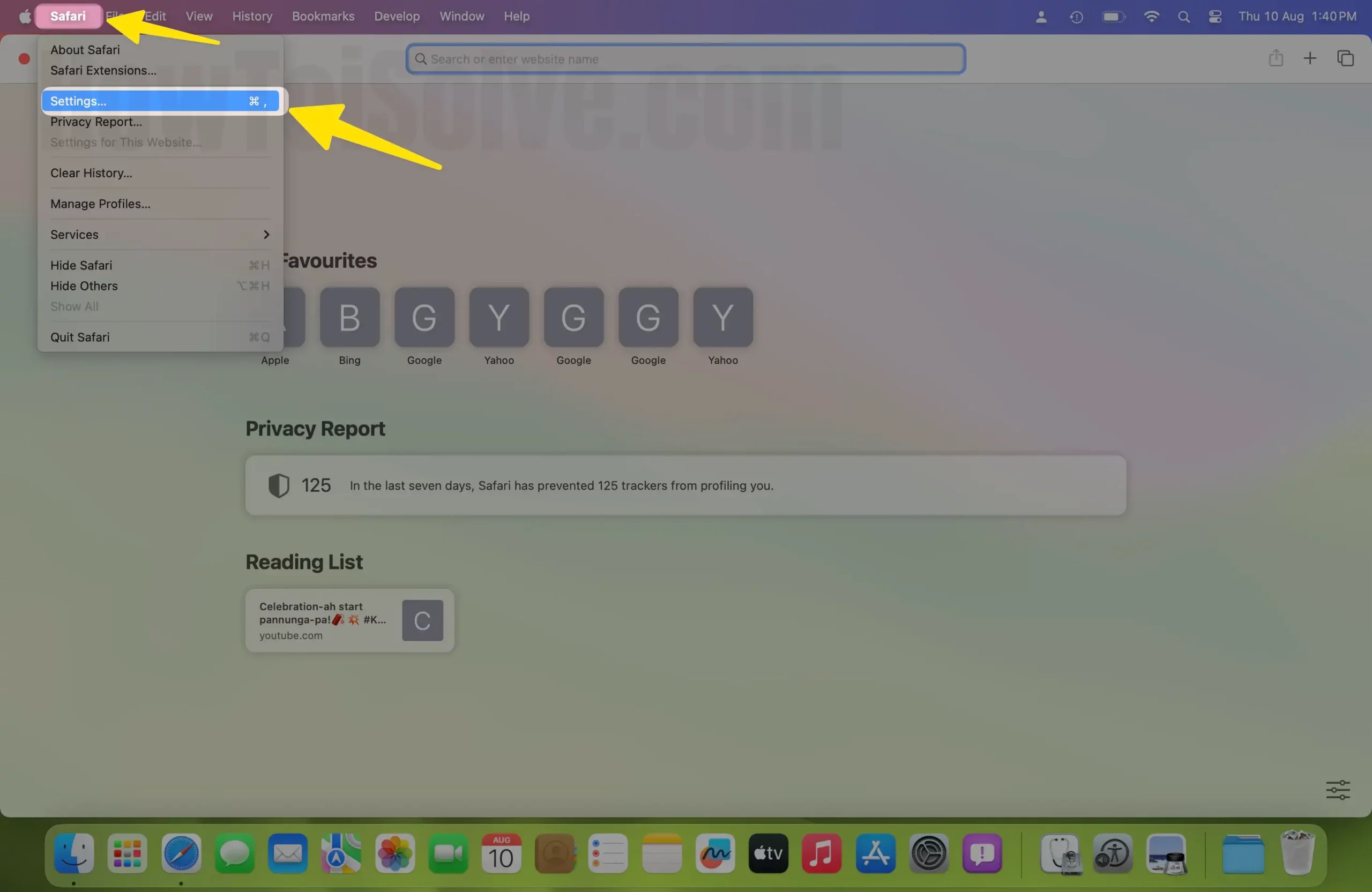
Step 2: Click on Search Tab > Uncheck “Include safari suggestions “.
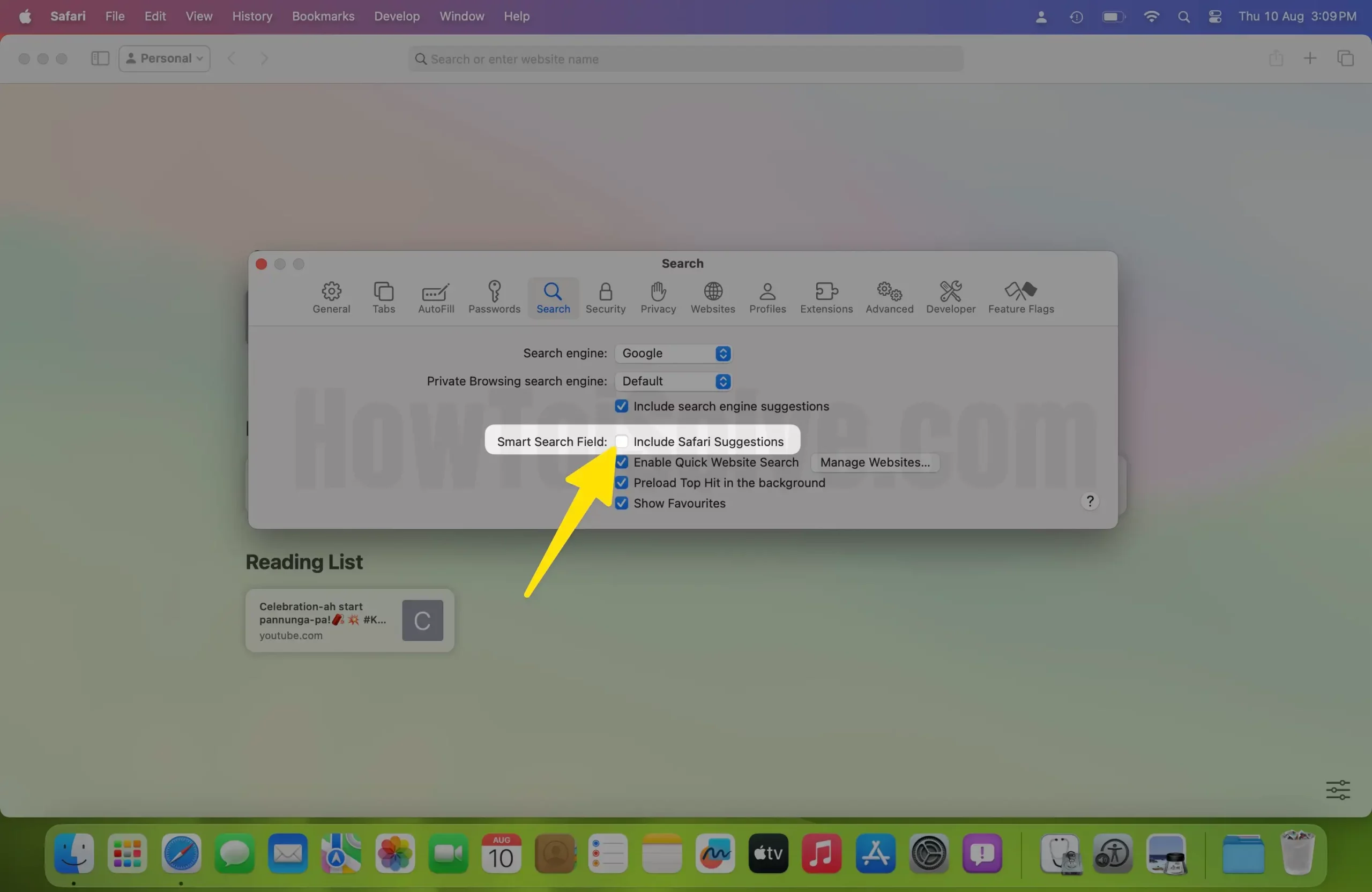
Step 3: Here’s the below screen , that you miss after disabling this option.
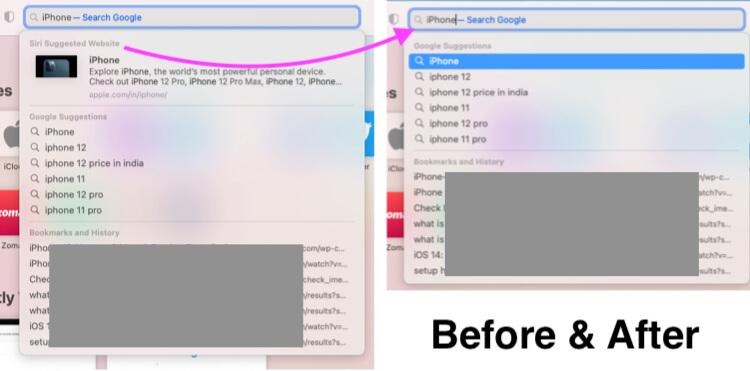
If you like this feature and don’t want to turn it off, then you should check the other Safari settings and get the exact solution Why is Safari on my Mac so slow?
Solution #3. Disable DNS Prefetching in Safari Mac
Is your Mac sending DNS Queries to the network via Router , and Your Router can’t handle such requests on time? As a result, you will get a slow response from the internet. If the DNS Prefetching is enabled, then your Safari browser on Mac sends a DNS Request to load the website the very first time. So, turning off DNS Prefetching on your Mac Safari is a Great solution if this happens with your System. Below I recommend trying Alternate methods for disabling DNS Prefetching on Mac or Macbook running on any macOS.

Change DNS Service Provider for Slow Safari
By default, our DNS settings are provided by the ISP. Instead, this time we will try to use public DNS, which might boost up Safari. The best DNS server is Google DNS; probably everyone, including me, is using Google DNS. This action does not only help Safari but also gets the solution for “How do I fix slow Internet on Mac?
Step 1: Go to the Apple Logo from the top Menu > Select System Settings .
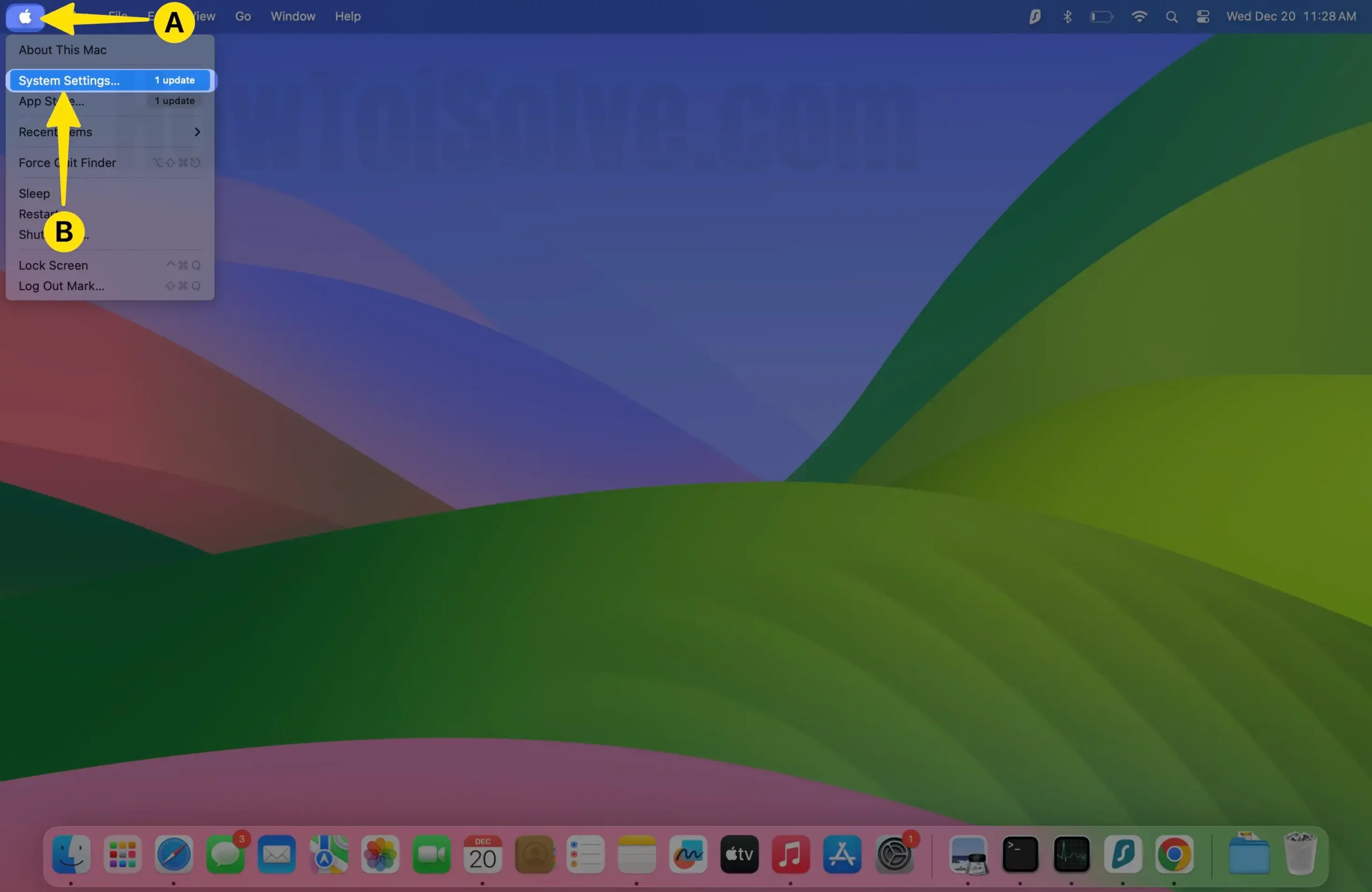
Step 2: Select Wi-Fi from the left side > Click on Details next to the connected WiFi Name.
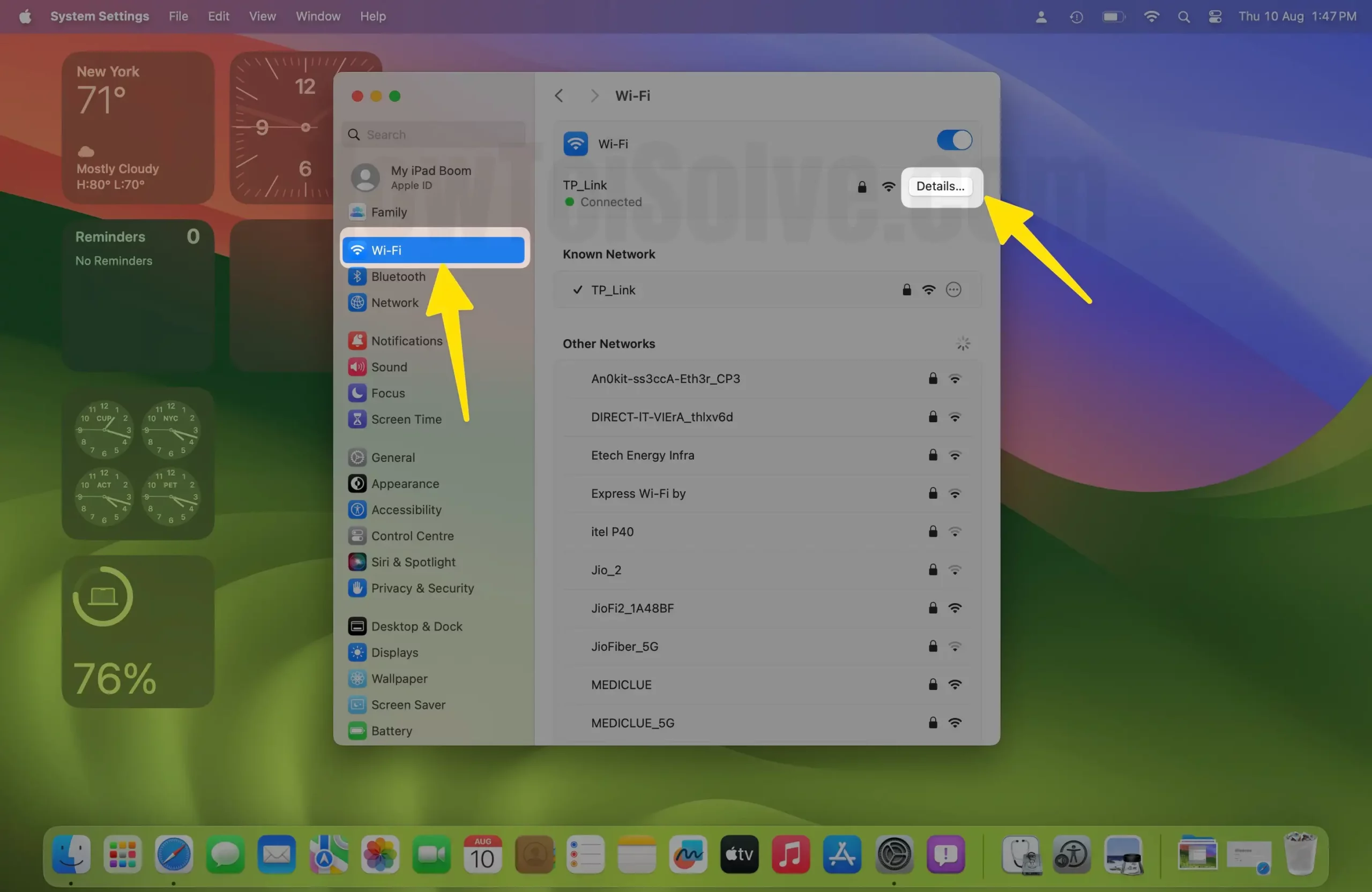
Step 3: Select DNS > Click on ‘ + ‘ to add a new Public DNS Address on Mac . For Example, Google Public DNS, 8.8.8.8 and 8.8.4.4 > Click on OK to Apply the changes .
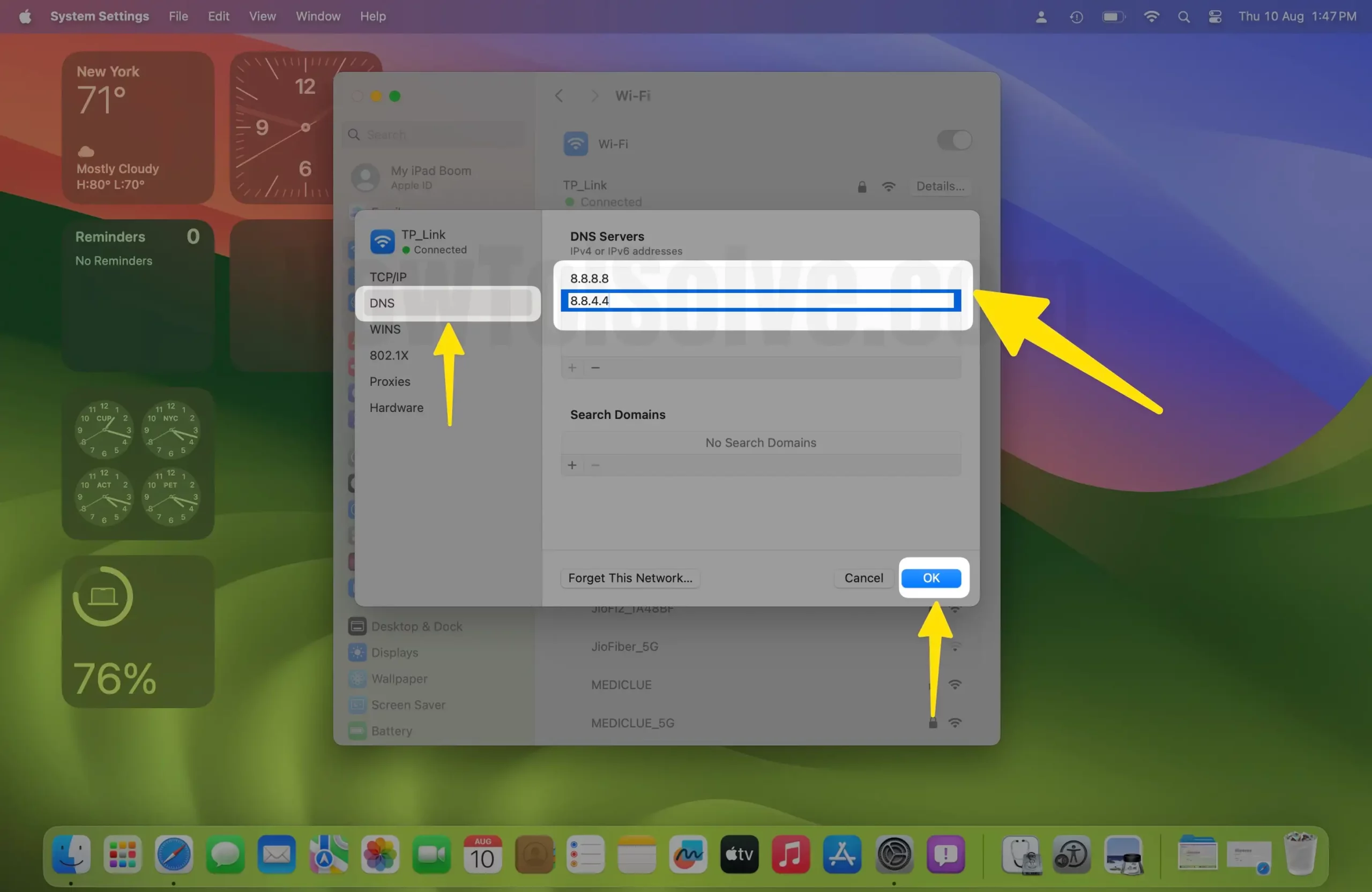
On MacOS Monterey & Earlier
- Step #1: Click to open the “ Apple Logo ” from the Top Mac menu and then open “ System Preferences ”.
- Step #2: Open “ Network ”.
- Step #3: Select the network on which your MacBook is connected.
- Step #4: Click on “ Advanced ”.
- Step #5: Now tap (+) and add a DNS server.
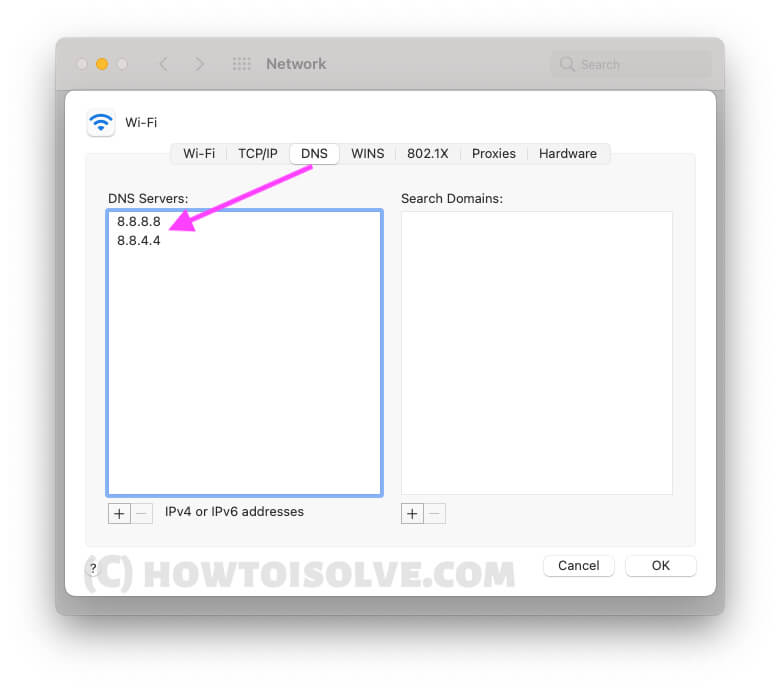
To Use Google DNS , Enter the Below Public DNS Address, Enter 8.8.8.8 and 8.8.4.4 are the Google DNS servers for you.
Or You Should Use OpenDNS
Enter 208.67. 222.222 and 208.67. 220.220 in the list. Click on OK to apply changes and test internet speed on Safari.
Alternate Method to Disable Prefetching in Safari Using Terminal
This method is also helpful to disable DNS Prefatcinhg on Mac Using Terminal, Open Terminal under the utility folder.
Step 1: Launch Finder on your Mac > Click on Go From the top Menu > Choose Applications.
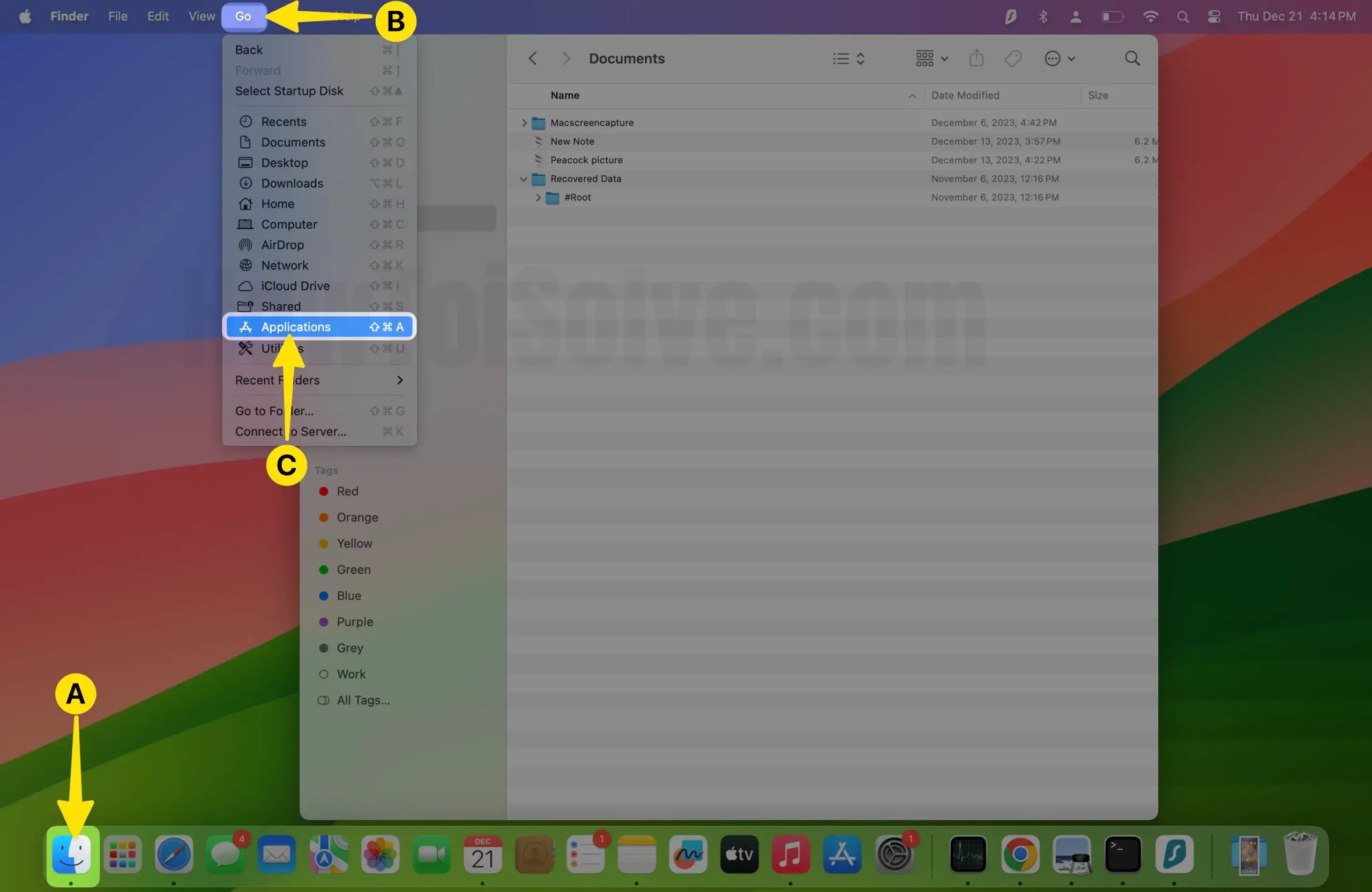
Step 2: Choose Utility Under the Applications folder.
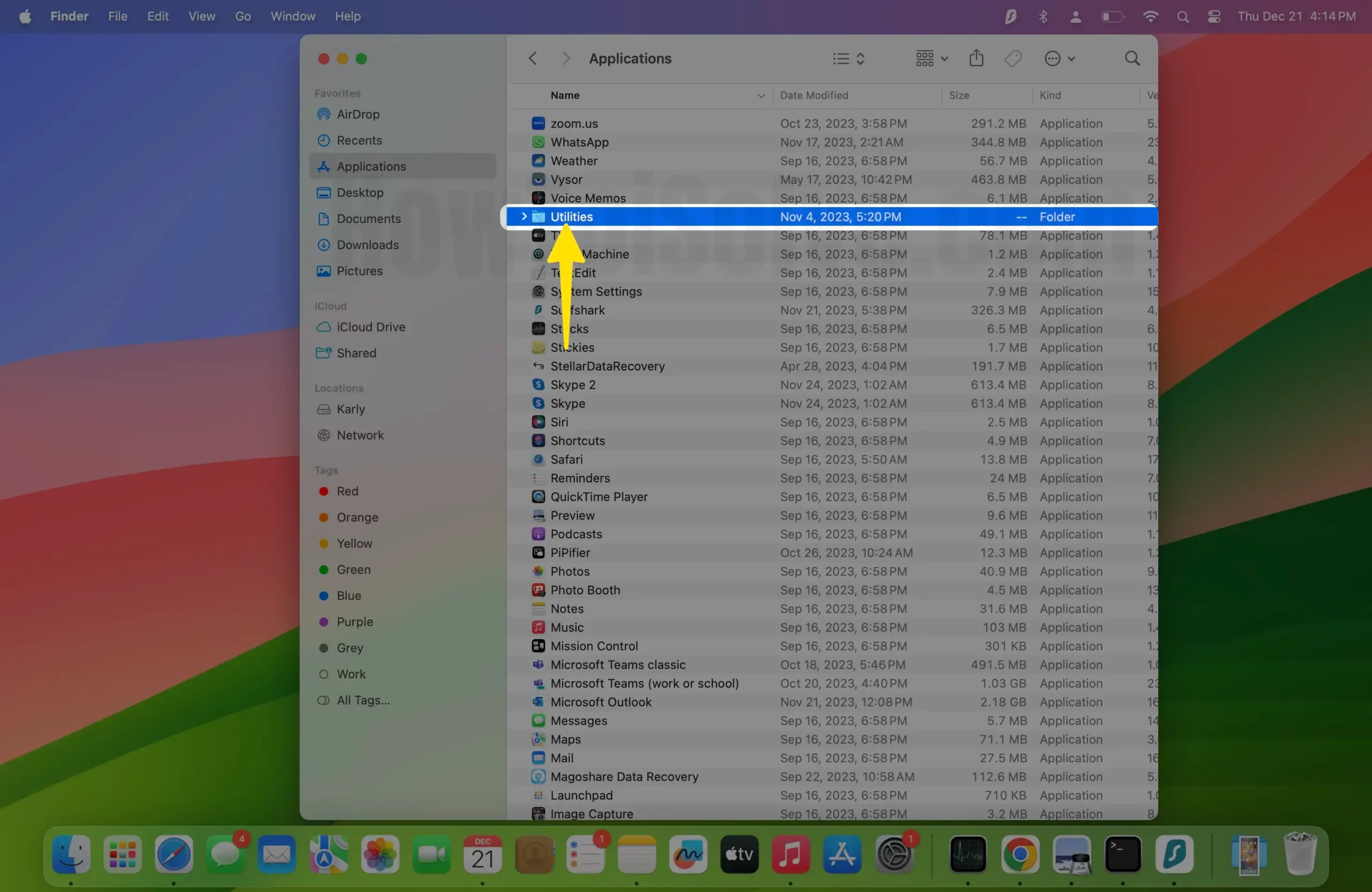
Step 3: Select Terminal under the Utilities.
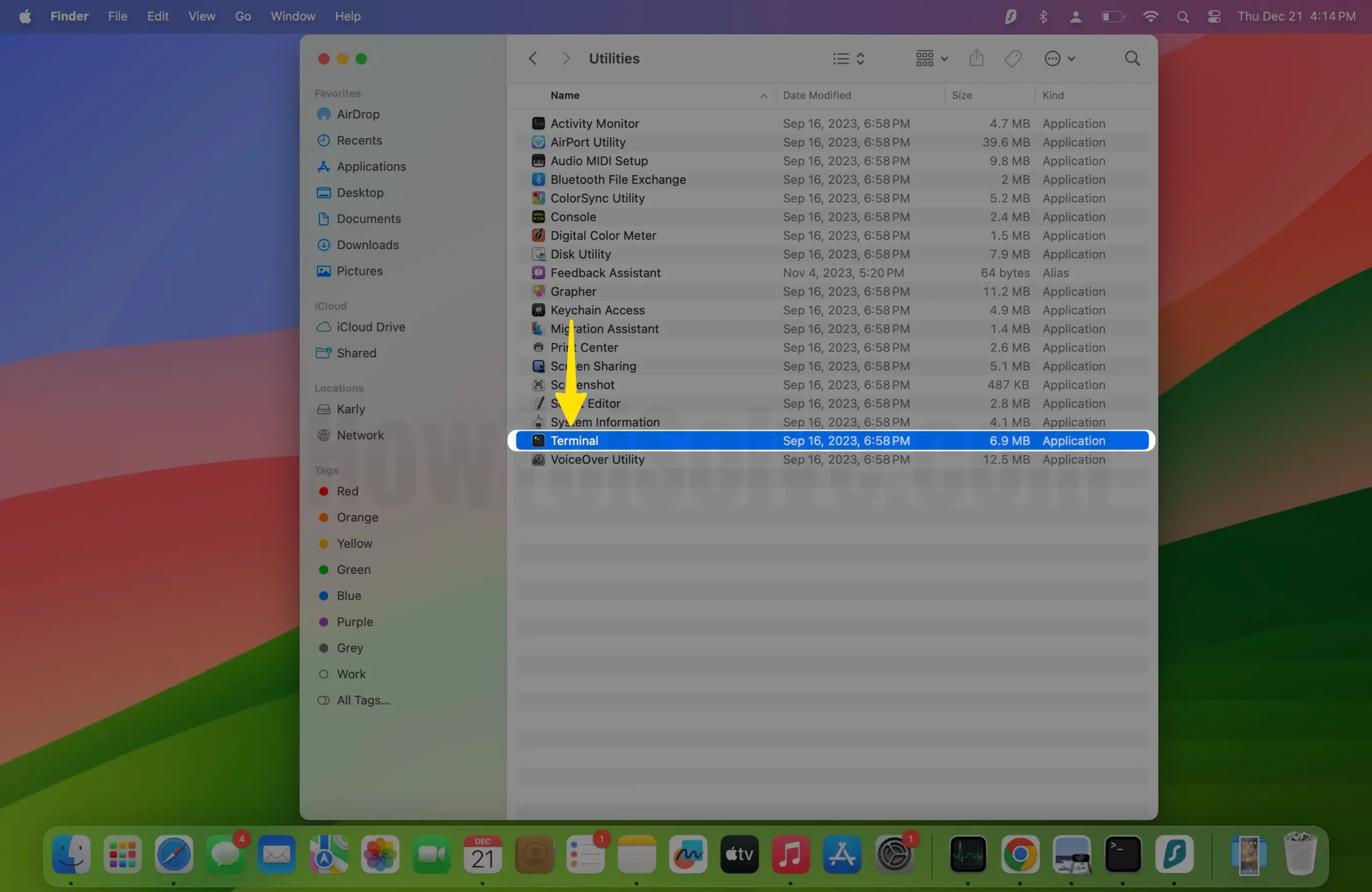
Type the below command, and Hit the Return to run command,
defaults write com.apple.safari WebKitDNSPrefetchingEnabl
Force Quit Safari and Re-open Safari browser to test it. If sometimes time is not working fine after disabling DNS Prefetcinhg, then turn it on again; using this command,
defaults write com.apple.safari WebKitDNSP
Also, you check internet speed using an online free Speed testing tool. www.fast.com by Netflix. Also,
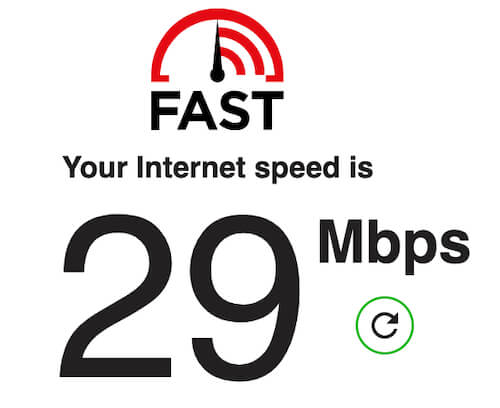
Don’t miss out on other essential settings; these will improve your Safari Browsing speed without losing Privacy and switching to a third-party browser.
Solution #4. Open Empty Page on Safari: No More Load every time
Had issues with slow new tabs as well. We fixed it by opening an empty page instead of the starting screen. Safari Browser has too many hidden customizations that most Safari users don’t know.
Open Emply blank space is a great tip to start quick browsing and open on your Mac. Follow the below steps,
Step 1 : Launch Safari on your Mac.
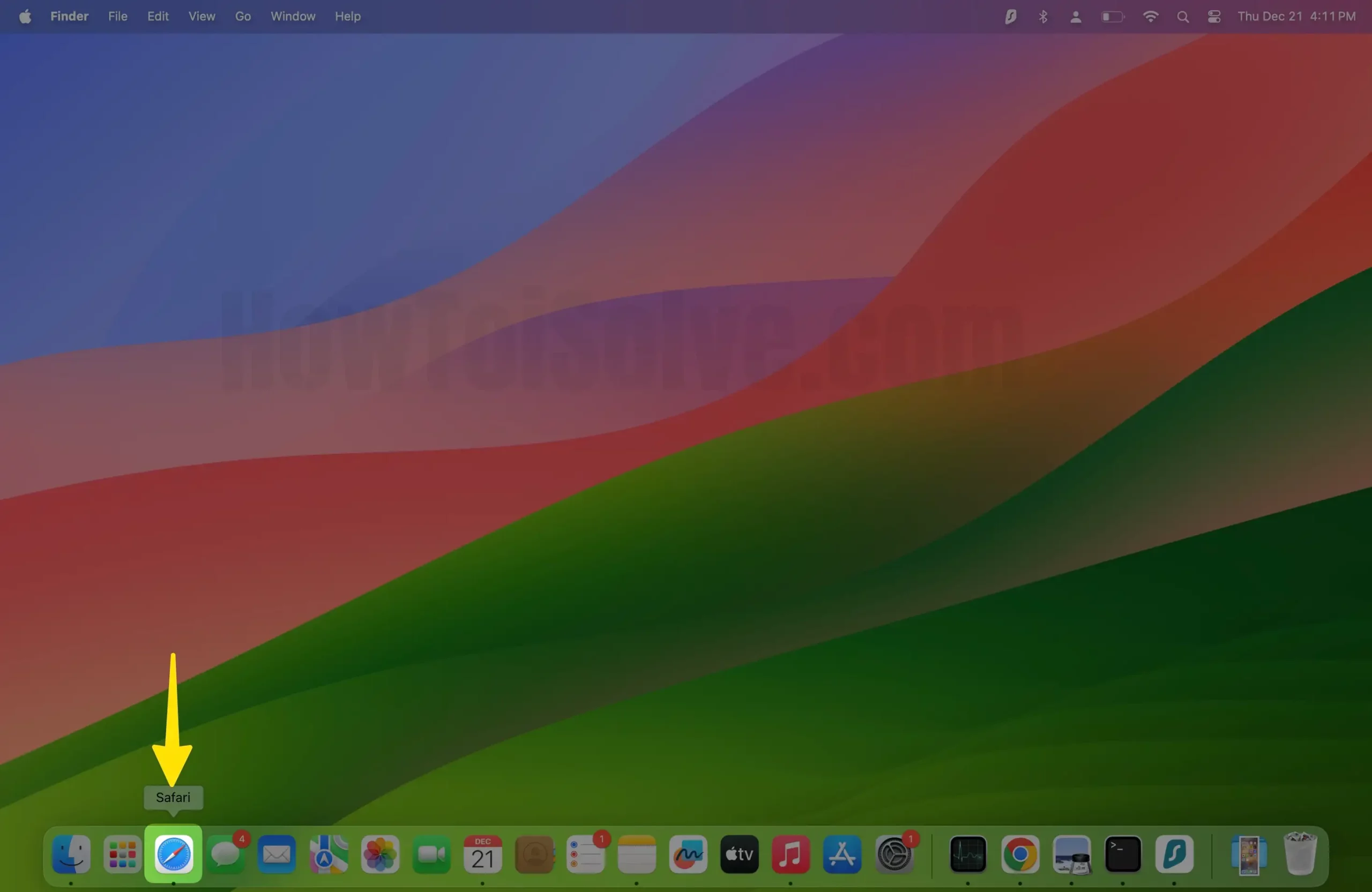
Step 2: Click on Safari From the top Mac Menu > Select Settings/Preferences .

Step 3: Tap on General Tab > Select New Window opens with Empty Page and New Tab Open With Empty Page . Select these options from the dropdown.

That’s it. Now, your Safari page will not load any data on the New Tab or Window, but you should check What’s loading with the webpage when you open it. Along with page files, Installed Third-Party Plugins and Add-ons also check and gather details from the page. Sometimes that’s unnecessary, So disable or remove Unused Plugins or Add-Ons. Also, Keep all up-to-date.
Solution #5. Force Close and Re-Launch With the “Shift” Key
Your Safari Browser is slow because the affected website is opened in the background; some laggy websites consume more Memory than your Mac, and that’s the cause of slow down Safari performance. TO quickly get it out, Mac users must Force close Safari and Relauchc with Refresh Safari memory.
- To Force close the Safari browser, Press Command + Q to force close the safari browser.
- Press the Shift key from the keyboard. Click on Safari from the launchpad to relaunch it. So your Safari browser loads just like opening it the first time.
- That’s it.
If Safari is not loading the image, Data [ Why are images not showing up in Safari on my Mac? ] for a specific website, then you should check with the Safari Private window.
Solution #6. Test With Private Window
Safari Saved lots of data from the internet in cache and cookies to load faster on the following visit to the same website. Private Browing mode, Doesn’t interest old data saved on Mac or Naver keep new data. So that’s a great way to test the Actual Speed of your Safari browser.
Step 1: Launch Safari on your Mac > From the Top Mac Menu, Click on File > Tap to New Private Window .
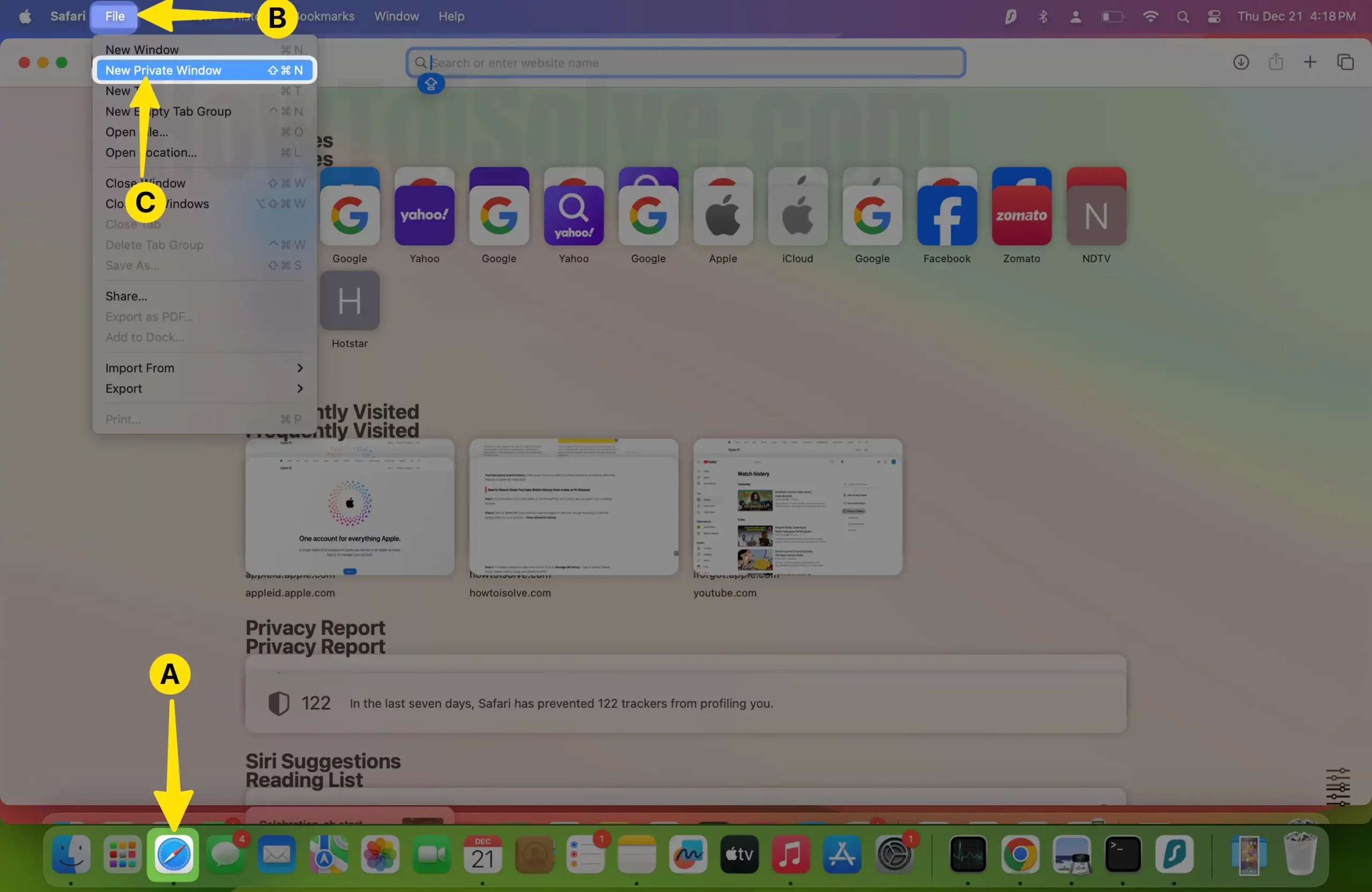
Step 2: In the Next Screen, Open the Private Browsing Window on Safari.
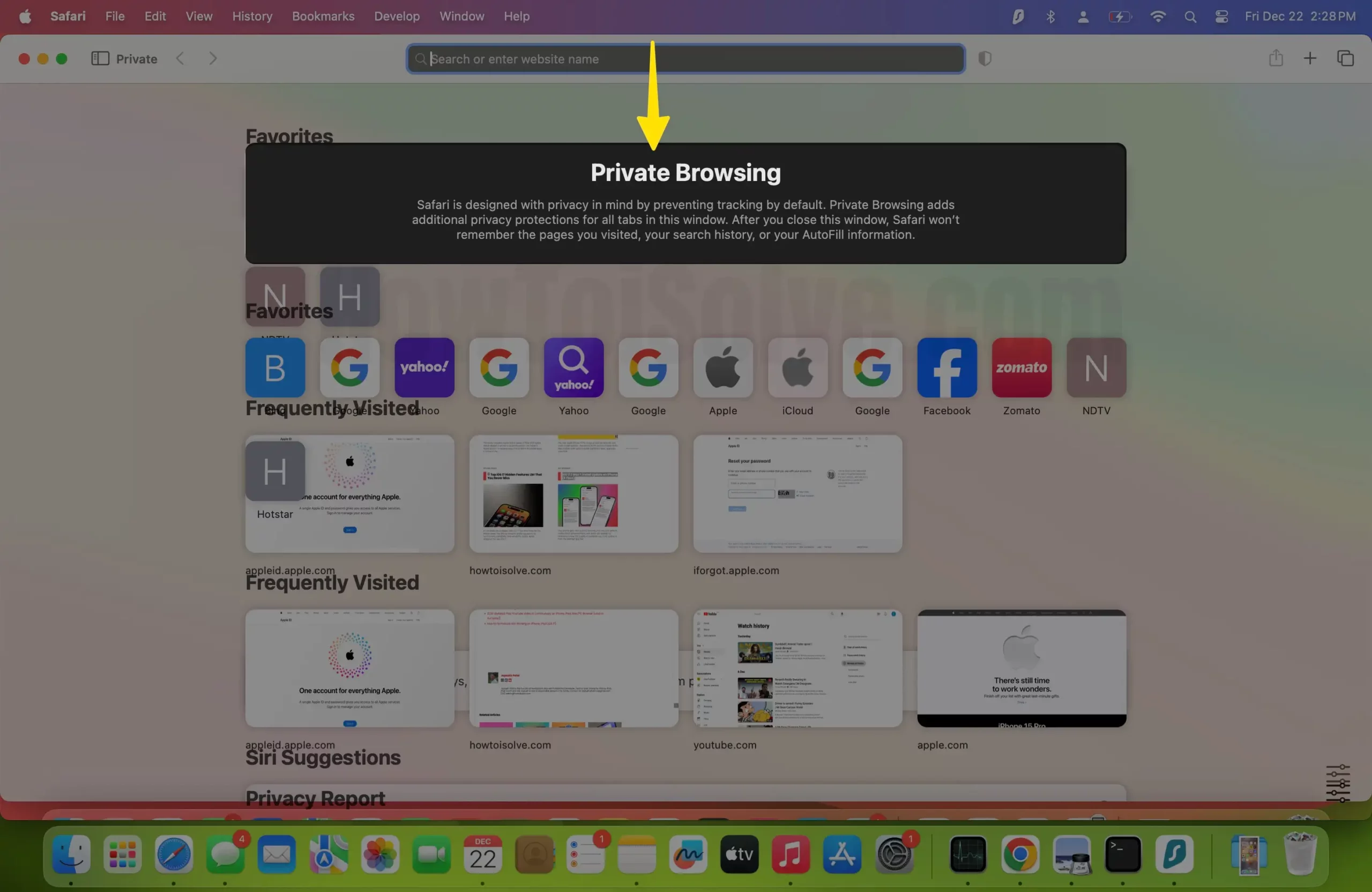
Start Doing a Safe search without loading extra Plugins or Safari Extensions installed on your Mac.
Solution #7. Test Other Safari Plugins and Add-ons
An outdated or unsupported Safari extension installed on your Mac gives a slow browsing experience. So, I recommend disabling Safari Extension or Update Pending update from the Mac App Store. Based on experience, some extensions cannot load websites like youtube on a standard browser, but Private browsing allows to open websites. Because the installed Extension will not load on Private browsing, that’s proven you have a problem with Extensions.
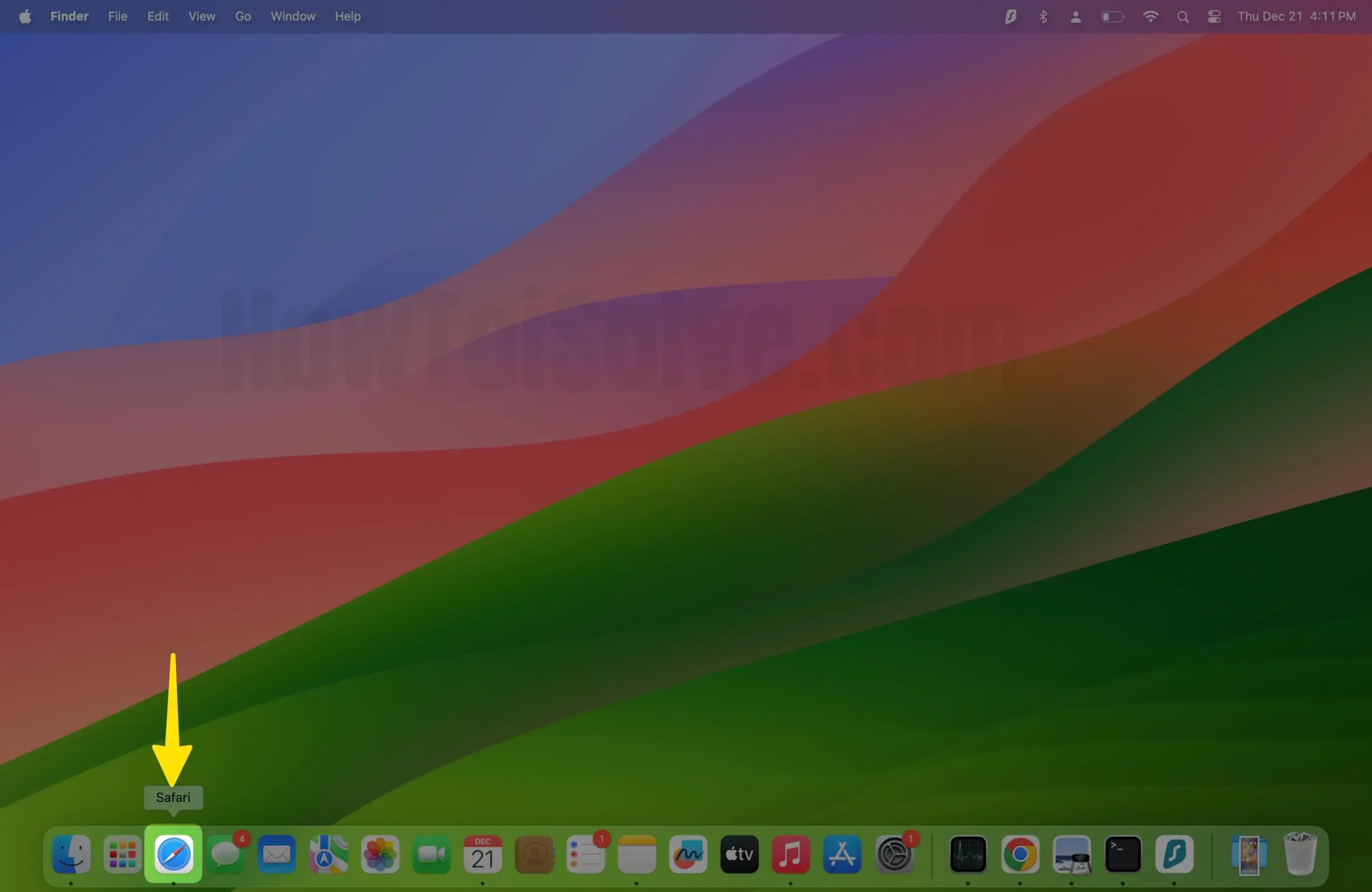
Step 2: Now, From the top Menu, Click on Safari > Choose Settings/Preference .
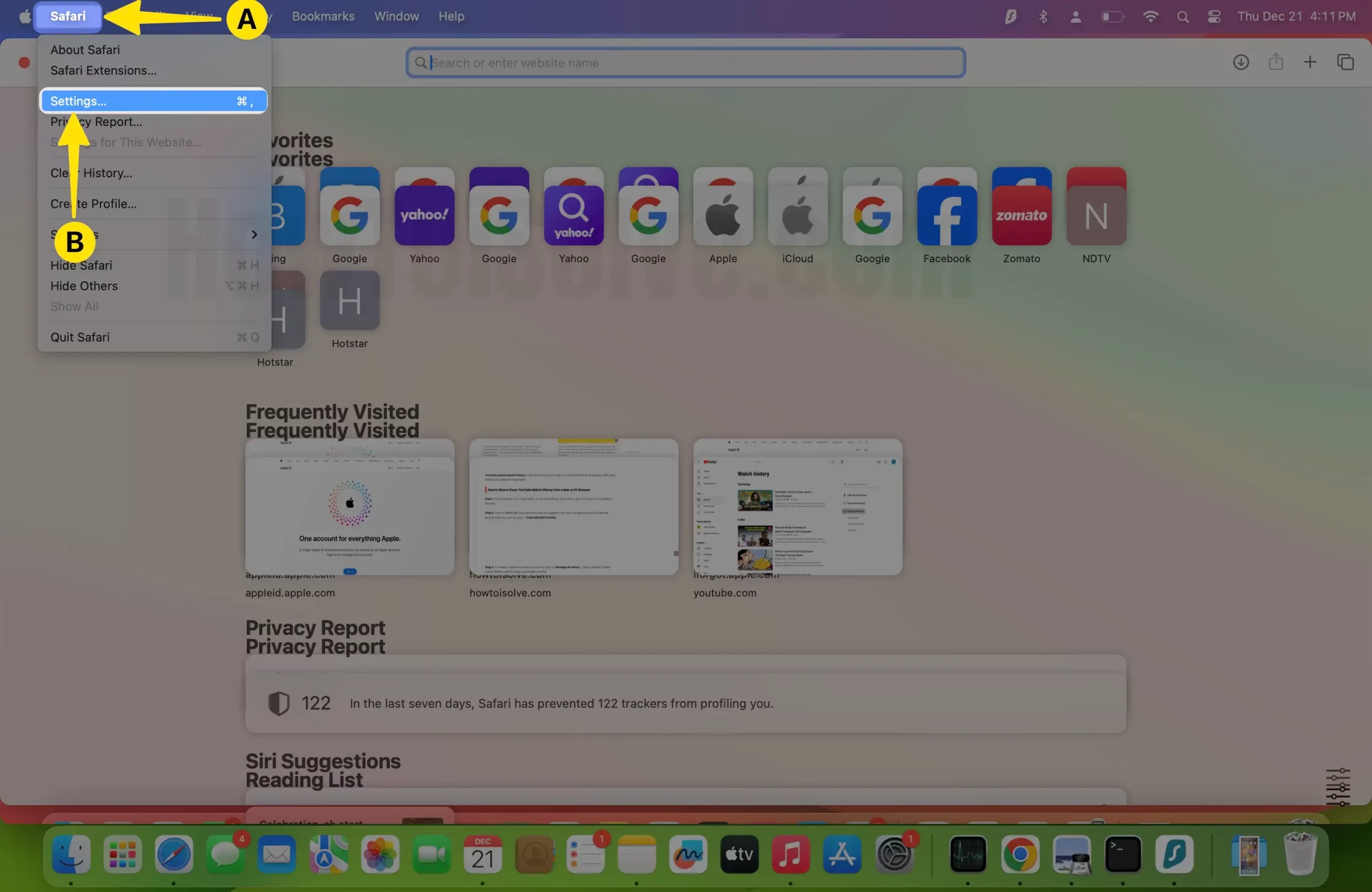
Step 3: Go to the Extensions tab and Select the Extension in front of the name from the first left panel, So the Extension will be disabled. Next, we can uninstall from there as well.
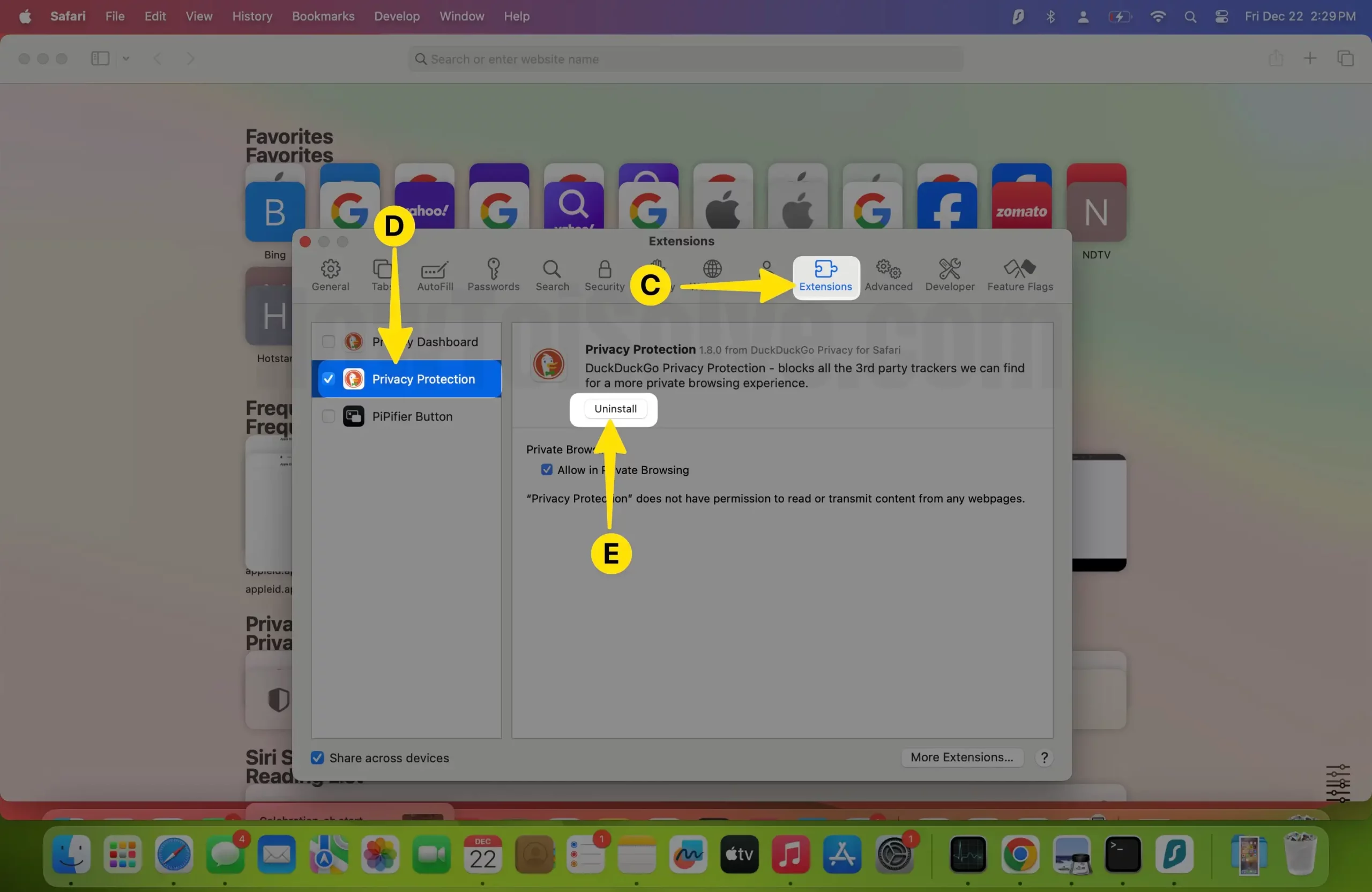
Update Safari Extension on Mac : Open App Store on Mac > Search Extension, then Click on the Update button to download and install New updates with the latest macOS.
is YouTube slow on Safari Mac?
It could have happened due to an unhealthy add-on run on your Mac for Safari. Some extension makes Safari YouTube fullscreen lag and Safari Weird behavior. Scroll through comments on YouTube on Safari, and it does animation is slow. for that, you will have to disable an extension that harmful to Safari,
let’s what to do about that,
- On the Safari menu bar, click Safari > choose Preferences, then select the Extensions tab. Turn that OFF ,
- Next, quit and relaunch Safari to test.
hopefully, this worked; after this,
- Turn one extension on, then quit and re-open Safari to test until you navigate the incompatible extension for your Mac then click uninstall.
Your work is done.
Read more: Tips to Speed up Slow Mac after macOS update
Solution # 8. Clear Cache, Extension, History
Problems with Safari after an update ? Let’s see a solution- If your day begins and ends with Mac and Safari, you should probably clear cache, extensions, and history periodically. They eat your Mac’s storage and slow down the Safari. It is worth deleting all this and making some space.
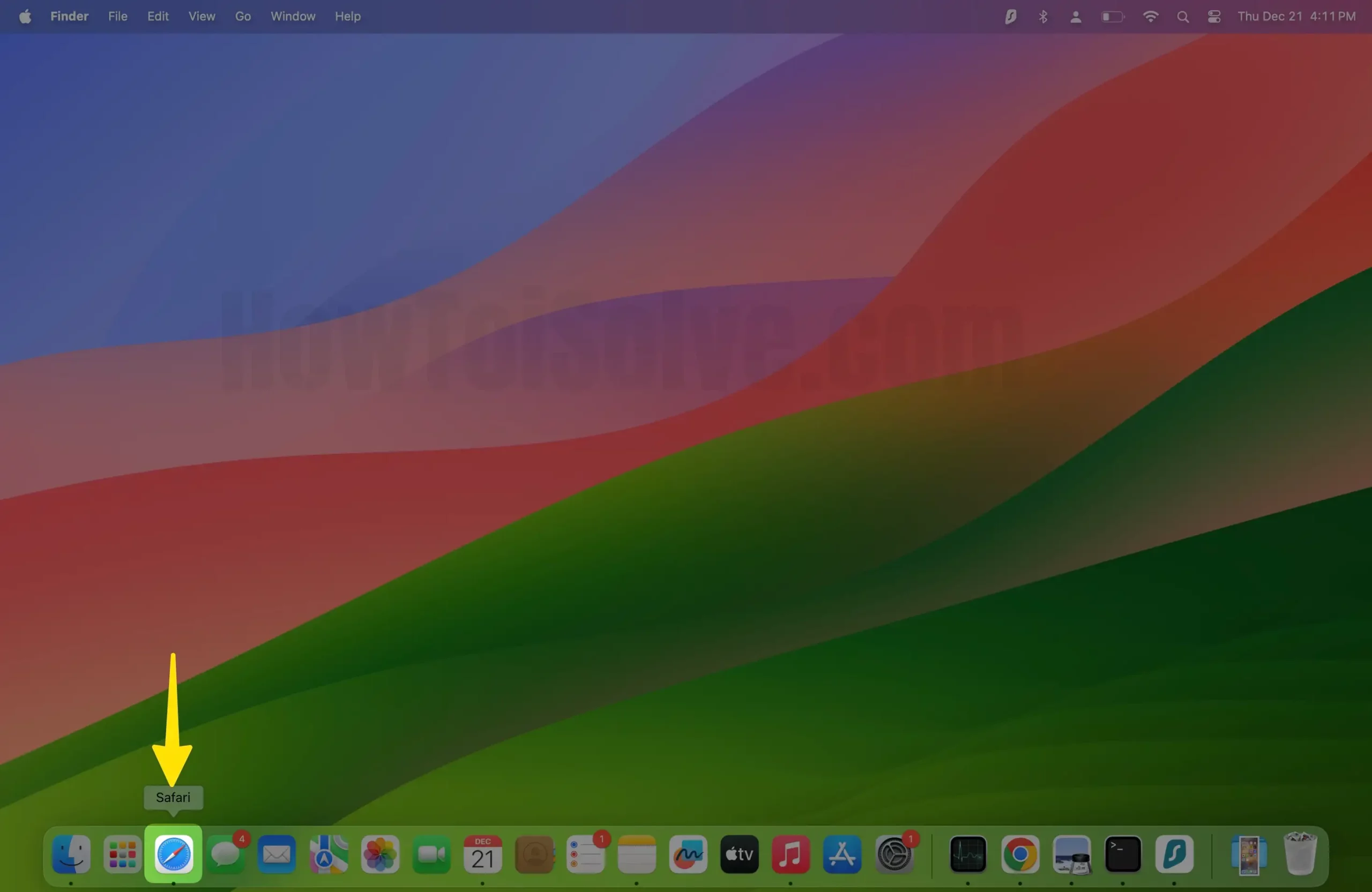
Step 2: From the top of the Mac Menu, Click on Safari > Select Settings .

Step 3: Open Advanced Tab > At the bottom, Enable the Show Features For Web Developers.
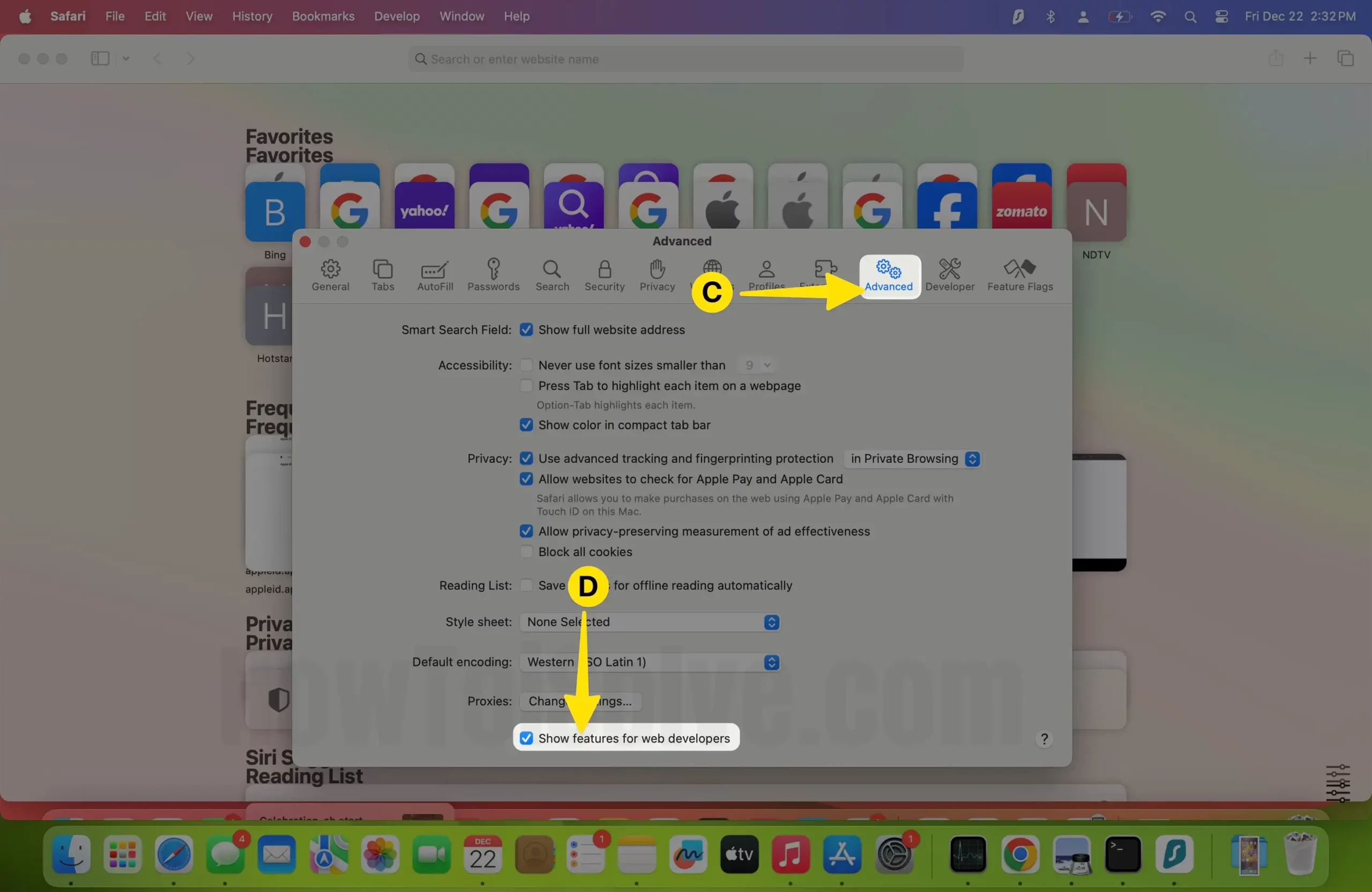
Step 4: Head over and click on Develop > Select Empty Caches .
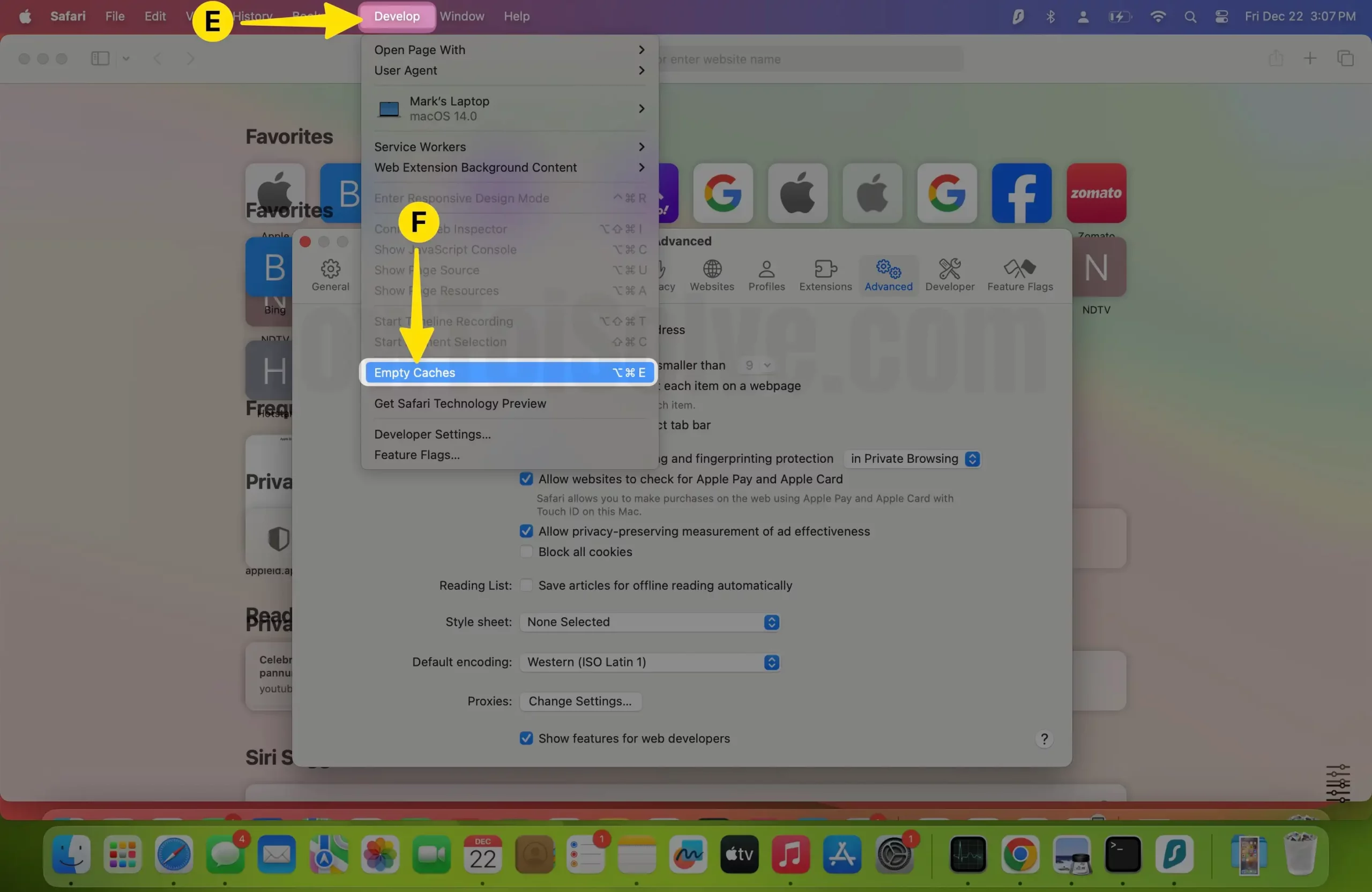
Step 5: Again, Select Extensions > Disable Extension from the Left Sidebar > Click on Safari From the Top Menubar > Tap on Clear History.
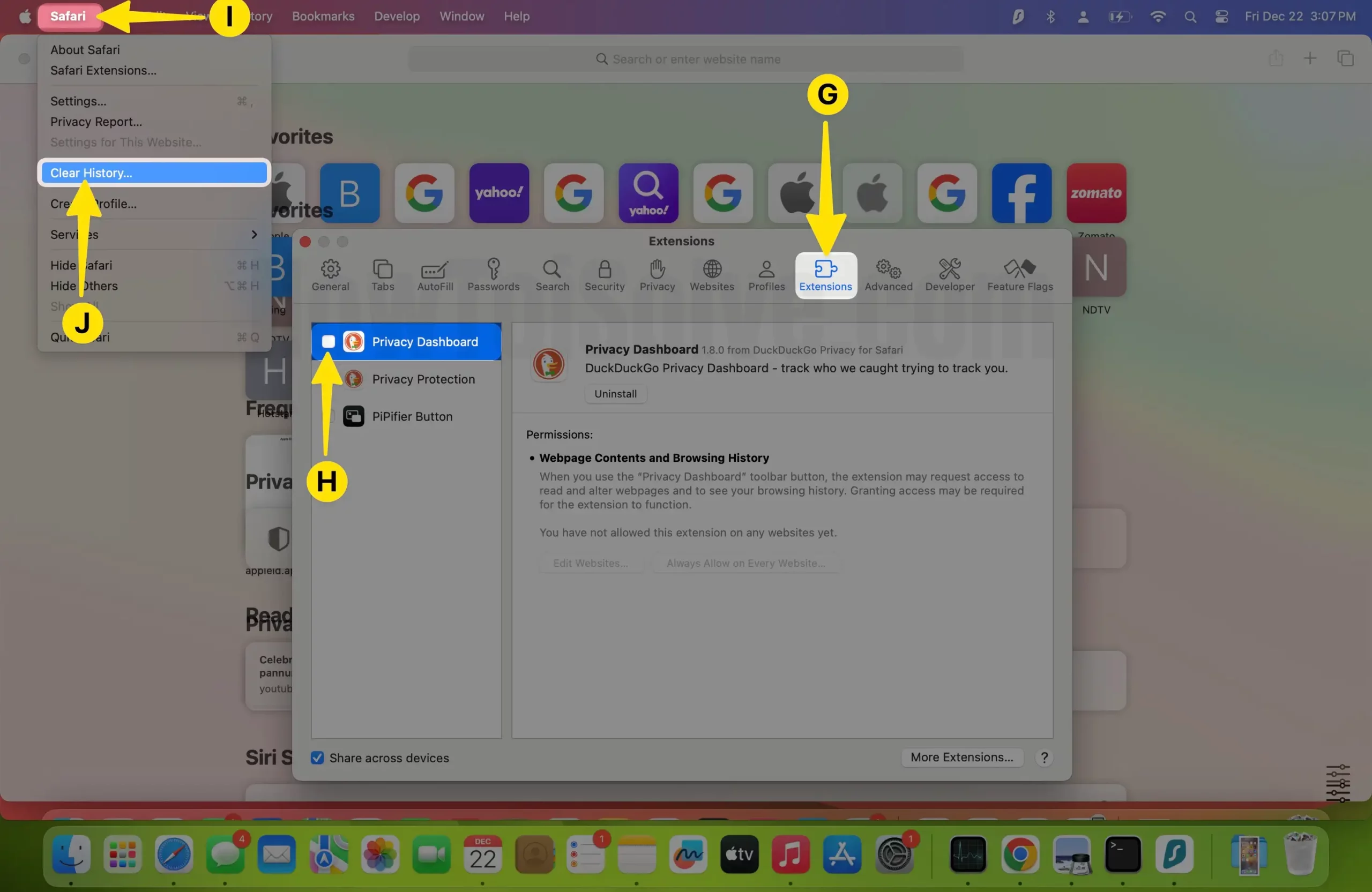
Solution #9. NVRAM Restart (cmd+opt+P+R) – And it Solved
NVRAM Store Mac startup data for a quick jump into work. We can clear up those corrupted or Outdated Mac system Data by Resetting it. Here are a few Keyboard shortcuts that we have to try on Restart your Mac. This process doesn’t wipe any files or Data from the Mac drive; this Process only Refreshes the startup date by Cleaning and Rebuilding the process.
- From the Apple logo, click on Shut Down .
- Immediately Press the [cmd+opt+P+R] Keys from a keyboard after pressing the power key,
- Your Mac will only play startup sound but won’t turn on. Which means you have to perform NVRAM Restart. Leave all the keys and allow it to turn on your Mac itself.
M1 Macbook Mac Safari Slow:
To Boost Laggy Safari browsing, There are no more changes in settings. To perform each of the steps in the same way. But Resetting RAM is quite Different on your M1 MBA[Air] or M1 Macbook Pro & M1 MacMini.
- M1 Silicon Mac stores data on RAM, and users don’t need to reset it. Because Mac reset it automatically while restarting your Mac. If you have to reset that, then simply restart the Mac .
Important : Mostly M1 Mac Users affected by Browser Extension installed on Mac, So I highly recommend Disable one by one and test the experiments.
Solution # 10: Manually Clear Cache.DB file
The above solution must work properly, but if anything goes wrong or the cache isn’t deleted, try this one.
Step 1: Launch the Finder on your Mac > From the top Menu, Click Go and then Choose Go to Folder .
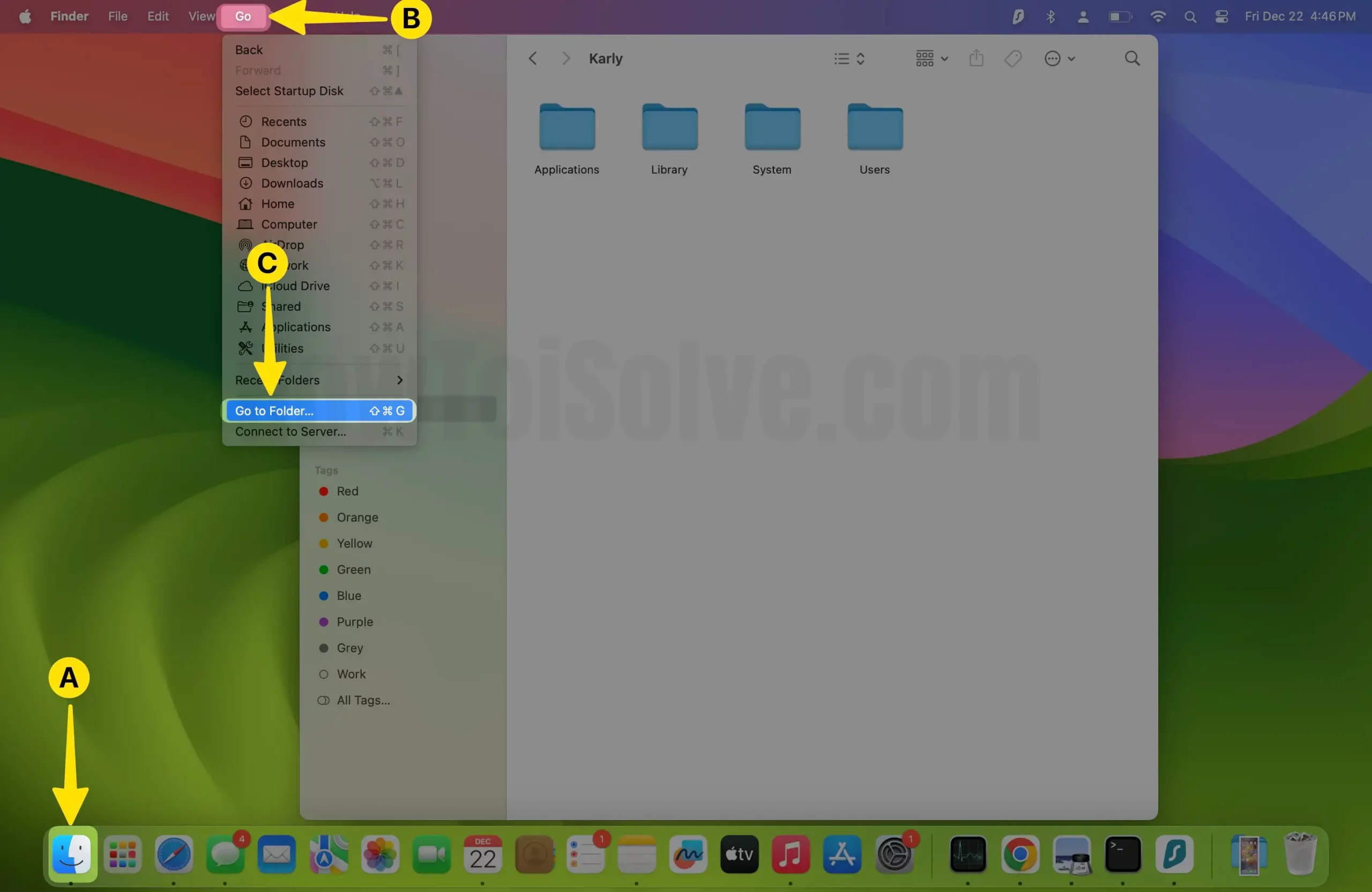
Step 2: Enter the below command and click on the Go button ,
~/Library/Caches/com.apple.Safari/Cache.db
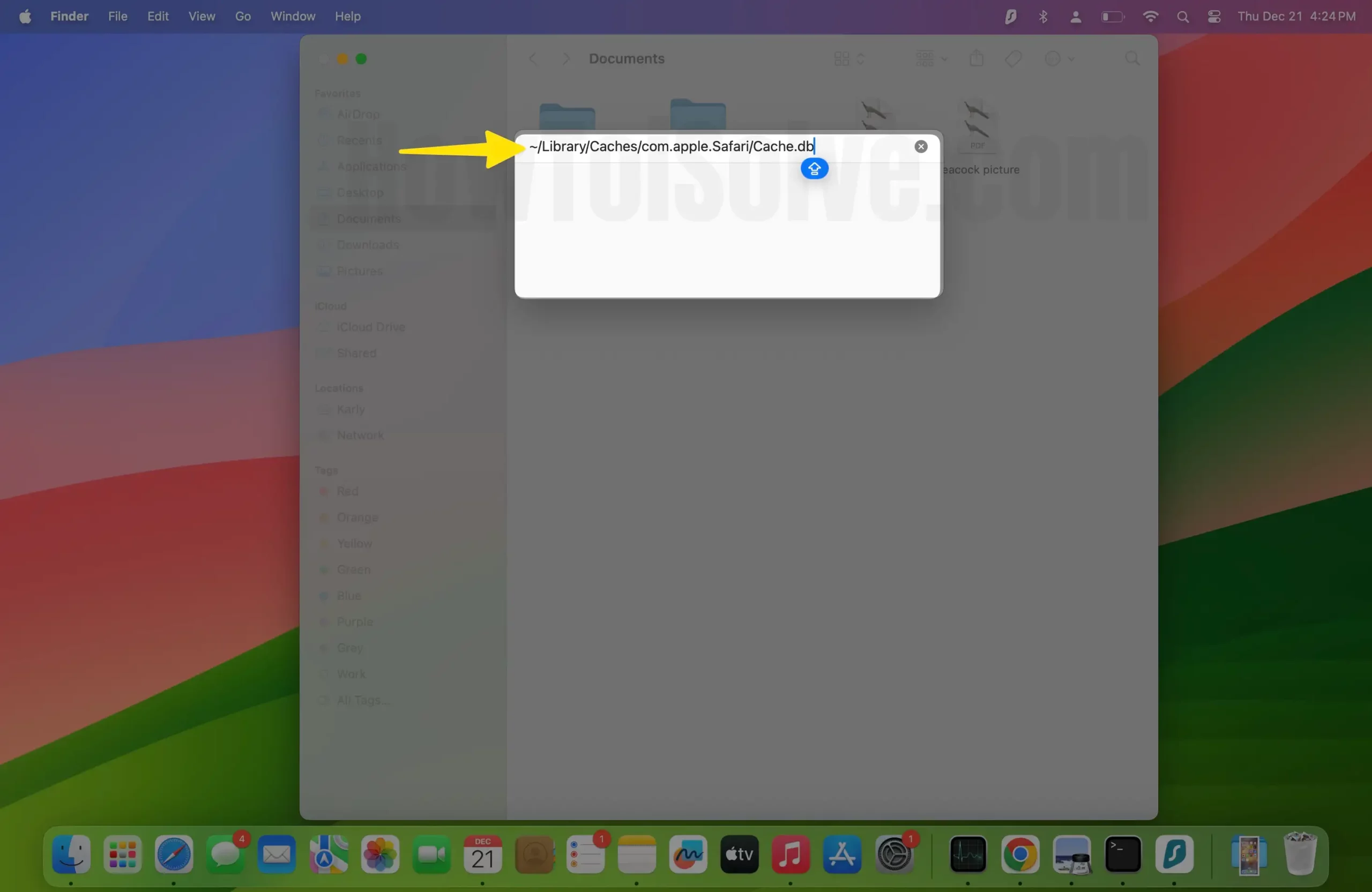
/Library/Caches/com.apple.Safari/Cache.db
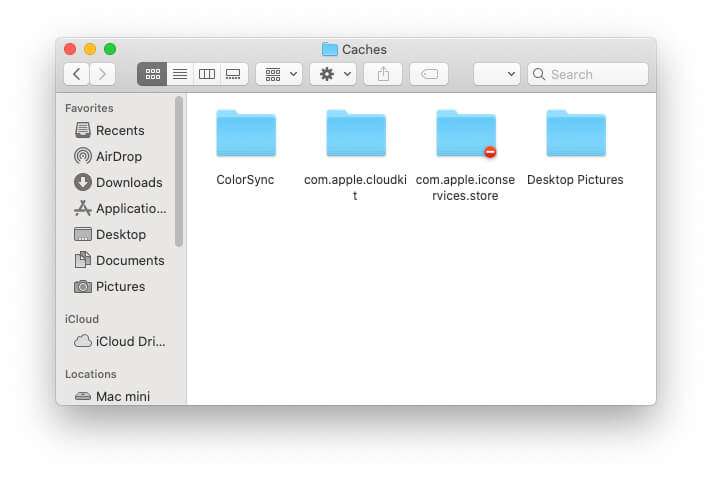
- Now, as soon as the folder opens, click on the .db file and move to trash.
Note: Before performing this action, close the Safari app.
Solution # 11: Remove Safari Preferences File
Auto-generated list files in the Mac file system save massive browsing data; some of the data is useful and needed in the future. So I recommend deleting those files after backup in a separate folder. Follow the below steps to find the safari plist file under the Mac preferences folder.
We can take our chances to fix Safari running slow on macOS Ventura with this solution.
Step 1: Launch the Finder and Tap on Go From the top Menubar > Next, Click on Go to Folder .
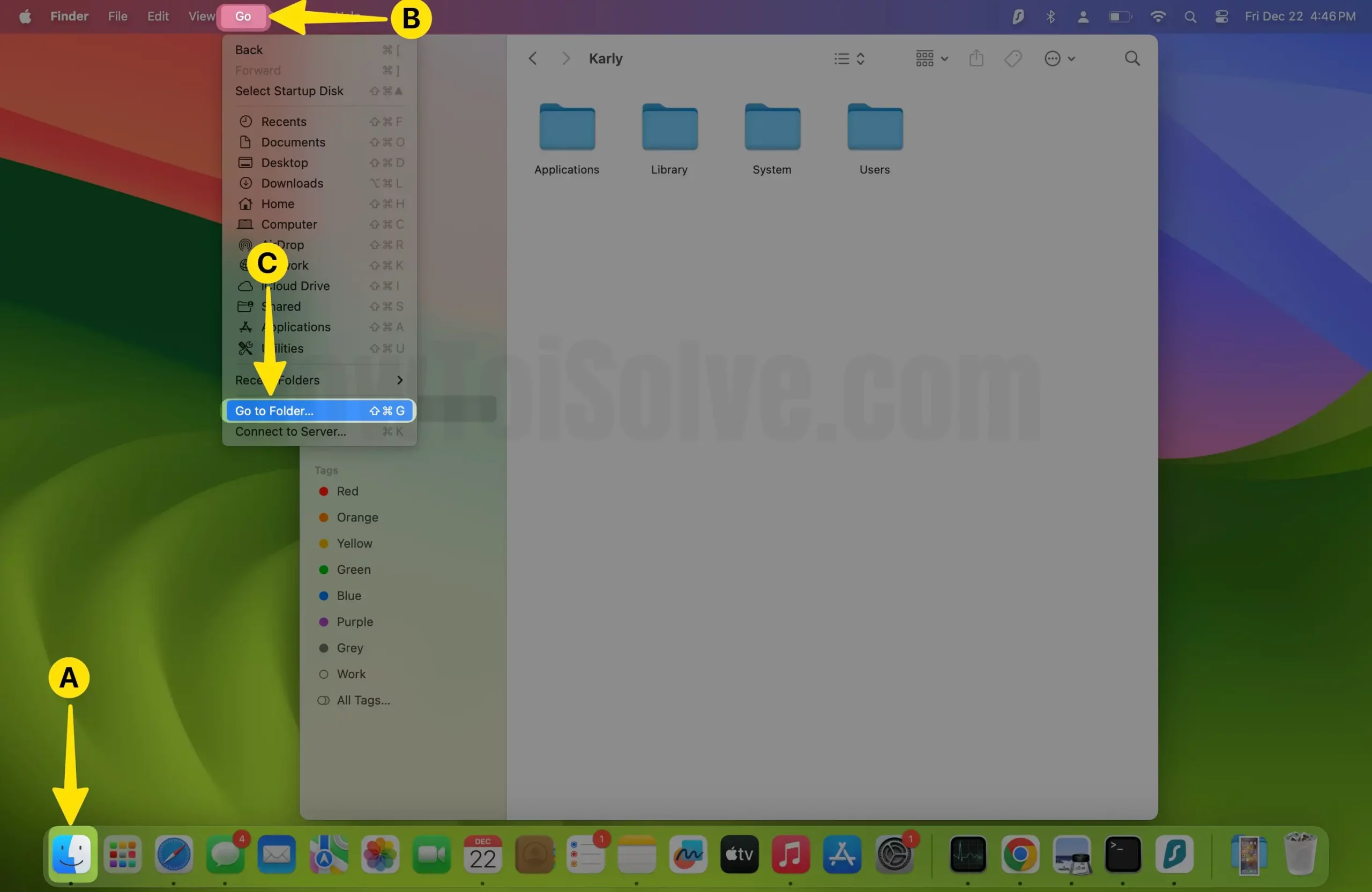
Step 3: Enter the Below Command.
~/Library/Preferences

Step 4: Now Locate and Select the com. apple. Safari……plist > Right -Click to Tap Move to Trash . Then restart your Mac so that after powering on, the file comes back automatically, and the browser will load fast.
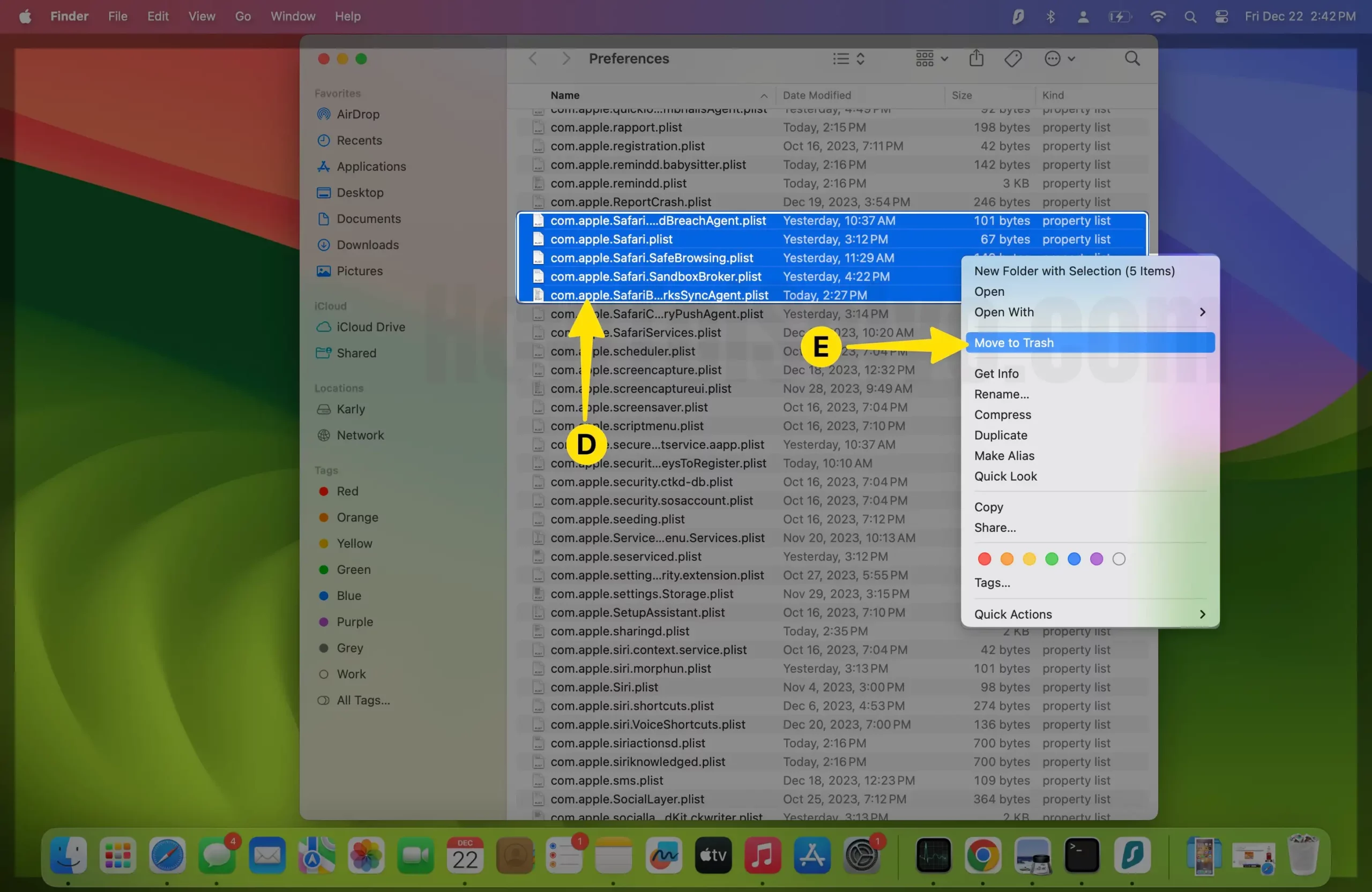
Solution #12. Change Network Service also works to Speed up the internet on Mac
If you have connected your Mac to Wi-Fi and Ethernet, then it can be a reason behind the slow performance of Safari . Remove one network connection and observe if it has any effect on it.
By default, Mac will give priority to only one network. But if you want, then you can change the order of the priority and switch connections.
Here’s how you can change the priority of the network service
Step 1: Open the Apple logo and click on System Settings.
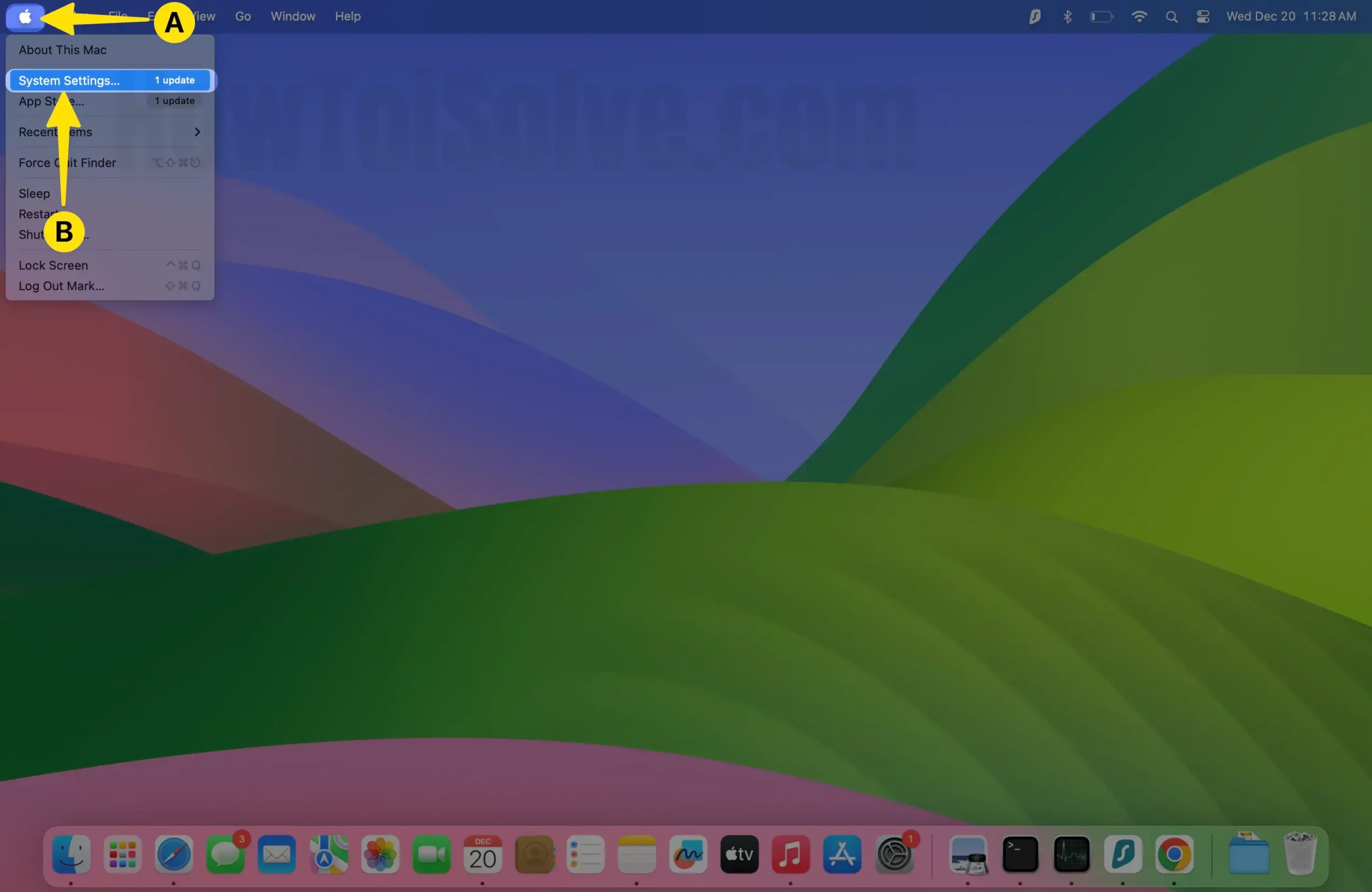
Step 2: Next, Choose Network and then open the Action pop-up menu > Tap to Set Service Order.
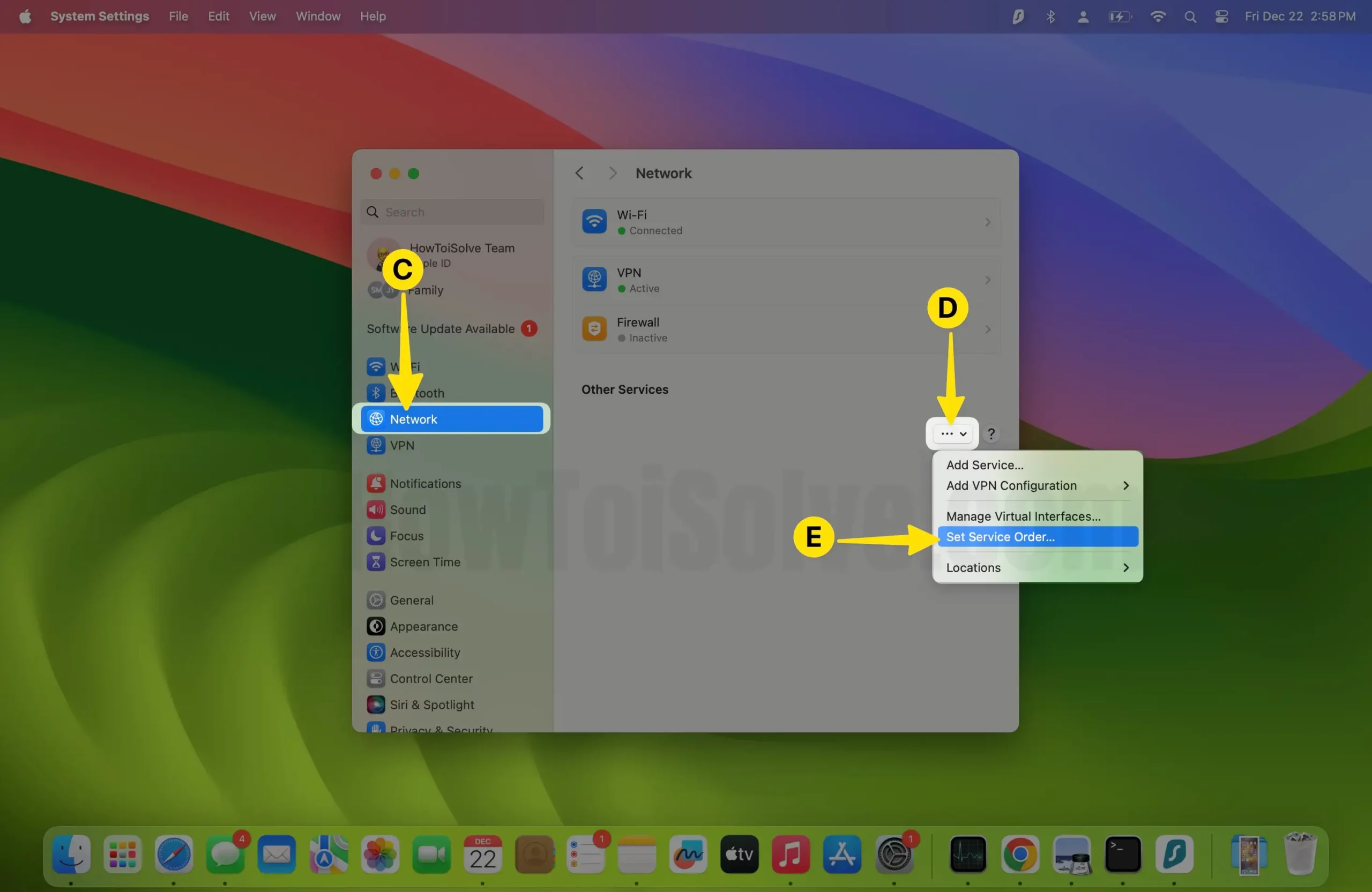
Step 3: Drag Service to Change Order > Click on OK.
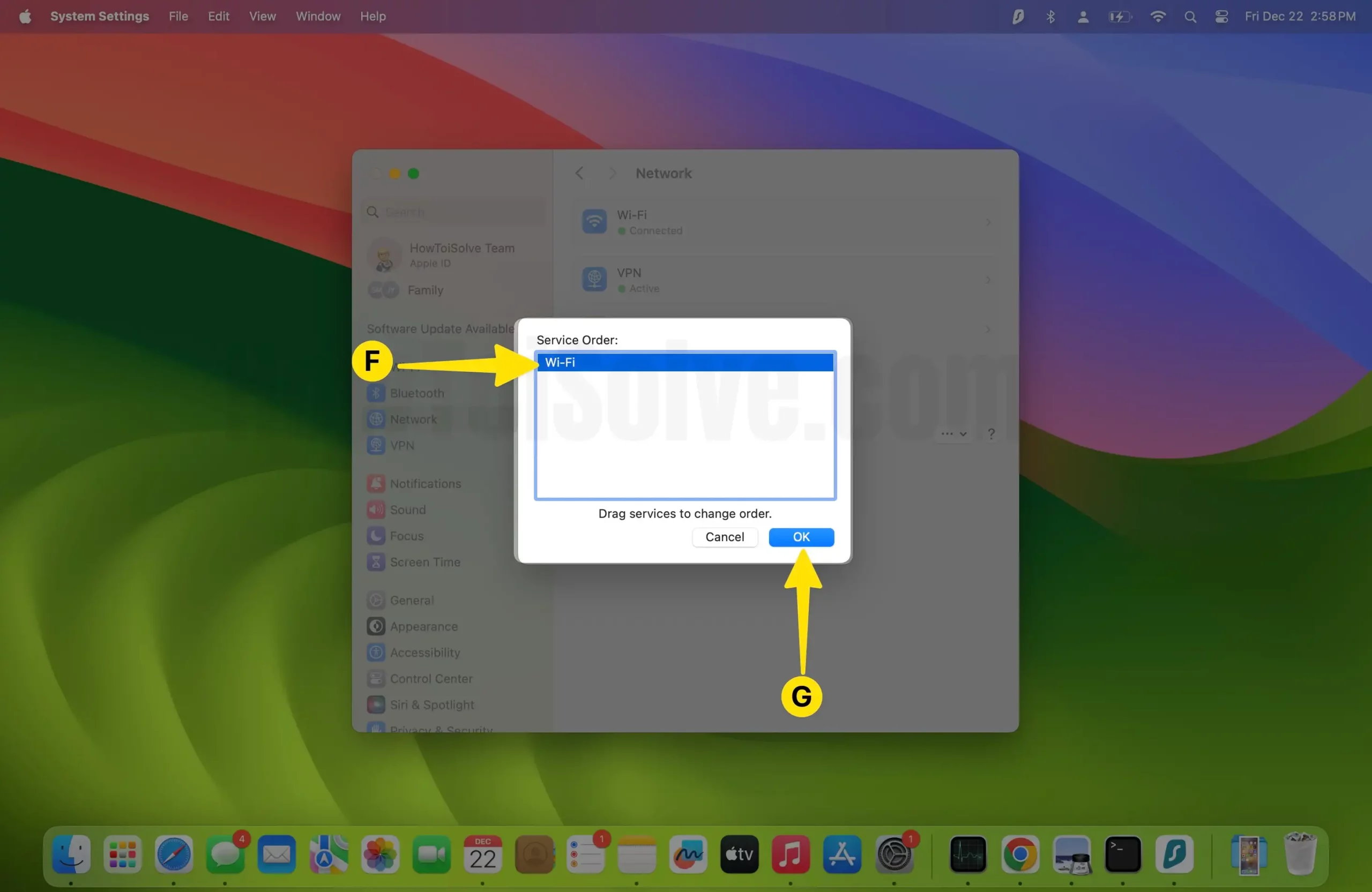
- Step 3: Select “ Set Service Order ” and arrange the network service by dragging them.
- Step 4: Click “ OK ” and “ Apply ” changes by clicking on it too.
Solution #13. Solution Use Safari Alternatives For Mac (Chrome or Firefox)
There are plenty of free Browsers for MacOS. Those are even faster than the Safari browser. Sometimes, the user has to switch to another browser because Safari is not working correctly with the Extension, Crashing, and other Serious problems; according to my Experience, Google Chrome for Mac works superfast even when the Extension is enabled.
Mac users can go with Trusted Desktop Browsers like Google Chrome, Firefox, Opera, Brave, Tor Browser, Vivaldi , and many more. In addition, you can get more ideas from shortlisted top Best Browsers for Mac .
- Are you looking for how to set Google as the default browser on Mac? Get here How to change the default web browser on Mac?
Solution #14. Reverting back to Big Sur or Mojave as a Reliable solution
Are you interested only in Safari Browser on your Mac? Recent macOS updates or After macOS updates, you feel uncomfortable and not using it preciously, so I recommend switching back to earlier macOS. Here’s my video tutorial on how to move back to Earlier MacOS for Big Sur installed Mac.
Solution # 15: Reinstall macOS Big Sur/Catalina
Unfortunately, if none of the above works for you, you have to follow this extreme path. Other than Safari, if you face any problems with Mac or MacBook, it will be fixed with this troubleshooting. Get here how to Reinstall macOS 12 .
Solution # 16: Change the Login Account on Mac and repair the Disk
Another weird solution for this issue is to change the user account. Create a new account and try to use Safari to see if anything changes.
Besides, we will use Disk Utility to fix this issue.
Step 1: Search Disk Utility from the Spotlight.

Step 2: Once Disk Utility is on-screen, Tap on the Hard Drive of Mac > Click on the First Aid Tab .
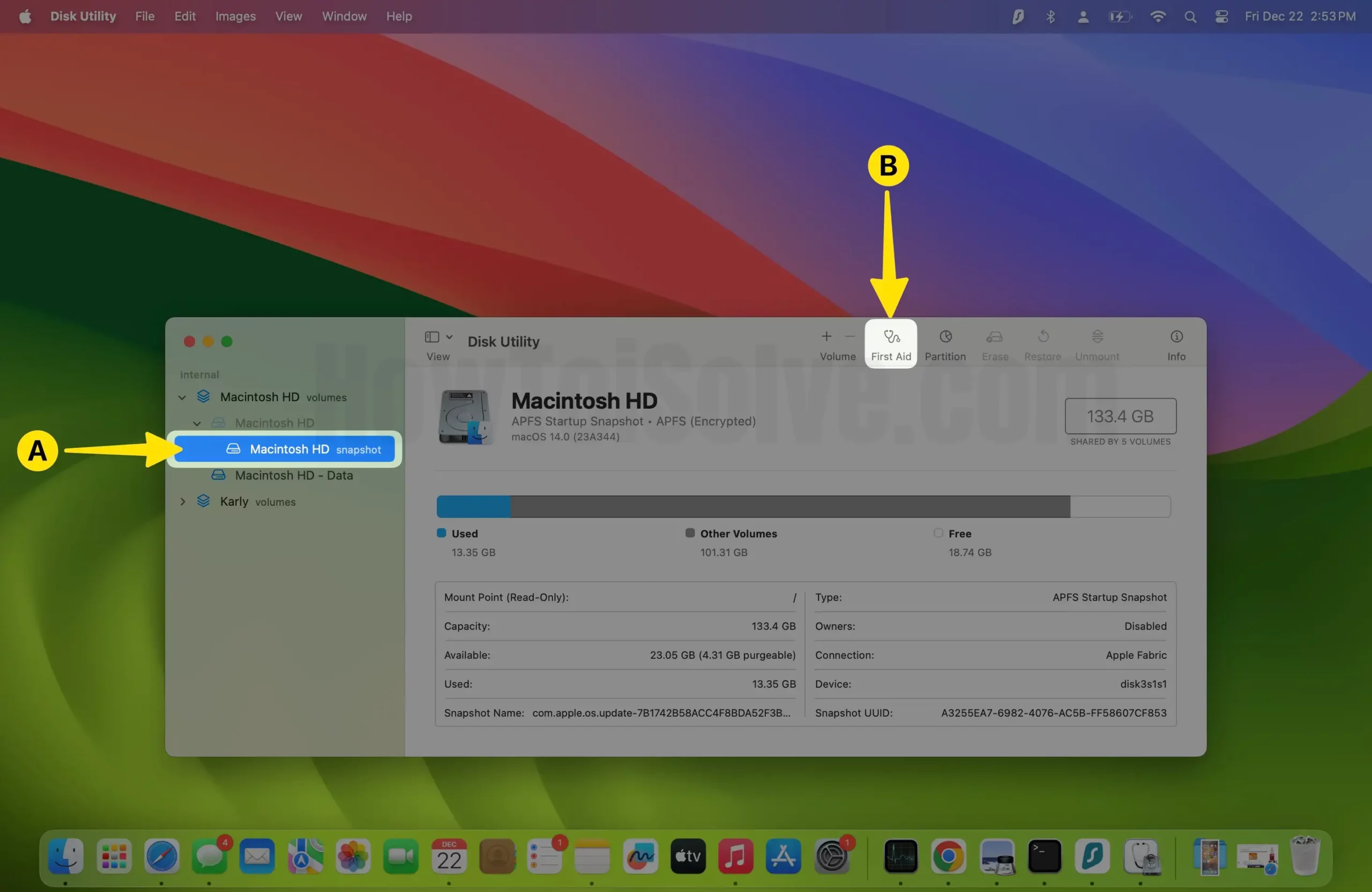
Step 3: Tap to Run for First Aid on Hard Drive.
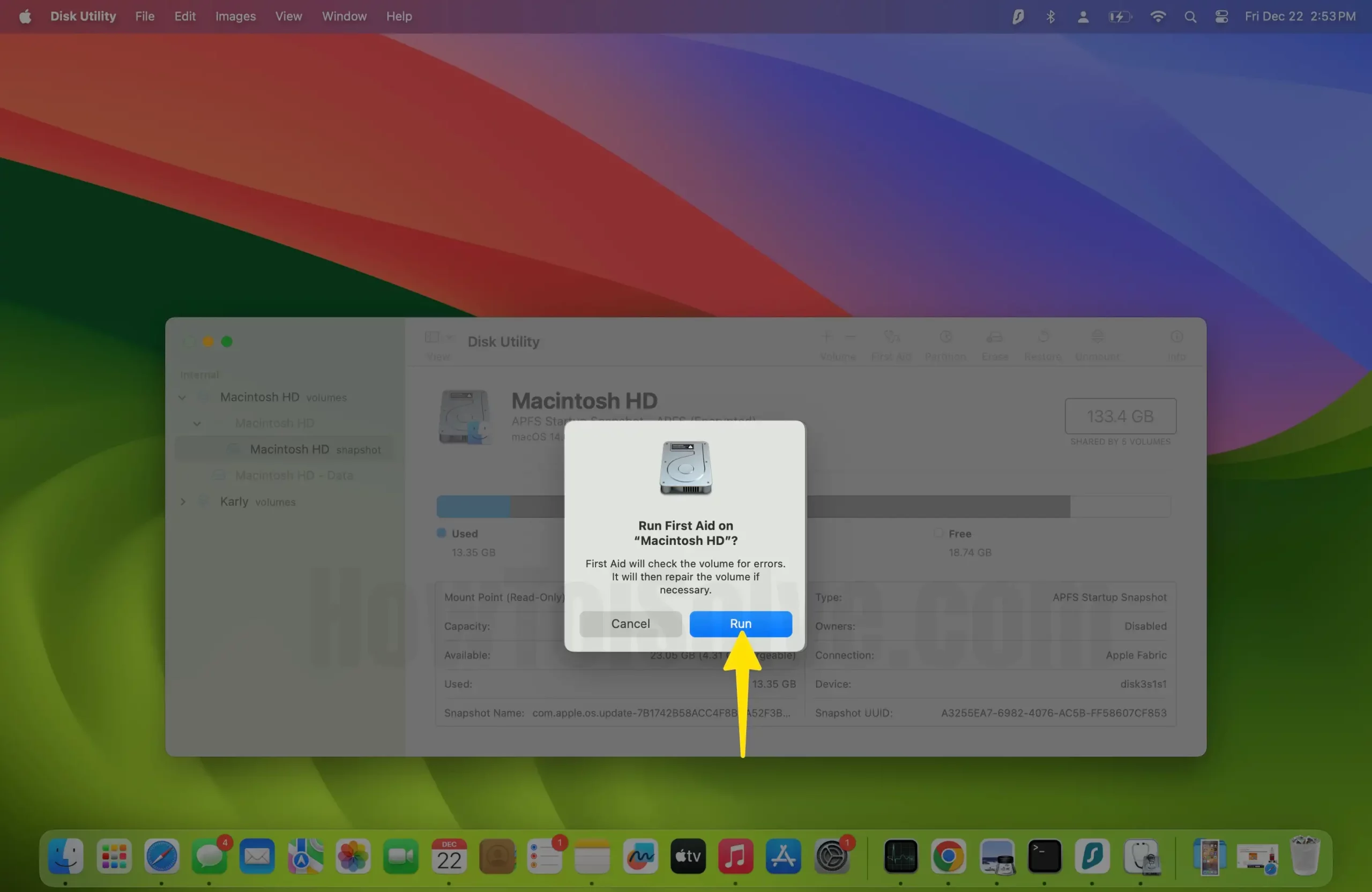
Solution # 17: Update macOS to Speed up the internet on Mac
If you haven’t updated macOS, then you might face several issues. First, the new update probably contains all the bug fixes and will also include Safari. So update the MacBook to the latest version, if available.
Step 1: Go to Apple Logo on the top menu bar > Select System Settings.
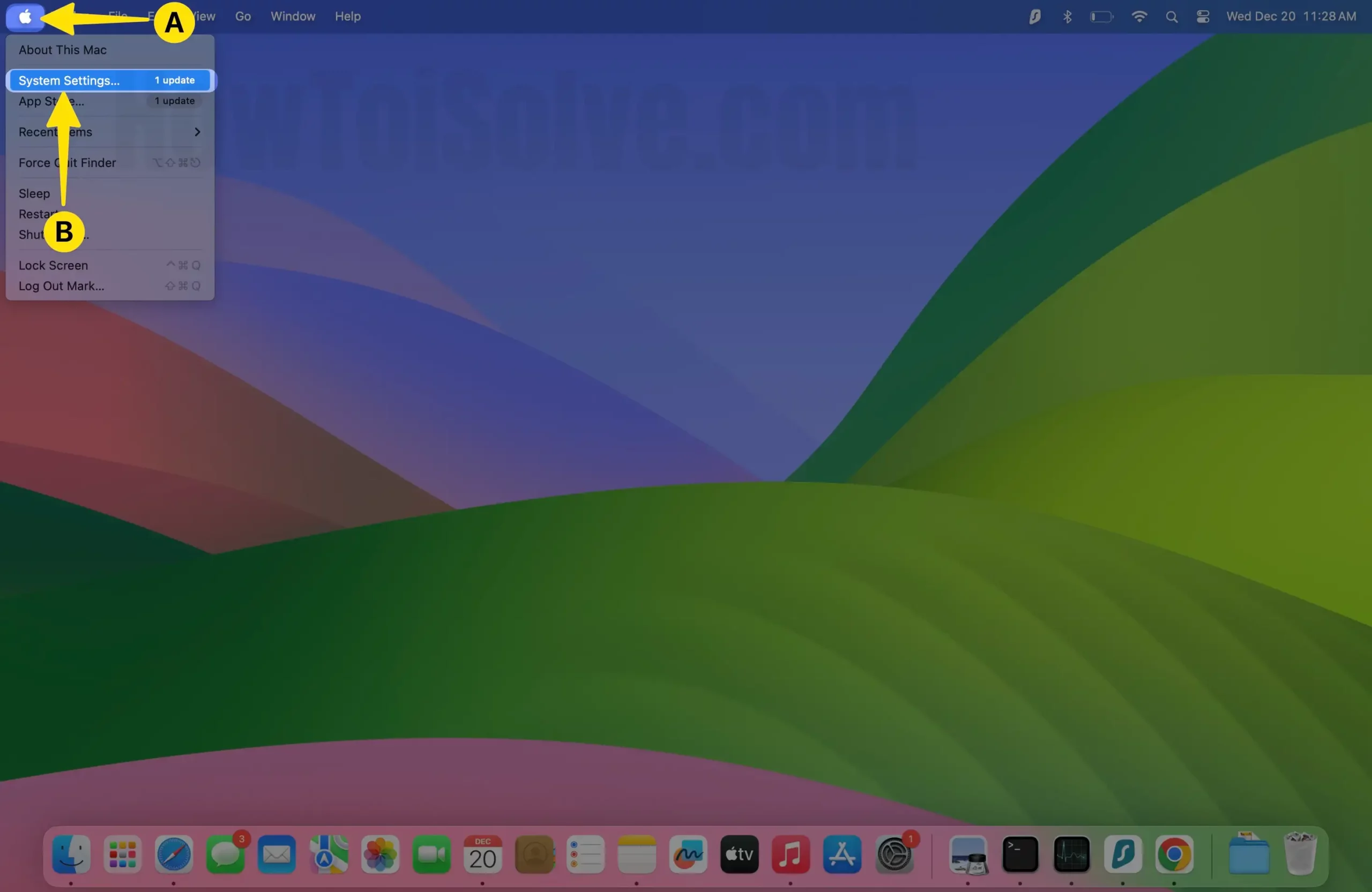
Step 2: Choose General > Tap on Software update .
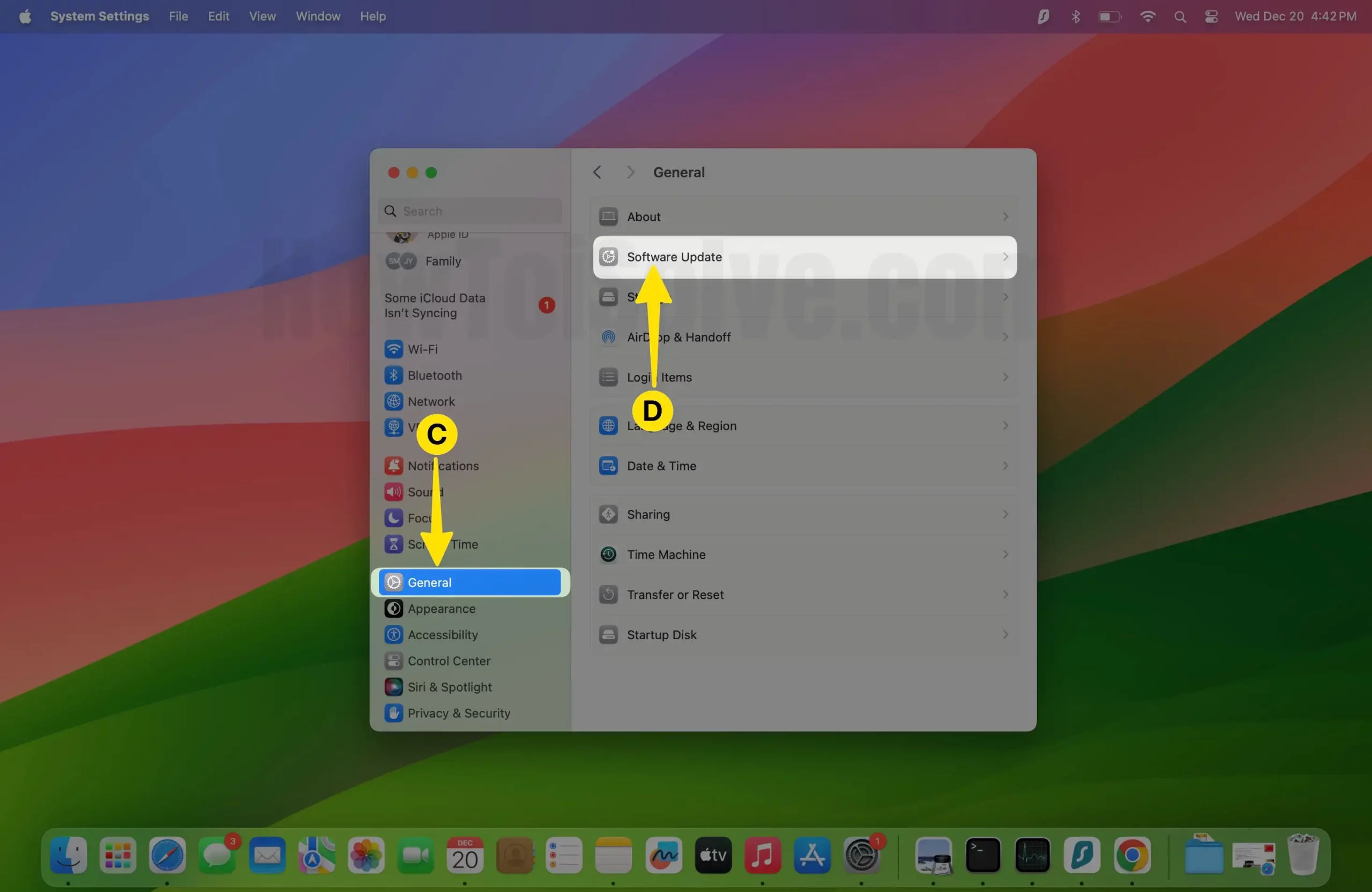
Step 3: Tap on Update Now. If any update is available – please download and install macOS.

After doing it, Check for a Safari web browser . I hope now safari will give you an accelerated experience than ever before. Or go with the following solution.
Solution # 18: Optimize Search Settings in Safari on Mac
We always accuse Safari of being slow, but it isn’t possible every time. So there is a possibility that the search browser you are using is facing situations, so Safari is running slow on macOS . If this is the problem, then we can fix it by changing the search settings.
Step 1: Launch the Safari app on your Mac > Select Safari From the Top Menu > click on Settings .
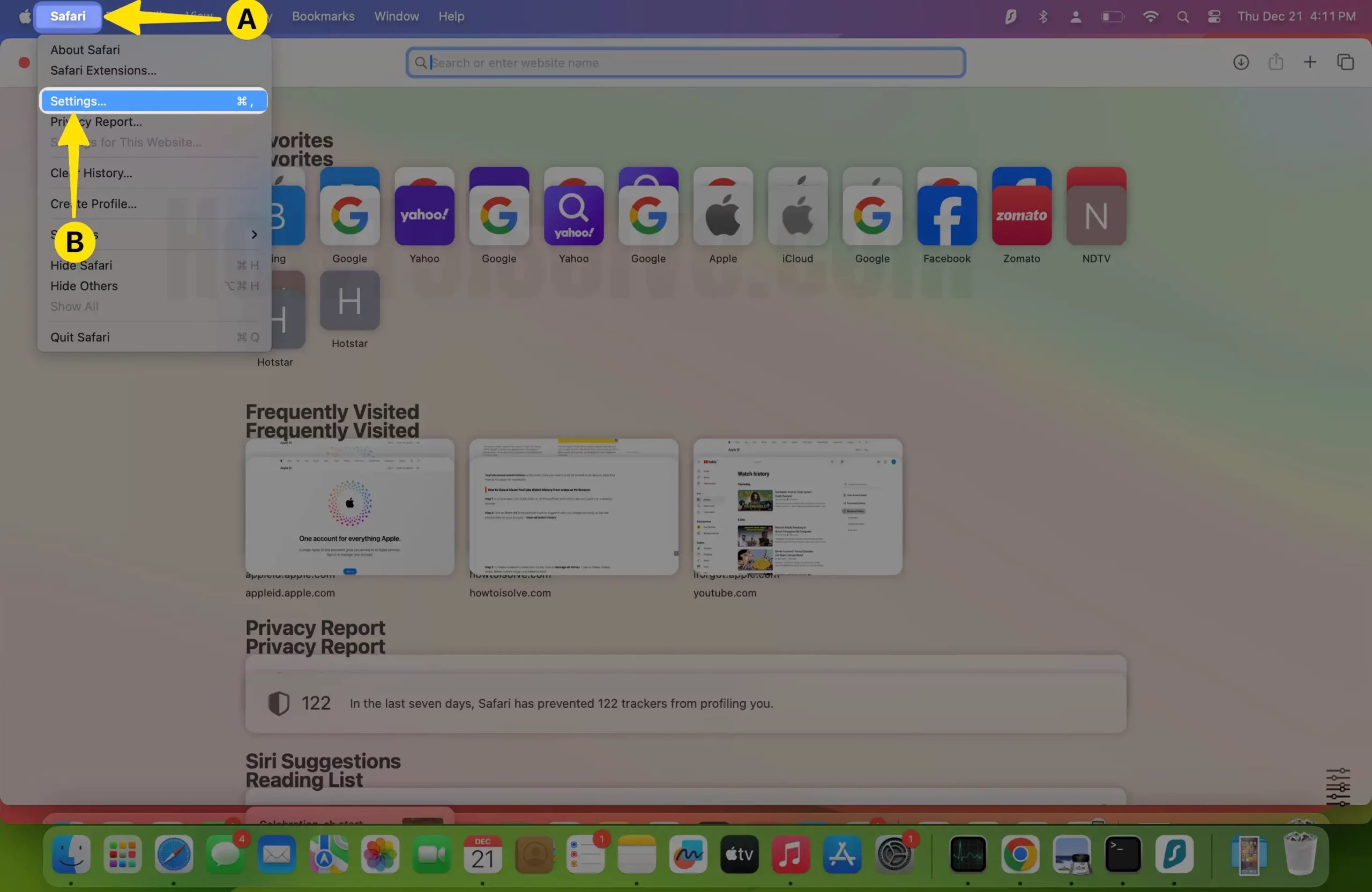
Step 2: Click on the Search Tab > Try to change the search engine to Bing.
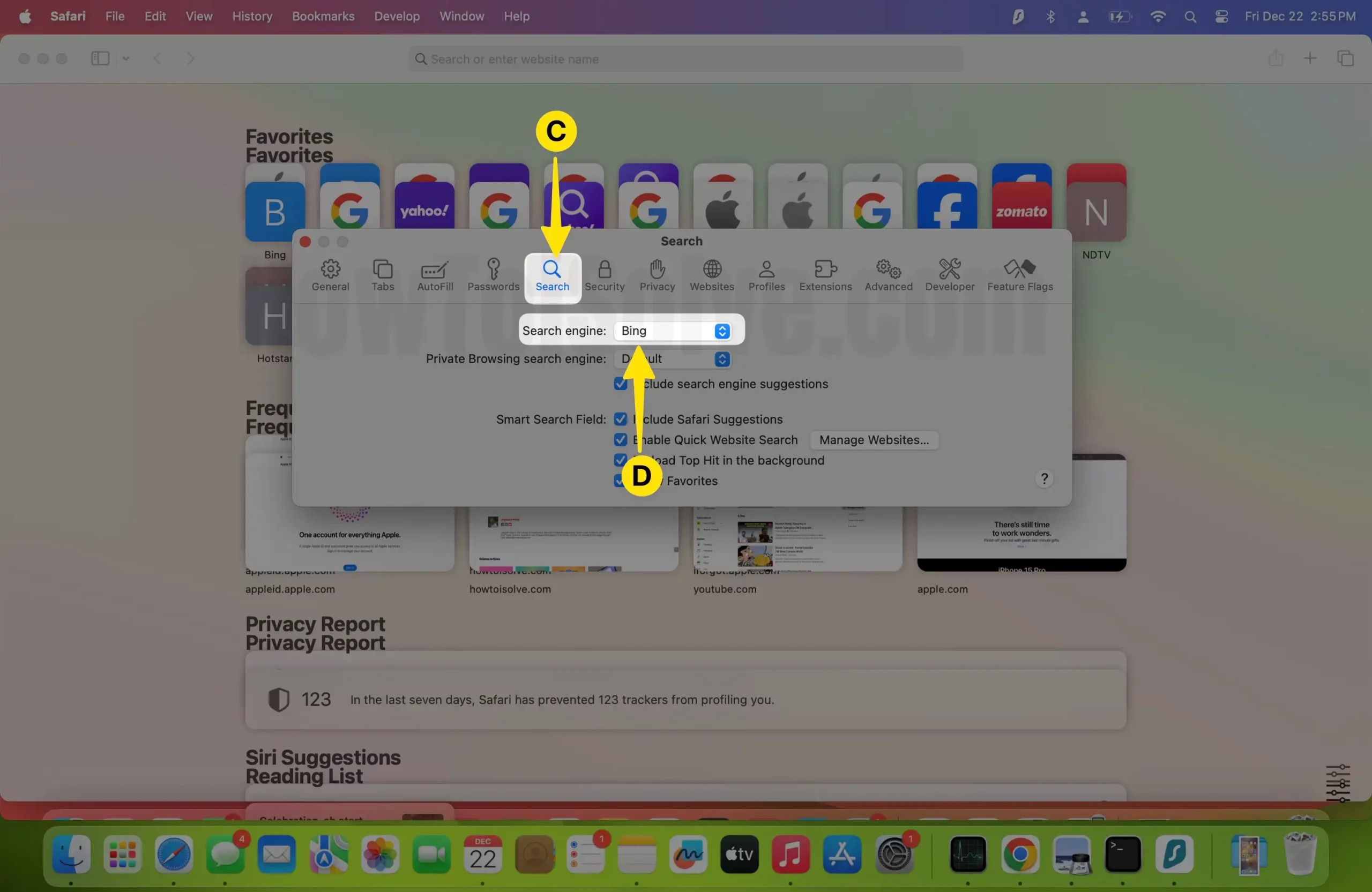
Solution #19. Upgrade Your Mac: RAM, SSD Hard Drive

Any action is not helpful from the above solutions to fix burning questions: How can I speed up Safari on Mac? I recommend upgrading the internal hard drive. Have you any technicality and experience with upgrading computers? You can do it yourself. Get strict with the Apple store or Third-Party Service center or concern with your Friends. If none of the options helped you, then, share your comment for upgrade tips. Here are the top best SSD drives to upgrade your Mac machine
Bottom Line:
None of the above workarounds is helpful, so you should submit a feedback request to Apple . So, Apple catches your Problem correctly and Gets a chance to fix it with the new macOS update.
Is there any other trick to fix Safari running very slow on Mac after an update? Let me know in the comments!
5 thoughts on “19 Fixes Safari Running Slow on Mac (Ventura, Sonoma)”
“However, the reason behind this is, the person who have Mac or iPhone they face any problem in Safari, they move to Google Chrome.
Instead, they should try to fix Safari complications”
looool. No, they should use whatever works. Safari has no excuse, I’m sorry.
PS: Yes I miss the handover and shared ios macos tabs too… but, a non-functional browser is a non-functional browser…
PS2: I am still wasting time with relogins from your fist solution… So you say I should reinstall Mojave… when there are other browsers that work just fine… again: looool
With Windows 7, Google was fast downloading. I have recently switched to an iMac and have been driven mad by the slowness downloading web pages – sometimes it sticks part way through and I get nothing. I switched to Bing – that was as slow. In desperation I tried DuckDuckGo. Pages are downloaded instantly. I have no idea why, but it work, so I’ll stick with it.
Solution 10: how do you reinstall Mojave? Thanks
For your information, I have restored Safari normal speed on Catalina by deactivating my Intego Netbarrier suite
I upgraded my MacBook Pro to Catalina a couple of weeks ago and all was good. Today I upgraded my MacAir and I basically can’t connect to the internet using the wifi that I used before to download Catalina and the same wifi that I am using on the Pro to find your website and to send this message. I tried deleting the cache and reopening Safari and restarting but still nada.
What’s up with that?
Leave a Comment Cancel reply

PowerUninstall
Weekly Sale
Why Is Safari So Slow? Top Fixes to Speed up Browsing!

Written By Jordan Baldo
Last updated: January 6, 2024
Almighty writing expert who is proficient in analyzing Mac issues and providing efficient solutions.
Just like any other browsers, Safari also has a DNS prefetching which makes your browsing experience faster. Once that it is working well when you click on a website and your browser already knows the IP address then it is ready to load the web page. This actually means a fast response.
However, you may encounter the issue that Safari slow to load . There are instances that once that Safari loads a website, the page might appear ready. But then, when you try to move it up and down, you will just see a spinning cursor. It may be caused by your system running out of application memory , or other various reasons.
Also, you will be able to notice that the refresh button is also just spinning as well. If you are experiencing this on your Safari browser, then this only means that the page was rendered successfully but there is something that is preventing it to respond.
People Also Read: Top Solutions to Firefox Keeps Crashing on Mac
Contents: Part 1. Why Is Safari So Slow on Mac and How to Fix It? Part 2. What Can You Do If Safari Slow to Load? Part 3. In Conclusion
Part 1. Why Is Safari So Slow on Mac and How to Fix It?
It is not only MacBook would run slow as time goes by, but Safari would also be slower. As we also know, Safari is actually not the fastest browser and it can get sluggish.
This is because of several reasons as to why is safari so slow or sometimes it is freezing:
- There are too much data and cache on Safari.
- Corrupted preferences.
- Extensions that have bugs.
- Autofill data.
- You have outdated plugins like Java and Flash.
- Safari slow after Catalina update.
For you to know some of the reasons why you are experiencing this, we have listed below some of the main causes and as well as the fix for each of the causes listed below.
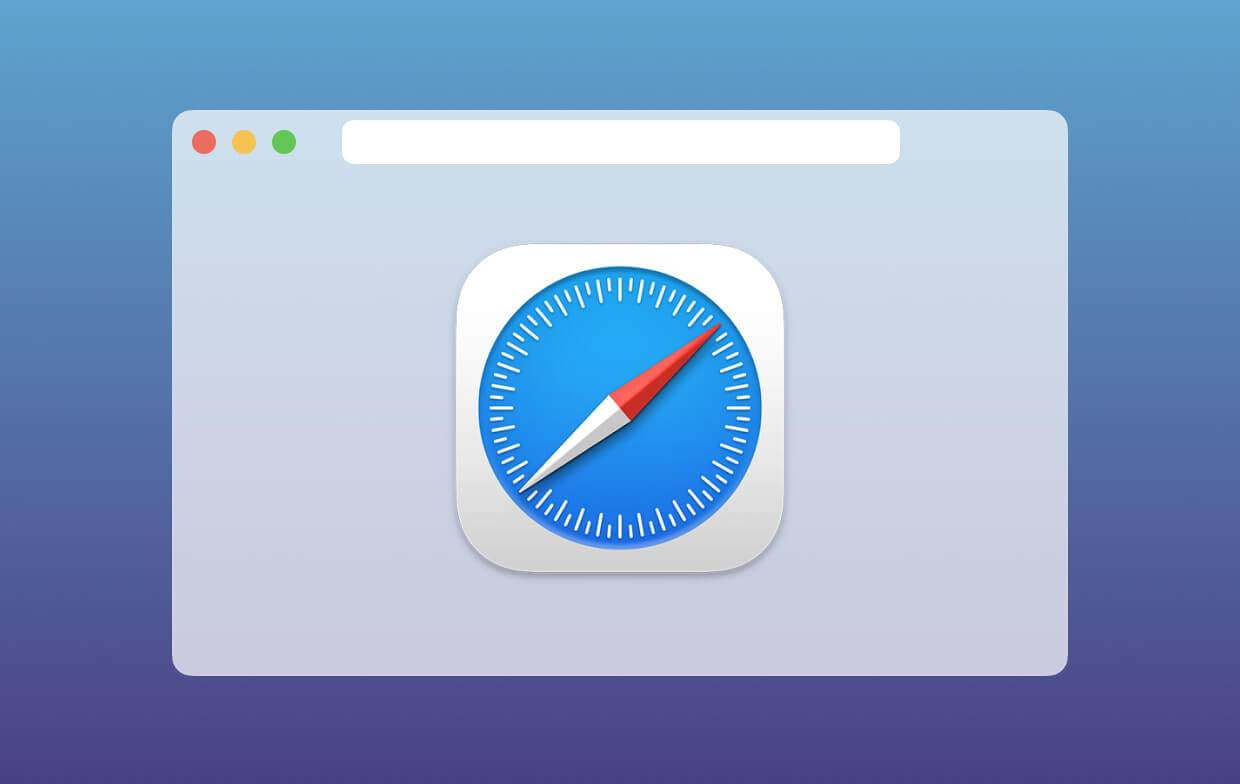
Reason 1. There Are Too Much Data and Cache on Safari
Your safari browser actually stores information of all the website that you have visited so if you are an average type of user then there might be a lot of data stored in your Safari browser.
Aside from the stored website that you visited, there are also other aspects like HTML files, and images that are all saved in your cache which is actually another burden for the browser resulting in a slow response whenever you try to use it. Here is the fix for this.
How to Clear Your Browser’s History and Cache:
PowerMyMac's Privacy is one of the best browser cleaners today. This is the perfect tool that you can use for you to improve your online experience when using your Safari browser. It can clean up your junk files, cookies, and your history on your browser . It can also remove any deceleration reasons and can clear up privacy traces for you to help protect your confidential data.
Here is how to use the iMyMac PowerMyMac 's Privacy:
- Download PowerMyMac then have it installed on your Mac.
- Launch the program to choose Privacy and scan your browsing data.
- Once that the scanning process is complete, you will see a list of browsers that you have on your Mac.
- Choose Safari and select the browser cache, histories, browser cookies that you want to clean up .
- Click on the CLEAN button and PowerMyMac will begin to clean up your Safari browser.
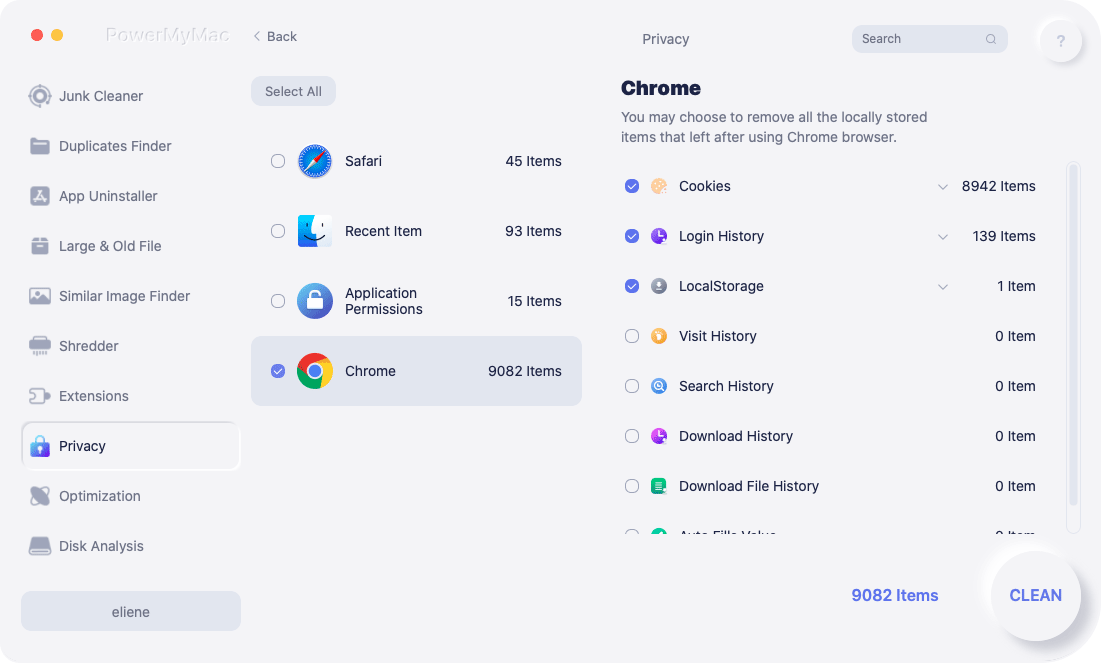
If you need the manual methods to fix Safari slow to load, we also provide:
Clear your Safari’s history:
- Launch your Safari browser on your Mac.
- Then click on History in the menu bar.
- Choose the Clear History option
- Choose the time span and then click on the Clear History button again.
Doing the steps above can help you clear out your history in your Safari browser. However, if in case you do not want to lose your browser’s history and you only want to get rid of your cache, then here is what you should do.
- Launch your Safari browser on your Mac
- Click on Safari in the menu bar.
- Then, click on Preferences
- Choose the Advanced tab.
- Then put a checkmark on the Show Development menu in your menu bar.
- Click on Develop from the menu bar.
- After that, choose Empty Cache.
Tip: In case the Safari is quite slow and you want to uninstall it and then reinstall it again, you can also use this app uninstaller to completely remove it .
Reason 2. Corrupted Preferences
Once that you have assigned a homepage or search engine or if you choose where you would want to save all your downloads from your Safari browser, it is all stored in a preference file.
Because of this, once that this file becomes corrupted, then this will start an issue on your browser. If you are experiencing any issues in using your Safari browsers such as lags or freezing, then there is a tendency that the problem is with preference. Here is how you can fix this.
How to Remove Your Preference File?
Here, once that you have deleted those corrupted preference file, then your browser can easily generate a new one. Here is how you can do this.
- Close your Safari browser.
- Launch Finder on your Mac and use these keys: Command + Shift + G .
- Then enter the following in the pop-up and press Enter: ~/Library/Preference/
- Then, go ahead and look for the file name “ com.apple.Safari.SafeBrowsing.plist ” and then click Delete.
Reason 3. Extensions That HaveBugs
Your extension has a lot of extras in your Safari browser such as it stored passwords or it can translate words with just a single click. However, since it is a third-party add-on, then this could have an effect on the performance of your Safari browser.
How to Delete your extensions?
For you to be able to determine which is causing a problem to your Safari browser, go ahead and run a test. Here is how.
- Choose Safari in your menu bar.
- Choose Preferences.
- And then, choose the Extension tab.
- Uncheck all the extensions one by one and find out if the problem will be gone.
- Once that you have determined the problem, just go ahead and click on the Uninstall button beside the extension in the Preference tab.
Reason 4. Autofill Data
Autofill is one of the handiest features especially when it comes to your passwords and phone number. But, if you have tons of data in your autofill, then there is a chance that your Safari might freeze up. For this, you can just simply turn it off or you can disable those that you do not need.
How to Remove Autofill History?
Here is how you can manage your autofill.
- Launch the Safari browser on your Mac.
- Then click on Preferences in the menu bar.
- Then choose the Autofill tab.
From the autofill tab, you will be able to disable any user for your Autofill. Just go ahead and click on the Edit button and you will be able to see all the data that is stored in your autofill. From there, just go ahead and delete the autofill that you no longer want and need.
Reason 5. You have Outdated Plugins like Java and Flash
As what we all know, several websites actually require you to have a Flash or Java on your Safari browser for you to be able to play videos or any animated content on the website that you are visiting.
However, once you have an outdated plugin on our Safari, then this could affect the performance of your browser.
How to Update Your Java and Flash Player?
Now, this is a very simple solution. Since you have an outdated Flash or Java, then all you need to do is to have it updated. For you update your Flash player to the most recent version, then the best way to do this is by going to the Adobe’s website.
This is because once you visited their site, it will immediately identify if you have an updated or an outdated version of your Flash player.
For you to be able to update your Java, just go ahead and go to the Oracle’s website. From there, you will be able to see if you have the updated version. If you do not have the updated version, then the website will give you instructions on what you should do.
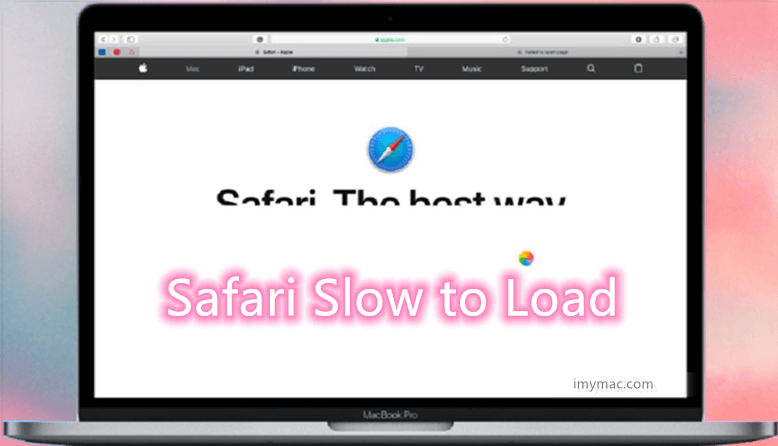
Part 2. What Can You Do If Safari Slow to Load?
You may be so confused about the slow loading problem of Safari. Don't worry, you can check how to quickly and securely solve Safari slow to load below:
- Change your search setting.
- Change your network service order.
- Turn off your dashboard.
Change Your Search Setting
This is one of the things that you can try once that you are experiencing that Safari Slow to load. Here is how you can change your search settings.
- Launch Safari on your Mac and then go to the Preference tab.
- After that, click on the Search tab.
- Then, change your search engine into Bing.
- After changing your search engine, close Safari and launch it again.
- Check if there is any difference between its performance.
- After that, do the same steps and change your search engine into Google.
- Then, try to check it again.
Here, you can also uncheck all the options such as your search engine suggestions, Safari suggestions, quick website search and more. This is for you to be able to see any difference that will happen.
Change Your Network Service Order
If in case that you have a machine that is connected to your Wi-Fi and your Ethernet, then there is a possibility that the cause if you are connected to two different ways.
All you have to do here for you to check is go to your System Preference and then choose Networks. From there, go ahead and try to disconnect one of your network sources and try to run your Safari browser for you to see any difference.
Turn off Your Dashboard
If you are still using a 2010 Mac or earlier, then this could mean that you have a graphics card issue. Because of this, you can go ahead and try to use other things and see if it will help improve the performance of your Safari browser.
This is by disabling your Dashboard feature in your Mission Control Settings. For you to do this, just go ahead and launch your System Preferences. After that, go ahead and click on Mission Control. From the drop-down box located beside Dashboard, go ahead and toggle it off.
Part 3. In Conclusion
As you can see, there are many reasons as to why your safari running slow. Keep in mind that the Safari browser is just like those other browsers that you have installed in your Mac. It can also get stuffed. Besides that, you may also encounter Safari loading slow on your iPhone.
Once that a browser is full of all the activities that you made using your browser, then they are actually stored there and those will greatly affect the performance of your browser. Because of this, it is advisable for any Mac users to have a browser cleaner installed on their Mac to maintain the speed and high performance of the Safari browser so that you won't suffer Safari Slow to load.
PowerMyMac is clearly the most recommended software that you must have to maintain everything on your browser. This software does not just work on your Safari browser but it can also work with any browsers that you have or help remove Apps on Mac.
In other words, once that you have removed everything that is not needed in your browser, then this could be a great help with its performance.
Rating: 4.7 / 5 (based on 88 ratings)

Clean up and speed up your Mac with ease
People Also Read:
Comment( 10 )

Clemilton 2023-02-15 04:06:29
Excelentes dicas. Melhorou o desempenho. Obrigado

JohnIL 2022-06-03 00:23:47
Safari in my experience has intermittent issues affecting loading of web sites. Is it a compatibility issue or something on the web sites that doesn’t play nice with Safari? That is possible since many say other browsers are not affected. This would rule out the OS or hardware or network. But would place the focus on Safari as the issue. Since Safari is purely a Apple OS boy browser. It could be a case that Apple is not following certain standards or adopting them as other browsers have.

Ro Gal 2020-11-05 22:04:40
Tried all the 5 steps and more to no avail. This is a new Macbook Air w/plenty of juice and the latest updates. Safari is just too slow on many sites, so back to Chrome and Brave.

Carl 2019-11-21 10:12:58
There are lots of data stored in my Safari browser, luckily, I have tried Mac Cleaner to clean up cookies and history on my browser, and it runs fast now. Thanks!

iMyMac 2019-11-21 10:55:08
Thanks for your support!

Larissa 2019-11-21 10:06:12
I suffered Safari running slow on my Mac for a long time, thanks for the tips, will try.
iMyMac 2019-11-21 11:02:06
Hope these tips do really help you.
Copyright © 2024 iMyMac. All rights reserved.

You're almost done.
Subscribe to our best deals and news about iMyMac apps.
Warm Prompt
This software can only be This software can only be downloaded and used on Mac. You can enter your email address to get the download link and coupon code. If you want to buy the software, please click store .
This software can be used on Mac and Windows. You can enter your email address to get the download link and coupon code. If you want to buy the software, please click store .
Please enter a valid email address.
Thanks for your subscription!
The download link and coupon code has been sent to your email [email protected] . You can also click the button to purchase the software directly.

Safari Slow on iPhone and iPad? Here are 8 Solutions to Fix It
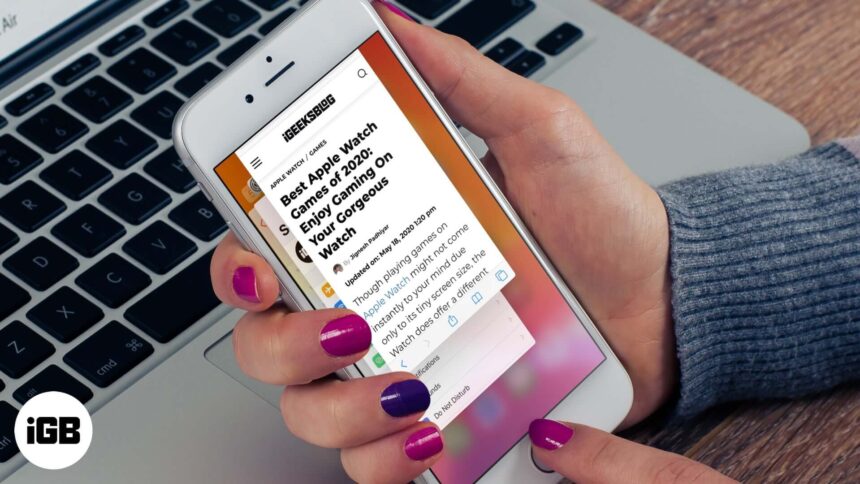
We all want fast browsing on our iPhone. Safari is the default iOS browser, and we love using it. However, for some, it may run slow or crash and provide an overall degraded browsing experience. If you are one of them, follow these tips to fix Safari running slow on iPhone and iPad.
- Close Unnecessary Safari Tabs
- Clear History and Website Data
- Force Quit Safari and Restart It
- Turn Off Javascript
- Disable Safari Suggestions
- Disable Background Tasks
- Update iOS on iPhone or iPad
- Reset Network Settings
1. Close Unnecessary Safari Tabs
If you have multiple open tabs, you can close them all in one go .
To close all Safari tabs at once, long press on the two-square icon from the bottom right of Safari. Next, tap on Close All [number] Tabs.
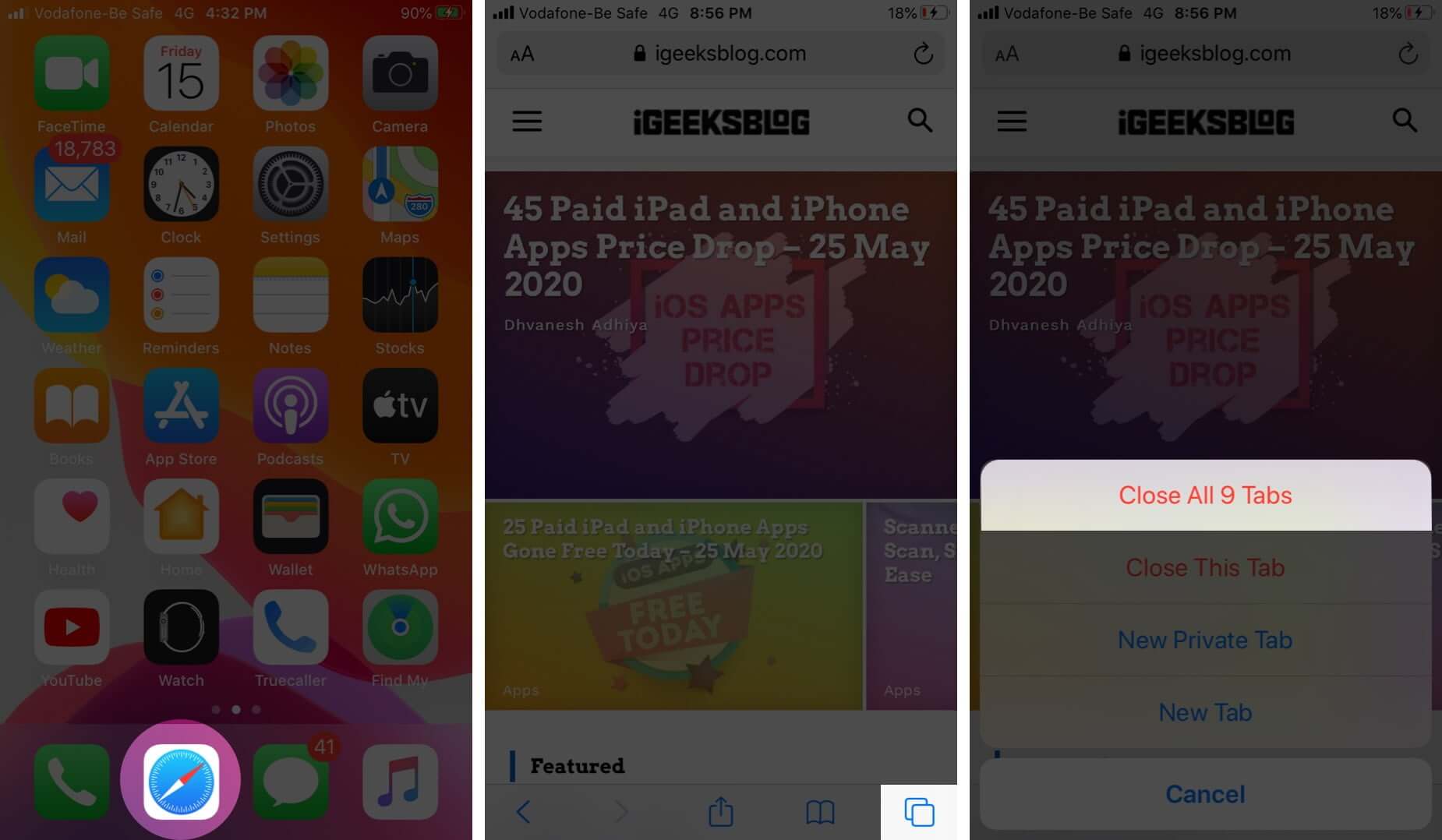
2. Clear History and Website Data
It is quick and easy to clear Safari history and website data . For this, open the Settings app, scroll down and tap on Safari.
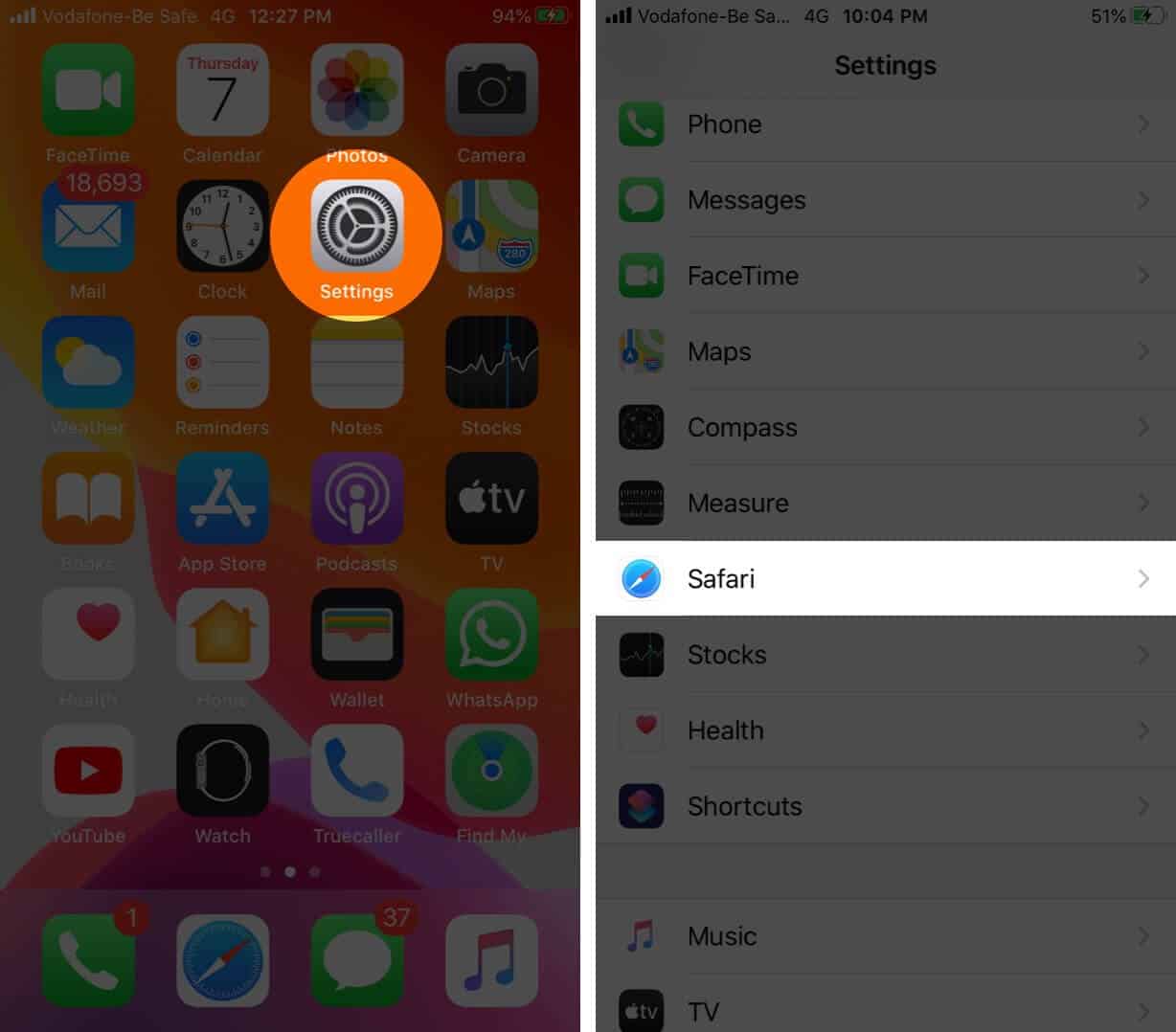
Next, tap on Clear History and Website Data and confirm your action.
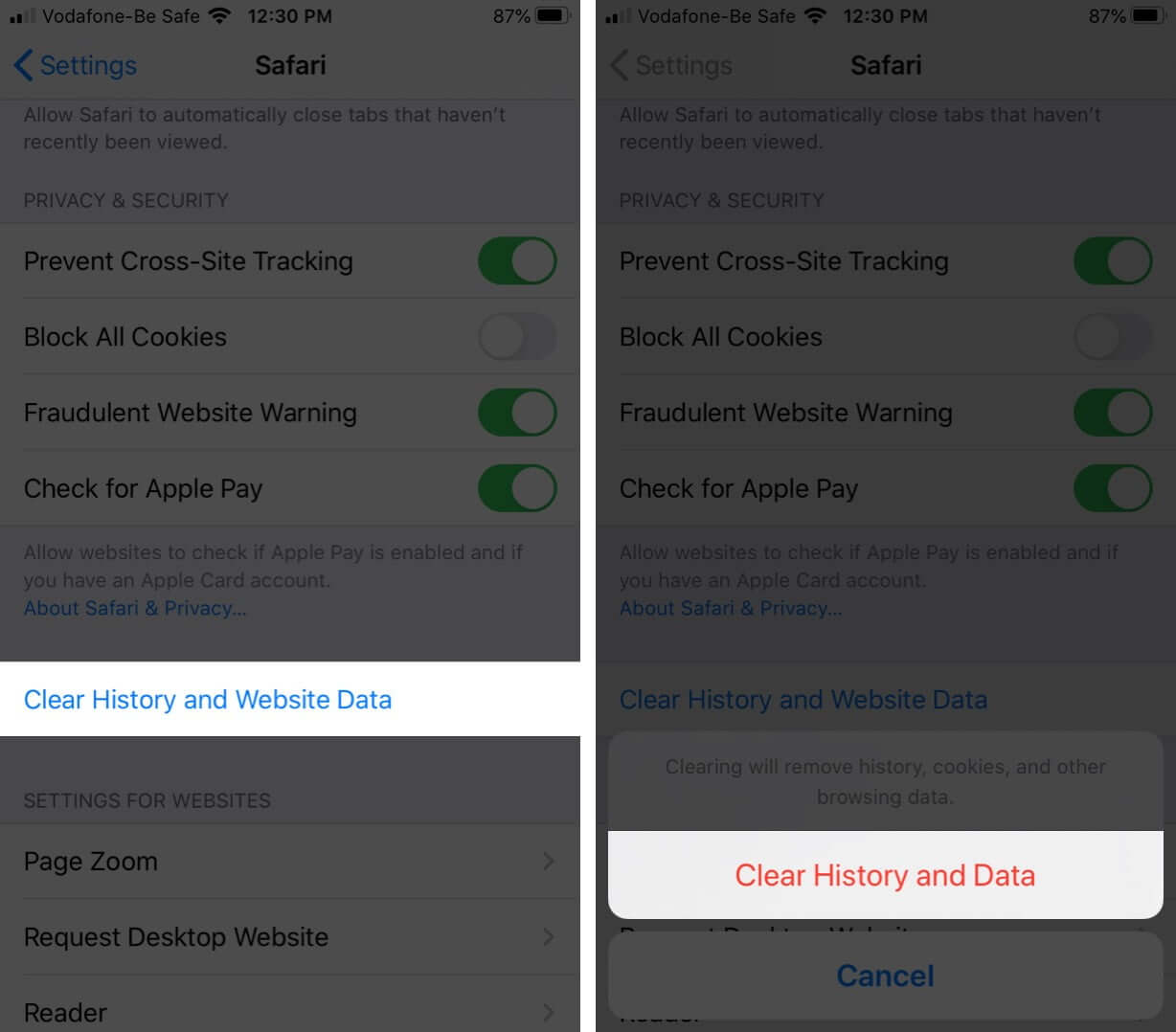
3. Force Quit Safari and Restart It
On iPhone and iPad with Face ID, swipe up from the bottom of the screen and hold. On devices with Home button, quickly double press it. Now, drag the Safari app card up to force close the app . After a moment, relaunch Safari.
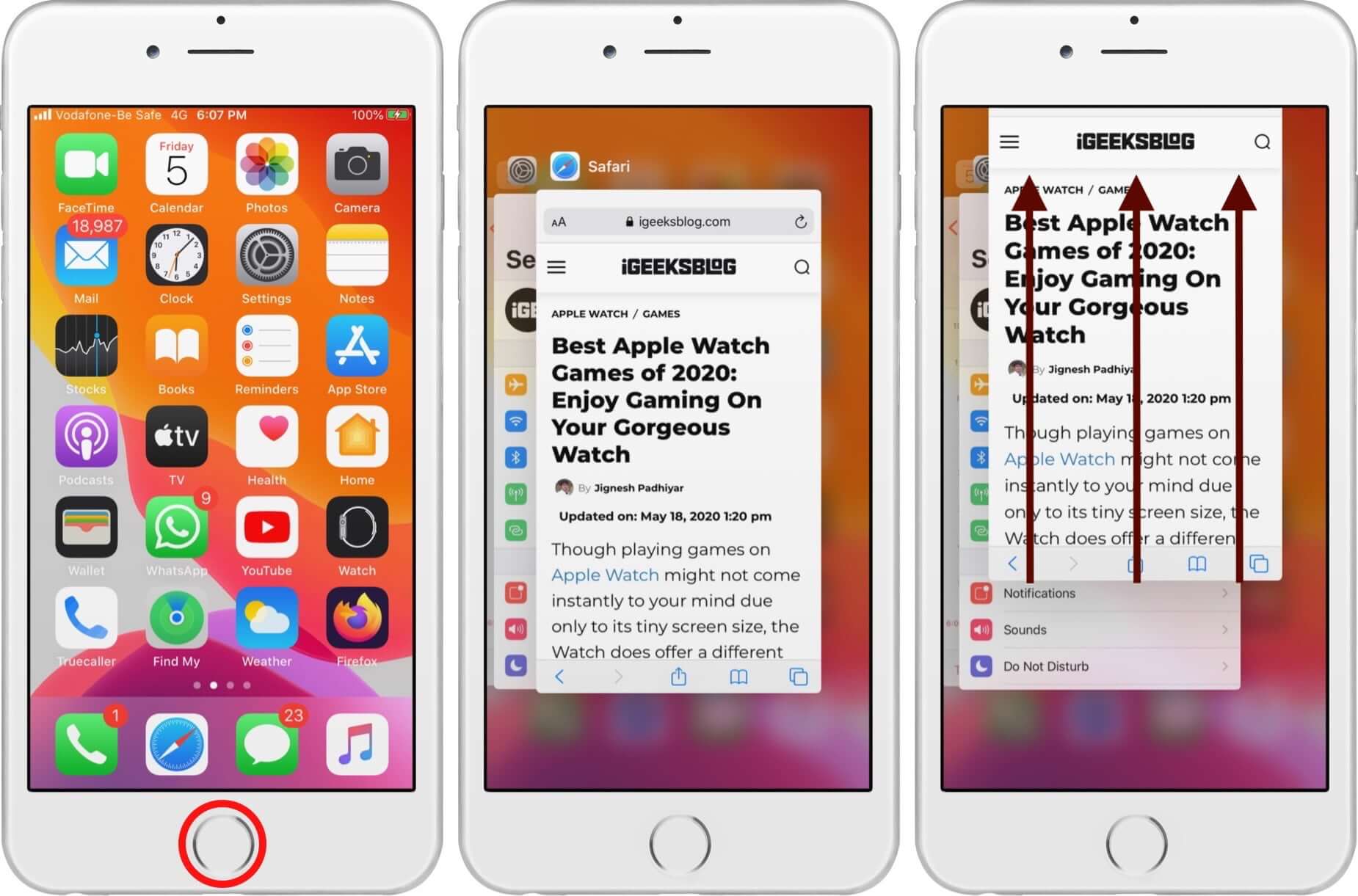
4. Turn Off Javascript
- Tap on Advanced from the bottom
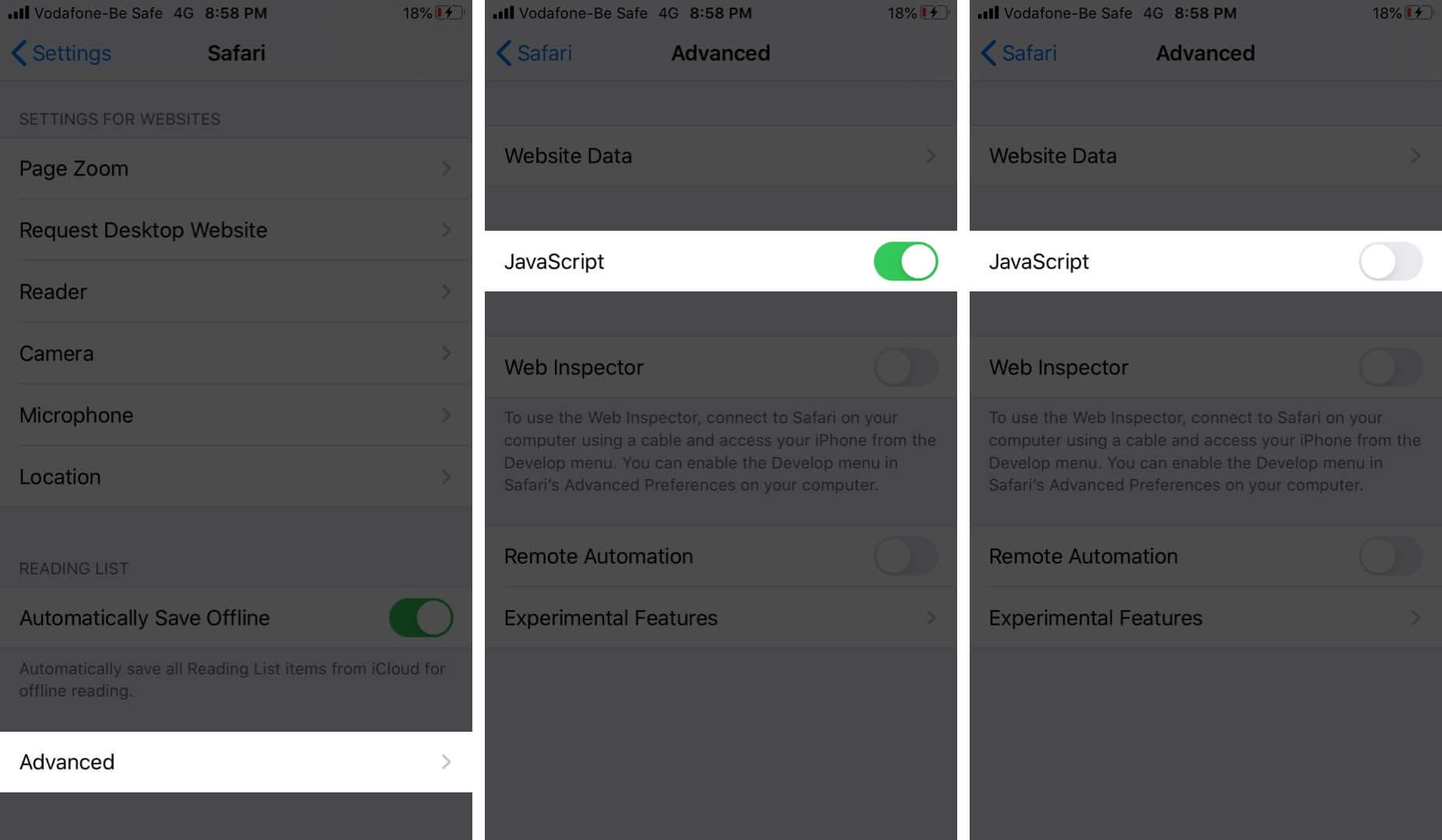
5. Disable Safari Suggestions

6. Disable Background Tasks
One reason Safari feels slow can be due to background tasks. Turning off automatic iOS updates and app updates might help. Secondly, disabling Background App Refresh may also boost the Safari performance.
To switch off automatic app update , tap on iTunes & App Store inside the Settings app. Disable the toggle for App Updates.
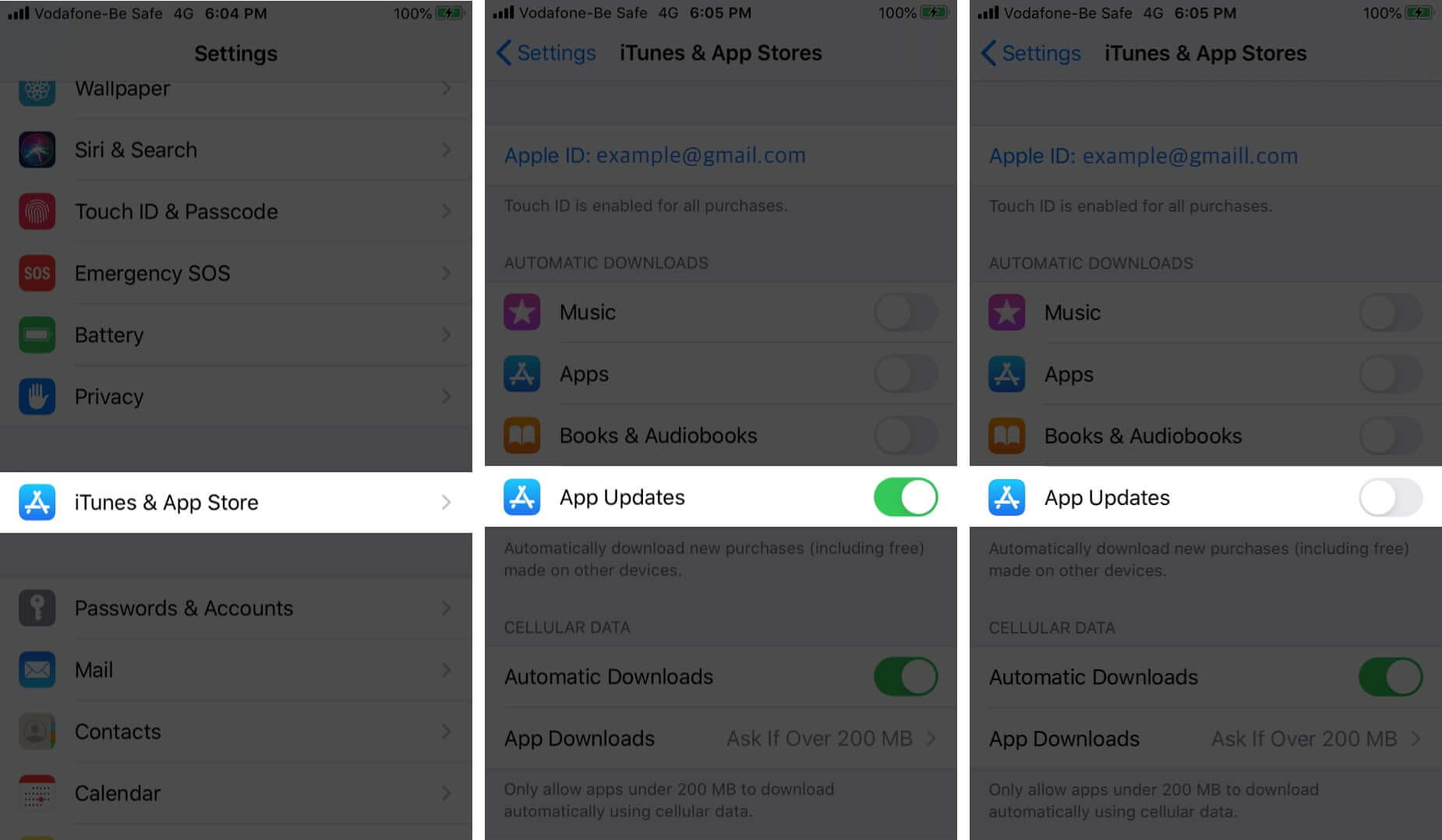
For turning off Background App Refresh , open the Settings app, and tap on General. Tap on Background App Refresh. On the next screen, you can turn it off for individual apps.
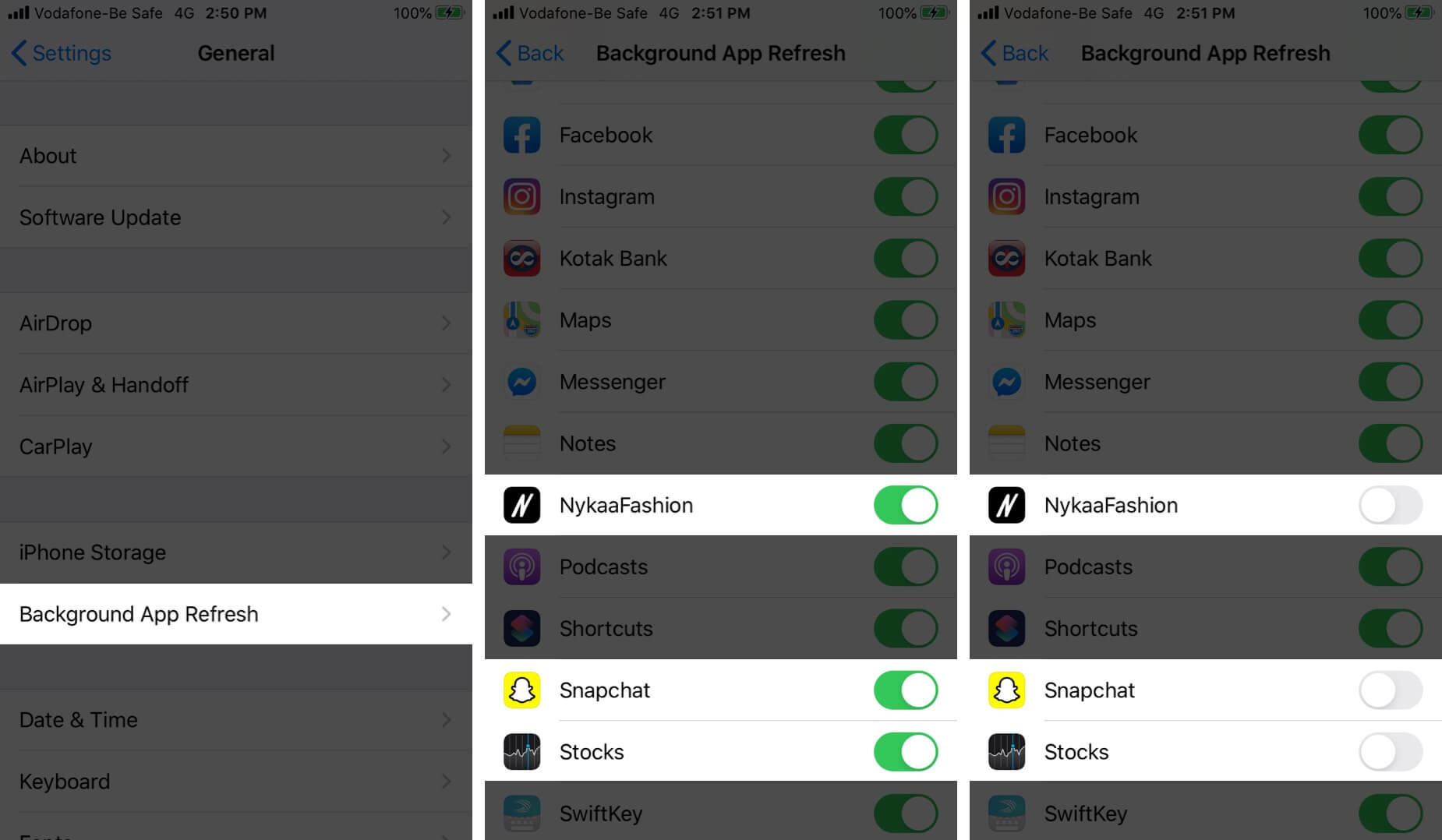
You may also disable it entirely by tapping on Background App Refresh and choosing Off.
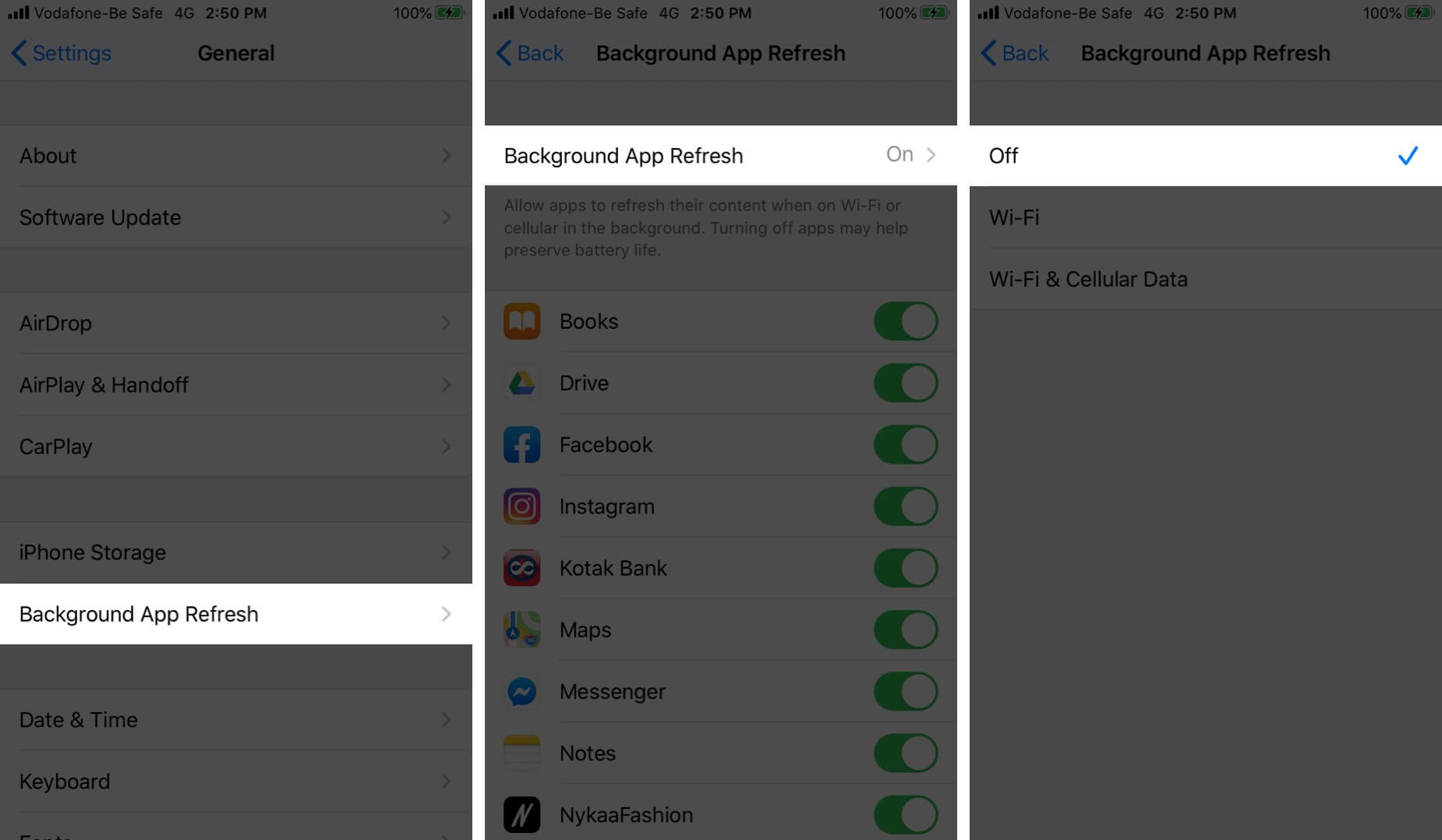
7. Update iOS on iPhone or iPad
Safari is a core app, and its updates, fixes, and improvements are handled directly via iOS software updates. It is good to run the latest version of iOS on your device. To update, open the Settings app and tap on General. Next, tap on Software Update , and if you have a pending update, tap on Download and Install.
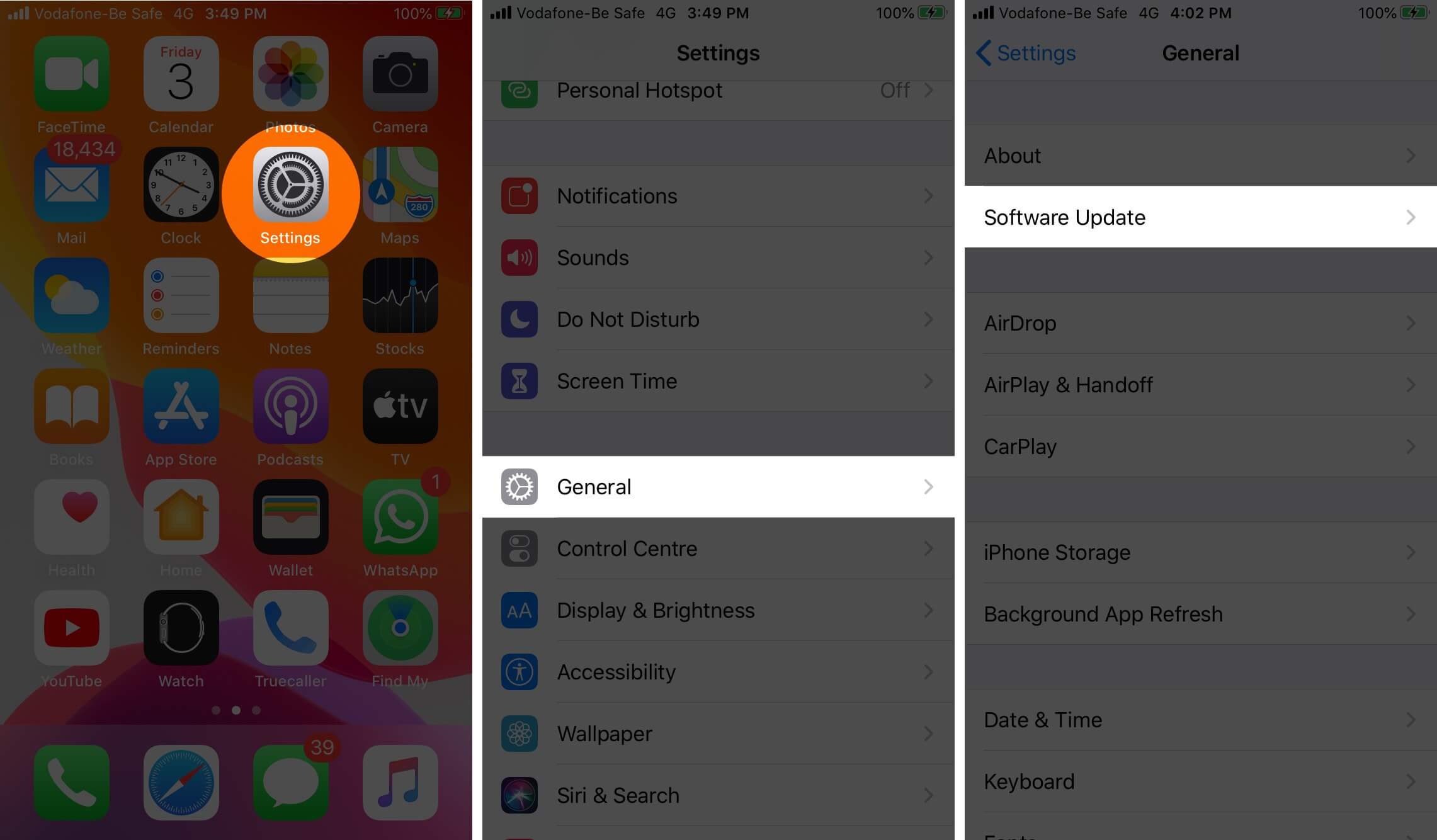
8. Reset Network Settings
In case, nothing helps, a reset of the network settings might come to the rescue. This will not delete any personal data. It will, however, erase saved Wi-Fi networks, Bluetooth devices, VPN configurations, and other such network settings. Before you proceed, it is recommended that you backup your device to a computer or iCloud.
To reset the network settings, open the Settings app, and tap on General. Scroll to the end and tap on Reset.
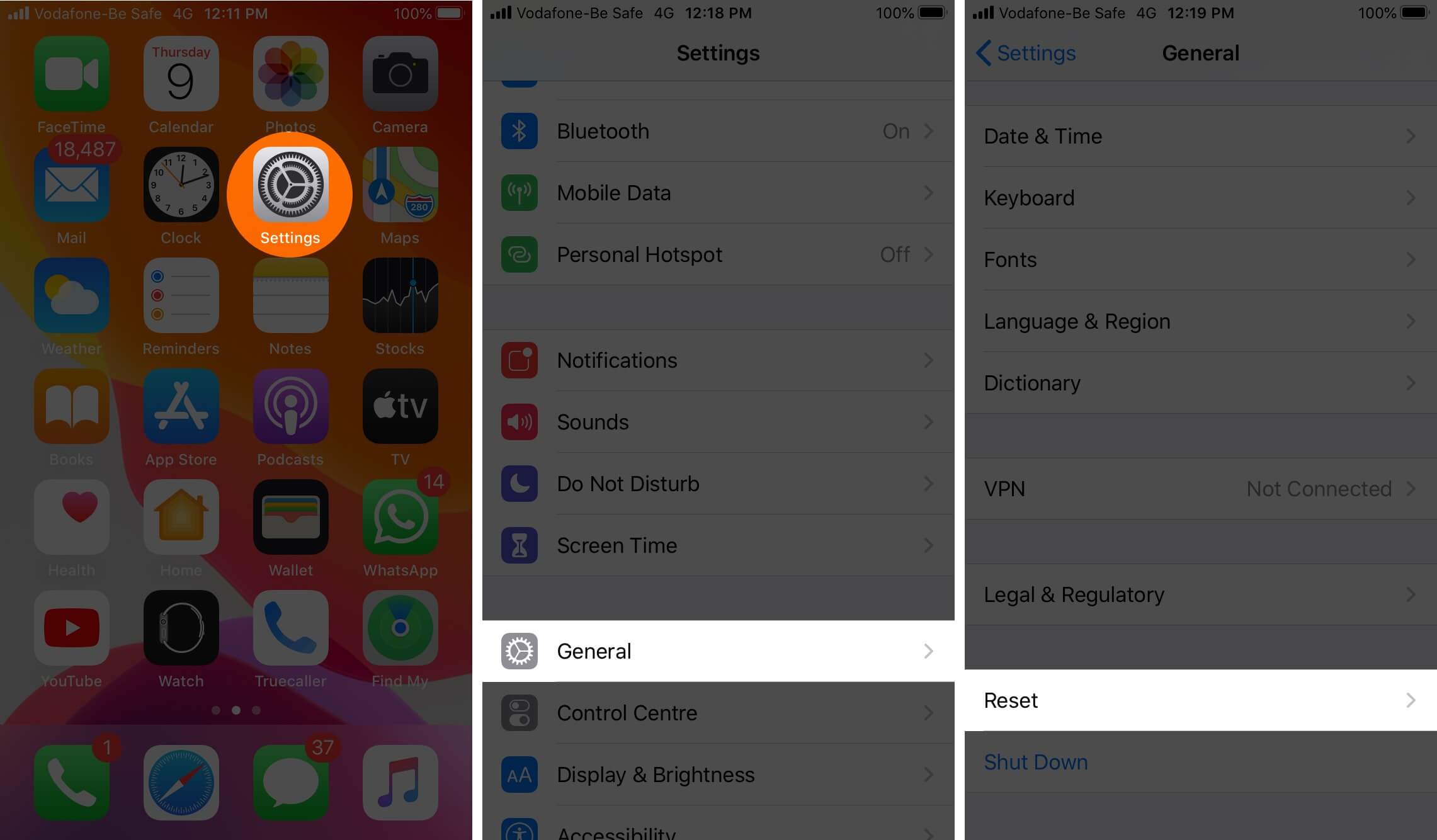
Next, tap on Reset Network Settings. Enter your iPhone password and confirm the reset.
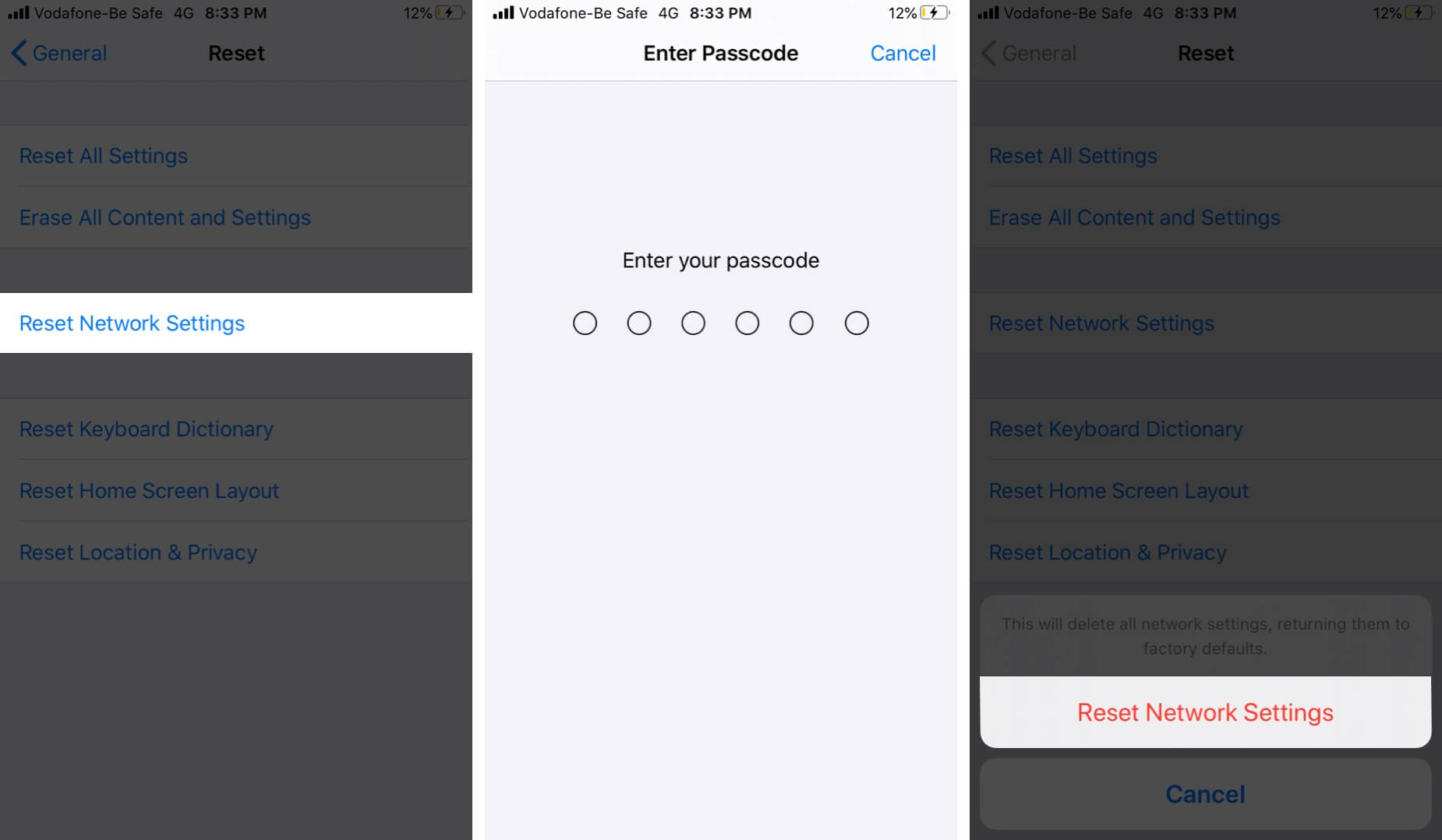
Signing off…
These are some of the effective solutions to fix the problem of slow Safari. You may also try to use Safari in Private tabs . Lastly, if you remain unsatisfied with Safari, you may consider trying some other reliable browsers for iOS and iPadOS .
You would like to read these posts as well:
- How to Translate Webpages in Safari on iPhone and iPad
- How to Delete Frequently Visited Sites in Safari on iPhone
- Best Safari Extensions for iPhone and iPad
- How to Request Desktop Site in Safari on iPhone or iPad
🗣️ Our site is supported by our readers like you. When you purchase through our links, we earn a small commission. Read Disclaimer .
Leave a Reply Cancel reply
Your email address will not be published. Required fields are marked *
Save my name, email, and website in this browser for the next time I comment.
- Apple Watch
- Accessories
- Digital Magazine – Subscribe
- Digital Magazine – Log In
- Smart Answers
- M3 MacBook Air
- New iPad Air
- iPad mini 7
- Next Mac Pro
- Best Mac antivirus
- Best Mac VPN
When you purchase through links in our articles, we may earn a small commission. This doesn't affect our editorial independence .
How to speed up Safari

Safari is one of the fastest browsers around, both on the desktop and mobile, but over time it can become a little clogged up. Keeping things ship-shape involves a touch of maintenance now and then, so here are a few tips to ensure that Safari stays as quick as it can be.
If you’re experiencing problems with your Mac being sluggish overall, then you might also want to take a look at How to speed up a slow Mac guide. And there’s also How to speed up a slow iPhone for those on iOS.
Safari on iOS
Reboot the app.
The easiest solution for an underperforming app is often to shut it down and load it back up again. To do this, double-click on the Home button to bring up the recently used apps menu.
iPhone X users have a different method, which involves swiping the little bar at the bottom of the screen upwards then holding onto it until the recently used apps appear.
Now swipe up on Safari to close it. Tap the Home button once more to get back to the Home screen, or swipe up from the bottom on the iPhone X, then launch Safari. If things go well, it should now be back to its former glory.
Clear the History
One quick thing to try if you find your iPhone or iPad are struggling with Safari is to clear the history. As you use the browser it stores information about sites it visits, and this can build up over time. A good clean now again can improve performance and speed things up.
To clear the history, open the Settings app then scroll down until you find Safari. Tap on this, scroll down again, and you should see Clear History and Website Data written in blue.
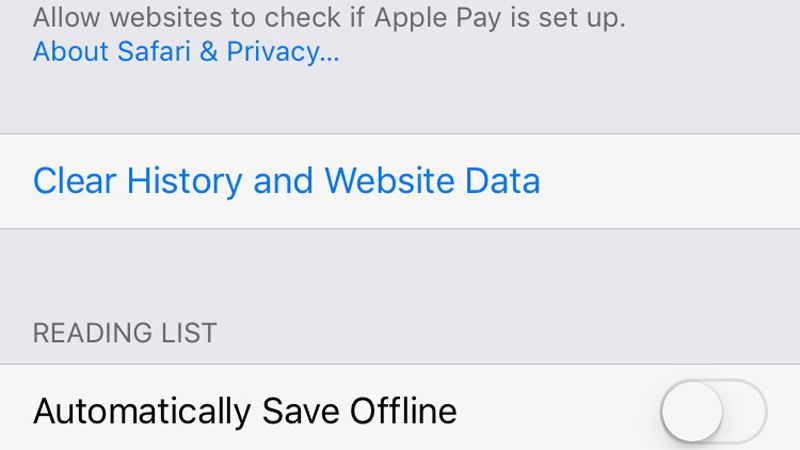
Tap this, and when you see the popup menu appear select Clear History and Data.
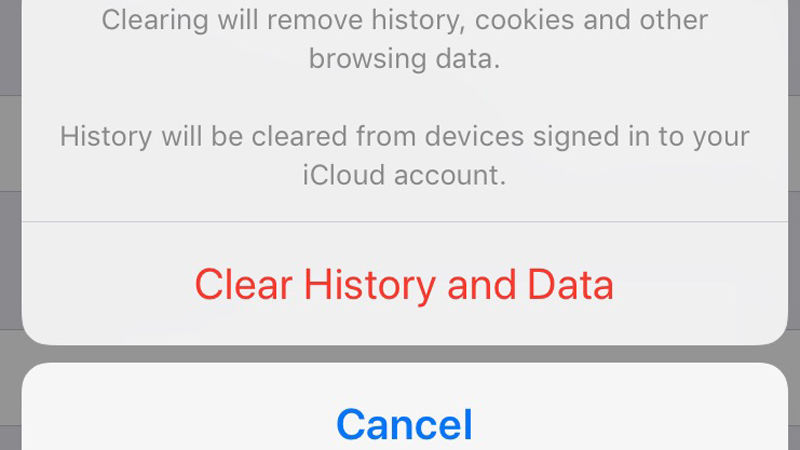
With this done, launch Safari again and hopefully the sluggishness will have disappeared.
Close all the open tabs
In theory, the open tabs shouldn’t affect things too much, as they are all kept in a suspended state when not selected. But, as is the way with electronic devices, sometimes closing them can return a happy surprise in terms of performance.
To shut down the old tabs, open Safari then tap and hold on the two squares in the bottom-right corner. A menu will appear, from which you should select Close All [X] Tabs.
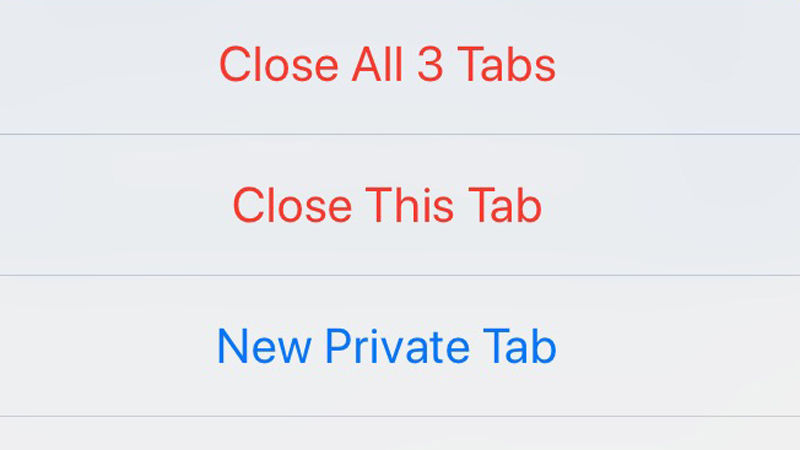
Update to the latest version
Updating iOS is also another good idea, as Apple patches various problems that crop up in its apps, which could include anything that’s wrong with Safari.
Go to Settings > General > Software Update, and see if there is a download available for iOS. If there is, tap the Download and Install option at the bottom of the screen.
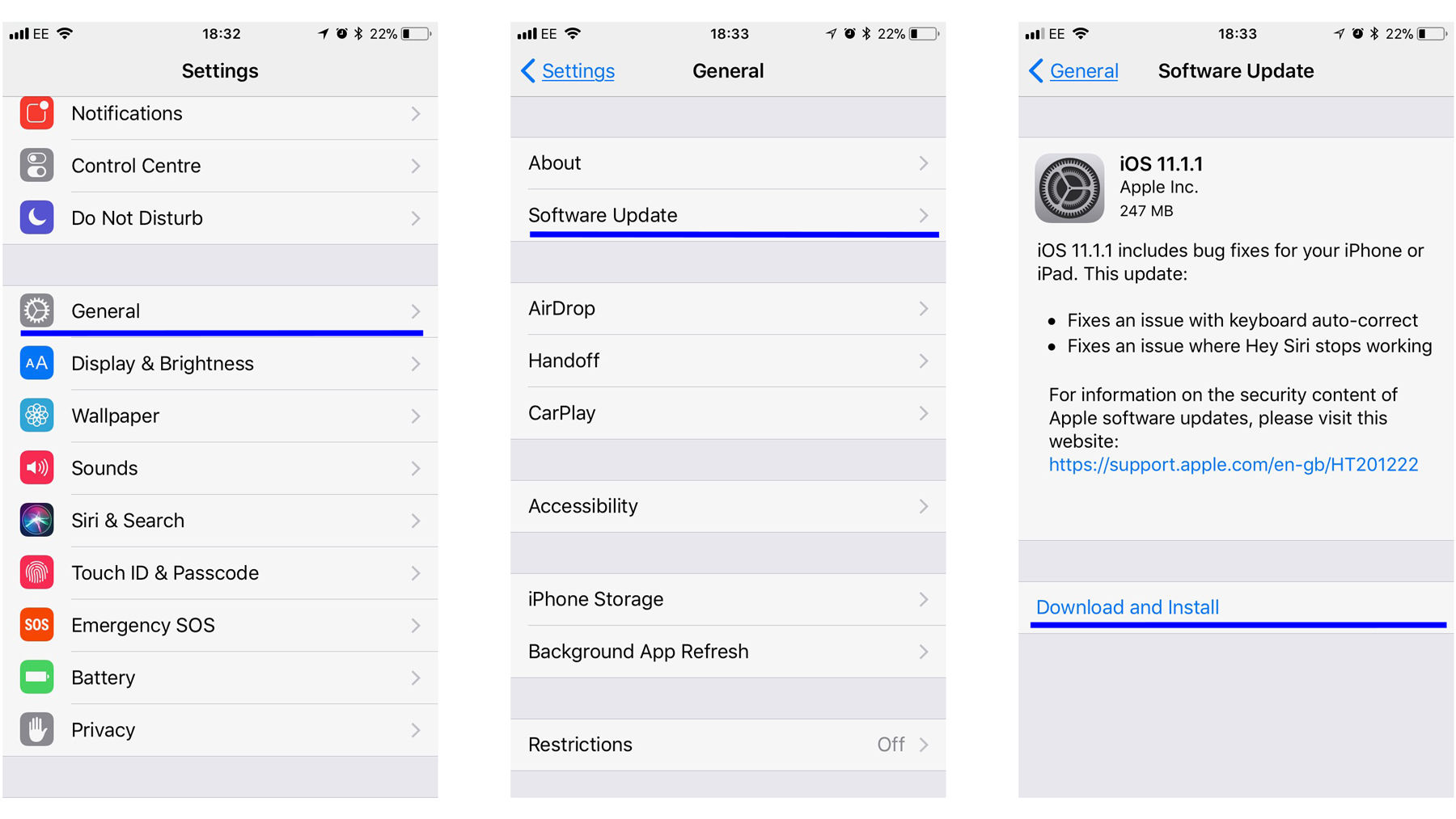
It’s worth remembering that Apples aren’t the only fruit, so if you want to try out a different browser then it would worth reading our Best iPhone browsers guide.
Safari on macOS
There are also ways to speed up Safari on a Mac. If you’d like to see more tips about using Safari on a Mac read our guide to using Safari on a Mac here.
Clear the cache
Just like on iOS, Safari stores information about sites you’ve visited. While this can make things speedy to begin with, after a while the bulk of information can become a drag factor.
Clearing the cache is a quick and easy way to remove some of the clutter that could be causing the snail-like performance.
Open Safari on your Mac, go up to the menu bar at the top of the screen and click on Safari. From the drop-down menu select Preferences.
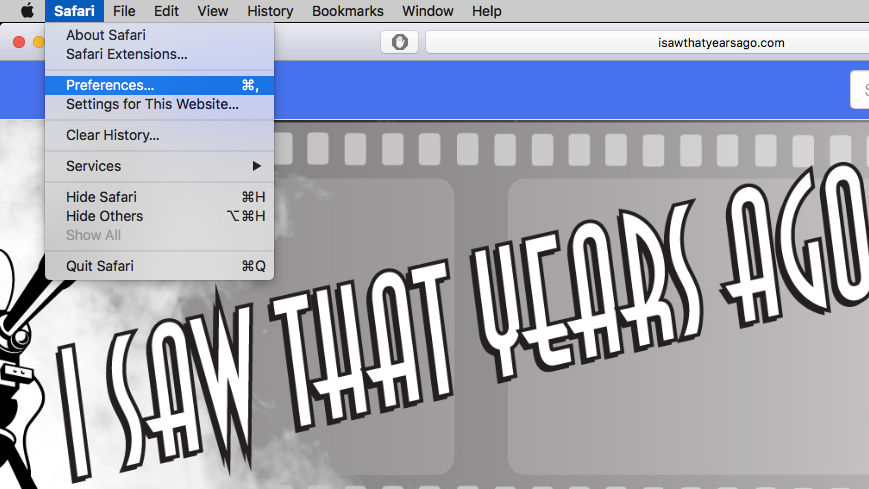
Make sure the Advanced tab is selected on the window that appears, then click on the Show Develop menu in menu bar tick-box.
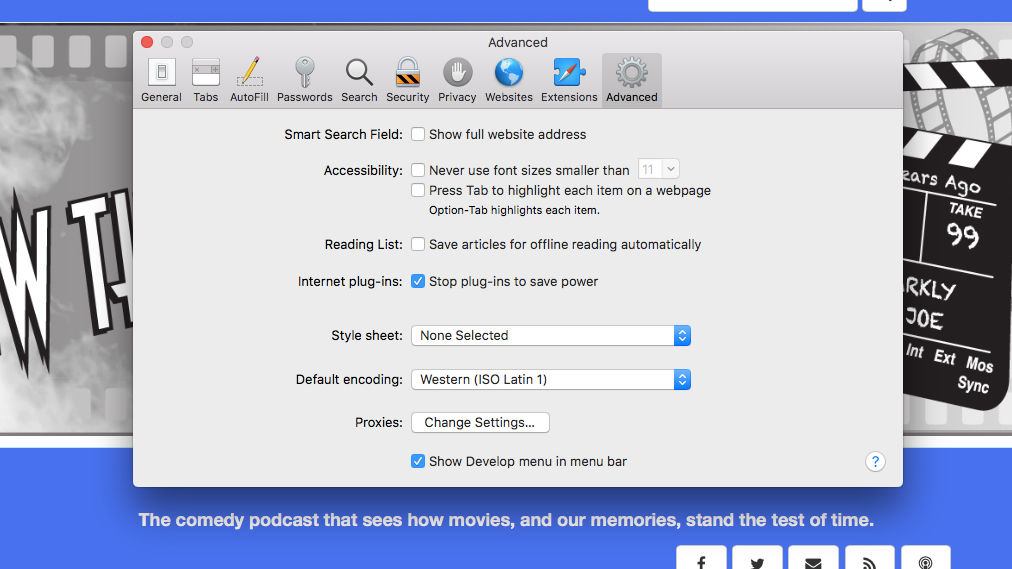
At the top of the screen you should now see an option for Develop. Click this and then from the drop-down menu select Empty Caches.
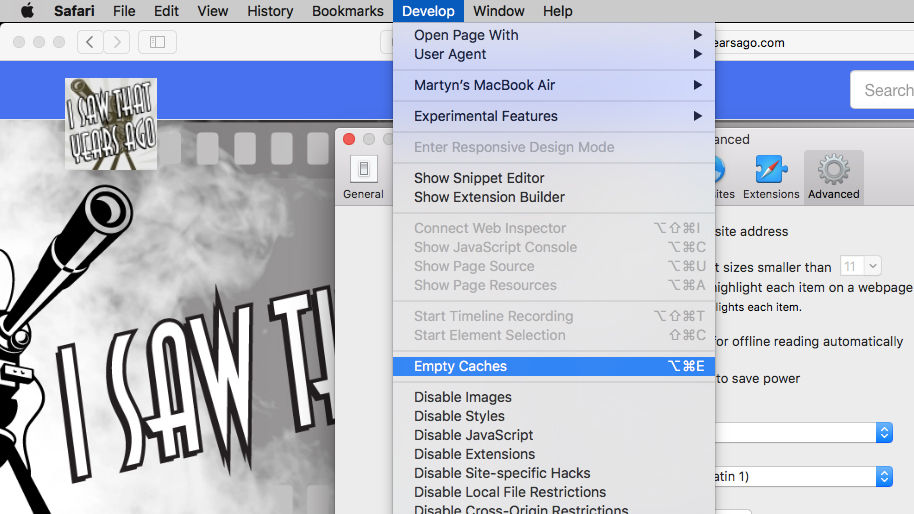
Reboot Safari and see if this has had the desired effect.
Update your extensions
Safari allows a number of plug-in programs that can add functionality to the browser. These can be ad-blockers, privacy protection, password managers, or a number of other things. Of course, the more parts there are in a system, the more things to go wrong.
Checking that your Extensions are up to date is a good way to avoid any pace-sapping problems.
Open Safari, click on Safari in the menu bar at the top of the page, then click on Preferences.
In the window that appears, select the Extensions tab.
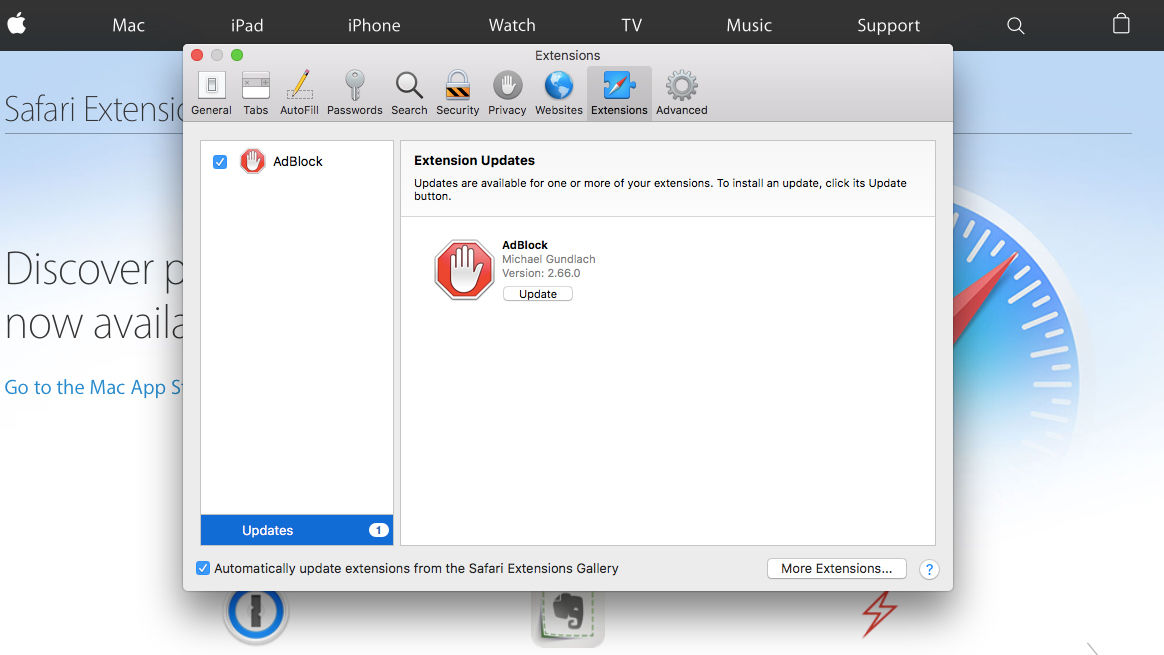
In the lefthand column, you’ll see a list of the Extensions you have installed, beneath which there will be a notification if you have any that require updating.
Click on the Updates notification and you’ll see all of the ones now available displayed in the main pane. Click the Update button beneath each one’s name and Safari will take care of the rest.
If this doesn’t solve the problem then you can try disabling each Extension one by one to see if there’s a rogue element hiding in your browser. To do this simply click the blue tick-box to the left of the Extension name in the lefthand column.
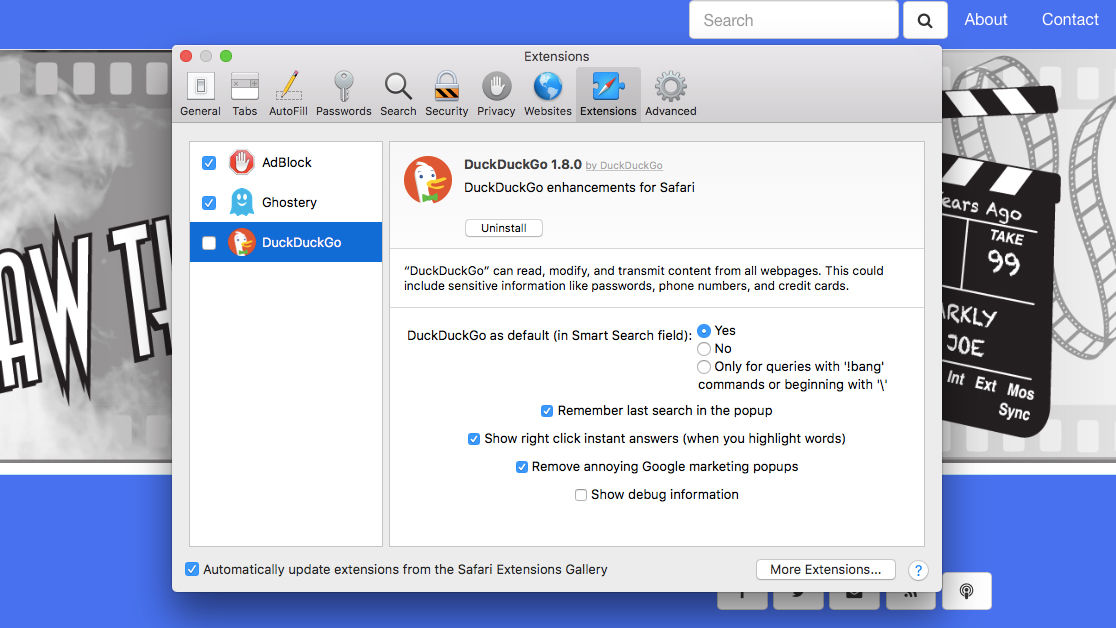
Update macOS
Just like the apps themselves, macOS needs to be kept up to date if things are to run smoothly. Open the App Store on your Mac and then click on the Updates tab in the menu along the top of the window.
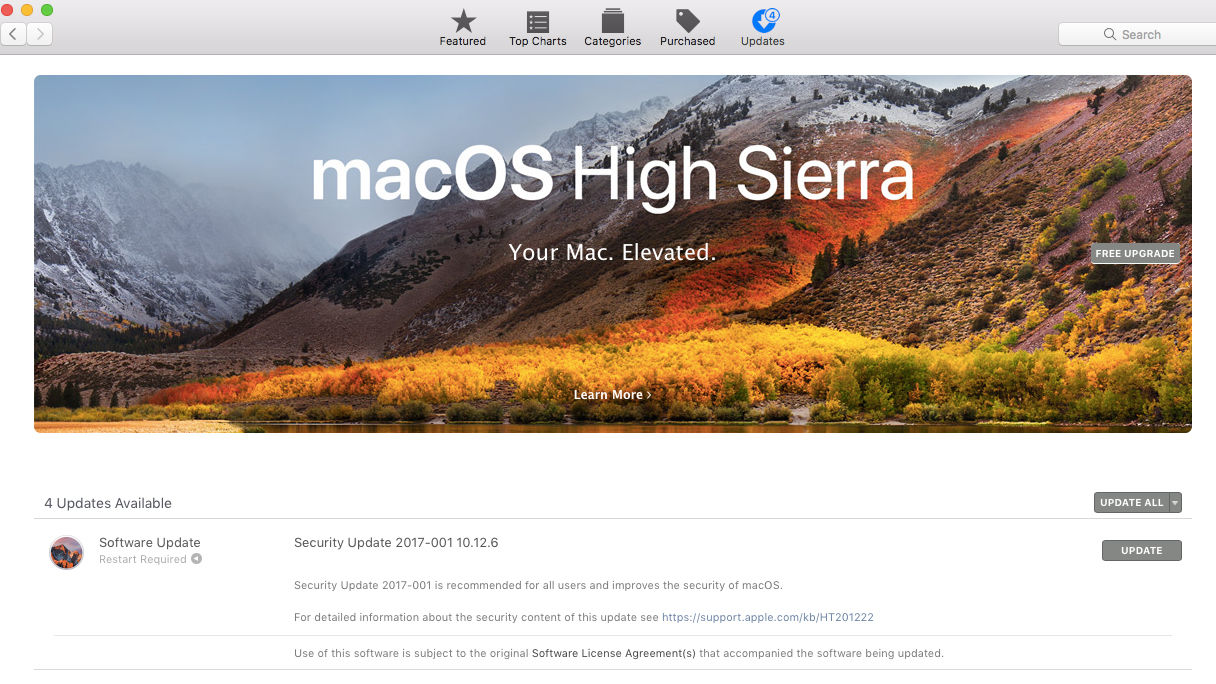
If you see a listing for macOS (it’s usually down as Software Update) then click on the grey Update button on the right side of the screen. You may need to restart your Mac afterwards, but then hopefully Safari will be a free-flowing beast once more.
Of course, if you fancy a complete change, then you should check out our Best Mac browser 2017 guide for a few alternatives.
Author: Martyn Casserly , Contributor

Martyn has been involved with tech ever since the arrival of his ZX Spectrum back in the early 80s. He covers iOS, Android, Windows and macOS, writing tutorials, buying guides and reviews for Macworld and its sister site Tech Advisor.
Recent stories by Martyn Casserly:
- How to get InDesign on a Mac
- How to edit a PDF on Mac
- How to recover unsaved Word documents on a Mac
Why is Mac browser running slow and how to fix it?
If in the past few months you’ve noticed that your web pages are loading slowly, it’s likely that your Mac is in need of some maintenance. In this article, you will learn why your browser is so slow, how to solve slow browser issues, as well as how to speed up Chrome, Safari, or Firefox on your Mac.
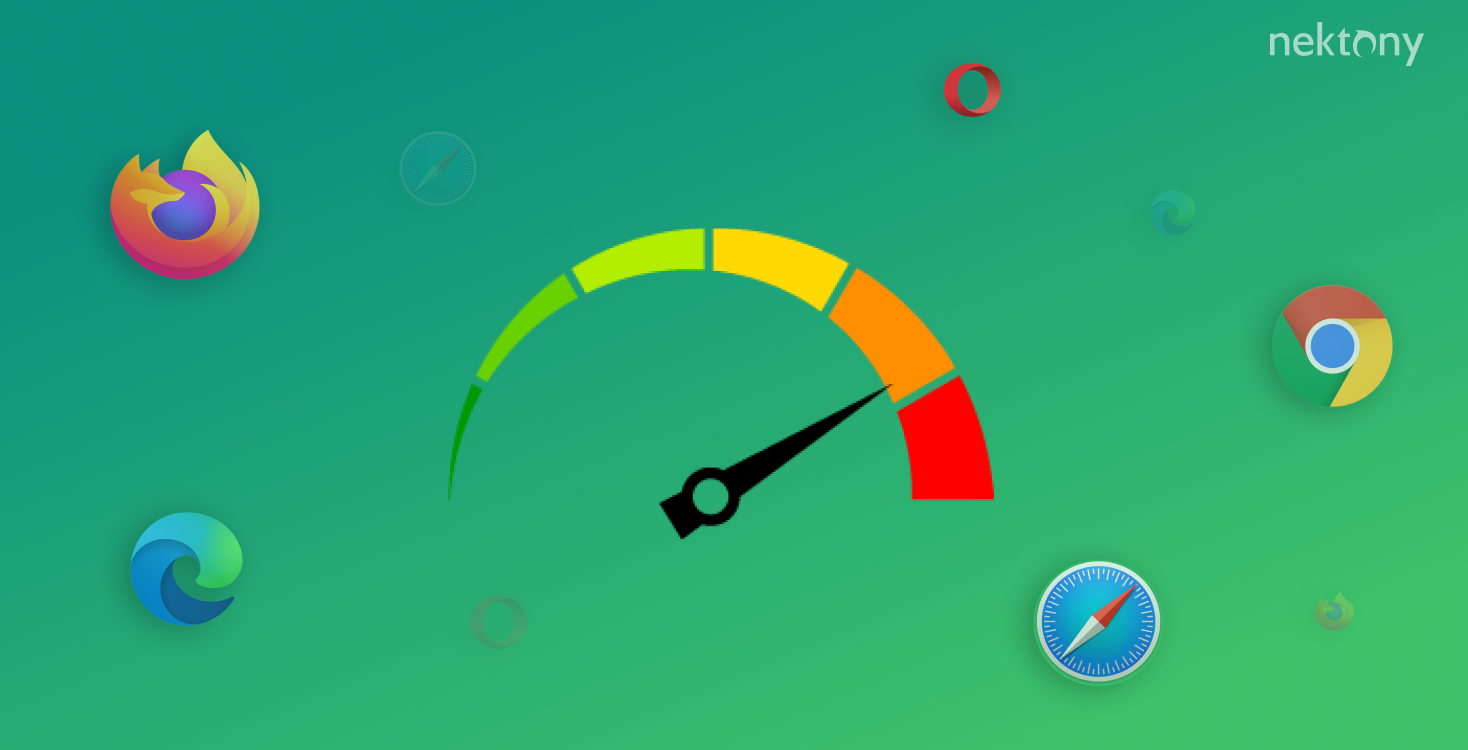
1. Top reasons why is Mac browser so slow 2. Why is Safari so slow and how to speed up Safari 3. Why is Chrome so slow and how to speed up Chrome 4. Why is Firefox slow and how to speed up Firefox
Before we start
App Cleaner & Uninstaller
Free Download
1. Why is my Mac Browser so slow
In short, the most common reason for slow browser performance is unnecessary plugins, extensions, and panels that are either automatically installed with other applications or are third-party add-ons. In addition to slow performance, other browser problems can result in Google Chrome and Firefox, as well as Safari. The most vulnerable point of modern computers is the hard drive. Most users have a classic HDD with rotating platters. Every browser has cache files, which are stored on the disk. Therefore, all problems with slow performance have a root just in it. If you have not cleared your browser’s cache for a while, you will notice a significant improvement in the speed after cleaning it. Some users notice this and choose to clear the cache frequently. Thus, first of all, you should find out what makes your browser speed slow and what causes it sometimes to quit unexpectedly .
Pay attention to the following points to find out the reasons why is your browser so slow and how to speed up the Chrome browser, Safari browser or Firefox browser on a Mac:
✓ Browser’s Extensions
A large number of tools installed in the browser’s toolbar is convenient for a user, but the cumulative effect slows the browser’s performance. When a user installs programs on a computer, various browser extensions are installed, too. In this case, they may not be needed, and the inexperienced user may not even notice that something else is being installed.
Typically, most users don’t use all panels, but they affect the browser’s loading time and performance speed. As soon as a user collects several such panels on his computer, the first launch of the browser may take a minute or so. Well, this annoys us a lot. Thus, if you have too many browser extensions, you should analyze them and remove unused ones. Read our previous article to learn how to remove browser extensions .
By default, when you install a browser, many plugins that are not needed are installed and activated as well. Also, some programs installed on your Mac automatically add their plugins. To find a list of your Mac internet plugins, go to the following path ~/Library/Internet Plugins. You can check which plugins make your browser slow. For this, create a new folder in Finder and move all the third-party plugins into it. Then check your browser’s performance. If everything is working well, then we were right. Add back one extension after another and check the browser’s performance. In this way, you can find the problematic plugin. If a “bad” extension is found, you can disable it, or even better, delete it.
Most modern websites use Java components. If you have not updated Java on your Mac for a long time, this can cause your browser to work poorly. To update Java to the latest version follow these steps: go to the official Java page → click to download Java for free → open the downloaded installation file → follow the on-screen instruction to install Java.
Some users rarely need Java and prefer to remove it entirely because Java has a significant impact, not only on the browser’s performance and speed but also on its’ vulnerability to various Trojans and viruses from the Internet. Perhaps after that, your browser will maintain a more optimal speed.
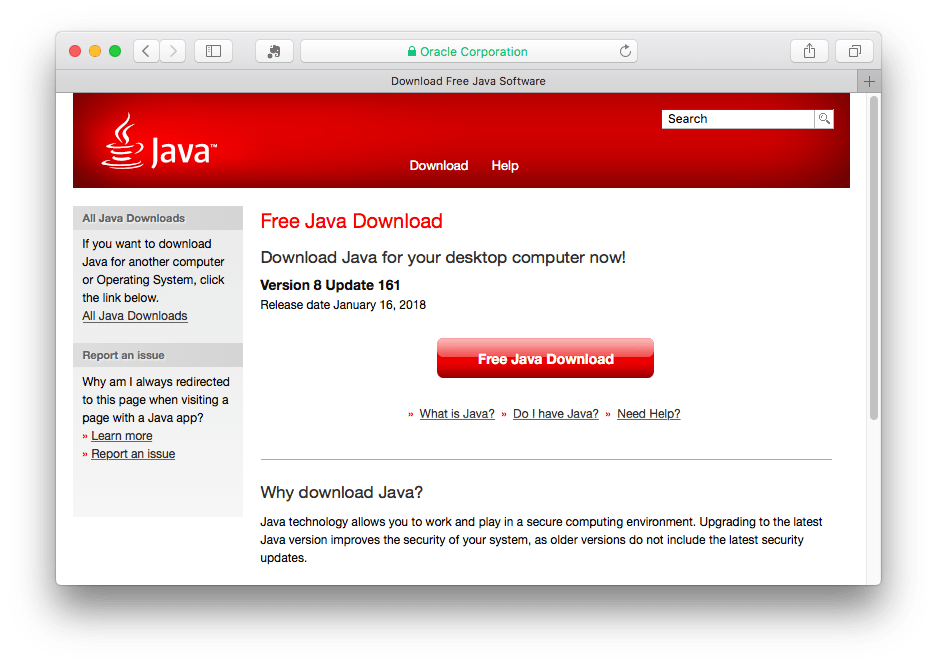
✓ Flash Player
If you use Safari, you can try to remove Flash Player. Actually, the famous Flash Player plugin from Adobe is not pre-installed on Apple’s computers. Despite this, millions of users install Flash Player because many Internet resources still use it for media content. We recommend that you delete or disable this plugin. It not only causes Safari to work poorly but also puts your Mac at risk of being hacked.
When you visit websites day after day, your browser collects its’ own database of addresses, texts, pictures and other information about these resources. Despite the fact that the browser cache is designed to speed up its performance, in rare cases, when the size of the database is too large, it can cause a slower loading time. In this case, you should try to clear the cache of your browser .
✓ Browser’s Update
Neglecting to update the browser routinely is another possible reason for slow performance. Open your browser, go to the Menu bar and select “About browser…” You will see a window with information on what version of the browser you have. If it is needed, click to update your browser.
✓ Antiviruses
Another reason why the Internet is slow is using an antivirus and firewall on your Mac. Yes, antivirus programs are designed to protect your computer. Antivirus programs check the information on each website, and as a result, affect the connection speed. Of course, not all antivirus programs slow down your browser, but there are some which do so. So try to turn the antivirus programs off and check to see if it helped to speed up Firefox , Chrome, Safari or any other browser you use. If it is the real reason, then you should u ninstall your antivirus program or decide whether the security or page loading speed is more important to you.
If nothing from the previous points has helped you, then try to uninstall your browser completely and install it again. Here is a list of guides which will help you to uninstall apps correctly:
- Uninstall Google Chrome on Mac .
- Uninstall Mozilla Firefox on Mac .
- Uninstall Opera on Mac.
- Uninstall Safari on Mac.
*Please note, you can uninstall plugins, disable extensions, clear cache and even reset your browsers with a free software tool from Nektony App Cleaner & Uninstaller . This program is designed to remove apps and extensions on your Mac correctly so that no remaining files negatively affect the computer’s performance.
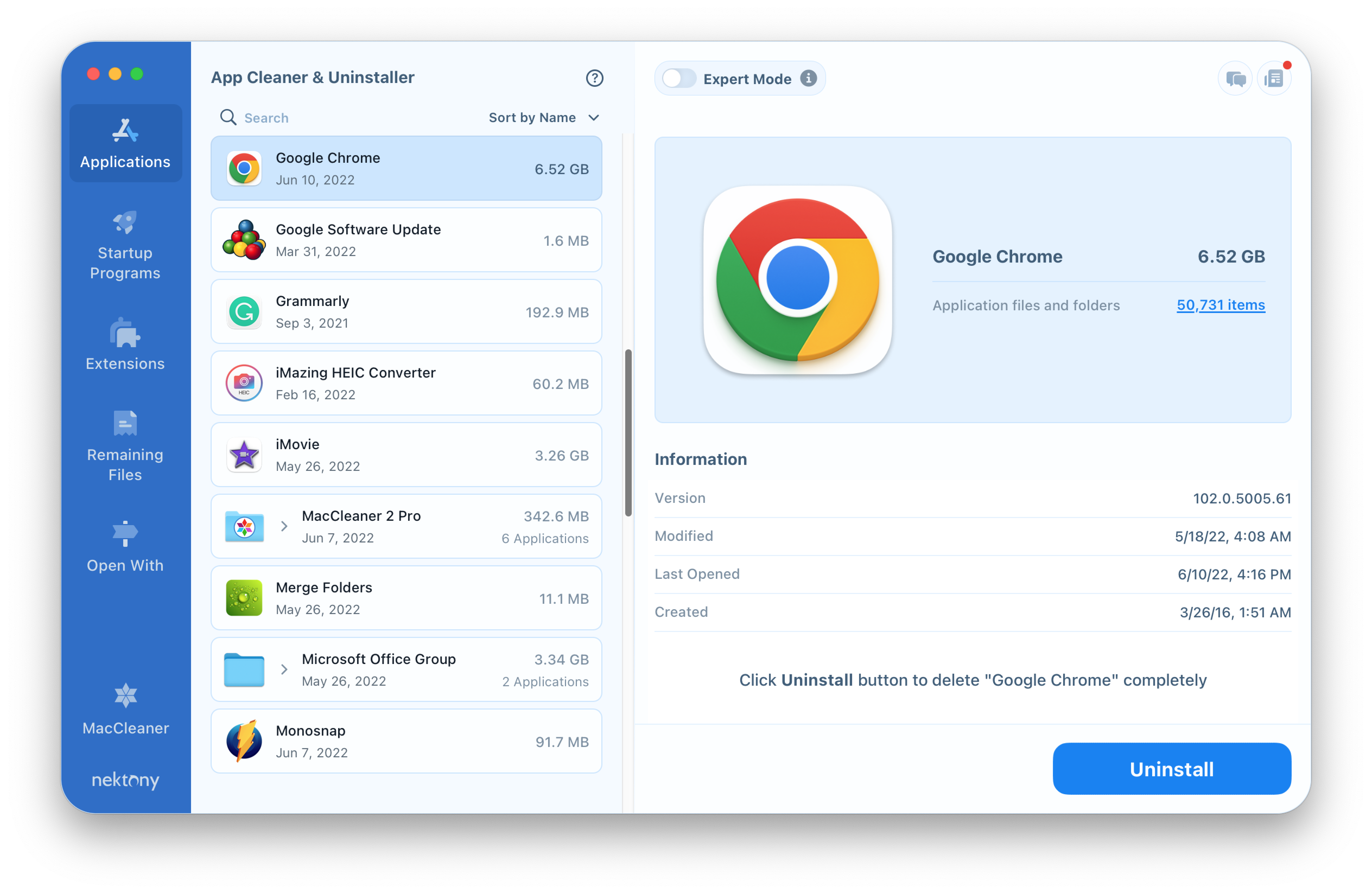
Also, you should pay attention to other reasons why you may experience a slow Safari (or another browser):
- You have a lack of free disk space on your hard drive.
- There are some viruses on your computer.
- Your disk requires being defragmented .
- There are too many apps running at Mac startup .
- You use old versions of macOS and haven’t updated the system when it is required.
Now, we would like to take a deeper look at each browser and share tips on how to make them work faster.
2. Why is Safari so slow? How to speed up Safari
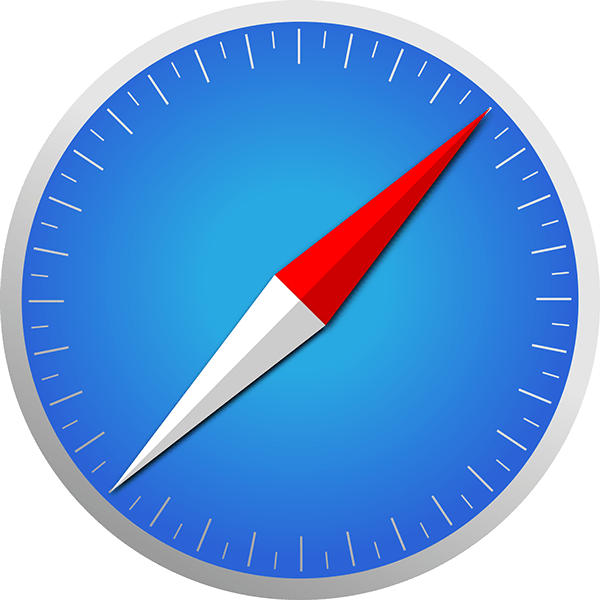
Anyway, if Safari is slow and not working properly, you should try the following solutions to make the browser speed faster:
- Check for software updates from Apple.
- In Safari Preferences, choose to open tabs, not with the Top Sites but a blank page.
- Clean the entire history (cache, cookies, …) or do a Safari reset .
- Try to update Adobe Flash Player to the latest version or disable Flash . If you need to enable Flash, you can install a special extension for Safari, which allows you to watch the necessary video from Adobe Flash.
- Clean up unnecessary Internet Plugins. The plugins are located in the Library folder. Some plugins can slow down Safari, especially the old ones which are not supported and do not work correctly with the latest version of the browser.
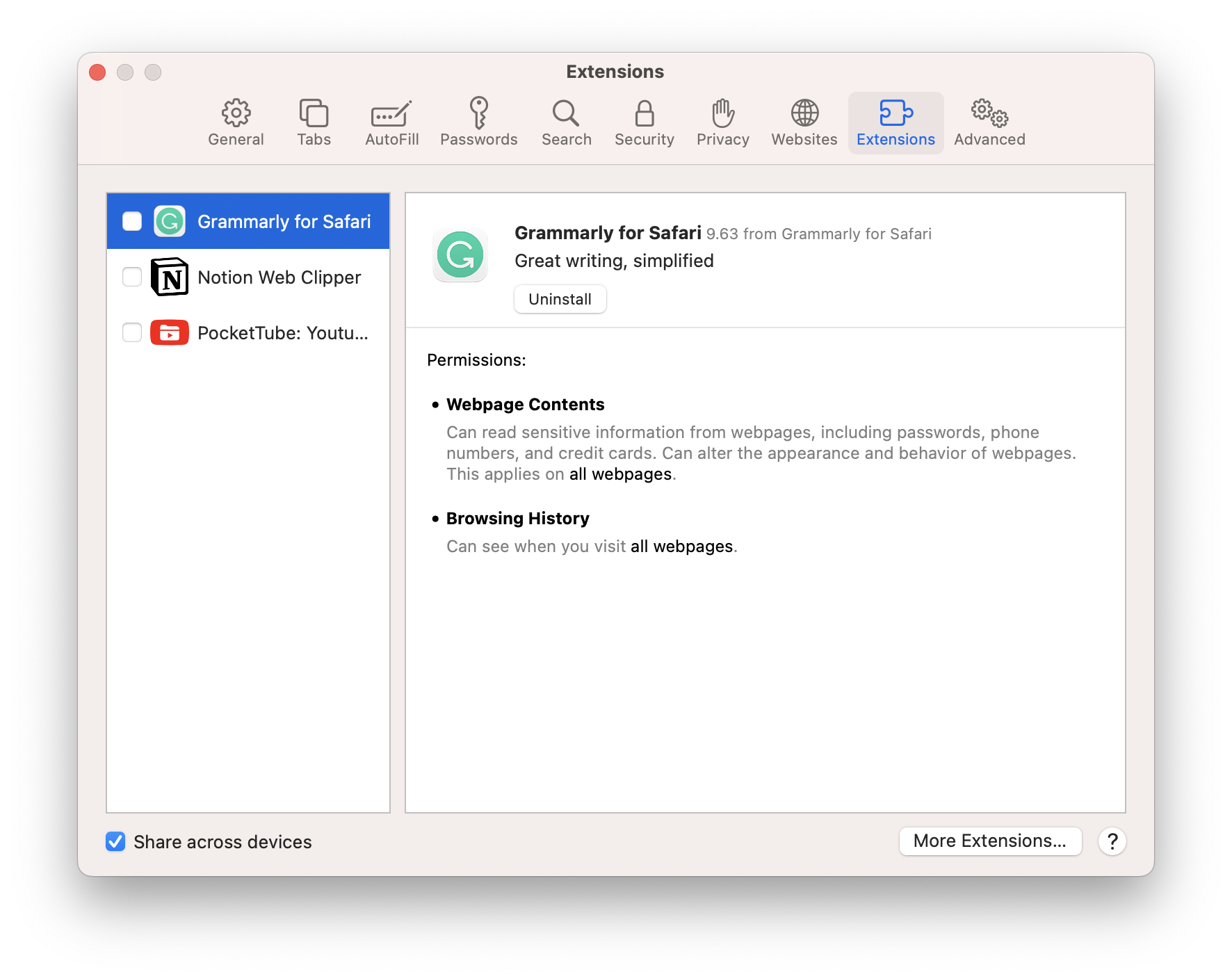
- Slow browser performance and freezing can occur because of the additionally installed applications, for example, 1Password .
- Set up the browser history to be saved no more than necessary. Some users save history no more than a week.
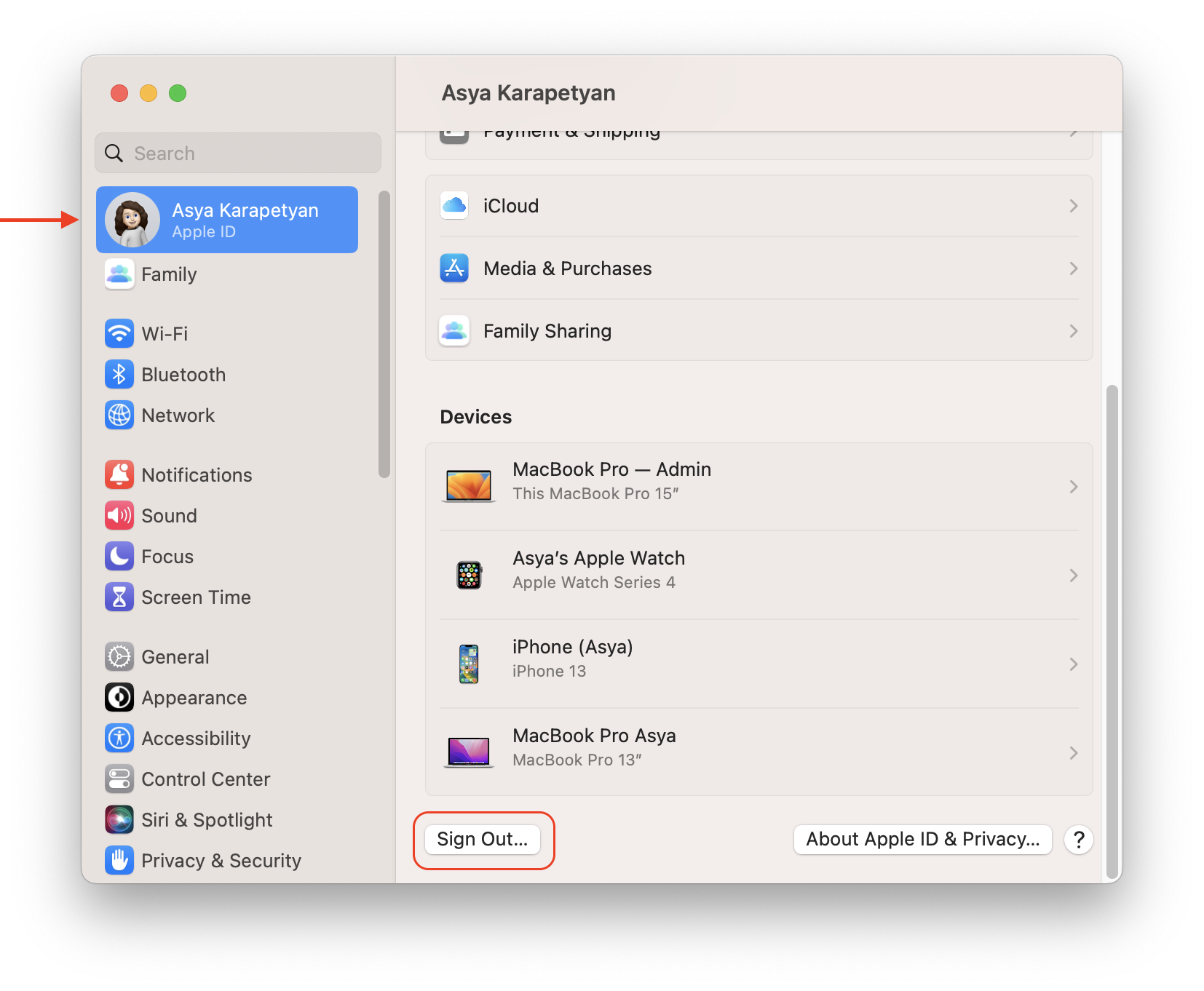
- Try to create a new Mac user profile and check how Safari works.
If nothing helps, we recommend that you use Google Chrome or Mozilla Firefox.
3. Why Google Chrome is so slow? How to speed up Chrome

- Delete the unwanted start page in the shortcut properties. For this, go to the Chrome Preferences.
- Update the software to the latest version. All software pre-installed on your Mac, including the Chrome browser, should be up-to-date. Automatically checking for new updates works with a fairly long delay, so we recommend checking them manually.
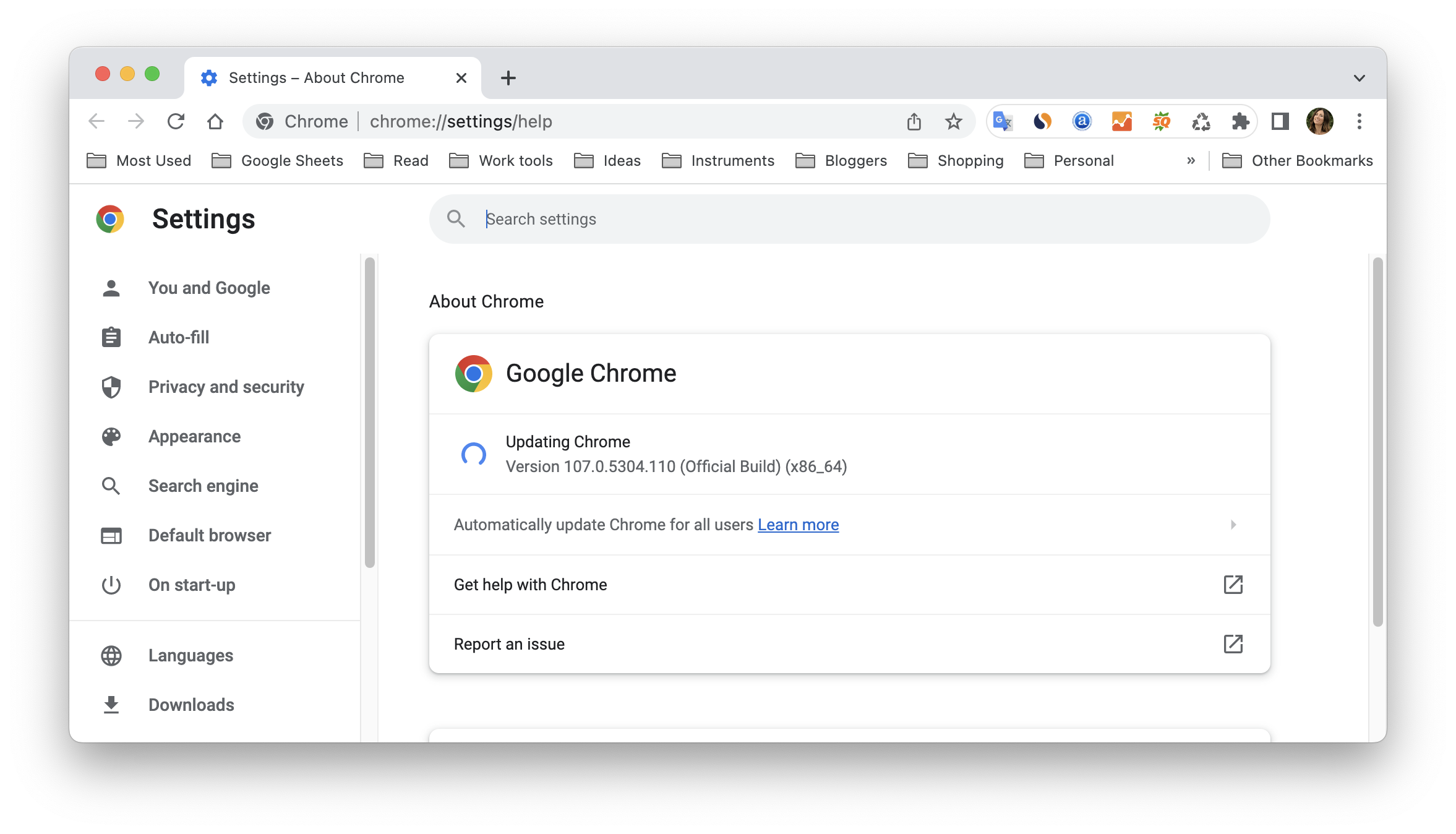
4. Why is Firefox slow. How to speed up Firefox

The reasons why Firefox is running slow on Mac are mostly the same as we described above: too many extensions and plugins, caches, cookies, and so on. However, we would like to add some tips to quickly check which factor is primarily affecting the browser’s speed.
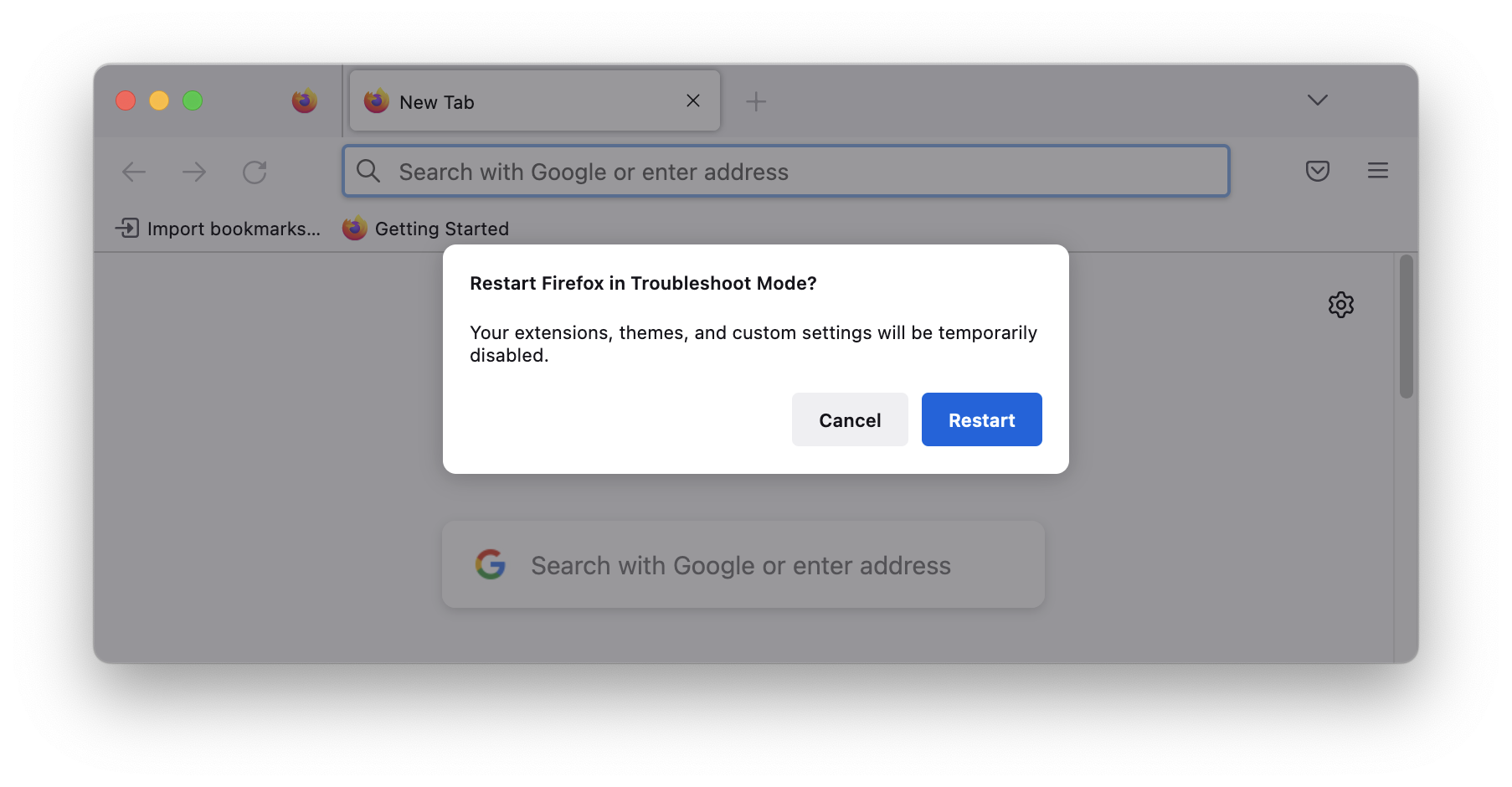
- Finding the problematic add-ons. If in the previous step you found out that the reason why the browser is slow is related with Firefox extensions , then you need to find out which one. For this, open the browser → go to the page with the add-ons → disable each extension separately and check the performance of Firefox.
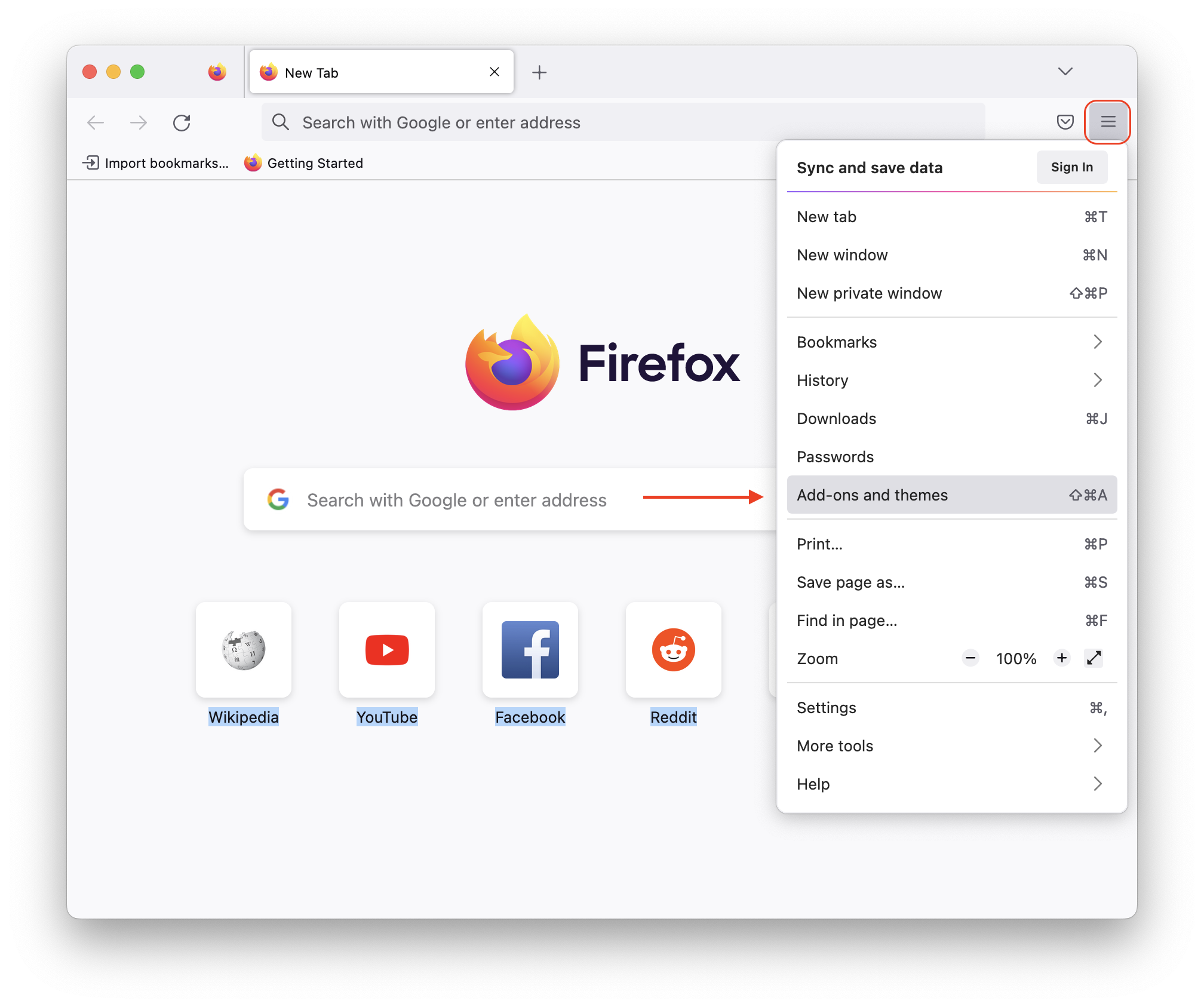
We have shared the top reasons why your Mac browser can become slow and how to fix slow browser speed. If you find that the reason is related to installed extensions and add-ons, you can use a free software tool App Cleaner & Uninstaller which allows you to easily manage Mac and user extensions.
We hope that at least one of all the solutions mentioned above will help you to make your browser work more effectively. If you still have any questions, then leave a comment below. We will be happy to assist you.
App Cleaner & Uninstaller Uninstall any Mac application in 2 minutes
Update v. 8.2.7 March 5, 2024
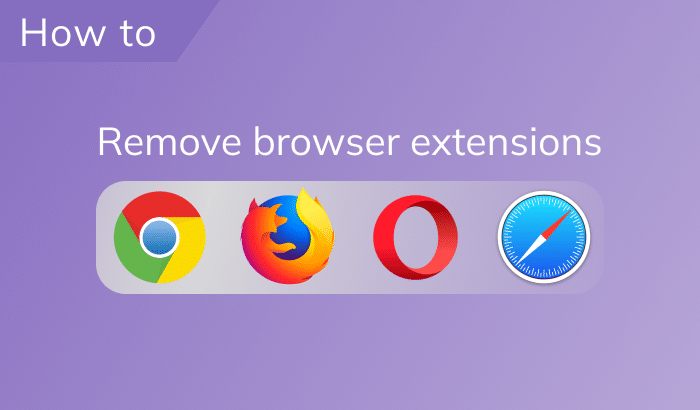
About the author
Safari Too Slow on Your iPhone? 4 Ways to Speed It Up
Are webpages taking forever to load in Safari? Follow these troubleshooting steps to resolve your speed-related issues.
Safari is the native browser on Apple devices. While it's usually fast, sometimes Safari can be slow or laggy. When this happens, it can be bothersome, and some might even download another third-party browser.
If you're noticing that Safari is running slow on your iPhone, there are several things you can do to speed it up again. Give these tips a try, and hopefully, Safari will be at full speed in no time.
Check Your Internet Speed
Before passing the blame on Safari, it might be a good idea to check your internet speed. That way, you can make sure Safari is the issue and rule out anything else before continuing.
If you're connected to Wi-Fi, open another computer or device on the same Wi-Fi network, then head to Speedtest's site and check your internet speed. You won't want to do this on your iPhone, as Safari issues can slow your connection time, giving you a false negative.
If your internet speed is fast, then Safari is the issue, and it's time to fix it.
1. Close All Your Safari Tabs
Safari can usually handle a lot of bandwidth and keep many pages open. However, some websites drain Safari data. By closing all the currently open tabs, you can confirm if one of the open websites was using too much data.
To close all the tabs on Safari, open Safari and hold the Tab button in the bottom right-hand corner. A prompt will appear for you to close all the tabs. Once this appears, hit Close All Tabs . Then, give Safari a try again.
2. Clear Your Browsing History and Data
If clearing the tabs didn't fix the issue, you can reset Safari and clear up the cache, speeding it up in the process. To clear Safari, head to Settings > Safari > Clear History and Data .
Once you do this, relaunch Safari and see if it's loading up pages quickly enough. If it's faster for a little while but begins to slow down again, proceed to the next tip.
3. Check Your iPhone's Storage
If your iPhone storage is almost full, that means it can't handle much else. Safari, like most apps, uses device storage to store data from the app. And low storage means Safari won't have enough memory to work.
This is why some users find Safari temporarily faster once they clear their browsing history and data. However, some users might have used so much storage that Safari might not even speed up when you clear the cache.
Luckily, it's easy to check if this is an issue. All you need to do is head to Settings > General > Storage and see how much space your iPhone has used. And if it's almost full, you might have to delete some large files.
However, if you don't want to lose precious data, consider signing up for a paid iCloud plan .
4. Reset Network Settings
When all else fails, you can reset your iPhone's Network Settings. Doing this will reset all network-related connections on your iPhone, hopefully speeding up Safari in the process. Head to Settings > General > Transfer or Reset iPhone > Reset > Reset Network Settings to do this.
Once you do this, you'll need to set up your network connections again. This means re-entering your Wi-Fi passwords. However, it can clear up a lot of bugs, so it is worth a try if all else fails. You can also reset your iPhone to factory settings as a last resort.
Browse Seamlessly in Safari
Safari comes pre-installed on all Apple devices, including the iPhone, iPad, and Mac. And since it's the native browser, it works seamlessly across all your apps and Apple devices.
While switching to a third-party browser like Chrome might seem tempting when Safari is slow or lagging, you'll miss out on a seamless experience. So, it's worth taking the time to fix whatever issue you're facing.

Home » Tech Tips » iPhone » Slow Safari on iPhone? – 11 Ways to Fix
Slow Safari on iPhone? – 11 Ways to Fix
Safari is a browser app that comes with iPhone as part of iOS. This is a default browser iPhone to open links from Mails, Messages and other apps. Though Safari offers useful features like tab grouping, voice search and extensions, the problem comes with the loading speed of webpages. If you are stuck with slow Safari on iPhone, here are some options to improve the performance of the app.
Note: Similar to iPhone, MacBook also comes with a Safari browser app as part of macOS. If you are looking for improving Safari performance in Mac, then check this article .
Safari Settings Page in iPhone
iOS offers a backend page for each app where you can finetune available settings and optimize performance of the app. You can access the Safari browser’s settings page by tapping on “Settings” app and then navigating to “Safari” section. Most of the below explained fixes are available within Safari settings page, though few settings can be accessed within the app or from other locations. Hence, we recommend you going through the Safari settings page and understand the functions before tweaking.
1. Close All Open Tabs – Auto Schedule or Manual
Closing all open tabs is one of the first things to do when you notice the browser loads webpages slowly. Most smartphone users continue to open new tabs and access webpages without closing previously opened tabs. Though Safari will work fine with 20 to 30 open tabs, it will either crash or work slow when you have more than 30 tabs. Unfortunately, simply closing the app will not close open tabs and they will be in open state when you launch the browser again. The problem is that Safari will try to refresh the webpage on the open tab whenever you launch the app. This will not only slow down the performance but also waste your time in viewing same old page which you have already visited. You have the following two options to deal with open tabs:
- Manually closing tabs – simply tap on the tabs icon in Safari and close all your open tabs.

- Scheduling automatic closure of tabs – go to Safari settings page and tap on “Close Tabs” option showing under “Tabs” section. Select one of the schedules from the list as “After One Day”, “After One Week” or “After One Month”. This will automatically close all your open tabs and keep the browser clean as per the selected schedule.

2. Restart the Browser and iPhone
Restarting is one of the unharmful solution that you can try with any software problems.
- Restart Safari – when you are in Safari app, swipe up from the bottom to open App Switcher. Hold and move the Safari screen up to close the app. Remember, this will not close open tabs and you should follow the above-mentioned methods for closing your open tabs.

- Restart iPhone – go to “Settings > General > Shut Down” and swipe the “Slide to power off” button to shut down your iPhone. After that, press and hold the side power button to restart .
3. Disable Experimental Features
Apple silently enables some experimental features with Safari app in iPhone. Though these are experimental features, most of them are enabled by default. Go to Safari settings page, scroll down to the bottom and tap on “Advanced” option. Tap on “Experimental Features” and disable all or the suspected items. Do not worry if it creates some problem, you can scroll down to bottom of the “Experimental WebKit Features” page and select “Reset All to Defaults” option. This will help to reset all the features like before.

4. Disable Safari Suggestions and Preload
Getting automated suggestions can easily annoy when you type in Safari app. For example, preloading option will force Safari to check in your history and bookmarks whenever you try to open a website in the address bar. This will slow down the browser when you have huge list of reading list, bookmarks and history. You can try disabling the following automated suggestions from Safari settings page and check whether it helps to load pages faster.
- Search Engine Suggestions
- Safari Suggestions
- Preload Top Hit
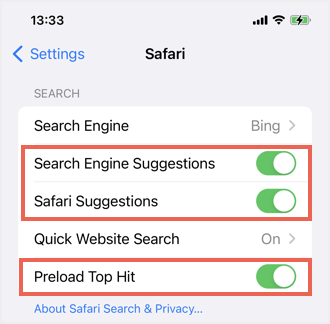
5. Stop Processes Running in Background
The processes running in background can easily affect the entire performance of your iPhone. It could be an app download from other device, an app update or a content refresh in apps. For example, if an app with 1GB size is getting updated in the background, obviously it will affect the performance of other apps like Safari which you may be using in the frontend. You can disable automatic updates and background app refresh using the following instructions:
- Automatic App Downloads – go to “Settings > App Store” and disable “Automatic Downloads” for apps and app updates. Also make sure this option is disabled for “Cellular Data” for saving your mobile data usage.

- Background App Refresh – go to “Settings > General > Background App Refresh ” section and choose “Off” for “Background App Refresh” option.
6. Delete Browsing History
Whenever you visit a webpage, Safari will cache its files in phone’s storage . The cached content includes all static files on the page like images, CSS and JavaScript which are required to load the page. In theory, this caching should help in speed up the loading when you visit the same page next time or other pages on the same website. However, the size of cached data will become huge thus affecting the overall performance of the browser. In addition, cached data can also create problems when the website owner changed its design, moved server to another location or redirected the page to another URL. Therefore, it necessary for you to clean up the cached website data in Safari in regular intervals.
- When you are in Safari settings page, scroll down and tap on “Clear History and Website Data” option. You will see a pop-up from bottom and select “Clear History and Data” to confirm deleting all cached data from the browser.
- Tap on “Advanced” option and then select “Website Data” to view all stored website data in Safari. Generally, clearing browsing history will delete all these data as well. Otherwise, you can tap on “Remove All Website Data” option to delete them manually.

Remember, deleting history or website data will NOT delete your bookmarks, reading list or passwords. However, you may feel the websites are loading slower when opening first time as the browser needs to request all static files from the server without previously stored cache. This will come to normal when you start using the browser visiting your favorite pages. In addition, you can also use private browsing mode to speed up webpage loading time in Safari.
7. Run Software Update
As mentioned, Safari is part of iOS and gets the update along with the iOS updates. Sometimes, Apple will release bug fixes for Safari app as part of the iOS release. Go to “Settings > General > Software Update ” section and check whether you have any pending updates. You can read the release notes to understand if the release has any Safari related fixes. Tap on “Download and Install” option to get the latest iOS version and check if that helps to improve the performance of Safari app.

Remember, it works other way round that sometimes an iOS update can affect the performance of Safari app. This is especially the case with the release of major iOS versions where the app will get new features. Make sure to disable automatic iOS update and always wait for a week time to get feedback from users whenever Apple releases new iOS versions. If there are any major problems, Apple will release a patch immediately and you can update the iOS after understanding there are no major glitches to default apps.
8. Reset Network Settings
Sometimes, resetting your network settings can help to speed up the browsing in Safari.
- Go to “Settings > General” section.
- Tap on “Transfer or Reset iPhone” option.
- Select “Reset” option and then select “Reset Network Settings” from the list.
- Enter your passcode and wait for the process to complete.

This will reset all your network related settings like Wi-Fi password . Therefore, make sure to keep the password ready for reconnecting again.
9. Change to Public DNS
Resetting network and deleting browsing history will help to fix the Safari problems from your side. However, this will not fix if your ISP filter the browsing or using corrupted DNS setup. Since iPhone by default uses DNS from your ISP, any problem at the ISP end will impact your browsing experience also. The best solution to overcome ISP related problems is to change the default ISP provided DNS and public DNS from Google or OpenDNS.
- Open “Settings” app and tap on “WLAN” option.
- Tap on your Wi-Fi network that is currently connected.
- Scroll down on the page and select “Configure DNS” option.
- By default, this should have “Automatic” setting and select “Manual” option.
- Delete existing DNS servers and tap on “Add Server” option.
- Add 8.8.8.8 and then 8.8.4.4 (these are Google Public DNS server IPs) and tap on “Save” option showing on top right corner of the screen.

Now open Safari and check if the webpages are loading faster with new DNS servers. Similarly, you can tap on “Configure IP” and change to static IP address which you can obtain from your ISP.
10. Use Proxy or VPN
If your ISP really throttles or blocks websites or services, it could make Safari slower. For example, countries like China completely blocks services from Google, YouTube, Facebook and Twitter. In this case, opening a page with a YouTube video will load forever till the time the request for video times out . The solution here is to use a proxy server or VPN app to unblock the free internet.
- Proxy – when you are on the Wi-Fi settings page, scroll down to bottom and tap on “Configure Proxy” option. On the next screen, enter your proxy server details and save the changes.
- VPN – you can find plenty of reliable VPN apps in App Store. For example, ExpressVPN is a premium app which you can try to unblock free internet. When you open the app, it will install the configuration profile and allow you to bypass the ISP connection.
11. Blocks Ads and Trackers with Content Blockers
Nowadays, almost all websites use advertisements, analytics and social tracking. The problem is that all these features will slow down the browser and affect the loading time, Fortunately, Safari app will automatically block trackers and show you the privacy report on the home page whenever you open app.

If you want to block advertisements , then you can use reader mode or use ad block extensions from App Store. These extensions will use content blockers feature in Safari and help to block intruding ads on the pages thus speed up the browsing experience.
Final Words
We hope the above options helped to fix slow Safari on iPhone and speed up your browser. it is a good idea to schedule automatic closure of tabs and delete browsing history in regular intervals. If none of the above options work, then you can try resetting the iPhone as a last resort. This will delete all your customizations and reset the phone to factory settings. So, do this only if you are prepared to setup your iPhone from the scratch. Otherwise, you can always switch the default browser to Google Chrome, Firefox or Edge and remove the Safari app from your phone .
About Editorial Staff
Editorial Staff at WebNots are team of experts who love to build websites, find tech hacks and share the learning with community.
You also might be interested in

How to Enable or Disable Comments in WordPress?
WordPress is the perfect platform for blogging with many built-in features. Comment[...]

How to Hide Apps from iPhone Home Screen?
iPhone by default will add all installed apps on the[...]

How to Use Captions and Live Captions in Mac?
Accessibility features help people with difficulties to use the Mac[...]
DOWNLOAD EBOOKS
- SEO Guide for Beginners
- WordPress SEO PDF Guide
- Weebly SEO PDF Guide
- Alt Code Emoji Shortcuts PDF
- ALT Code Shortcuts PDF
- View All eBooks
TRENDING TECH ARTICLES
- 600+ Windows Alt Codes for Symbols
- Fix Chrome Resolving Host Problem
- Fix Slow Page Loading Issue in Google Chrome
- View Webpage Source CSS and HTML in Google Chrome
- Fix Safari Slow Loading Pages in macOS
- Fix Windows WiFi Connection Issue
- ROYGBIV or VIBGYOR Rainbow Color Codes
- Fix I’m Not A Robot reCAPTCHA Issue in Google Search
- Structure of HTTP Request and Response
POPULAR WEB TUTORIALS
- Move WordPress Localhost Site to Live Server
- Move Live WordPress Site to Localhost
- Move WordPress Media Folder to Subdomain
- Fix WooCommerce Ajax Loading Issue
- Create a Free Weebly Blog
- Edit Weebly Source Code HTML and CSS
- Add Scroll To Top Button in Weebly
- Add Table in Weebly Site
- How to Add Advanced Data Table Widget in Weebly?
- Up to $500 Free Google Ads Coupon Codes
FREE SEO TOOLS
- Webpage Source Code Viewer
- HTTP Header Checker
- What is My IP Address?
- Google Cache Checker
- Domain Age Checker Tool
- View All Free Web and SEO Tools
© 2024 · WebNots · All Rights Reserved.
Type and press Enter to search
Anyone else have VERY slow Safari loading with new 16.5 update? So annoying!
Anyone else have VERY slow Safari loading on iPhone 11pro with new 16.5 update? So annoying!
Posted on May 20, 2023 5:31 AM
Posted on Sep 14, 2023 10:46 PM
I’m having the same problem after clearing tabs, history and cache. It moves from site to site quickly but takes 6 seconds to load initially.
Similar questions
- Safari is super slow in my iPhone 12 Pro after updating to 15.1 Safari is super slow in my iPhone 12 Pro after updating to 15.1 1734 4
- Safari takes 6 seconds or more to load after iOS 15.1 Safari takes over 6 seconds to load after iOS 15.1. Reset cache, tuned on and off private relay, reset network settings, hard restart of iPhone, even reset address bar to the original top. 918 2
- iOS safari all sudden slow loading pages iOS safari on iPhone 13 pro max and iPad mini 6 slow loading pages. Both devices have Firefox and brave and pages loading blazing fast. Something wrong with safari 908 6
Loading page content
Page content loaded
Sep 14, 2023 10:46 PM in response to lkrupp
Jun 18, 2023 9:41 PM in response to lkrupp
I am having the same issue with Safari, lkrupp does not speak for everybody. Safari got so bad slow that I had to download a different browser on my all platforms
Jan 3, 2024 10:49 AM in response to barbarafromnj
I had the same problem for a while, I hesitated to do full safari history clearing, I did restart, clear 1 hour or last day of history use … but didn’t work. Now, I cleared the whole safari history then restarted my iPhone, tried CNN.com and it worked instantly
Jun 3, 2023 1:21 PM in response to IdrisSeabright
IdrisSeabright wrote:
barbarafromnj wrote:
Nope. Not seeing any change.
I am. Safari is loading some webpages more slowly in recent versions, including here in ASC.
I’ve also hit some webpages that fail loading (usually when opening in the background), but loading another (lighter) webpage (e.g. the DDG homepage) and then immediately backing up to the webpage that failed clears that.
Other webpages will open very quickly.
I do have lots of tabs open, with multiple tab groups, and haven’t been inclined to close everything to test whether that is involved.
This with an iPad Pro M2, so not old and not slow.
Should anybody meet this, log your symptoms and your feedback with Apple: Product Feedback - Apple
Jan 14, 2024 4:01 AM in response to Omarheba1962
Yup, Even after clearing history and all still running as if it was molasses in January. Slow to sometimes unresponsive.
Jun 3, 2023 1:05 PM in response to barbarafromnj
I am having the same issue since I got the safari update, its so bad that I had to find a different web browser. I hope apple fix it right away.
May 22, 2023 10:30 AM in response to barbarafromnj
Hi barbarafromnj,
We have an article to share with suggestions for troubleshooting Safari issues on your iPhone. Please try the suggestions here, and let us know if you need further help:
If Safari isn't loading websites or quits on your iPhone, iPad, or iPod touch - Apple Support
Jun 3, 2023 1:17 PM in response to acevedotom
Apple doesn’t need to fix anything as the rest us are not seeing slowdowns. Try restart gin your iPhone first. Then try deleting cookies, cache, history on Safari.
If Safari isn't loading websites or quits on your iPhone, iPad, or iPod touch - Apple Support
Dec 27, 2023 3:20 AM in response to lkrupp
Nope - I’m having same issues
Jun 19, 2023 8:28 AM in response to acevedotom
acevedotom wrote:
Closing (and then reopening) (lots of) tabs, and clearing some cookies, seems to have speeded things, locally.
Jan 28, 2024 12:37 PM in response to roxane105
Mine is terribly slow even after doing the above. Chrome is much faster but i hate using it.. wondering why when all browsers are supposed to be skinned safari. I have turned off private relay too and that helped a bit
Feb 29, 2024 5:54 AM in response to Omarheba1962
When clearing Safari history and cache, make sure that you have “all history” selected and not “last hour”!
Once I selected “all history”, Safari instantly loaded.
Clear History and Website Data
Check “All History”
click the red Clear History
May 22, 2023 10:50 AM in response to barbarafromnj
Jun 3, 2023 5:51 PM in response to MrHoffman
Restarting did nothing but closing ALL the tabs in Safari worked for me! Thanks for the advice. The slowdown coincided with the last update so I was quick to blame it. All’s good now.
Nov 22, 2023 6:42 PM in response to barbarafromnj
Hello yes I had the same problem, is very annoying, is worse than Windows
The Best Way Yet to Measure Browser Performance">Speedometer 3.0: The Best Way Yet to Measure Browser Performance
Mar 11, 2024
by Ryosuke Niwa
As announced on browserbench.org today, in collaboration with other browser engine developers, Apple’s WebKit team is excited to introduce Speedometer 3.0 , a major update that better reflects the Web of today. It’s built together by the developers of all major browser engines: Blink, Gecko, and WebKit with hundreds of contributions from companies like Apple, Google, Intel, Microsoft, and Mozilla. This post is a deep dive into how the collaborative Speedometer project improved the benchmark’s measurements methods and test content.
To recap history, in 2014, the WebKit team at Apple released the Speedometer browser benchmark , designed to measure the responsiveness of websites and web apps.
The original Speedometer simulated user interactions in web applications, driving TodoMVC sample apps written using different JavaScript frameworks to add, complete, and remove todo items. It was unlike other DOM or web app benchmarks publicly available at the time. These older benchmarks were mostly collections of micro-benchmarks, and didn’t reflect how DOM APIs were used in real web apps, or how individual APIs interacted with the rest of the web browser engine. Speedometer quickly became an important tool for performance measurement and tuning not just in WebKit but also in other browser engines.
In 2018 the WebKit team, in collaboration with Google’s Chrome team, released Speedometer 2.0 , updated to use the latest frameworks and libraries available at the time. The Speedometer benchmark has since gained even more popularity among browser engines as a guide for optimization, and among independent testers and reviewers to compare different devices, operating systems, and browsers.
Today’s release of Speedometer 3.0 marks a major step forward in web browser performance testing. It improves the accuracy of measurement and measures the performance of a wide variety of contents.
Cross-Browser Collaboration
Speedometer 3.0’s release is a result of the collaboration among browser developers to improve the Web as a whole together. Much as Interop 2024 represents joint work to test and improve standards compliance, Speedometer 3.0 is a joint effort to test and improve browser performance.
Where previous Speedometer versions were developed as part of the WebKit project, Speedometer 3.0 has been developed and released under a joint multi-stakeholder governance model including the three major engine browsers: Blink, Gecko, and WebKit, and the repository has received hundreds of open source contributions since the original announcement in December 2022 . This collaboration better ensures fairness in measurement and workload composition. And together, the group created a shared vision for the benchmark.
Improved Test Harness
We’ve improved the way Speedometer measures runtime performance. Prior Speedometer versions measured the time to run a test script synchronously as “sync” time; and the time until a zero-delay timer scheduled at the end of “sync” work fires as “async” time, as shown in the following diagram:

However, this method sometimes misses important work that browser engines do in response to script-driven changes, because synchronous tasks and the zero-delay timer are scheduled without considering the timing of rendering updates. It also didn’t capture any work frameworks delay until the next requestAnimationFrame (rAF) callback, a common technique in modern frameworks. The following diagram illustrates how important work could be missed by the time calculations.

Speedometer 3.0 takes advantage of the fact that all browser engines have adopted the HTML5 event loop model for updating the webpage rendering. It measures test scripts within a requestAnimationFrame callback as “sync” time, and the time to fire zero-delay timer scheduled in a second requestAnimationFrame as “async” time:

Because the zero-delay timer is now scheduled in a second requestAnimationFrame, it’s guaranteed to be fired after all the zero-delay timers scheduled during the synchronous portion of the test had fired. Thanks to HTML5’s event loop processing model, browser engines update the rendering of web pages after all requestAnimationFrame are called before the next zero-delay timer fires. These changes greatly improved Speedometer’s ability to accurately measure the runtime of synchronous work and asynchronous work browsers do in response to script that handles user events.
The test harness has also been rewritten to use modern JavaScript features like modules, native promises, let & const, async & await, and class syntax, which were not widely available at the time Speedometer 1.0 was first written.
Like its precursors, Speedometer 3.0 sums up the runtime taken to simulate user actions such as adding todo items, completing them, and removing them per each workload, and computes the geometric mean of the totals across different workloads. The final score is calculated as the arithmetic mean of the reciprocal of the geometric mean:

Adjustment to Score
Since Speedometer’s benchmark content was last updated in 2018, web browsers have gotten increasingly better at handling Speedometer content. Moreover, new hardware, such as Apple Silicon Macs, continues to push the boundary of what’s possible in computing. Where originally scores were scaled to be under 100, modern browsers now can score over 500 on the fastest devices. To make scores easier to compare and to make room for future improvements, we’ve adjusted the score so that a typical web browser will get a score in the 20-30 range to start out.
Updated UI Frameworks
Now let’s take a look at the test content in Speedometer 3. Like the past versions of Speedometer, version 3.0 includes TodoMVC-based todo apps that emulate adding, completing, and removing todo items. To better represent the modern Web, the most widely used JavaScript UI frameworks were identified from the HTTP Archive in March 2023:
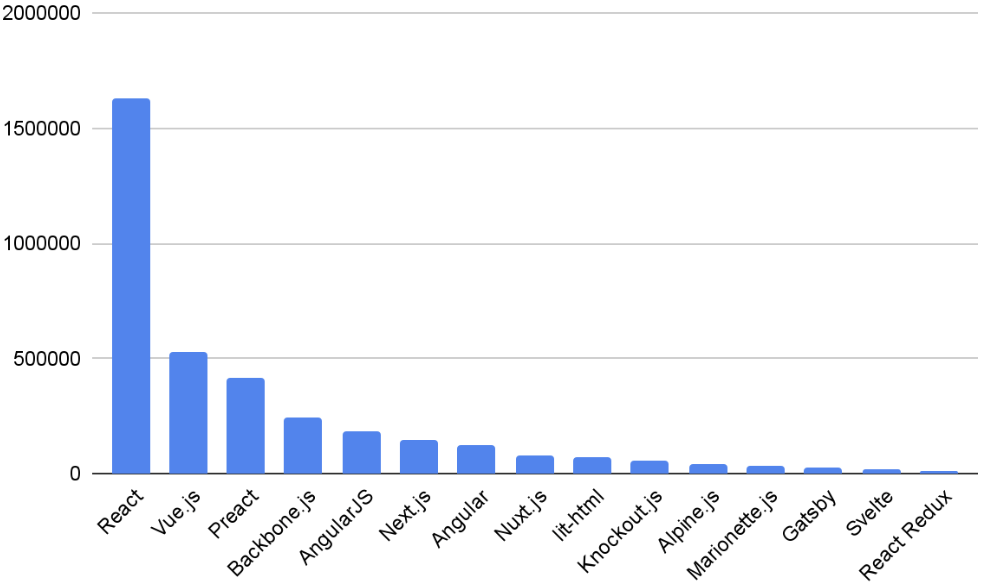
The monthly downloads in NPM was also taken into account to find frameworks with high momentum:
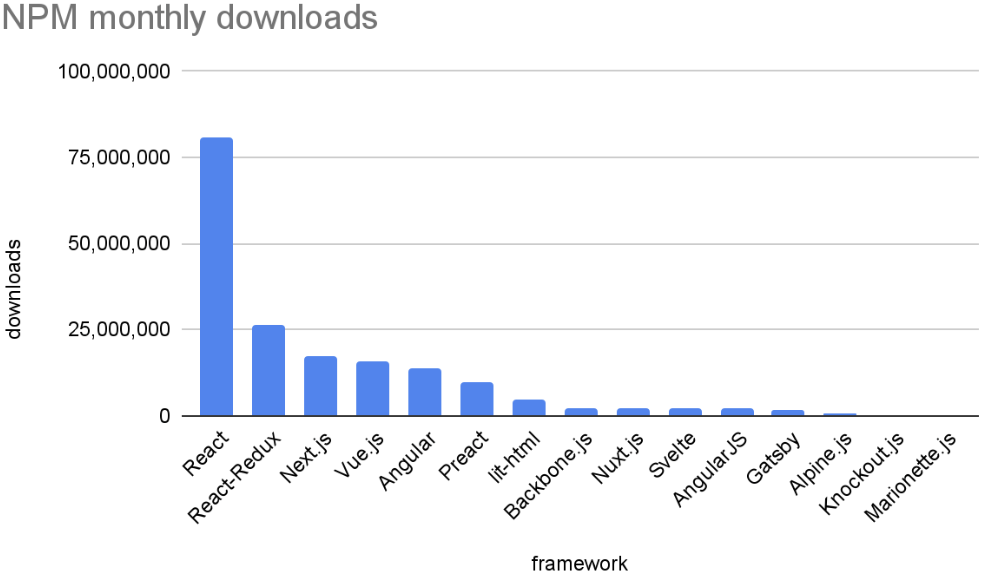
Based on these data points, we’ve included the following JavaScript frameworks in our todo apps: Angular , Backbone , jQuery , Lit , Preact , React , React+ Redux , Svelte , and Vue . For each framework, the most commonly used version at the time was picked. Todo implementations written in vanilla JavaScript using ES5, ES6, and web components are also included.
Complex DOM Versions
In addition, Speedometer 3.0 includes “complex DOM” versions of some of the TodoMVC applications. In these complex DOM versions, each todo app is embedded inside a UI structure which mimics a web application with many deeply nested DOM nodes and plenty of CSS rules. Even though the benchmark still emulates the same set of operations, doing so in the context of more DOM elements and CSS rules adds work and captures additional performance bottlenecks.
In order to ensure the variety of performance scenarios to be tested, Speedometer 3.0 includes 6 simple DOM todo applications and 6 complex DOM todo applications.
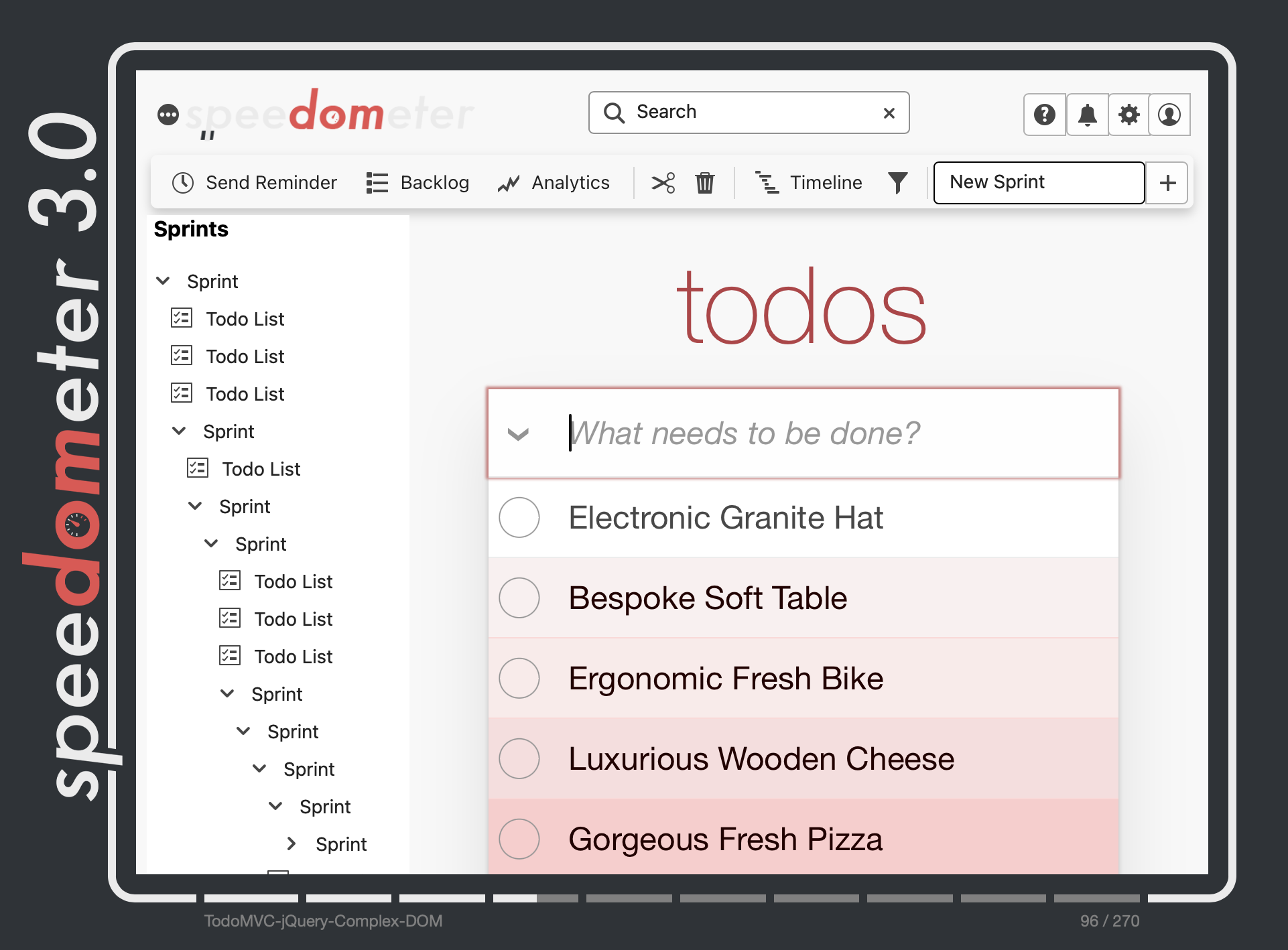
Broader Content
Together, these changes to todo apps dramatically improved the coverage of the benchmark. But Speedometer 3.0 takes it a step further and includes entirely new kinds of applications.
Speedometer 3.0 includes two test apps that mimic typical news sites, built using the popular single page application frameworks Next.js and Nuxt . It emulates user actions such as clicking on menu items and navigating to another page in the single page app setup.

Speedometer 3.0 also includes four charting applications based on Observable Plot , chart.js , React stockcharts , and WebKit’s performance dashboards . Observable Plot and React Stockcharts are based on D3 and test manipulating SVG-based graphics. Chart.js and WebKit’s performance dashboards test drawing canvas-based graphics.
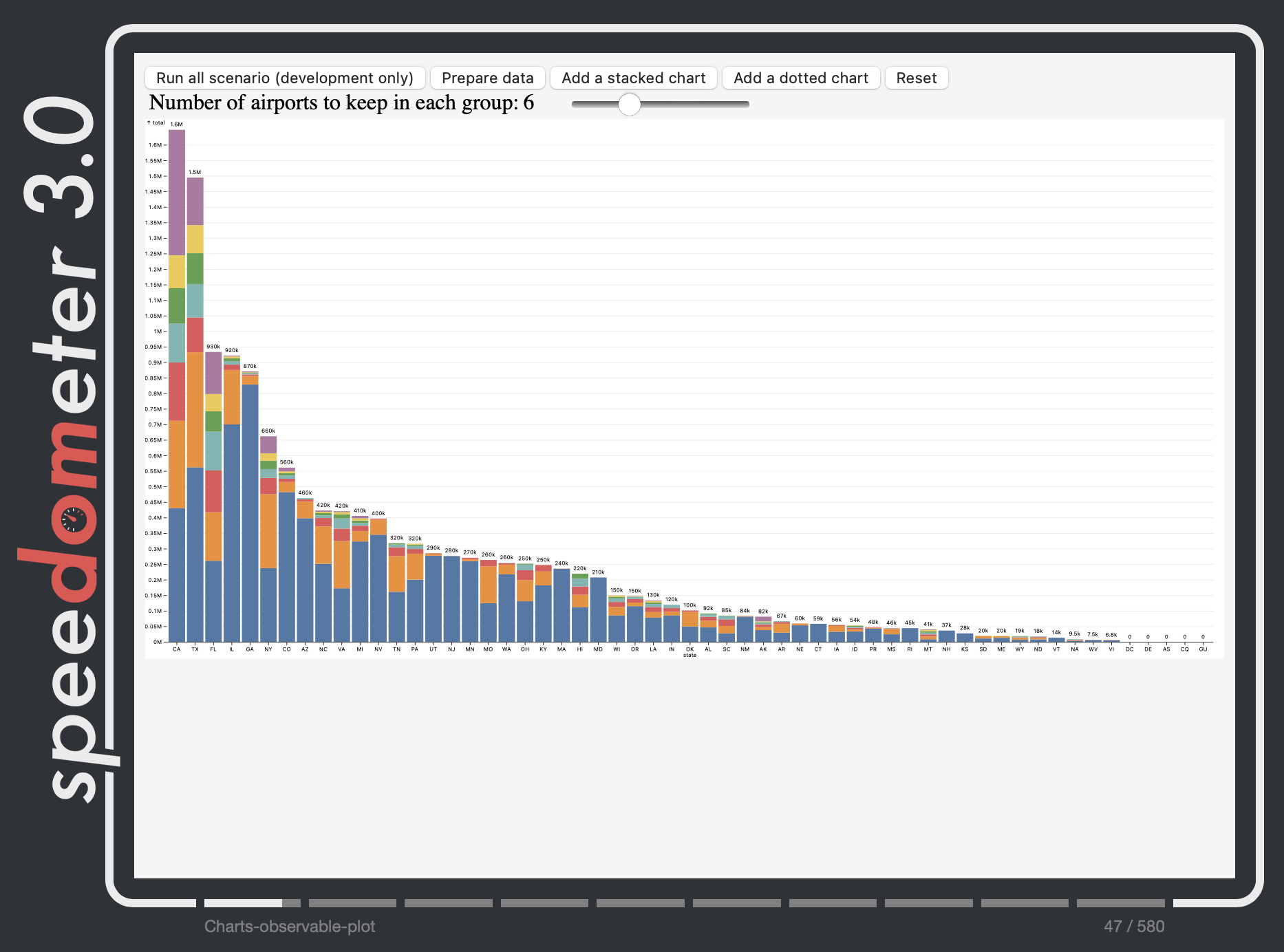
Finally, Speedometer 3.0 has added two text editing applications: a JavaScript code editor built with CodeMirror and a WYSIWYG editor built with TipTap . In both scenarios, it emulates the steps to create a new editable region, loading a large amount of text, and syntax highlighting or boldening text:
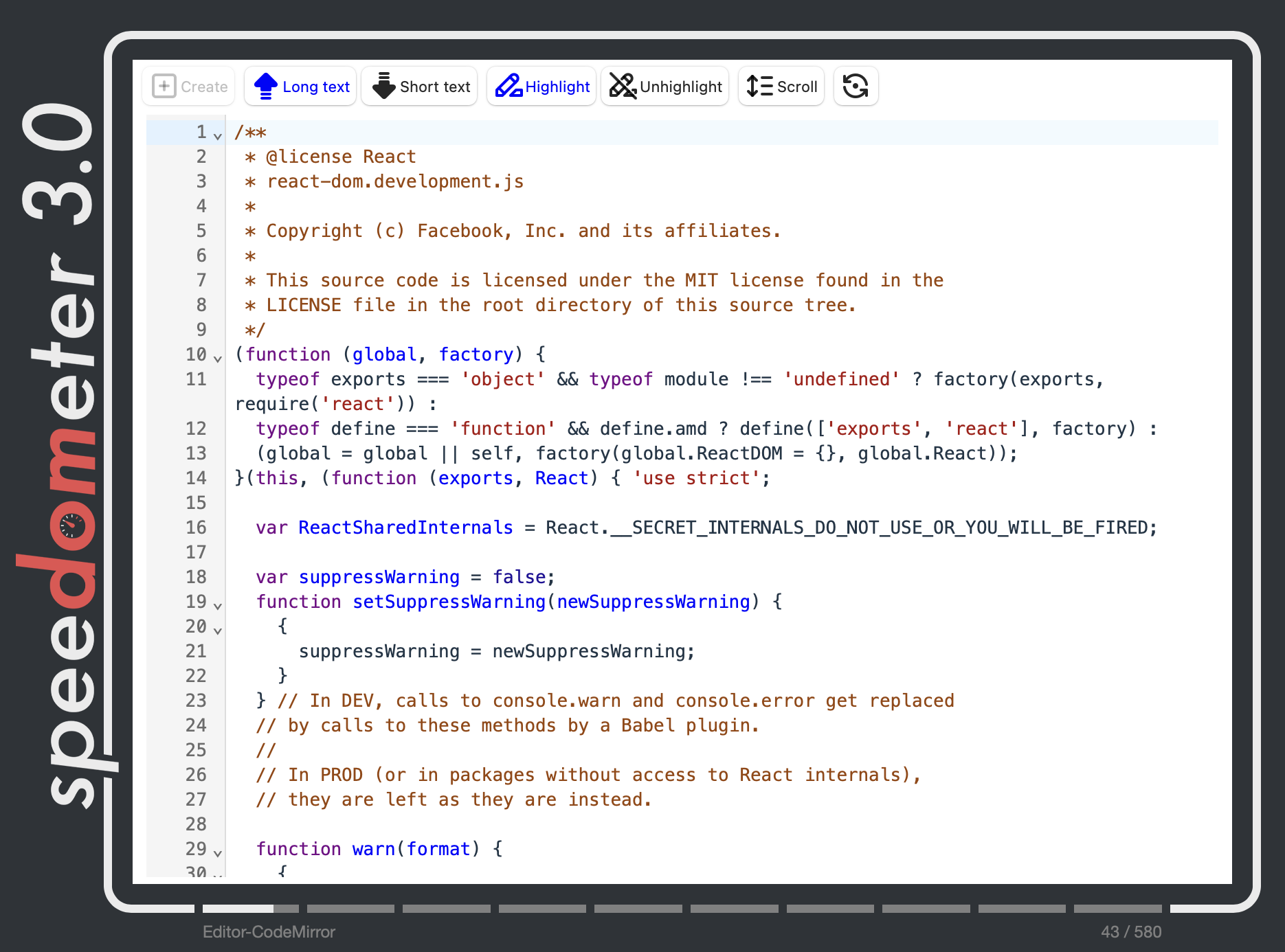
The addition of these new applications dramatically broadens the scope of what Speedometer 3.0 measures, and provide new opportunities for browser engines to optimize a broad spectrum of features like JavaScript, style, layout, graphics, and DOM.
Future Work
Today marks a remarkable milestone for the Web platform. Speedometer 3.0 sets a whole new standard for measuring web browser performance. As browser developers optimize their engines, this will expand the horizon of what Web developers can achieve in the years to come. Because the goal of the Speedometer benchmark is to reflect the real-world Web as much as possible, we’re expecting this benchmark to evolve over time. We’ll be regularly updating the list of frameworks to be tested, and periodically updating the tested framework’s versions to reflect the real world usage. You can try Speedometer 3 benchmark on browserbench.org . If you have any feedback or questions, feel free to file issues on Github .

IMAGES
VIDEO
COMMENTS
Open Safari and select Safari > Preferences on the menu bar; Switch to the Advanced tab and check the box next to Show Develop menu in menu bar; Select Develop on the menu bar and pick the Empty Caches option. Corrupt, outdated, or privacy-invasive browser cookies can also slow down Safari. If deleting the Safari cache didn't make much ...
Click the Safari menu item at the top left of your screen. From the drop-down menu, select Settings. Select the Advanced tab and check the box next to the Show Develop menu in menu bar if it is unchecked. Return to the menu bar, click Develop, and select Empty Caches from this drop-down list.
Update it through the App Store. Network Check: Slow Safari might be due to network issues. Test internet speed to rule this out. User Account Check: A corrupted user account or macOS issues can affect Safari. Test on a new user account and run disk utility checks. Tab Management: Too many open tabs strain Safari.
On the screen with Options, please open Options and check the bottom 2 boxes before running. Click "Share Report" button in the toolbar, select "Copy Report" and then paste into a reply. This will show what is running on your computer. No personal information is shown. Etrecheck - System Information.
Fix broken preferences file with CleanMyMac X. Another way to check Safari's preferences file and delete it if necessary, is to try the following: Open CleanMyMac. Go to System Junk and hit Scan. Hit Review Details when the scan is over. Select the Broken Preferences tab. If the file is corrupted, it will be in this tab.
Follow the steps below to remove unwanted extensions from Safari on Mac. Step 1: Open Safari browser on Mac. Step 2: Click on Safari in the menu bar and open the Preferences menu. Step 3: Move to ...
Here is another way you can empty caches on the Safari browser. Open the Safari browser and click on Develop on the top taskbar. Now, from the drop-down menu option, select Empty Caches or press Option + Command + E. 2. Software Update. Another method you can try is updating the Safari browser by updating your macOS.
2. Force Quit Safari on Mac. Occasionally, a page or app may overtax your system's resources, leading Safari to freeze or run slow. A quick fix is to quit Safari and start it up again. This terminates any demanding processes and gives the browser a clean slate to work from. To do this, go to the Dock and control-click Safari.
Launch Safari and click Safari > Preferences in the menu bar at the top of the screen. Click on the Advanced tab, then check Show Develop menu in menu bar at the bottom of the window. Close the Preferences window and click Develop > Empty Caches in the menu bar at the top of the screen. 4. Disable Thirsty Extensions.
Method 7 - Delete Preferences File. Method 8 - Use Different DNS Settings. Method 9 - Log Into Another Account. Method 10 - Reinstall OS X. In this article, I'll mention all possible ways you can go about trying to speed up Safari on your Mac. If you have your own suggestions, feel free to let us know in the comments.
Removing a build-up of cache is another quick way to improve Safari performance drastically. Here's how: Open Safari and select the Safari menu. Go to Settings and select the Advanced tab. At the bottom of the window, locate the Show Develop menu in the menu bar and select it. Now, select the Develop menu from the top menu bar and click Empty ...
Safari will run slow on your Mac if the cache is bloated and corrupted. Safari takes on plenty of data each day you use it, and some of it may be corrupted. Whether you have corrupted data or have simply gone years without clearing the cache, Safari will continue to run so slowly if you don't clear it. Once the Safari cache is full, the ...
Clearing the cache on your Safari browser will ensure that it's working smoothly and efficiently. The Safari cache is a pile of temporary website data. Here is how you can clear cache in Safari on your Mac: Open Safari. Click Safari > Preferences. Click the Advanced tab. Check the box next to the "Show Develop menu in menu bar" option.
Follow the below steps to find the safari plist file under the Mac preferences folder. We can take our chances to fix Safari running slow on macOS Ventura with this solution. Step 1: Launch the Finder and Tap on Go From the top Menubar > Next, Click on Go to Folder. Step 3: Enter the Below Command.
Click on the CLEAN button and PowerMyMac will begin to clean up your Safari browser. If you need the manual methods to fix Safari slow to load, we also provide: Clear your Safari's history: Launch your Safari browser on your Mac. Then click on History in the menu bar. Choose the Clear History option.
3. Force Quit Safari and Restart It. On iPhone and iPad with Face ID, swipe up from the bottom of the screen and hold. On devices with Home button, quickly double press it. Now, drag the Safari app card up to force close the app. After a moment, relaunch Safari. 4.
Open Safari on your Mac, go up to the menu bar at the top of the screen and click on Safari. From the drop-down menu select Preferences. Make sure the Advanced tab is selected on the window that ...
Make sure that the Safari app is closed. Open the Settings app on your iPhone or iPad. Scroll down and tap Safari. Tap the Clear History and Website Data button. Under the Clear Timeframe section, tap All History. Under Additional Options, tap the toggle next to Close All Tabs. Tap the Clear History button. Swipe all the way to the bottom and ...
In short, the most common reason for slow browser performance is unnecessary plugins, extensions, and panels that are either automatically installed with other applications or are third-party add-ons. In addition to slow performance, other browser problems can result in Google Chrome and Firefox, as well as Safari.
2. Clear Your Browsing History and Data. If clearing the tabs didn't fix the issue, you can reset Safari and clear up the cache, speeding it up in the process. To clear Safari, head to Settings > Safari > Clear History and Data. Once you do this, relaunch Safari and see if it's loading up pages quickly enough.
2. Restart the Browser and iPhone. Restarting is one of the unharmful solution that you can try with any software problems. Restart Safari - when you are in Safari app, swipe up from the bottom to open App Switcher. Hold and move the Safari screen up to close the app. Remember, this will not close open tabs and you should follow the above-mentioned methods for closing your open tabs.
Jun 3, 2023 1:17 PM in response to acevedotom. Apple doesn't need to fix anything as the rest us are not seeing slowdowns. Try restart gin your iPhone first. Then try deleting cookies, cache, history on Safari. If Safari isn't loading websites or quits on your iPhone, iPad, or iPod touch - Apple Support. ms_julie.
As announced on browserbench.org today, in collaboration with other browser engine developers, Apple's WebKit team is excited to introduce Speedometer 3.0, a major update that better reflects the Web of today.It's built together by the developers of all major browser engines: Blink, Gecko, and WebKit with hundreds of contributions from companies like Apple, Google, Intel, Microsoft, and ...